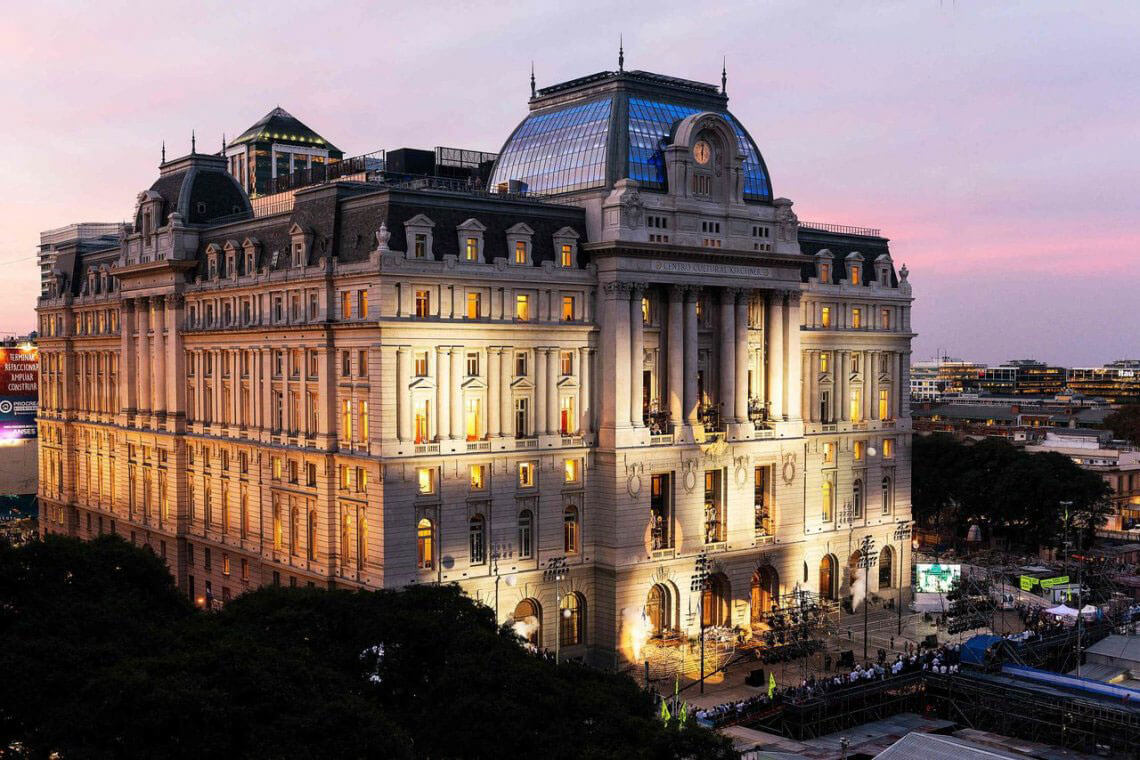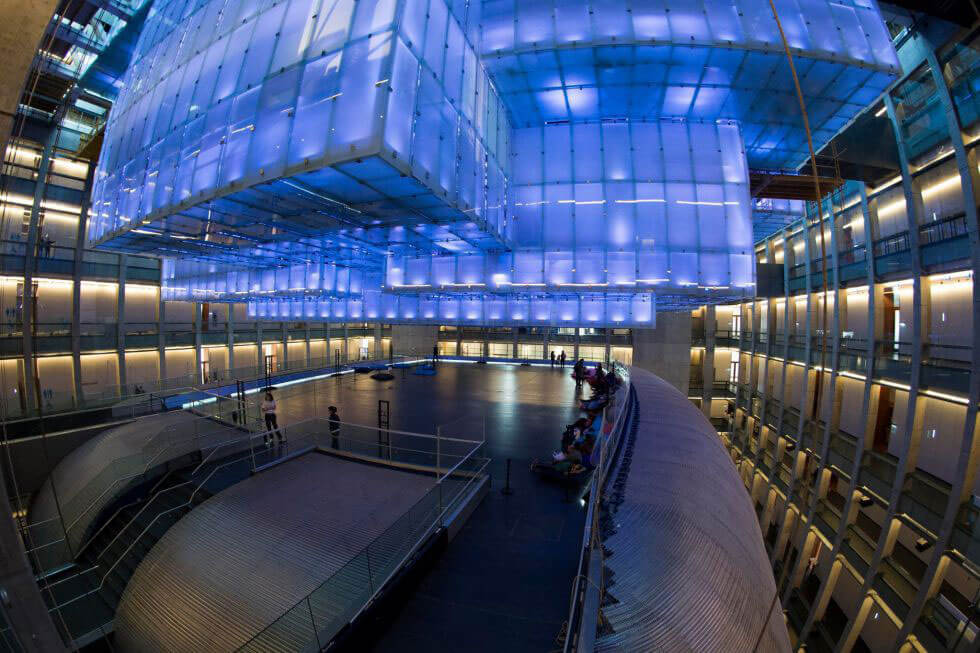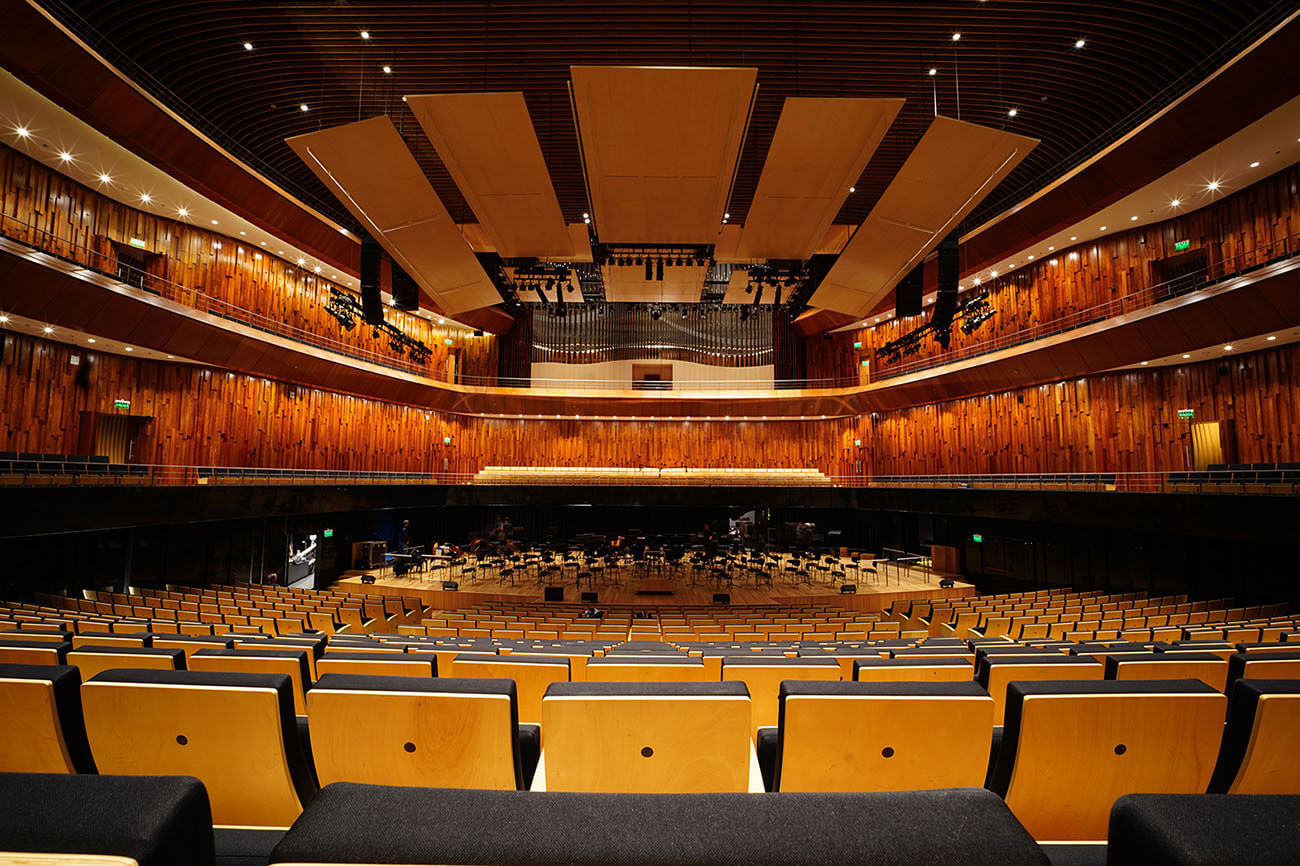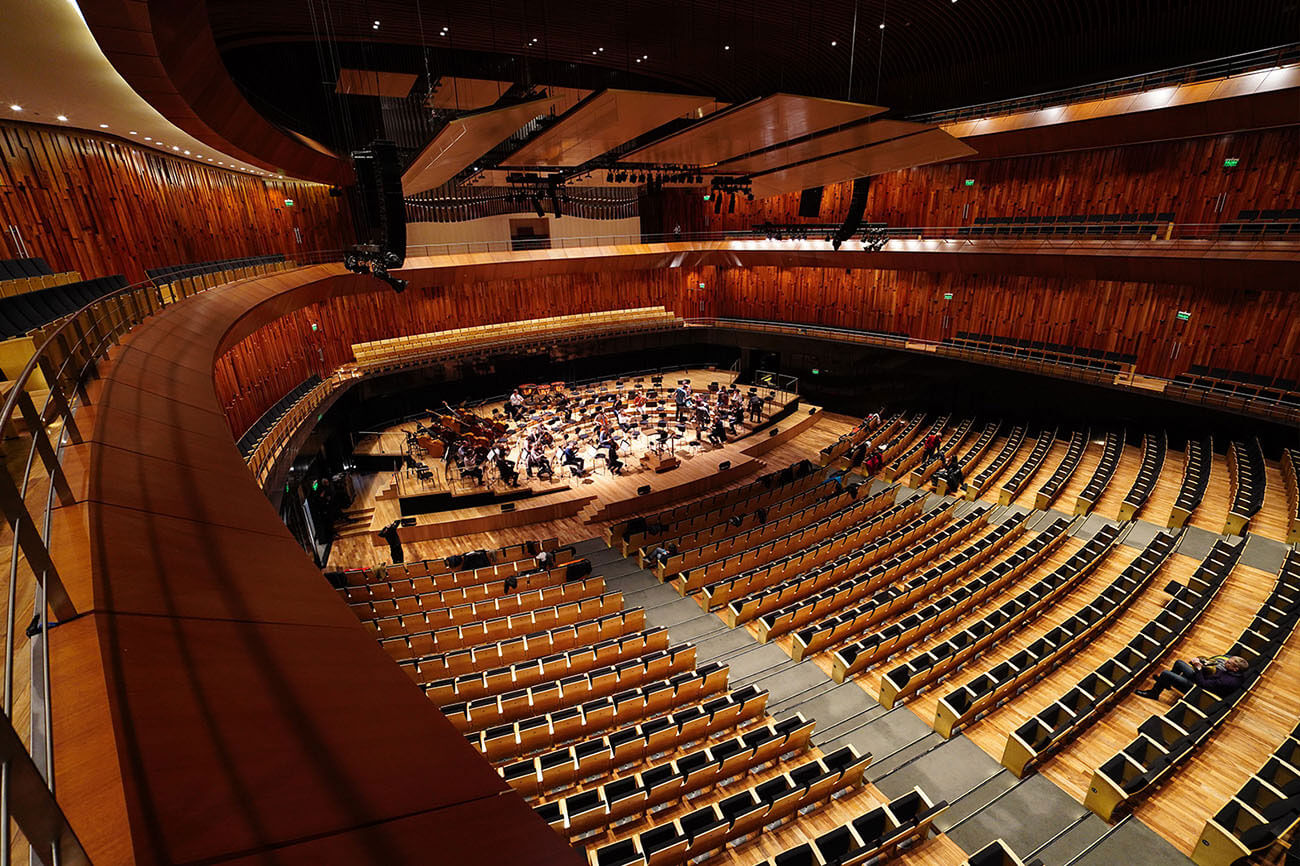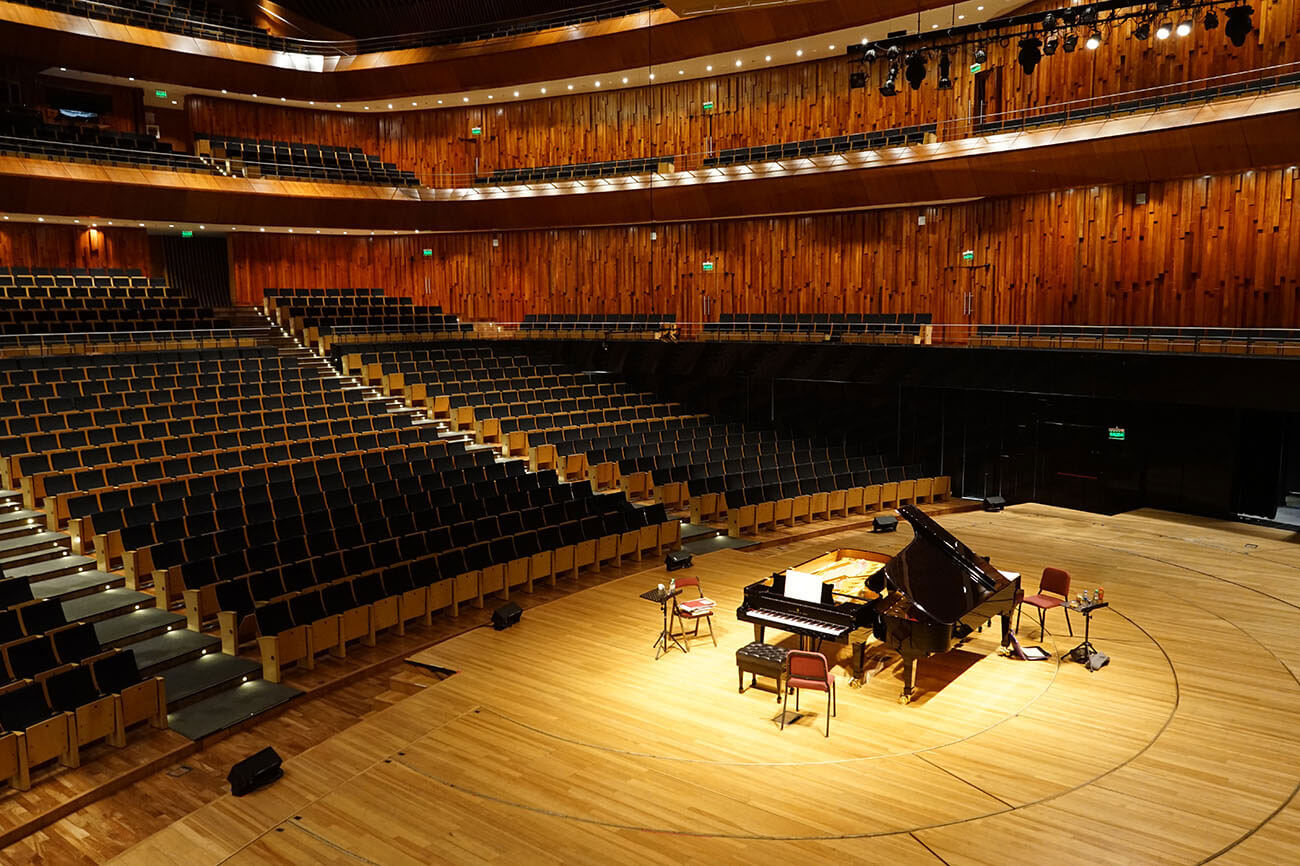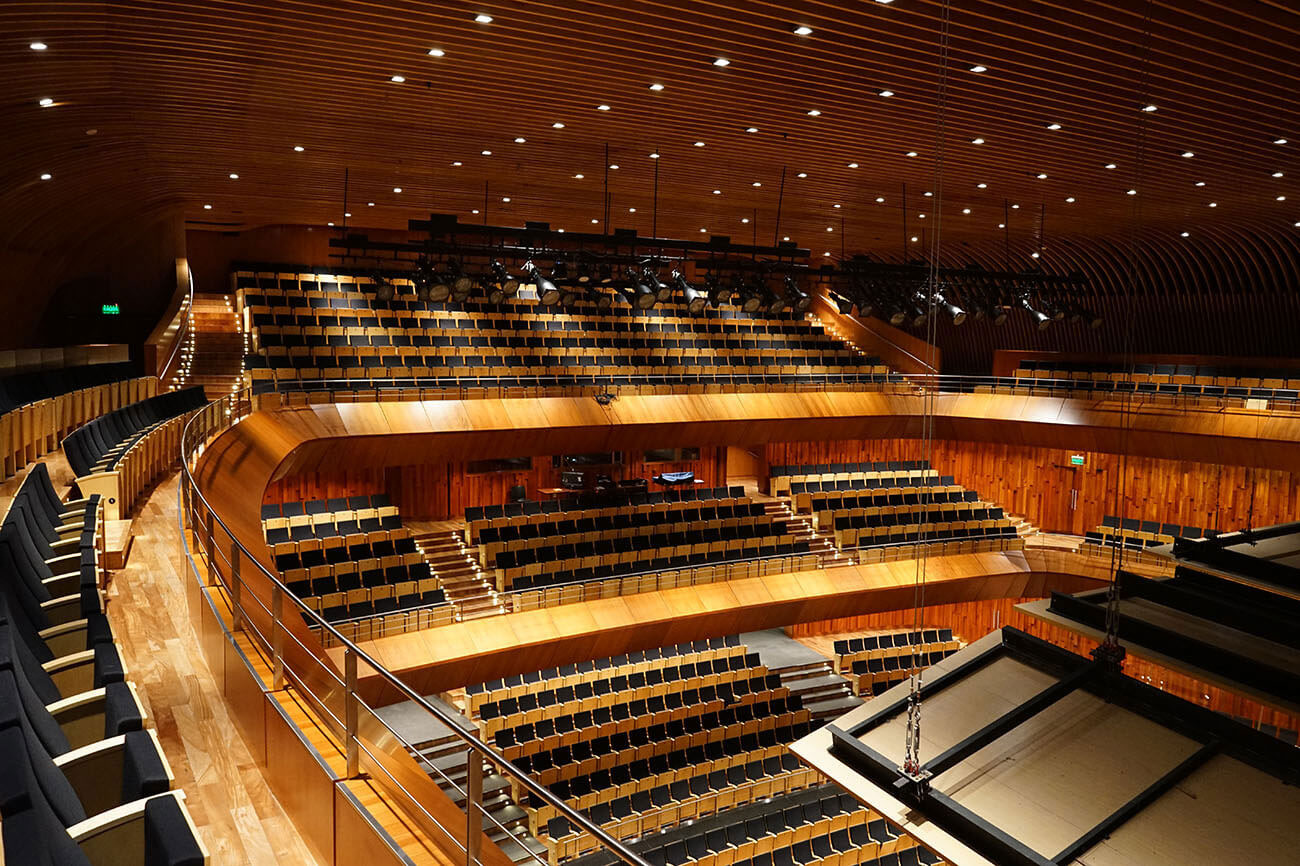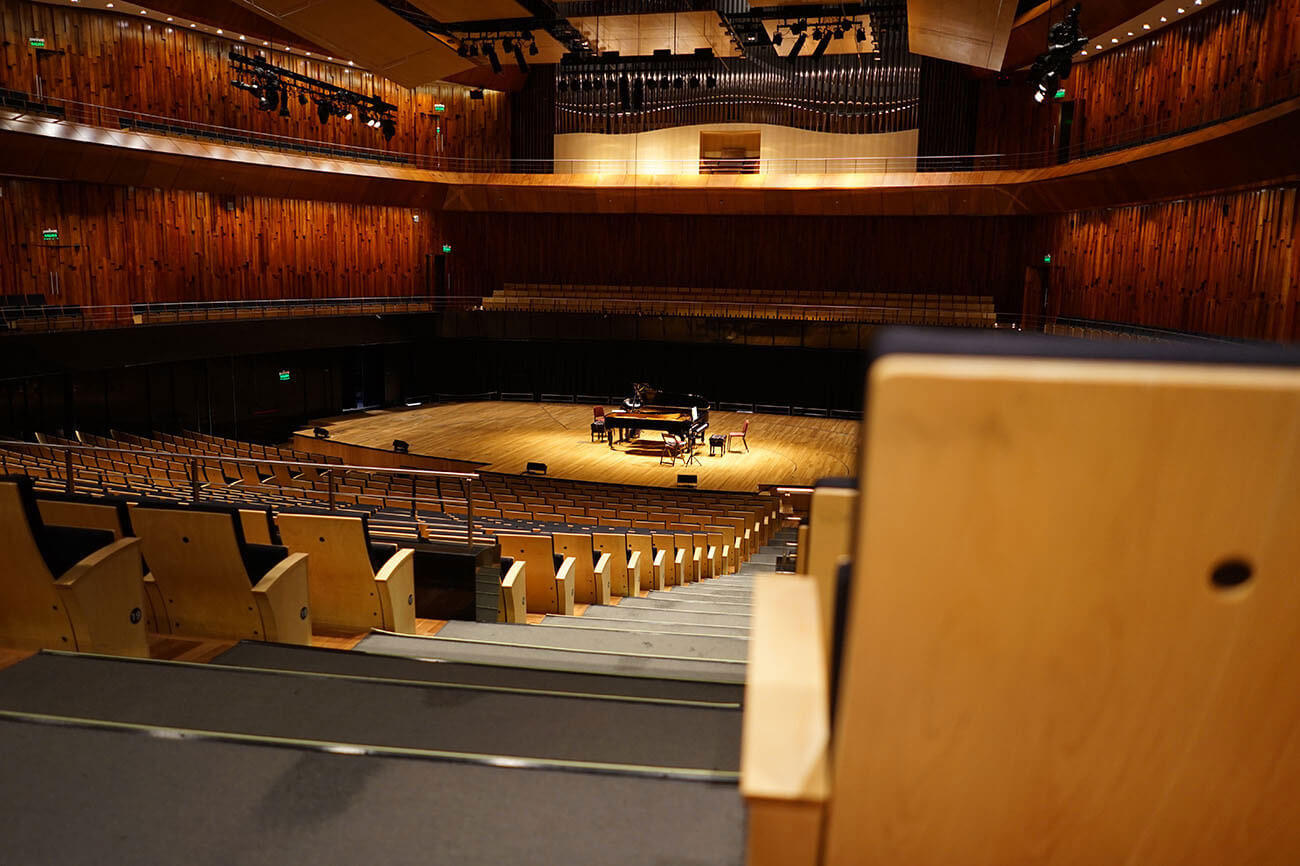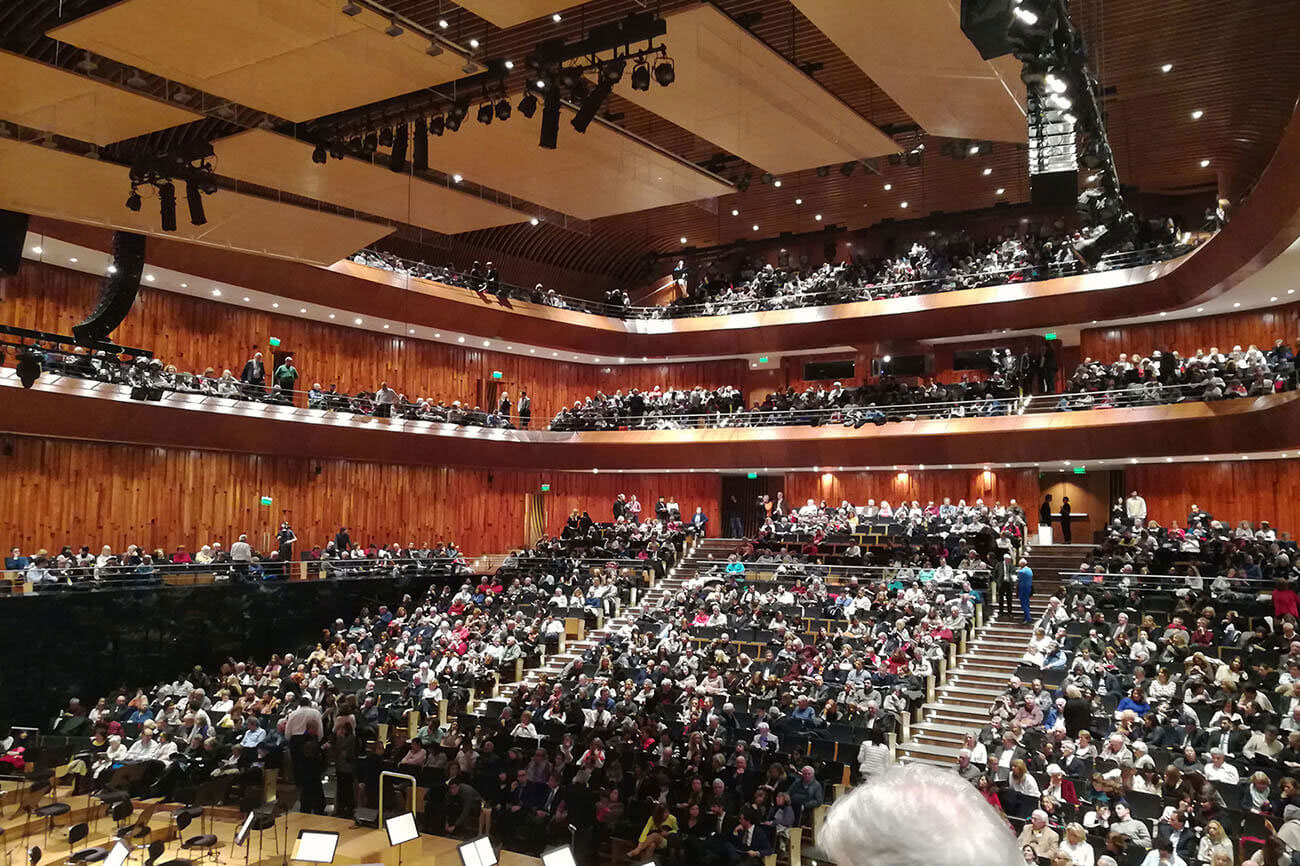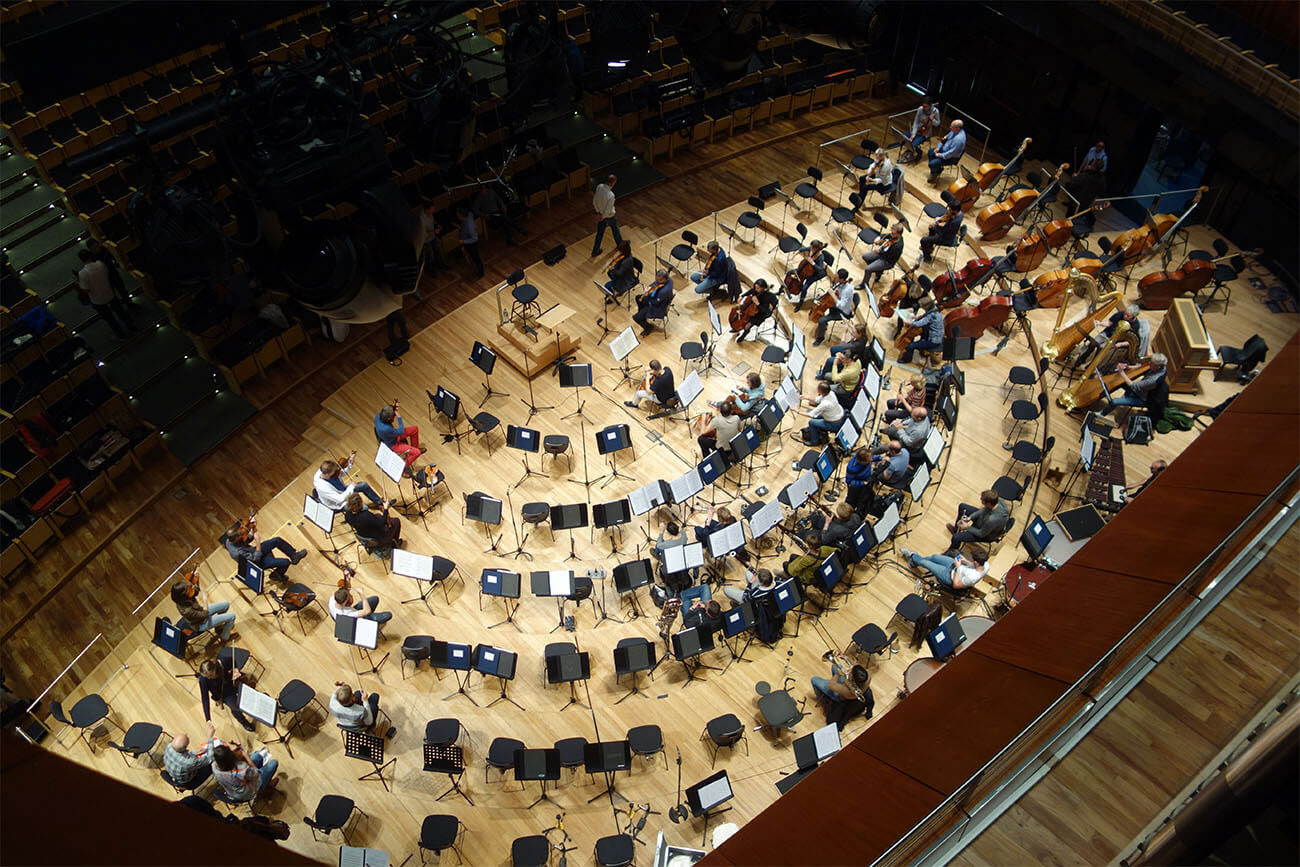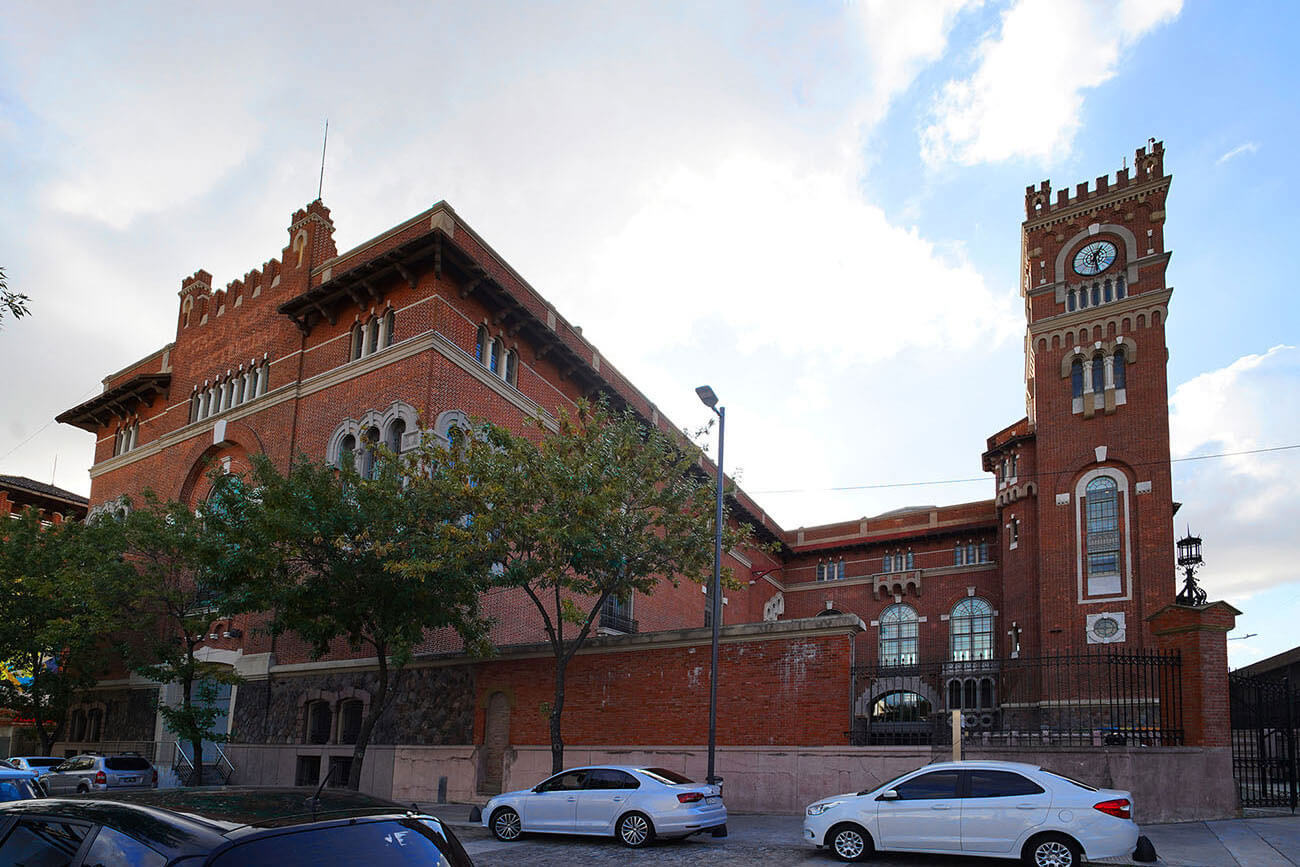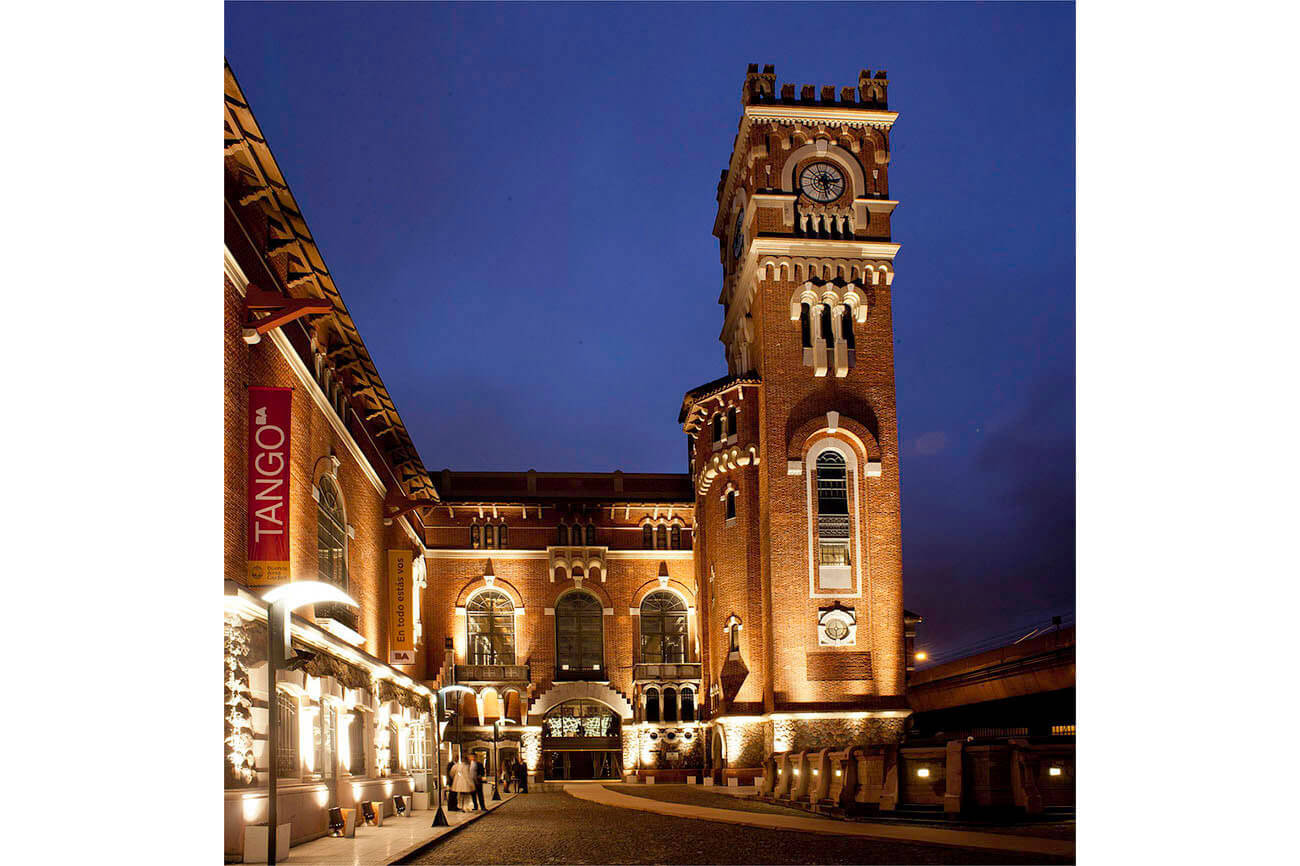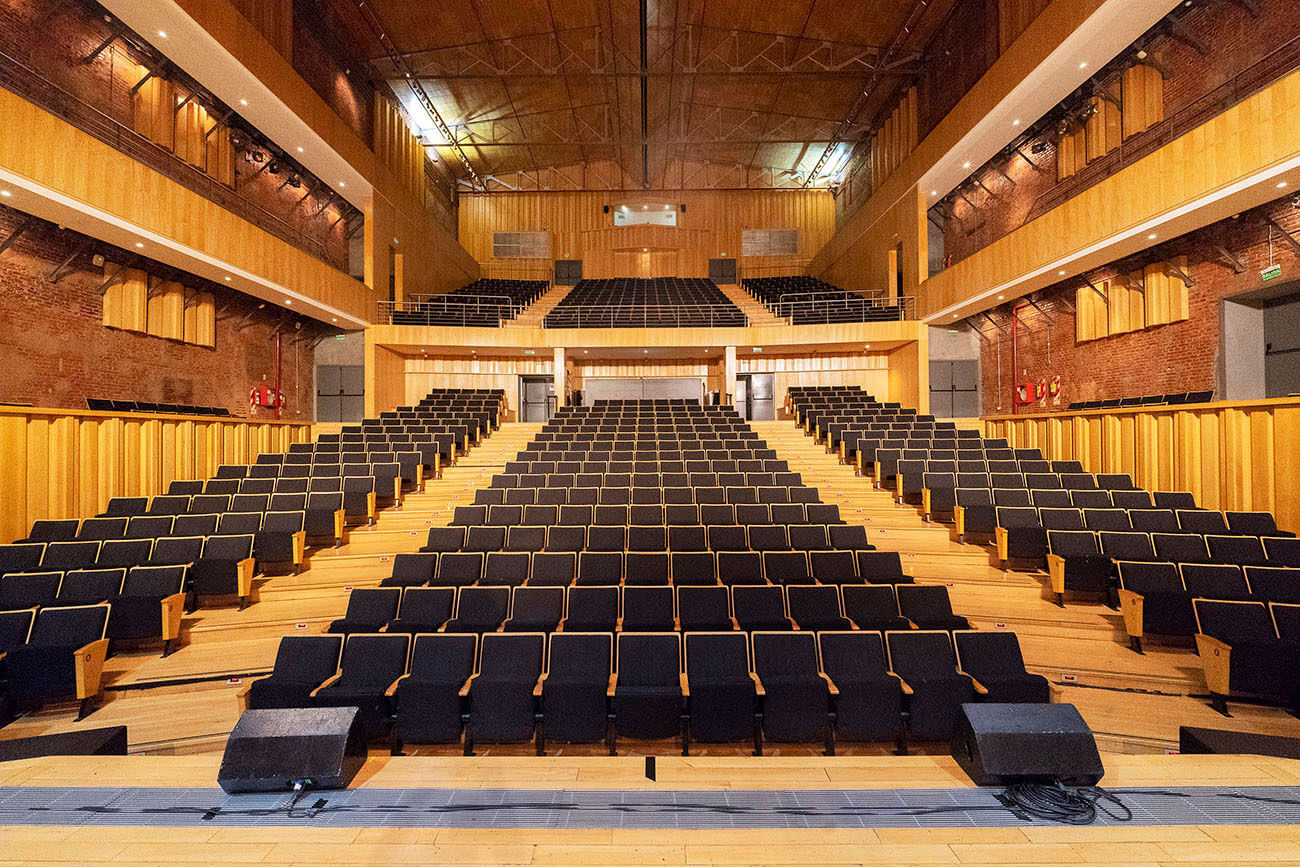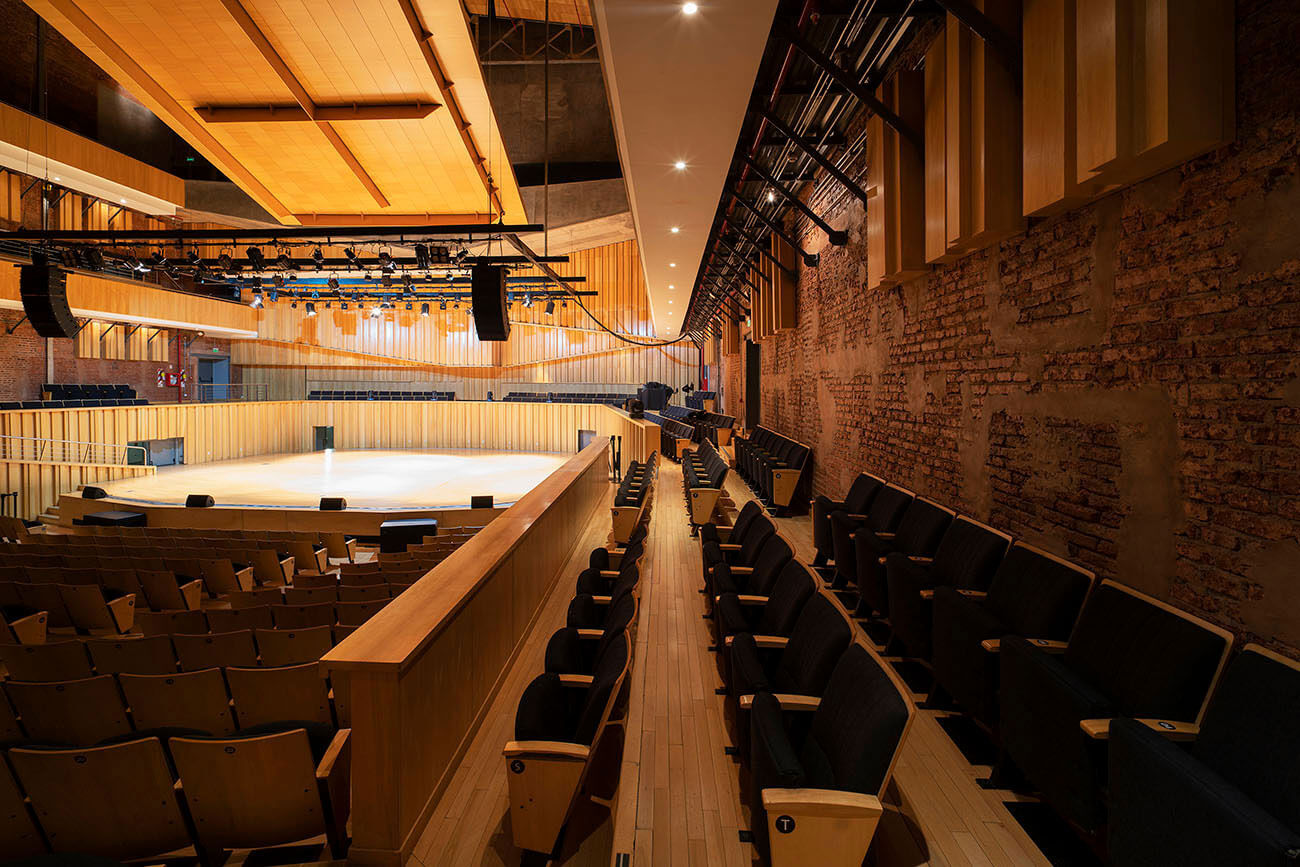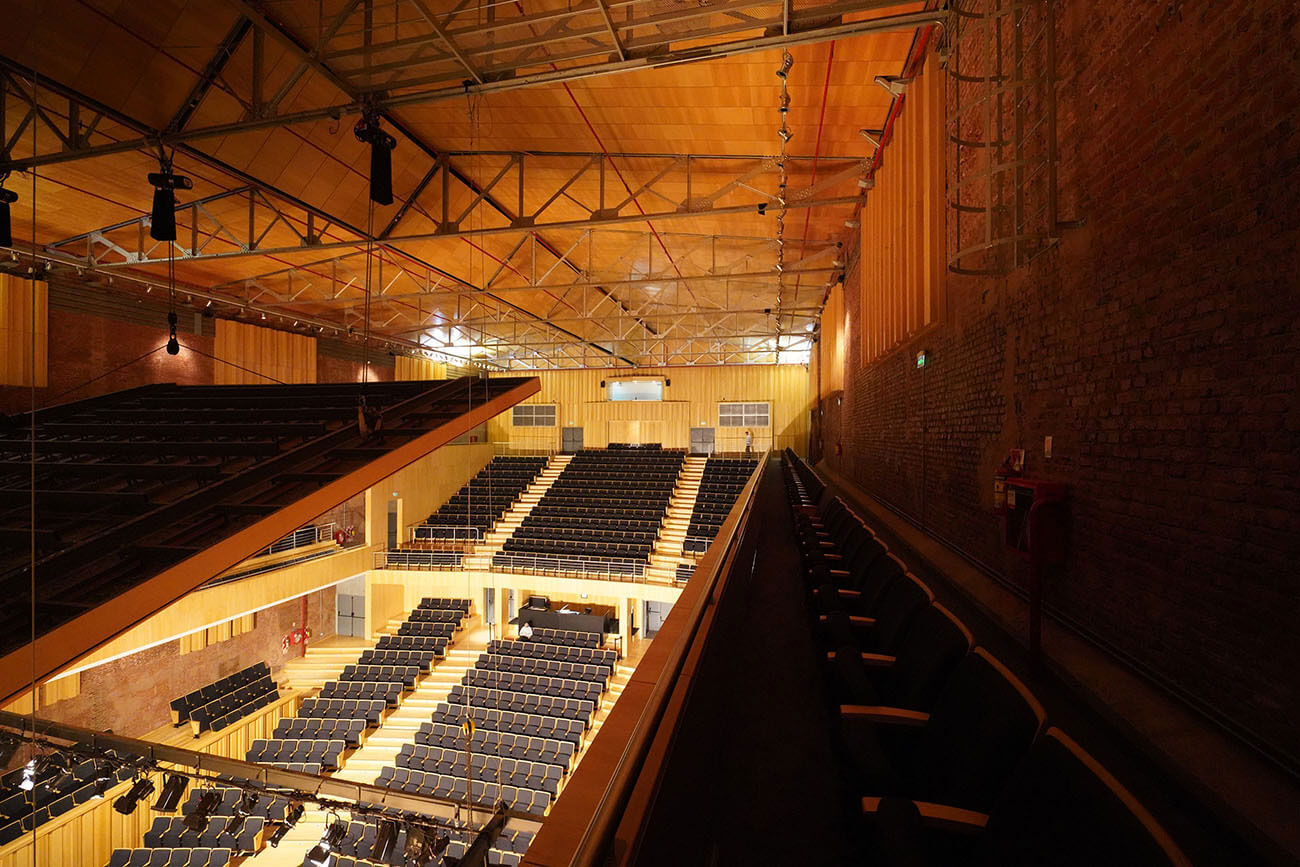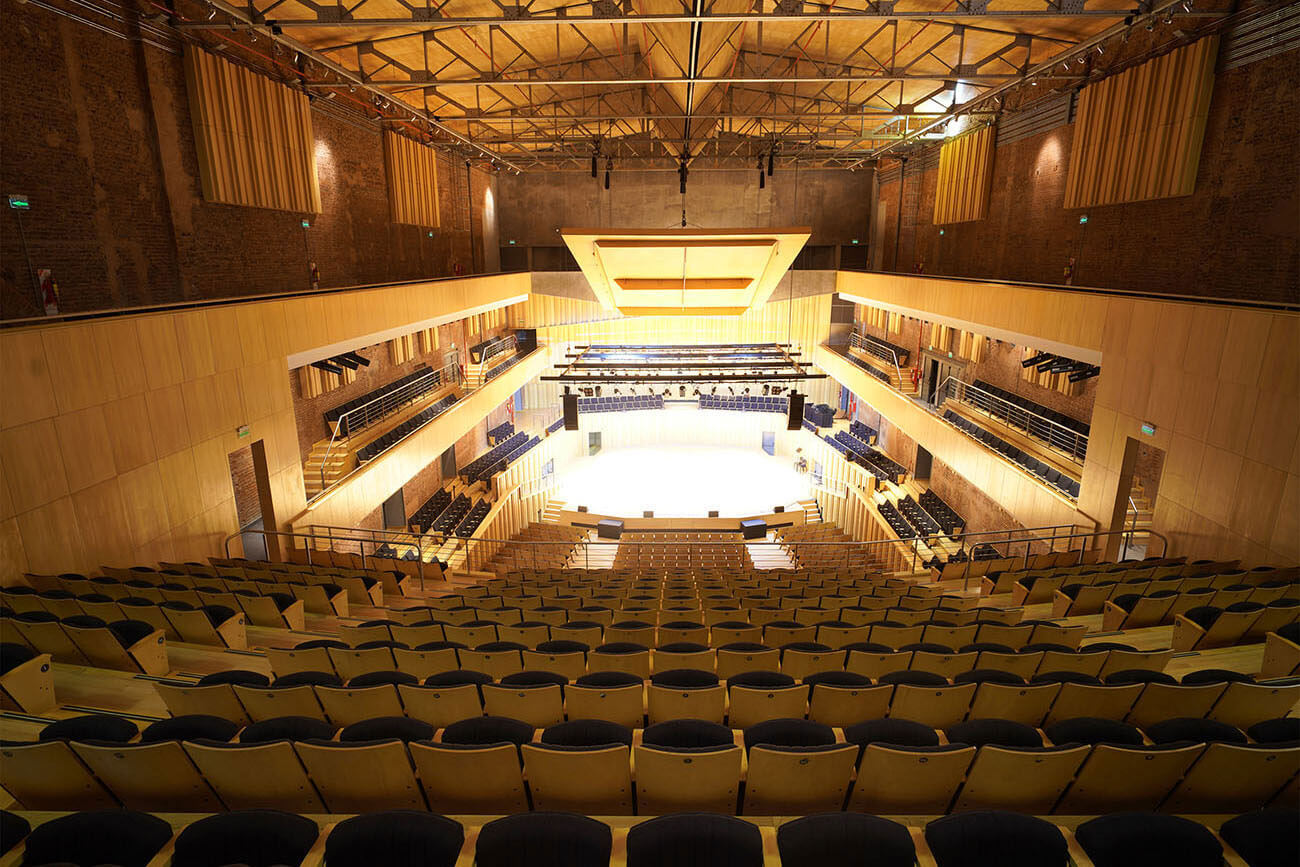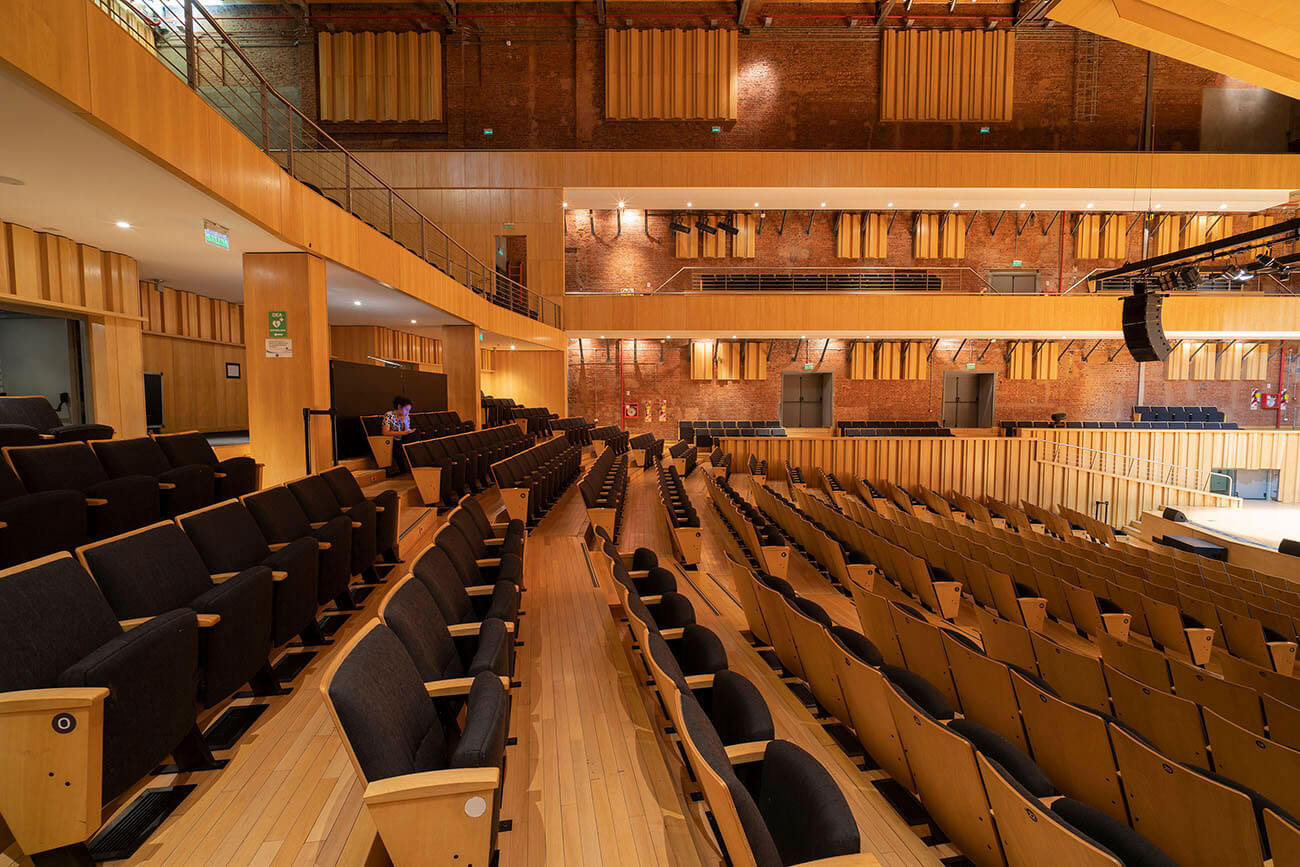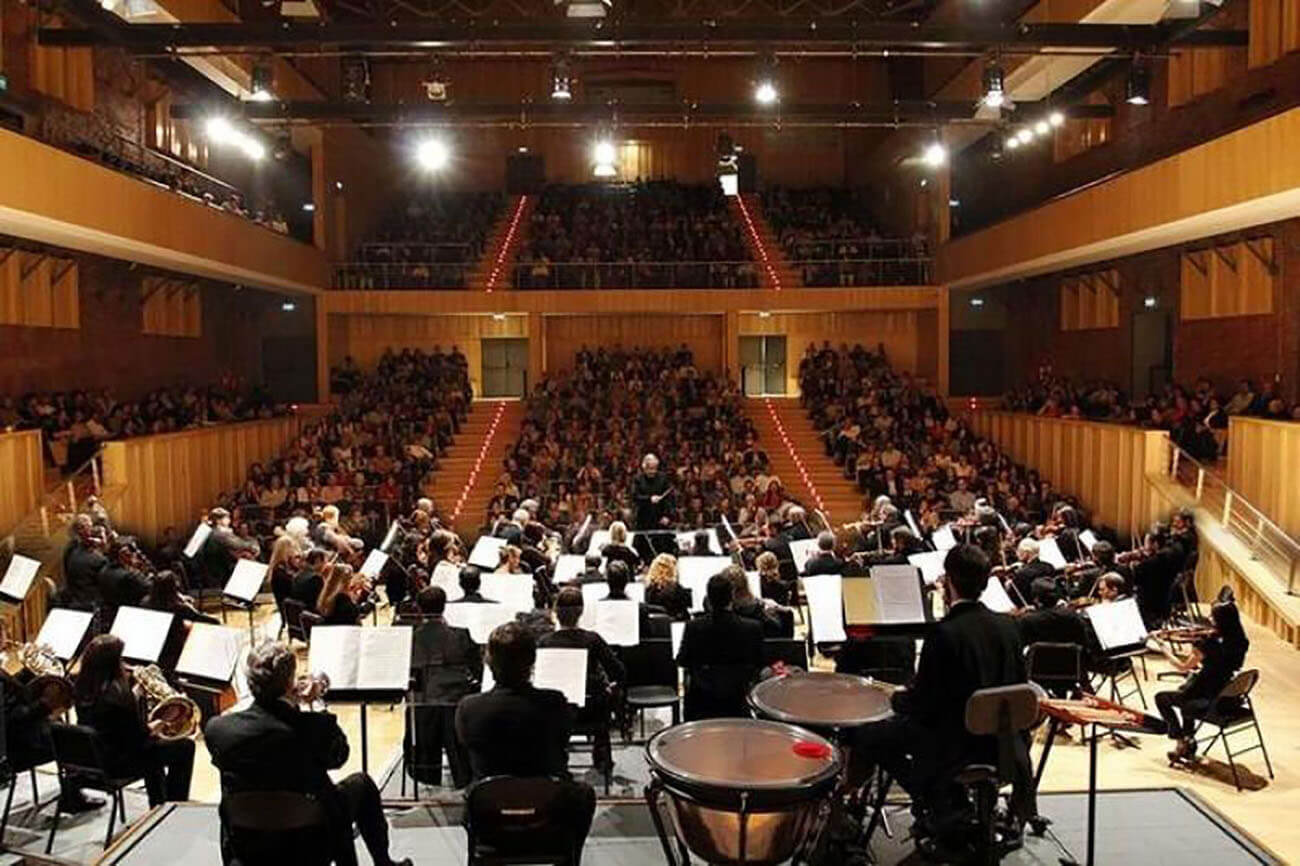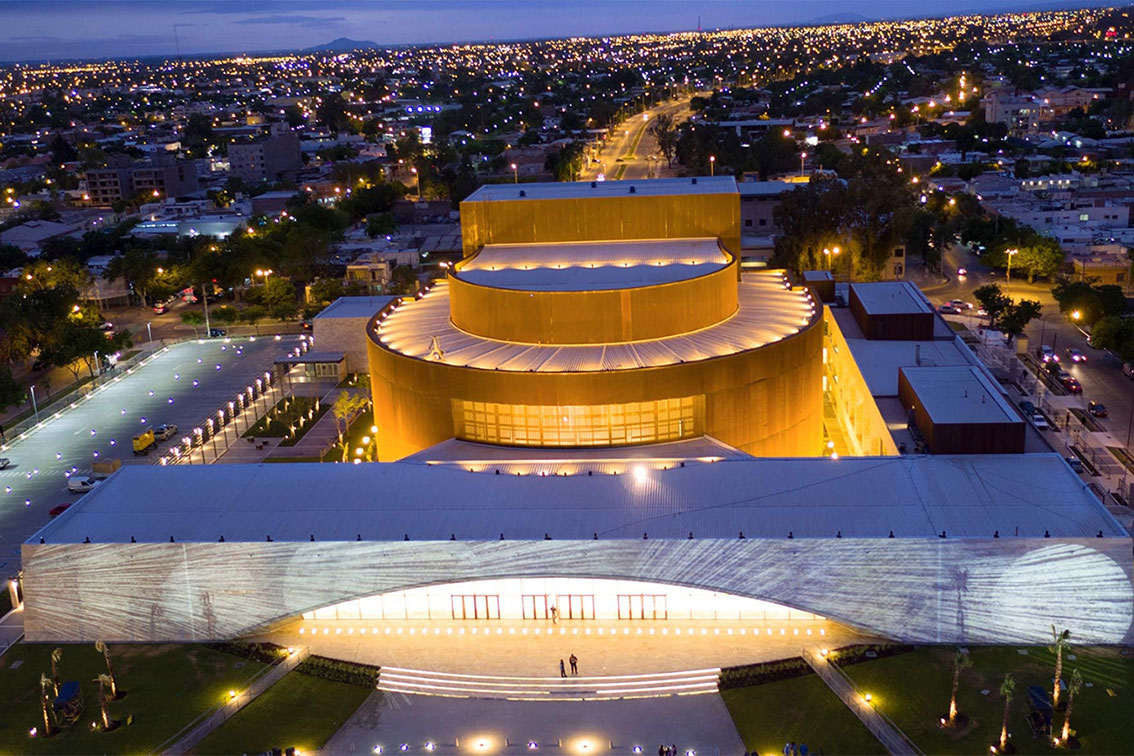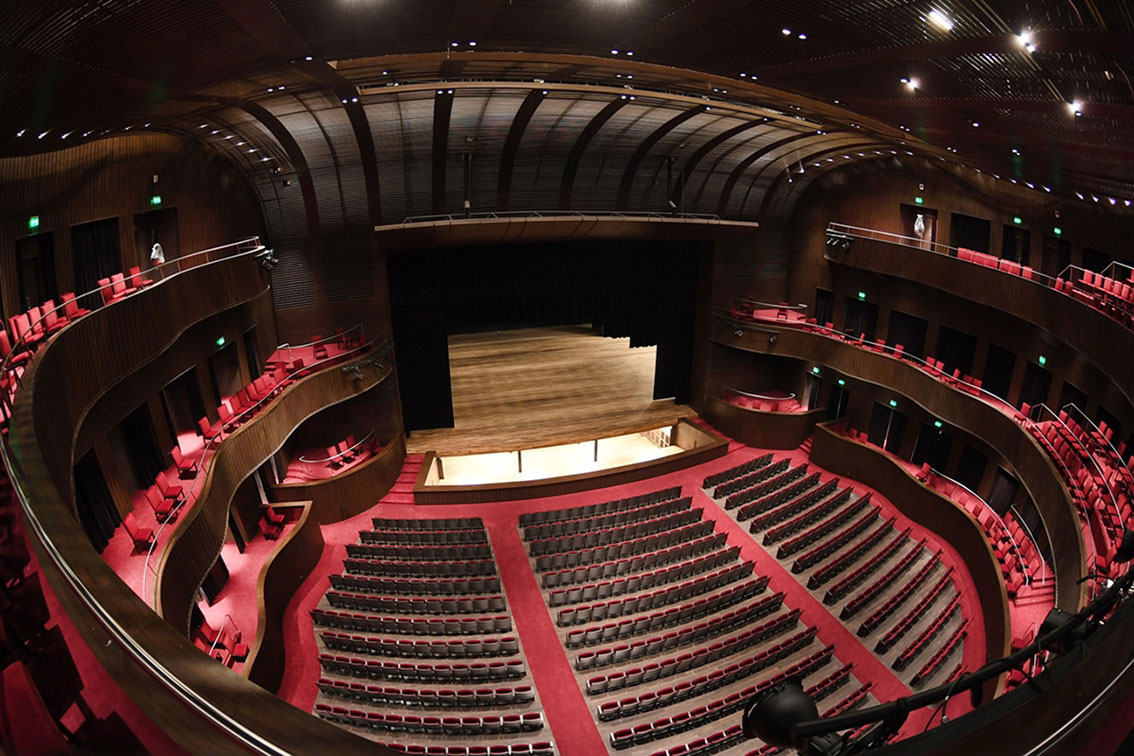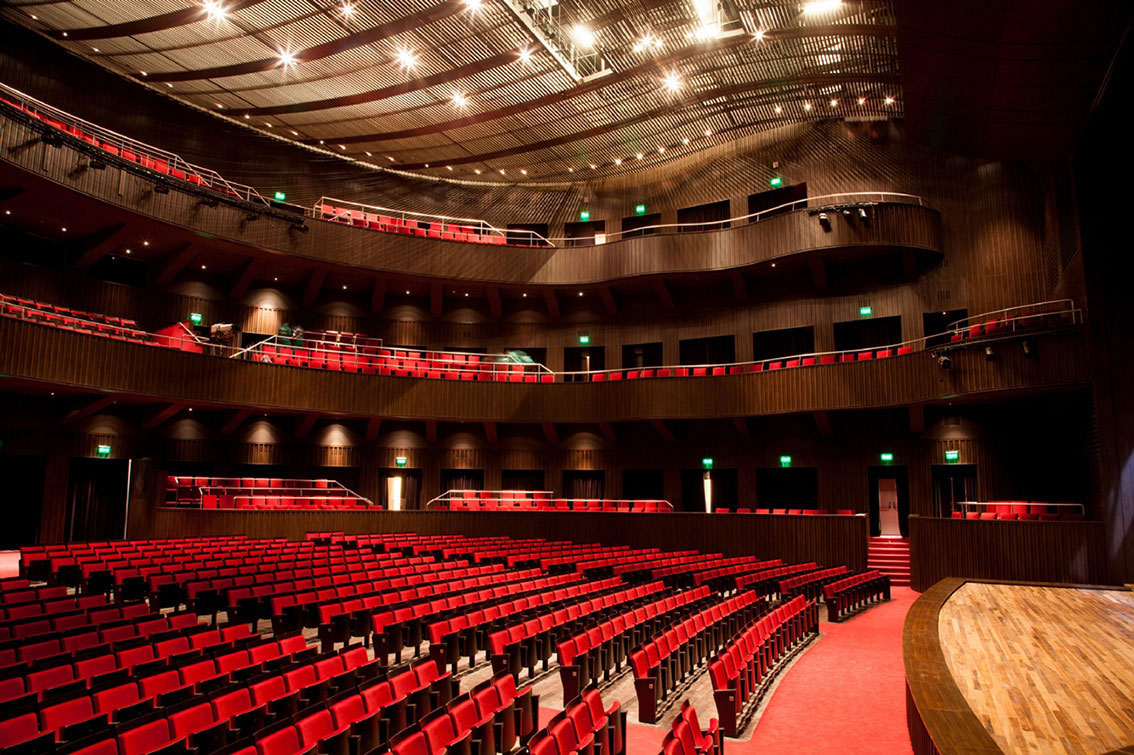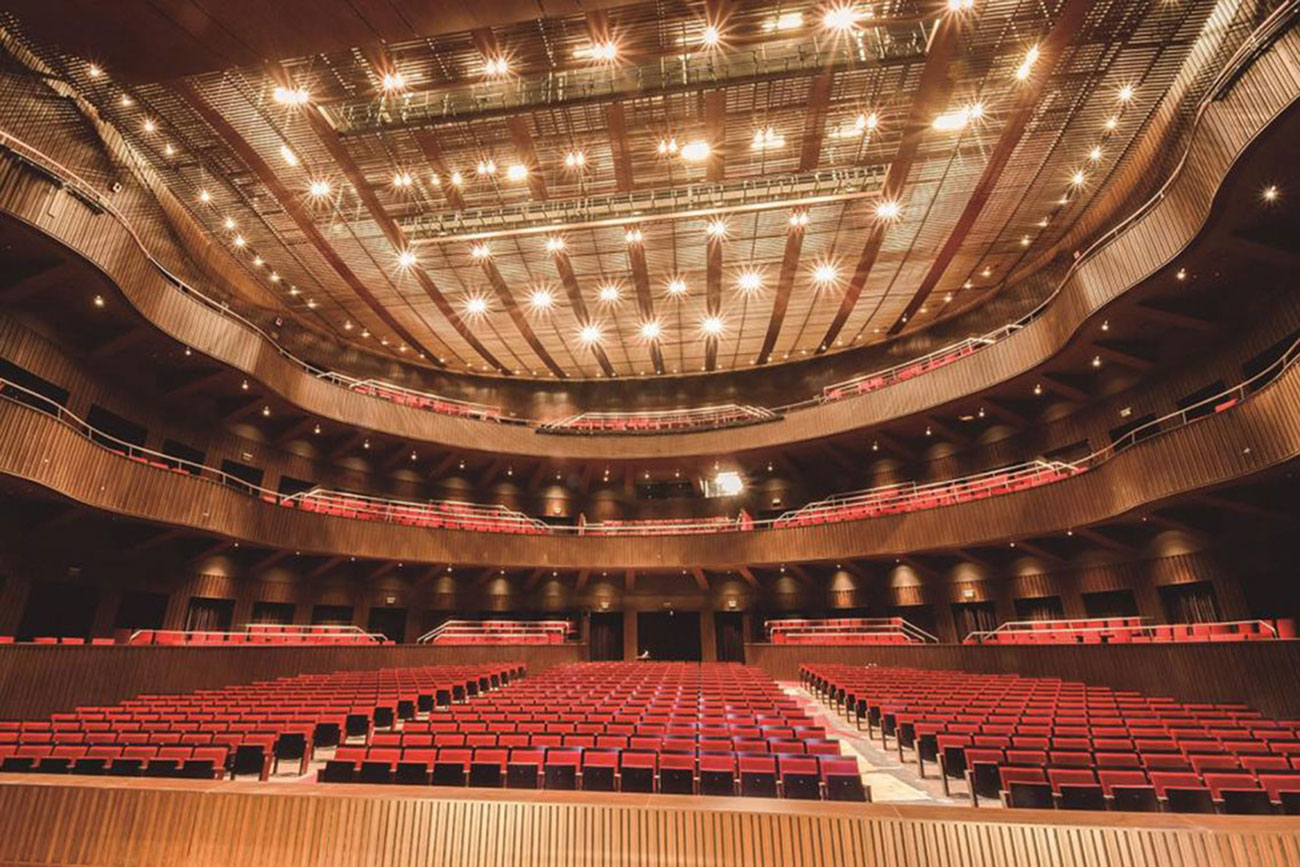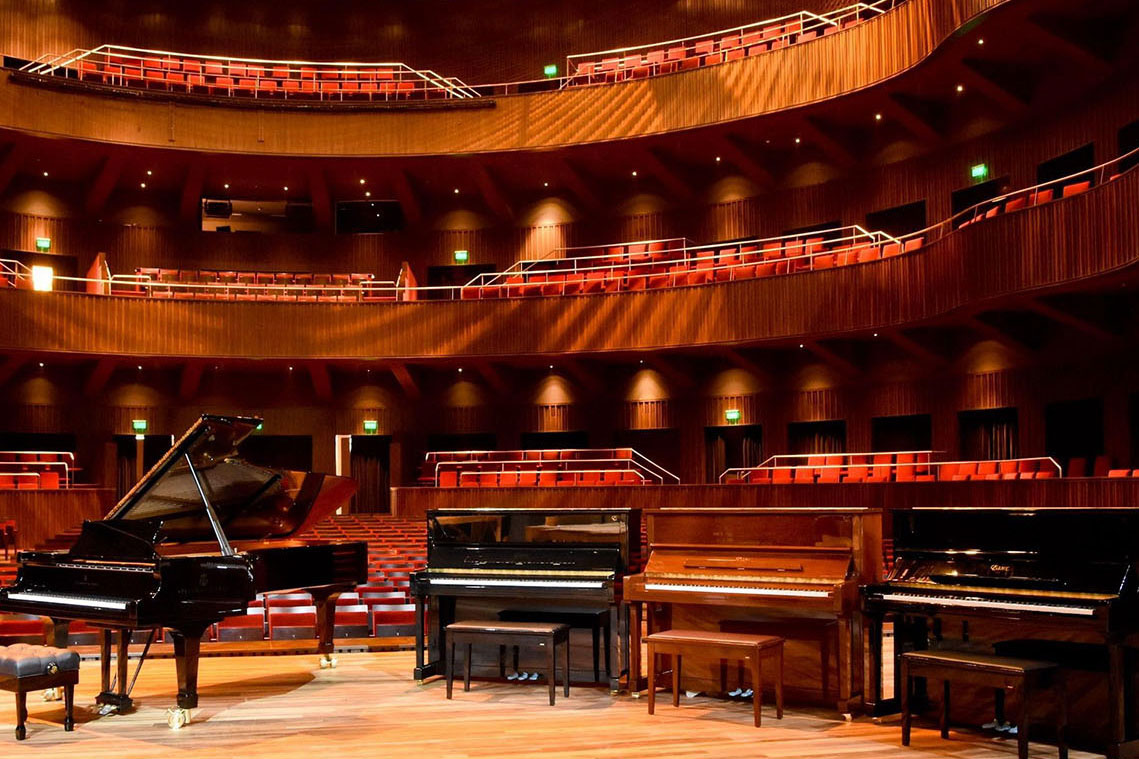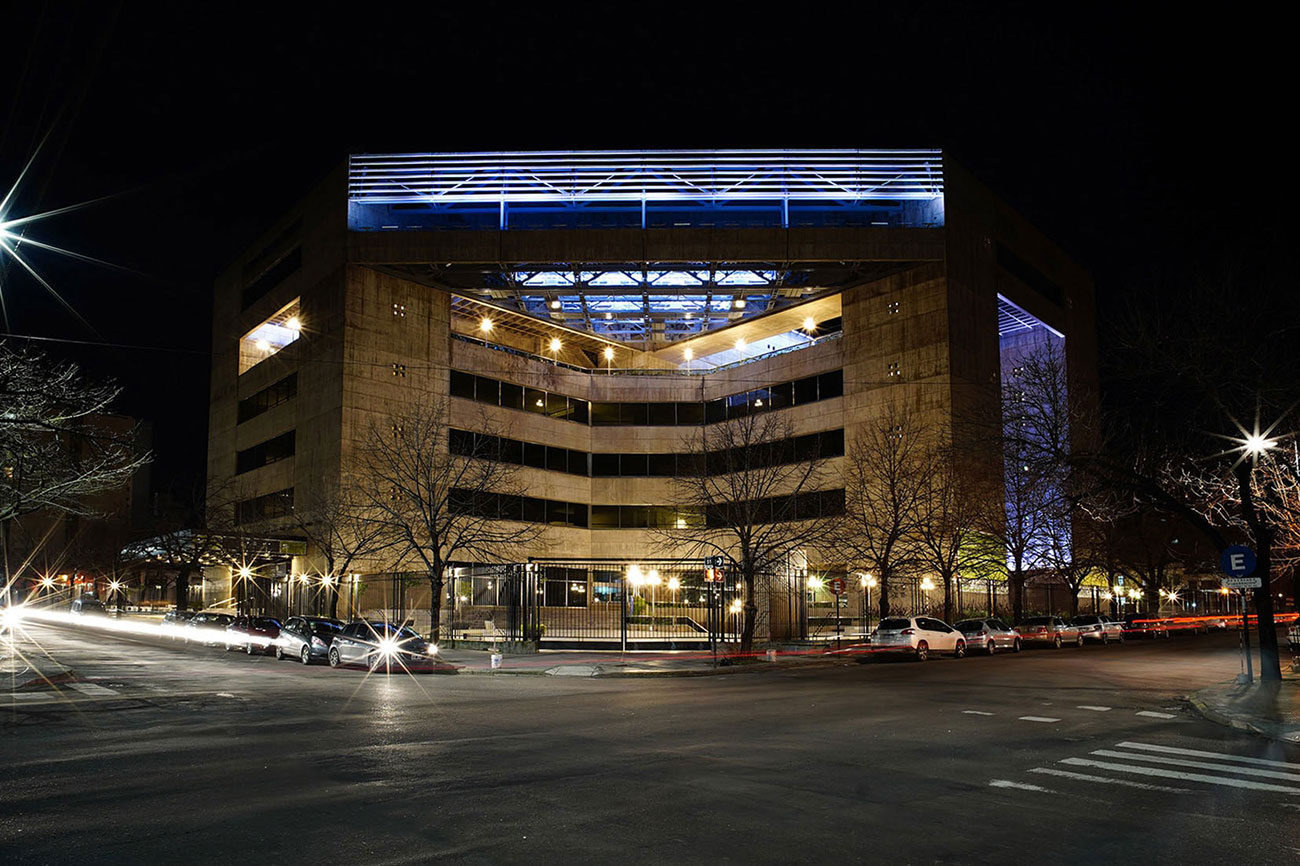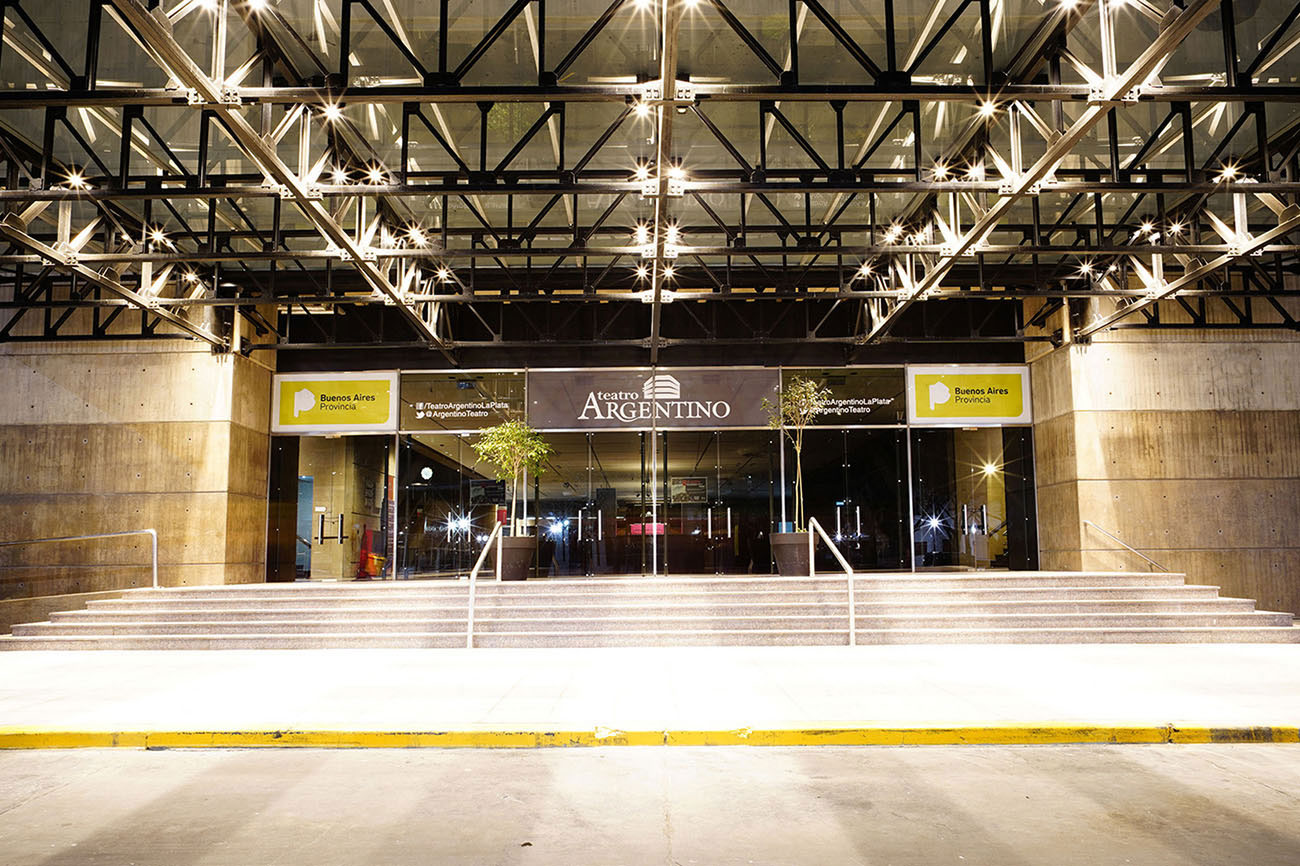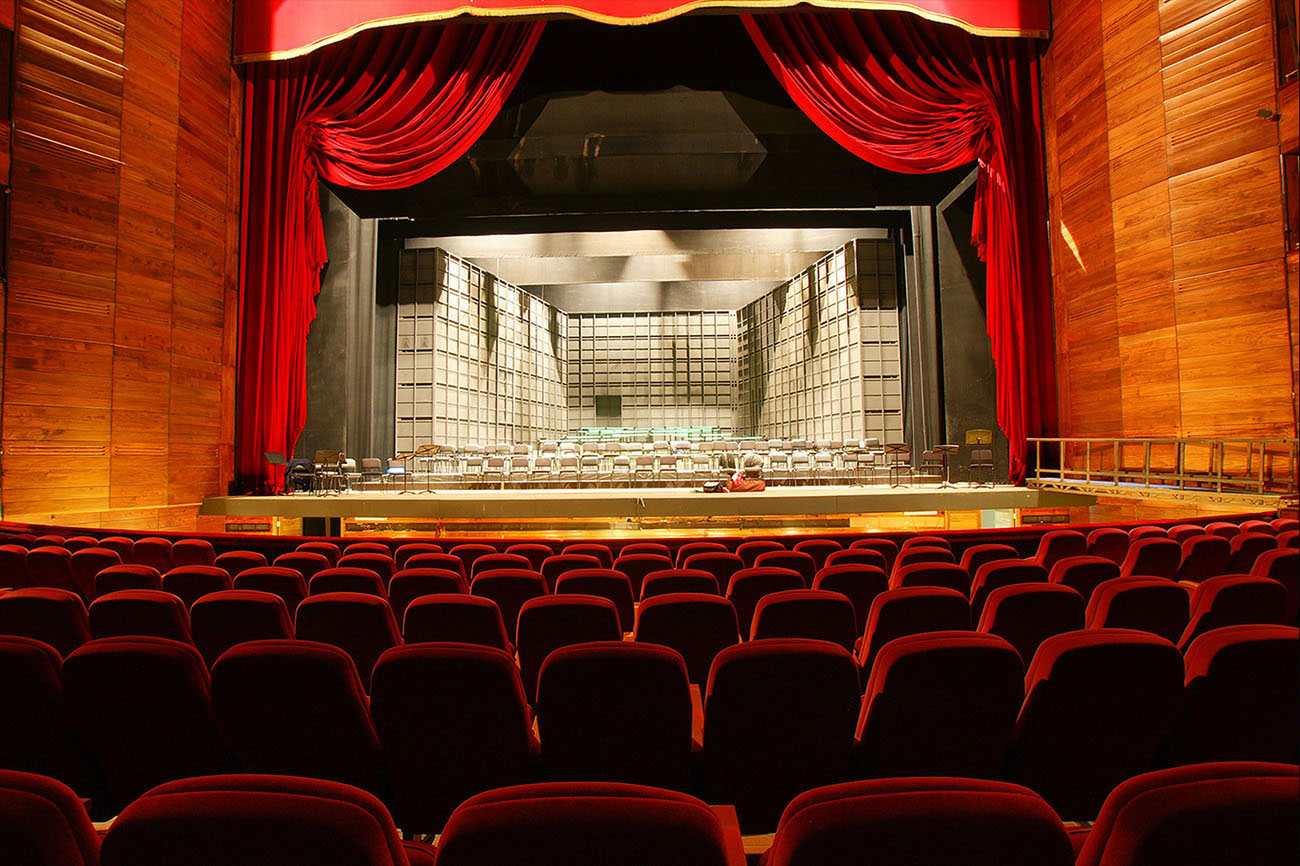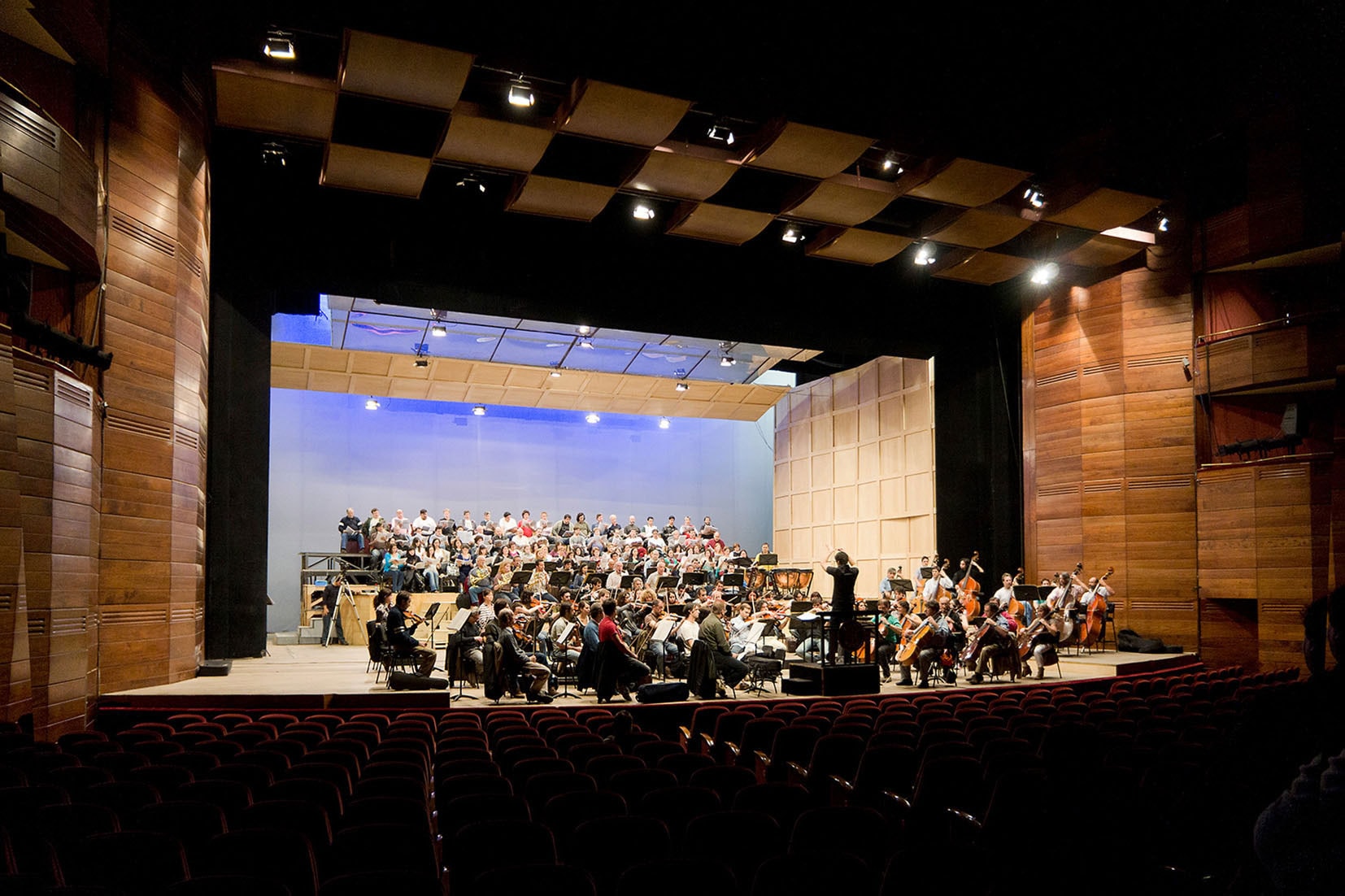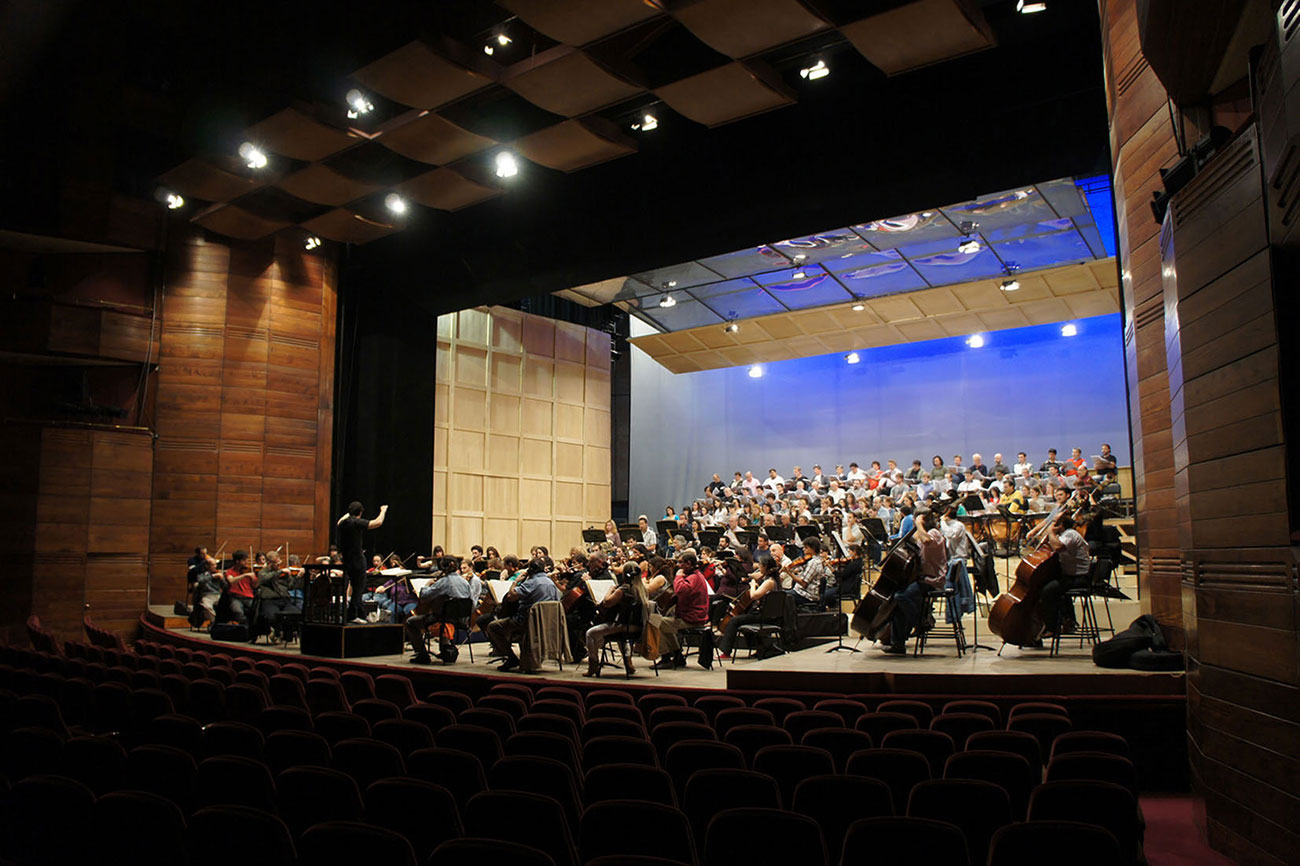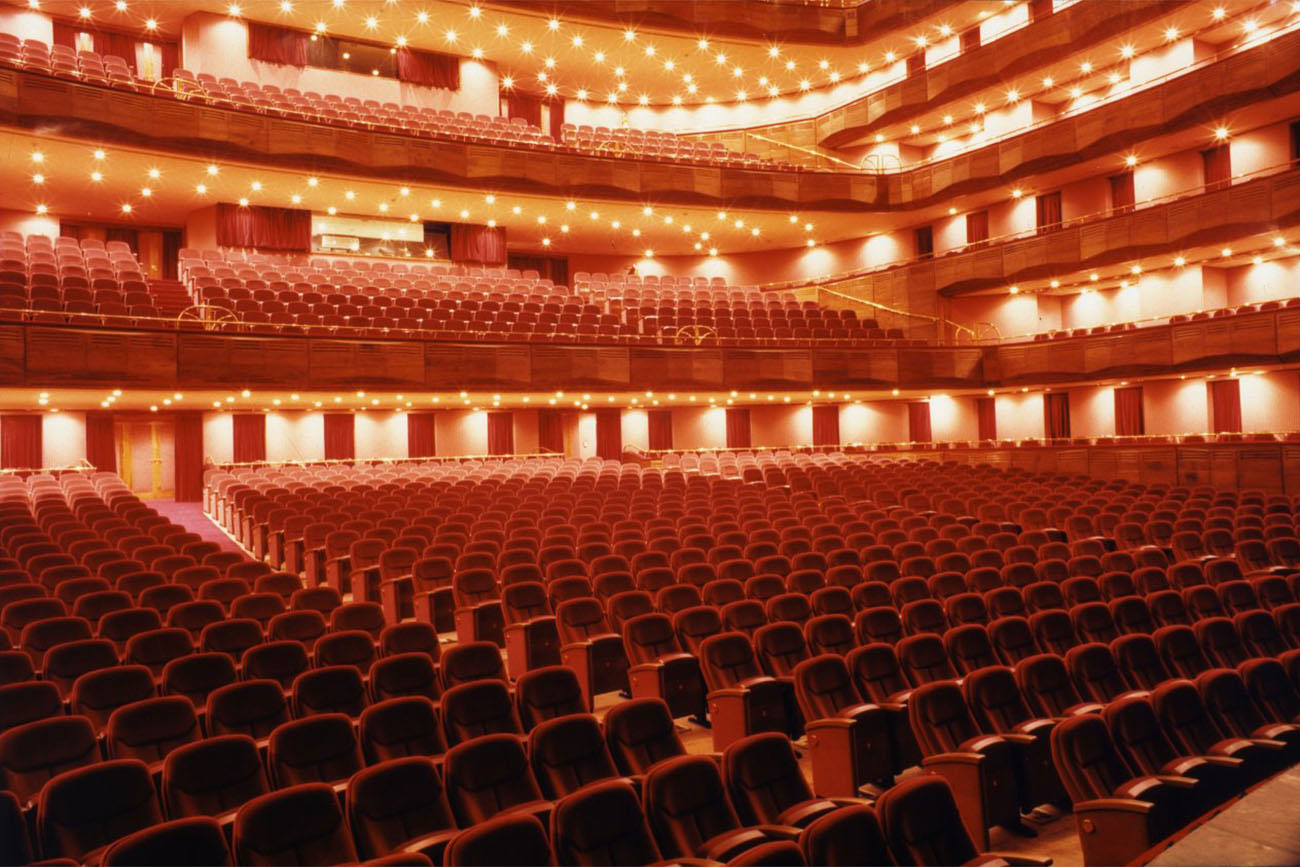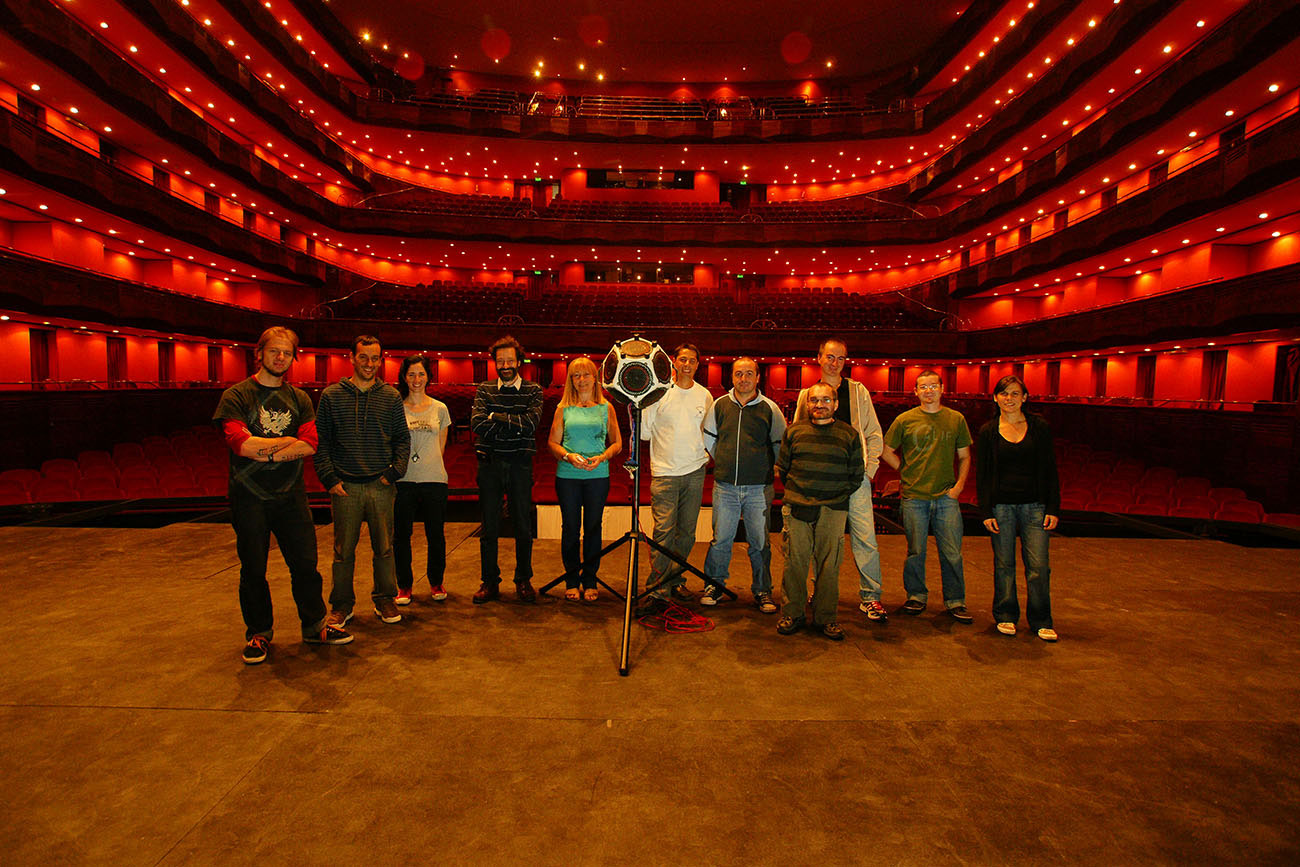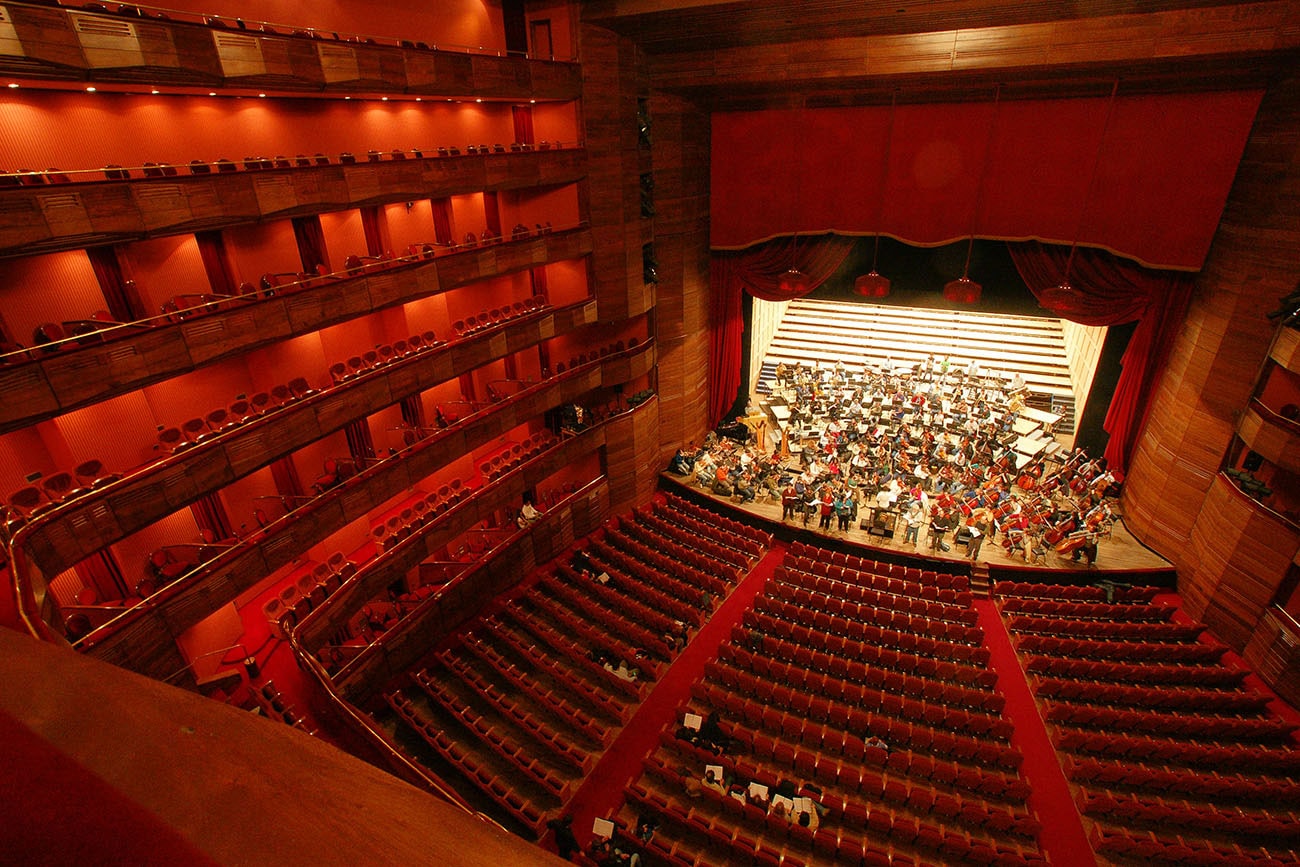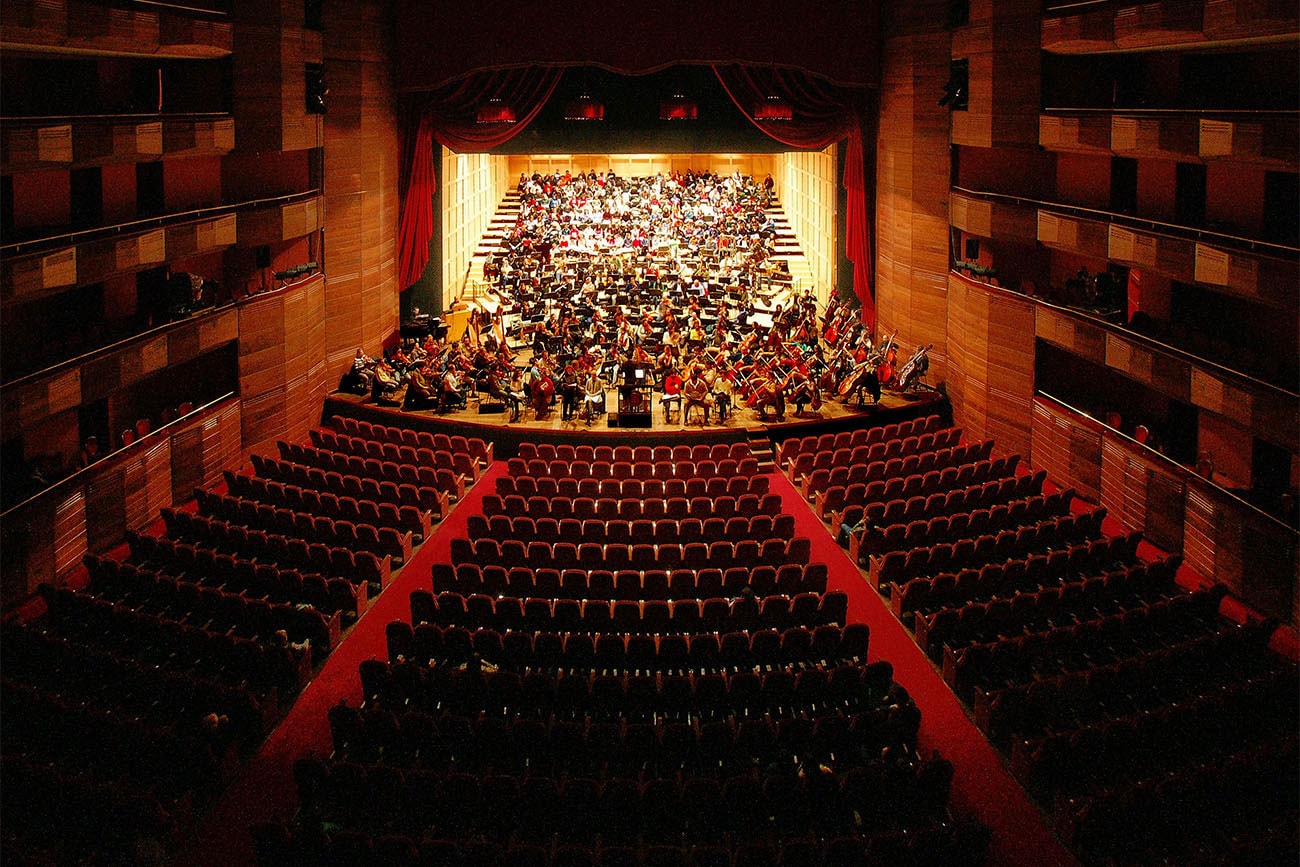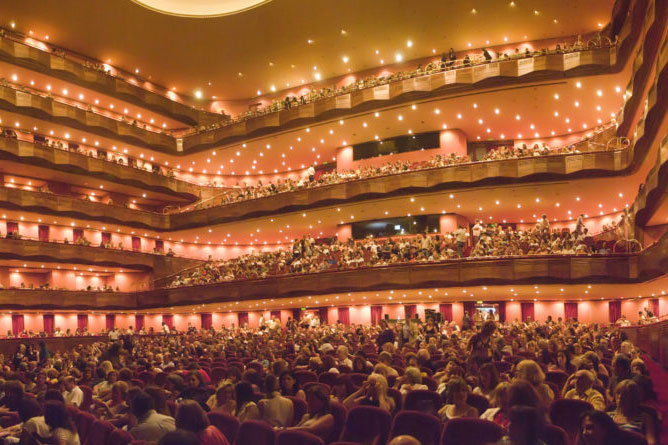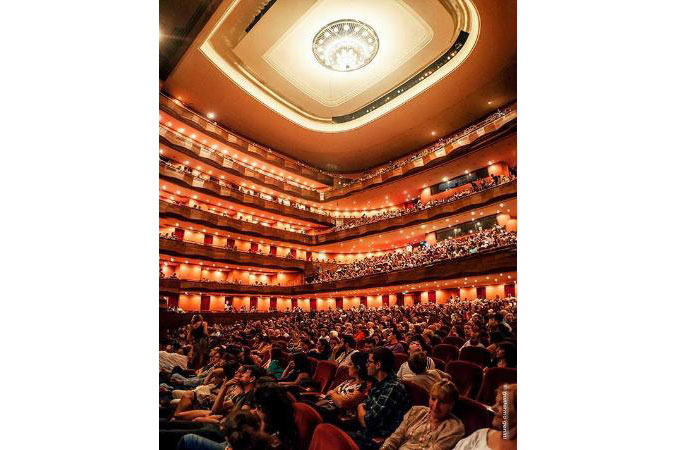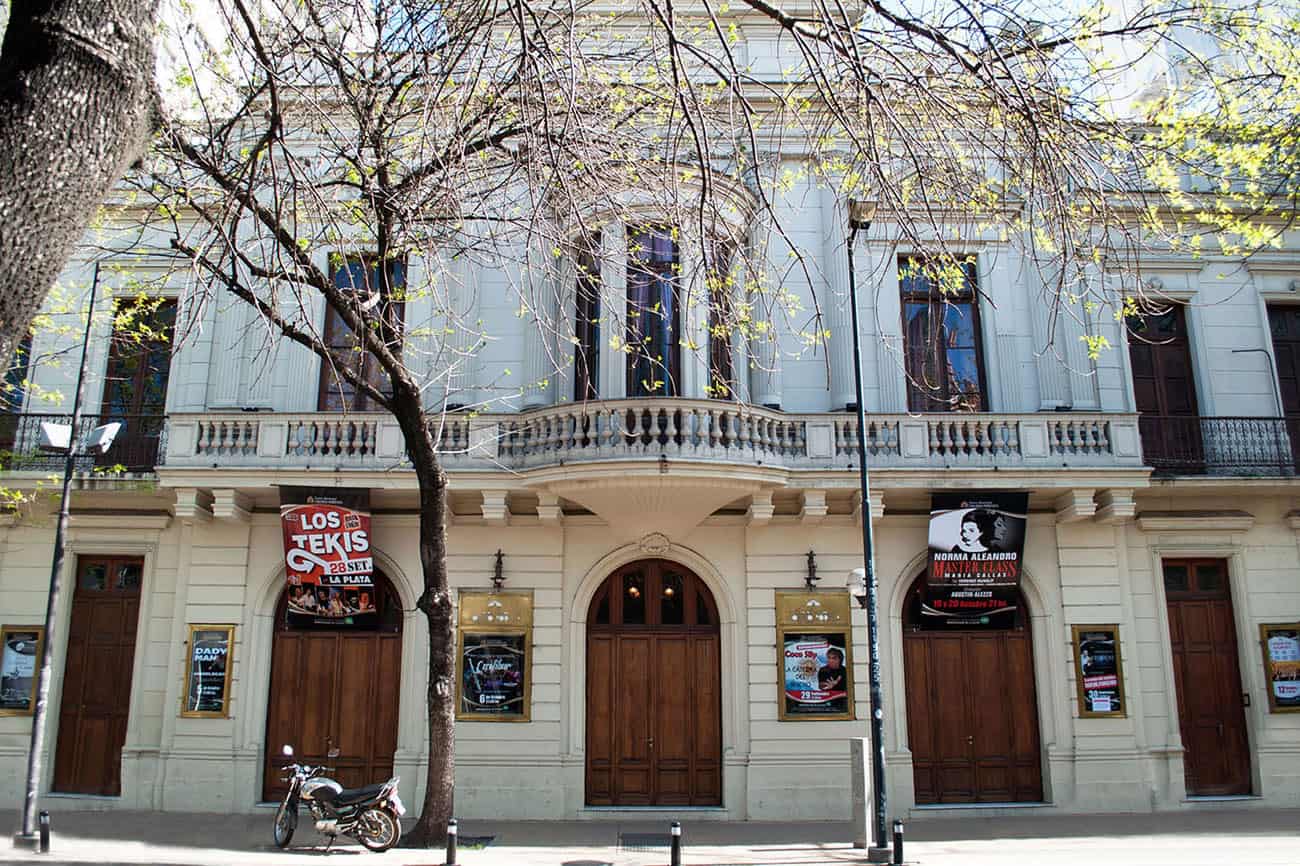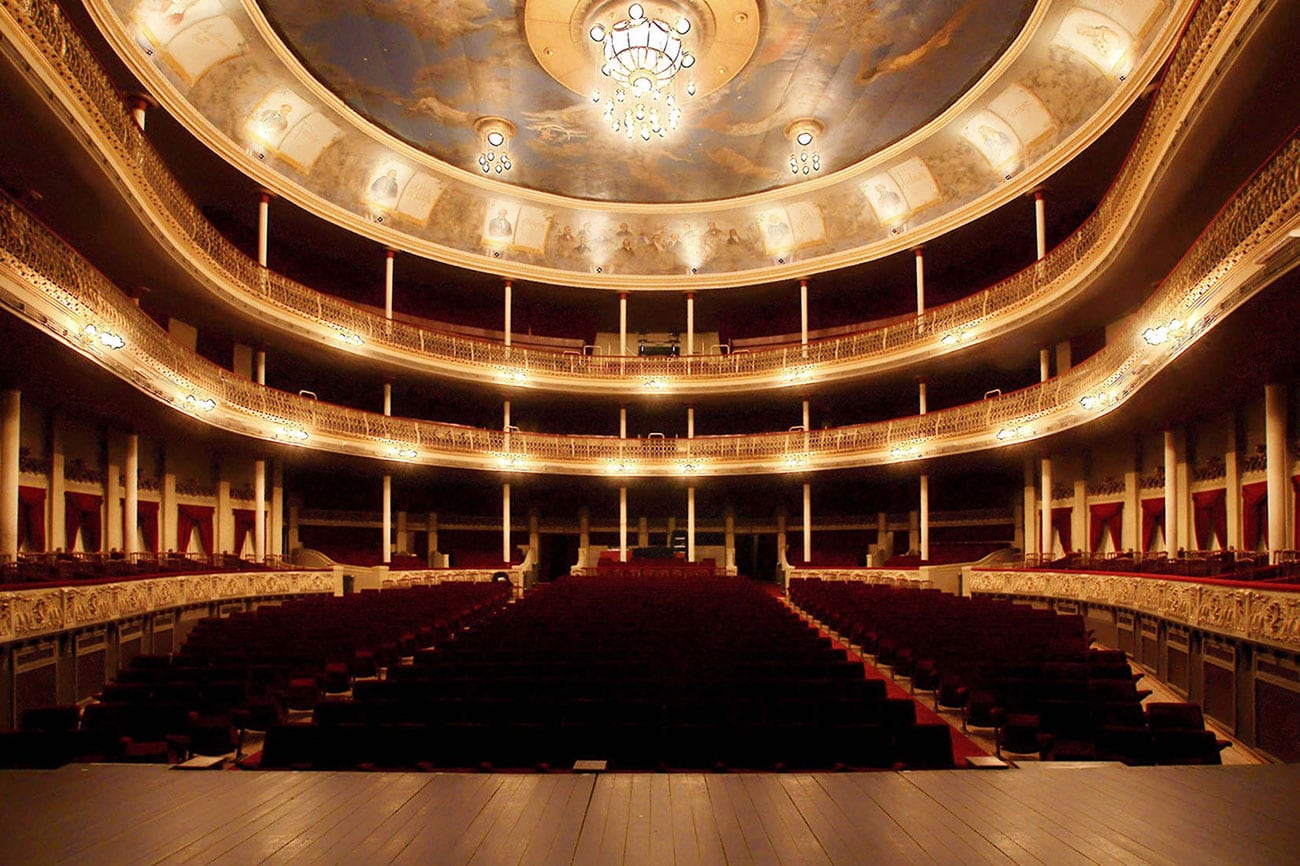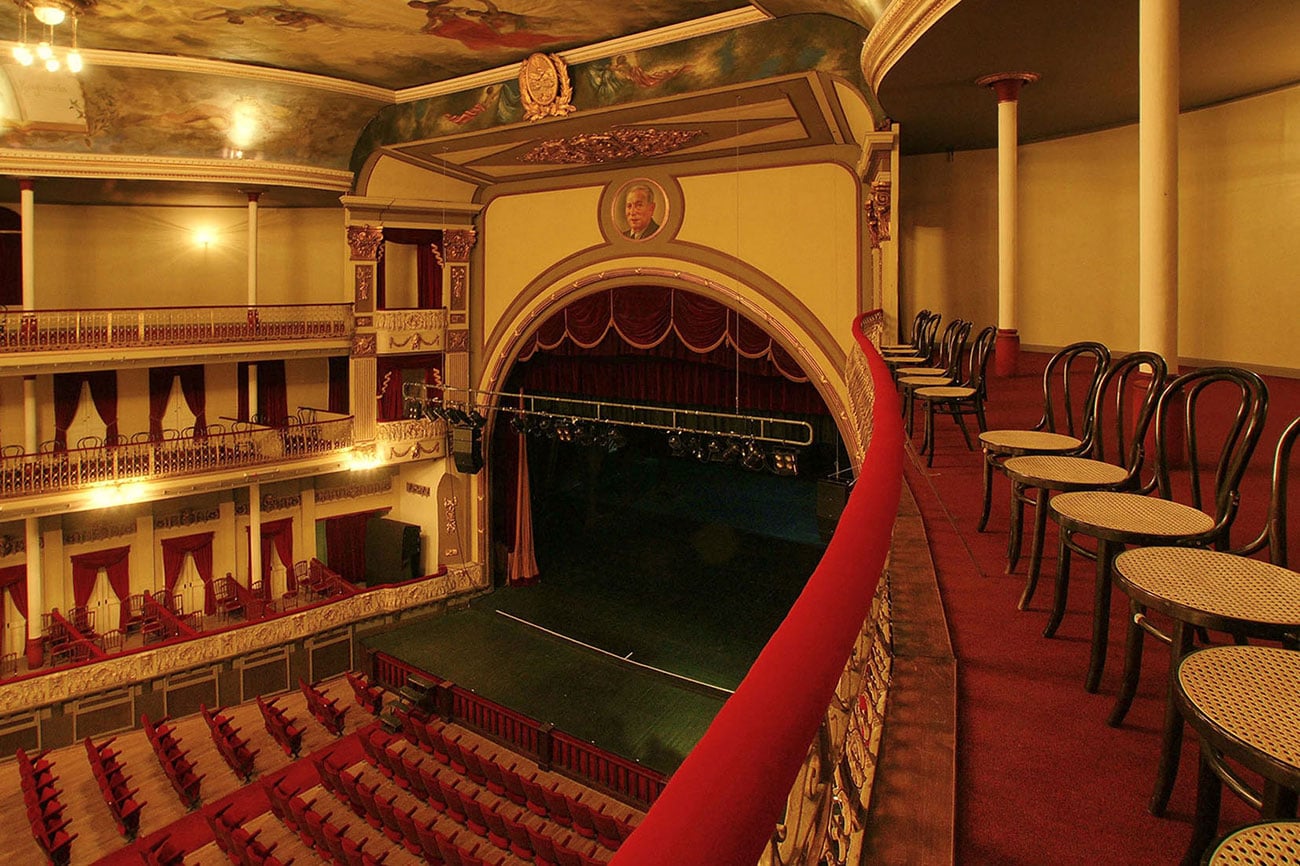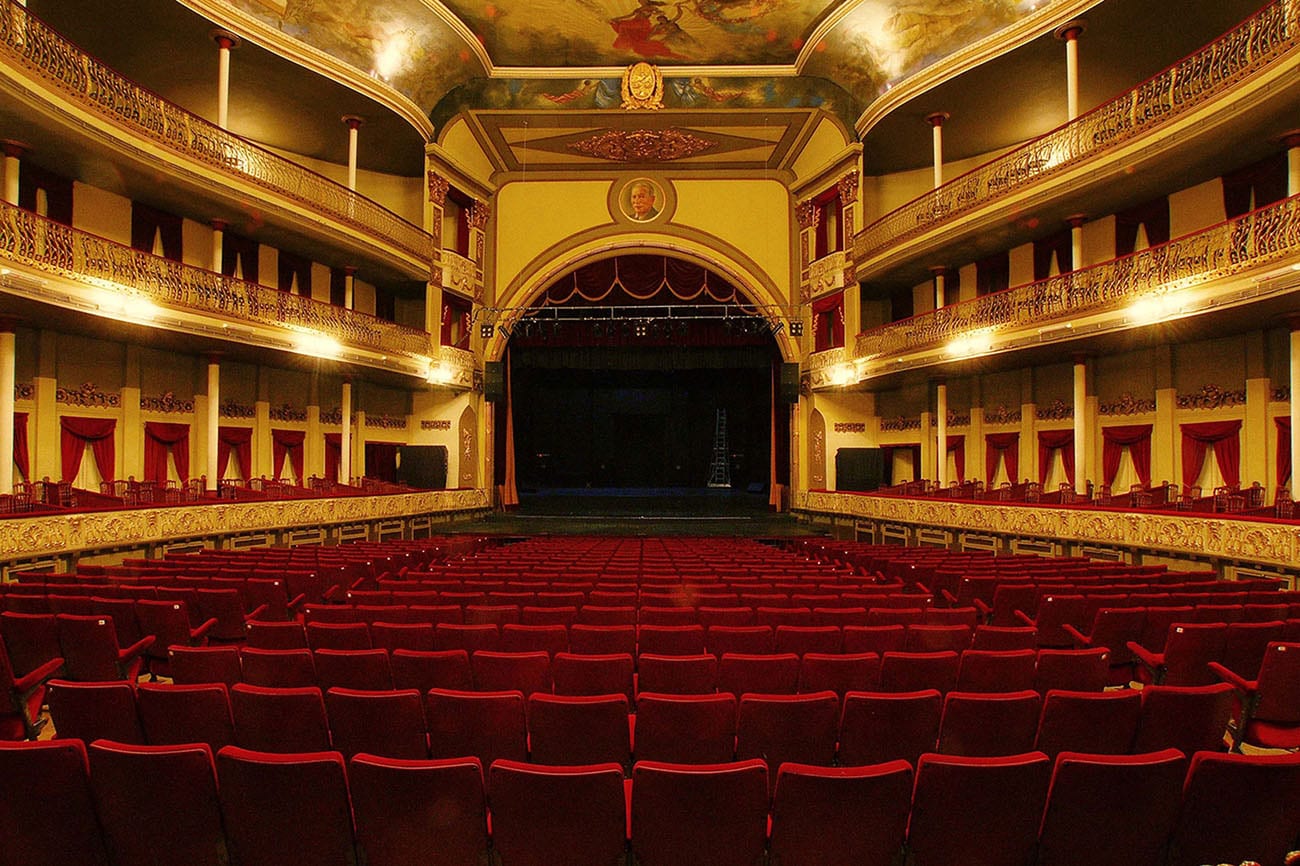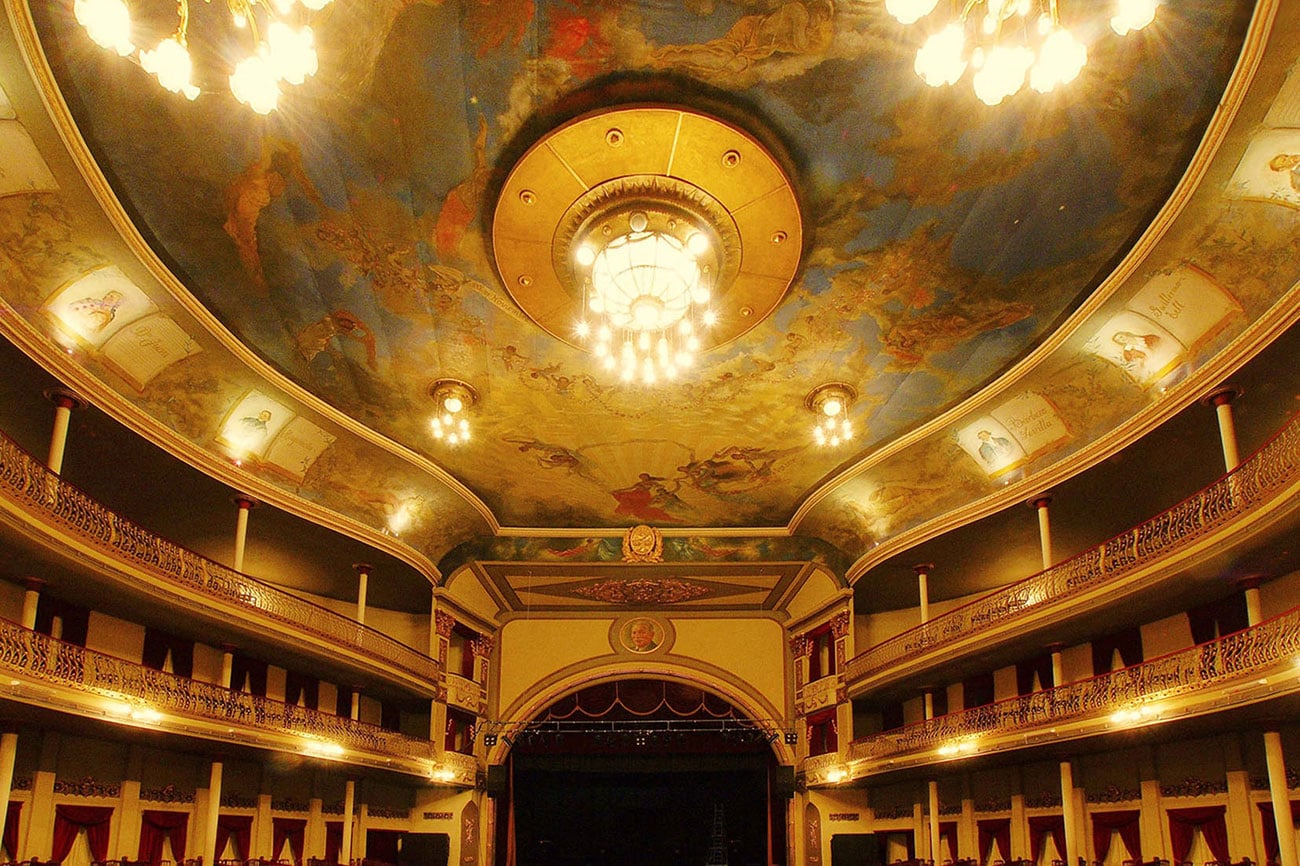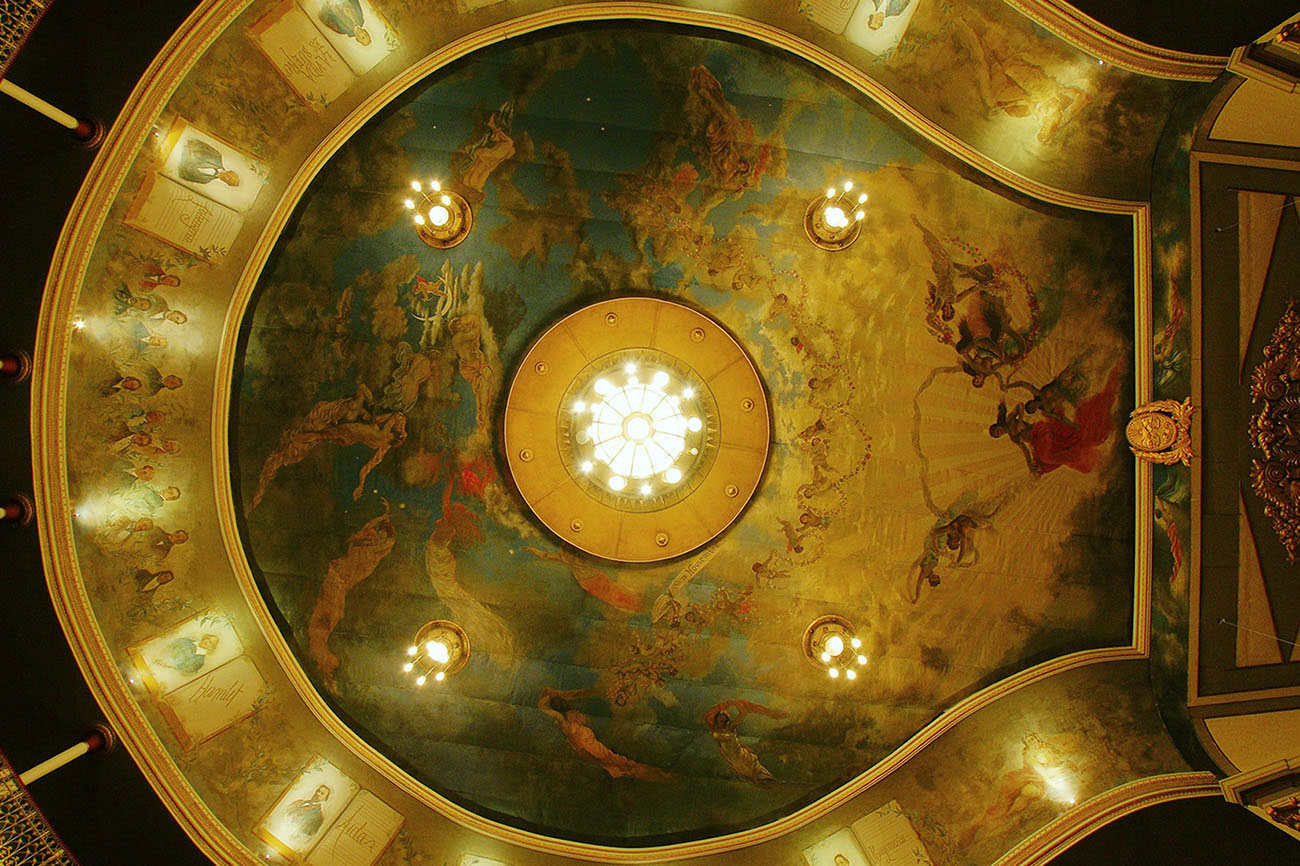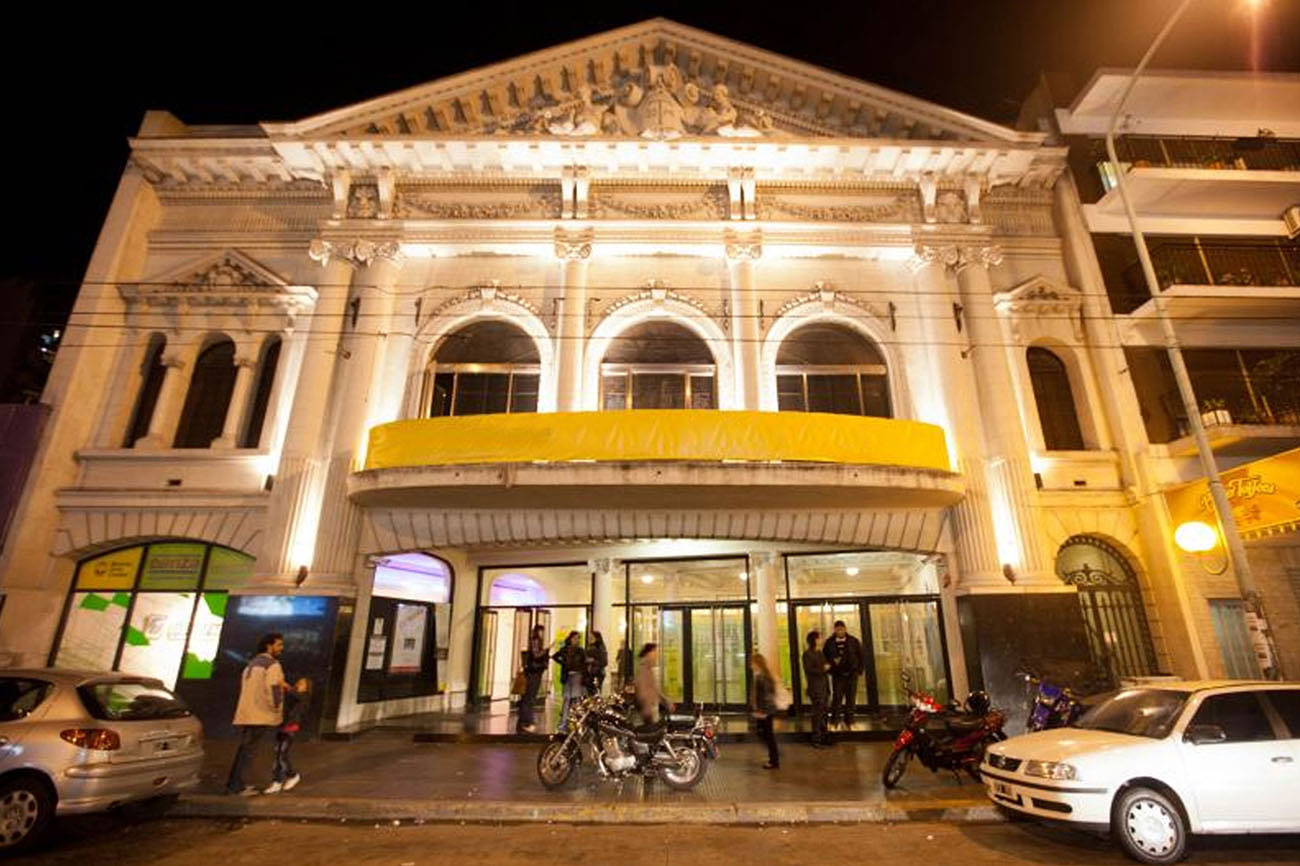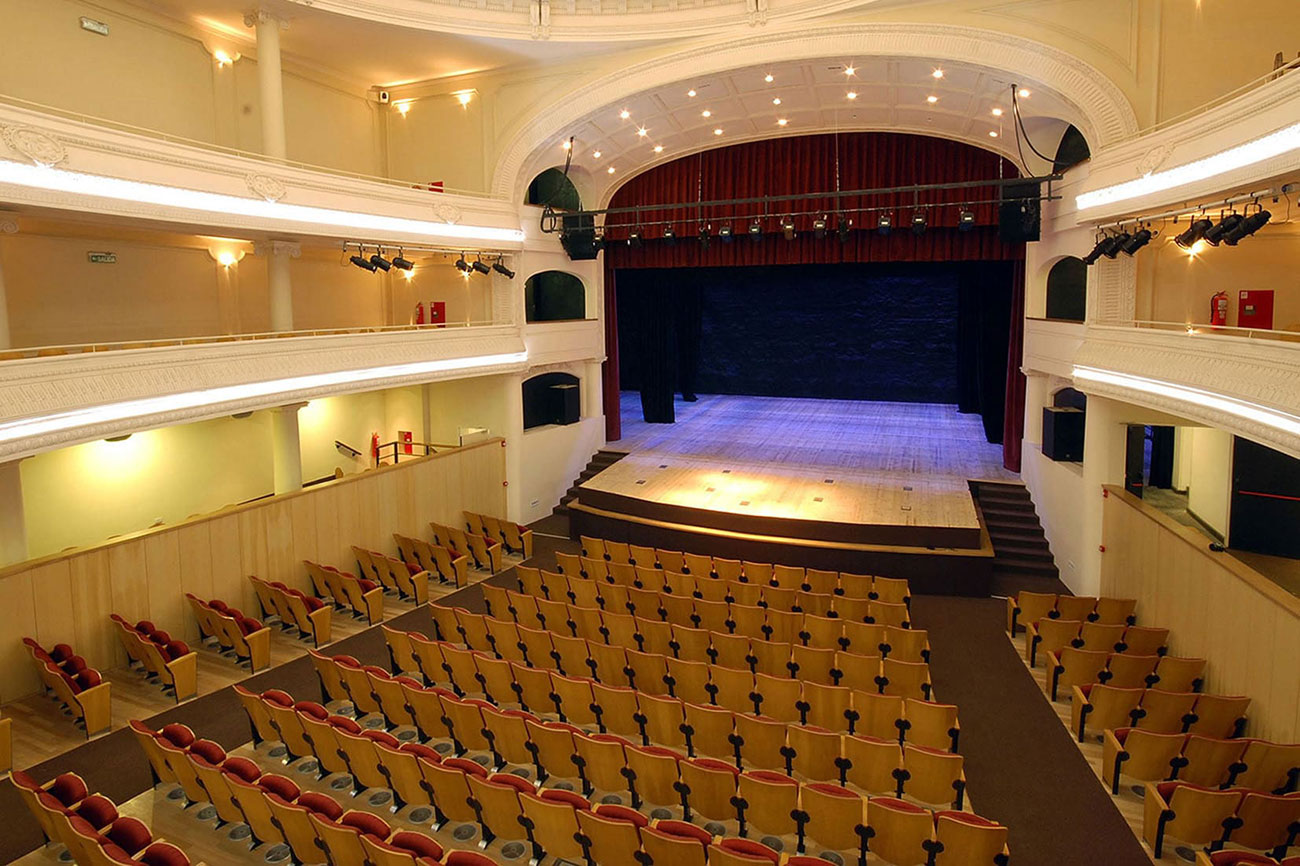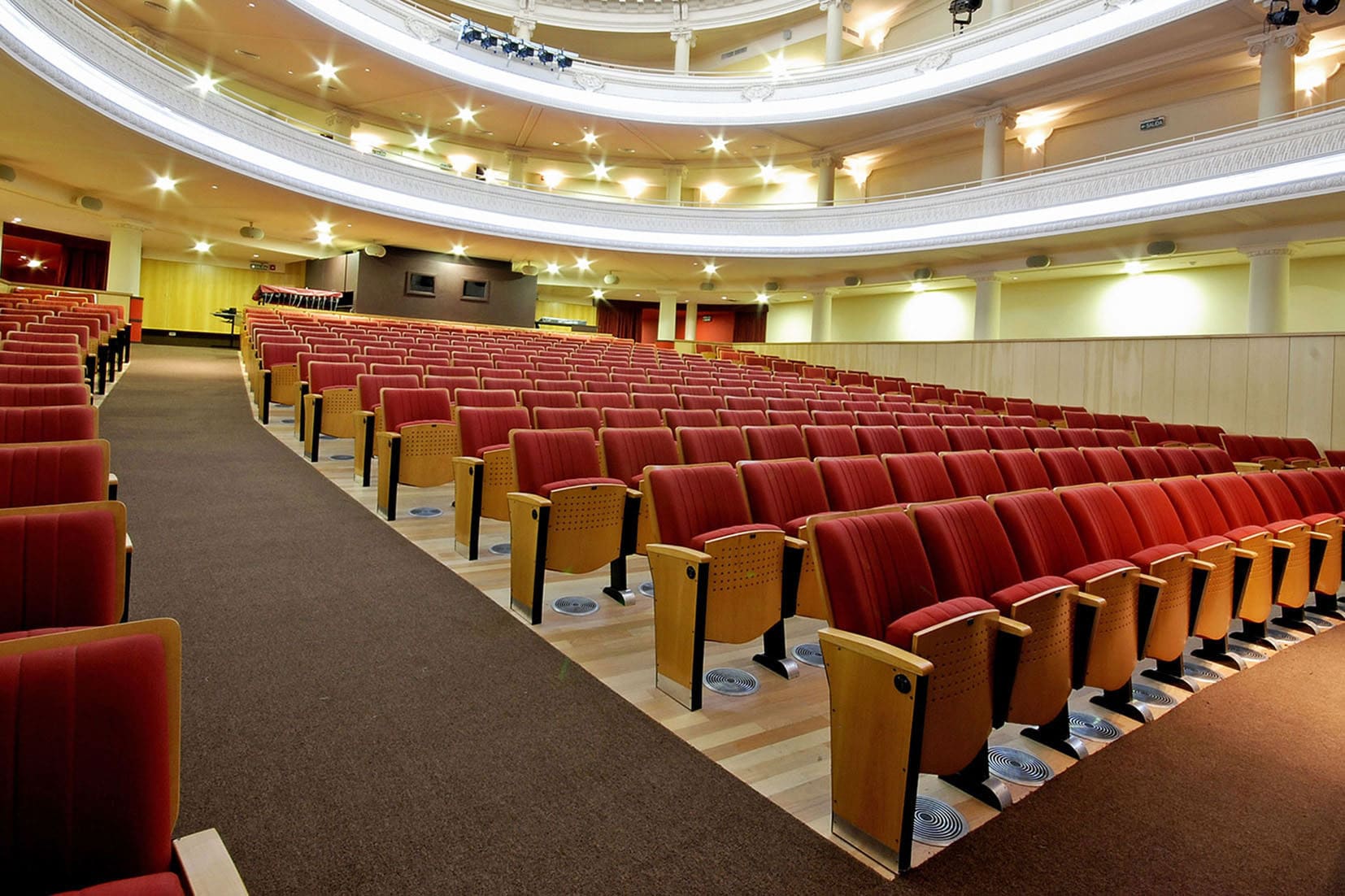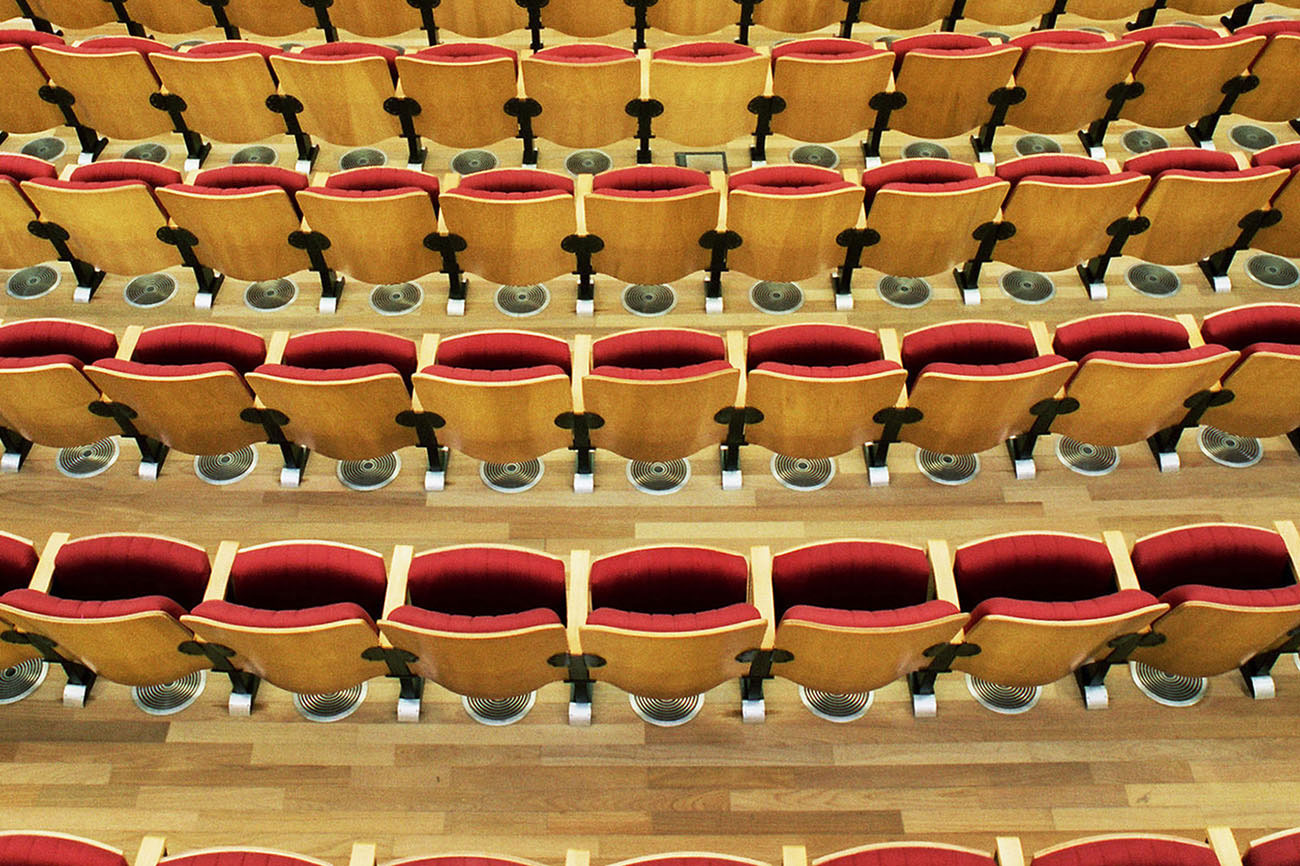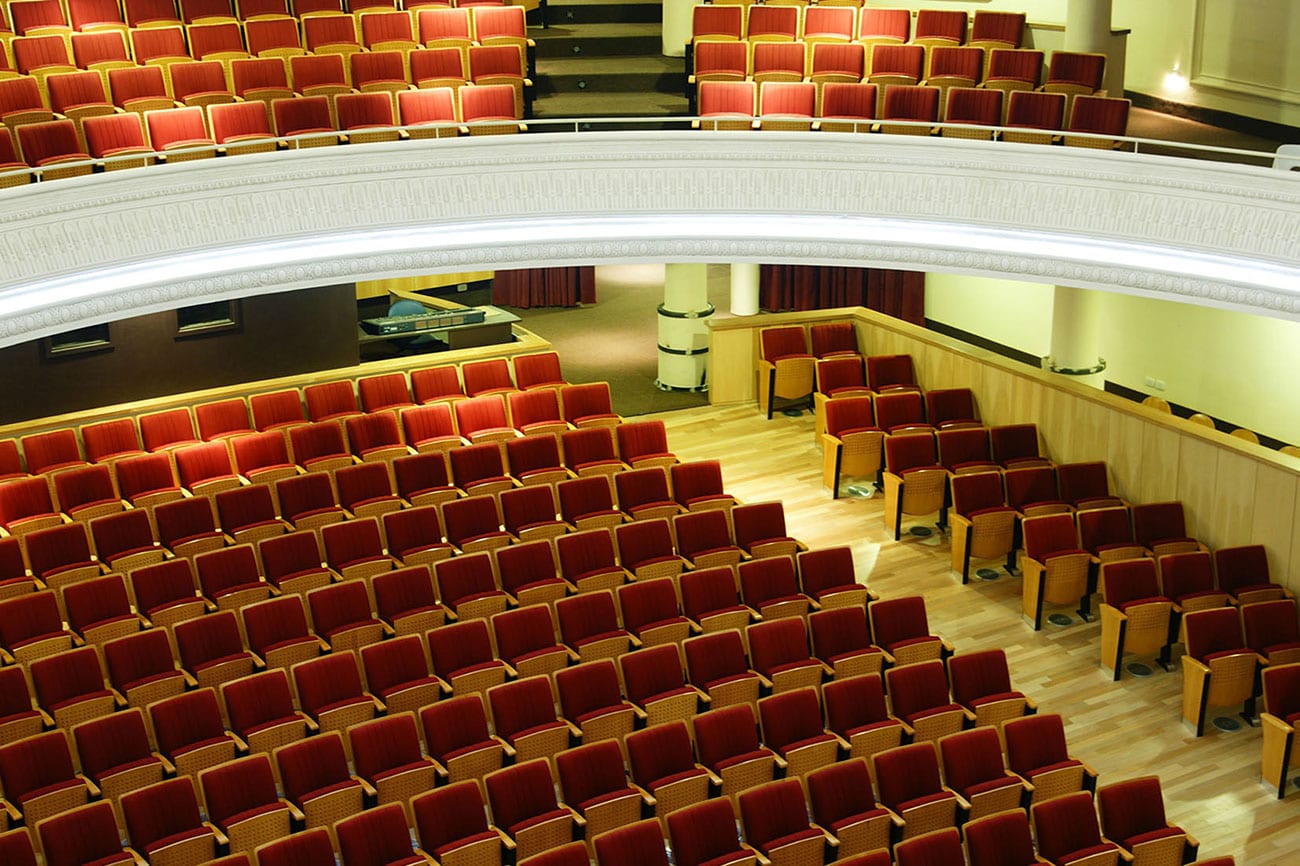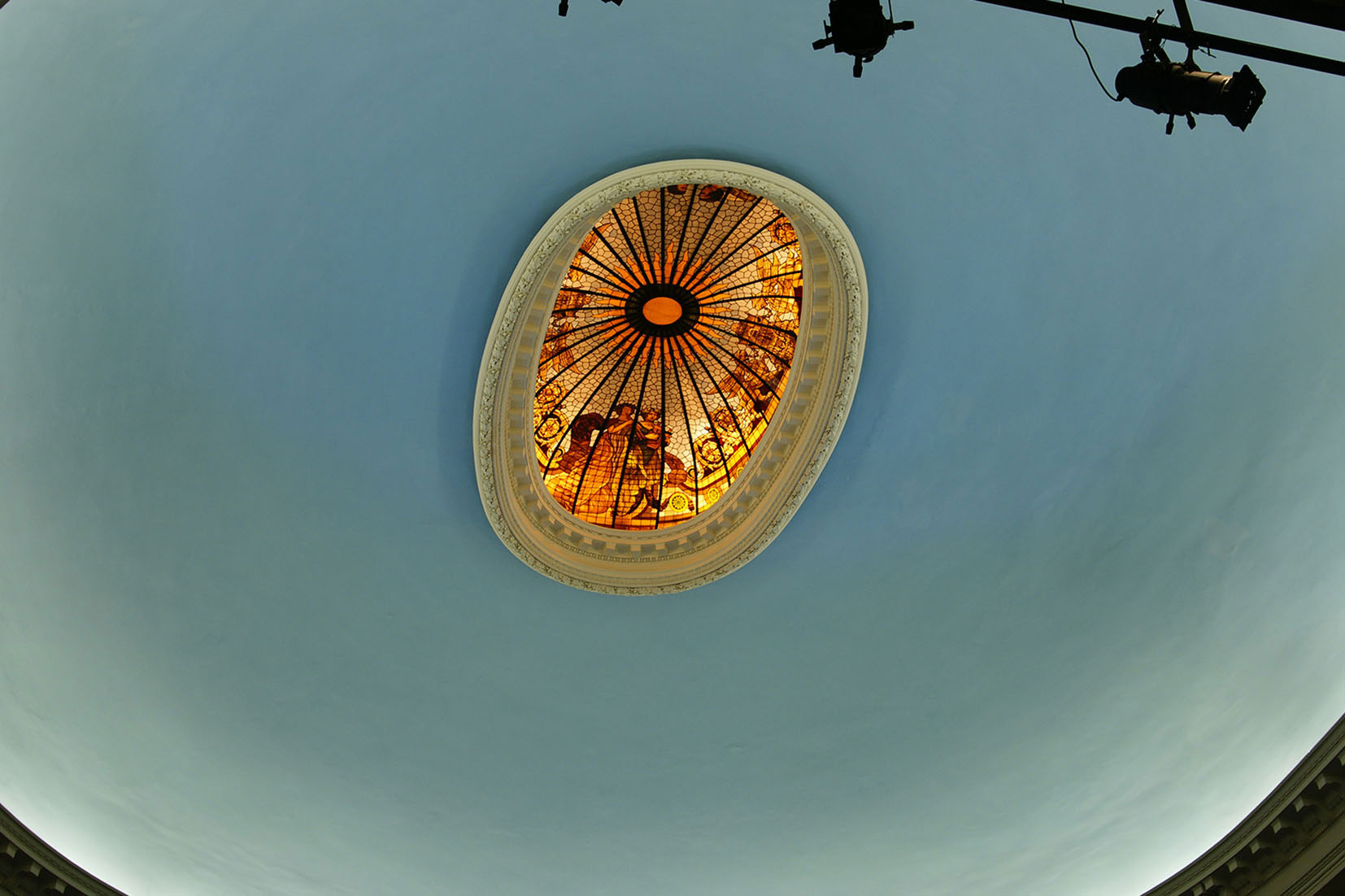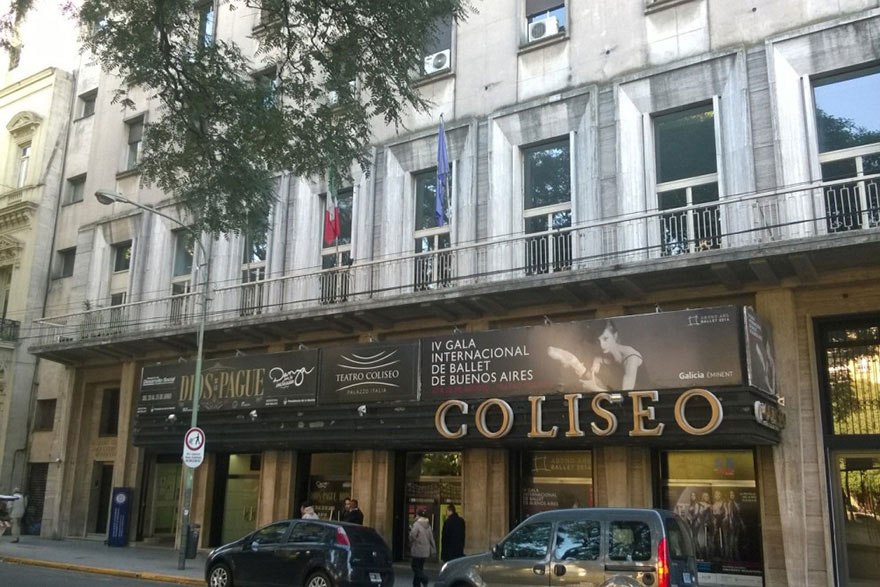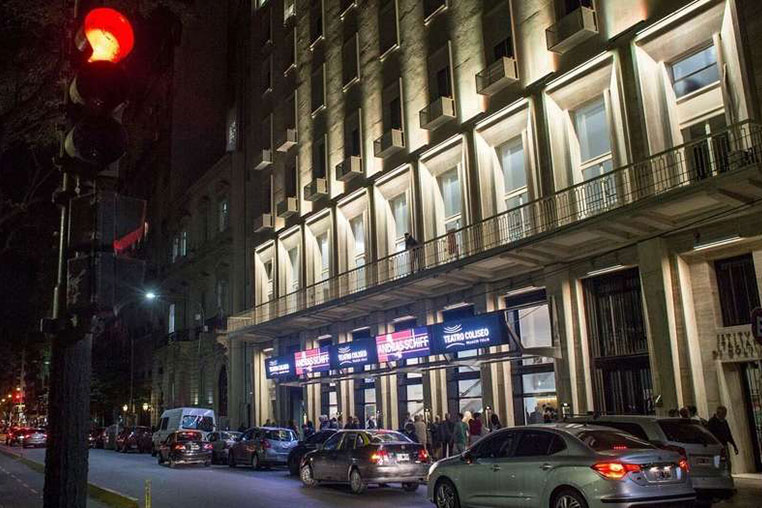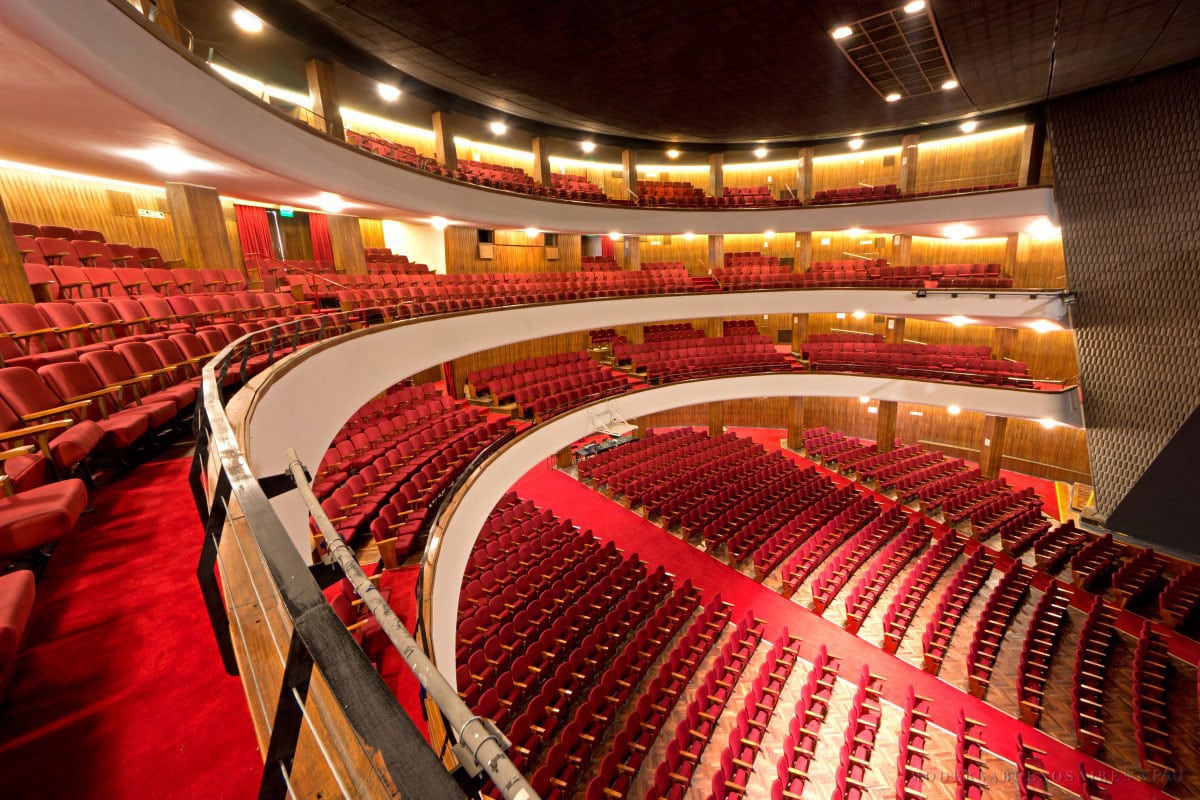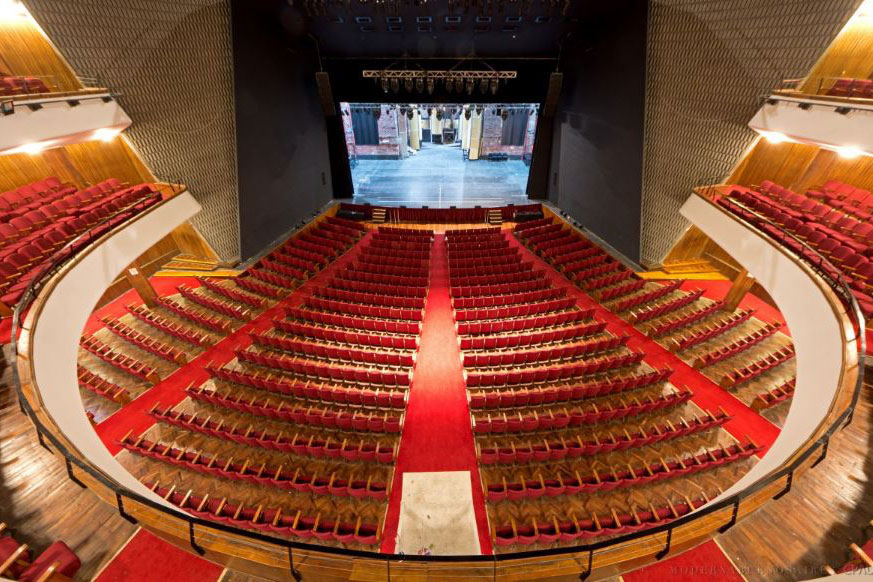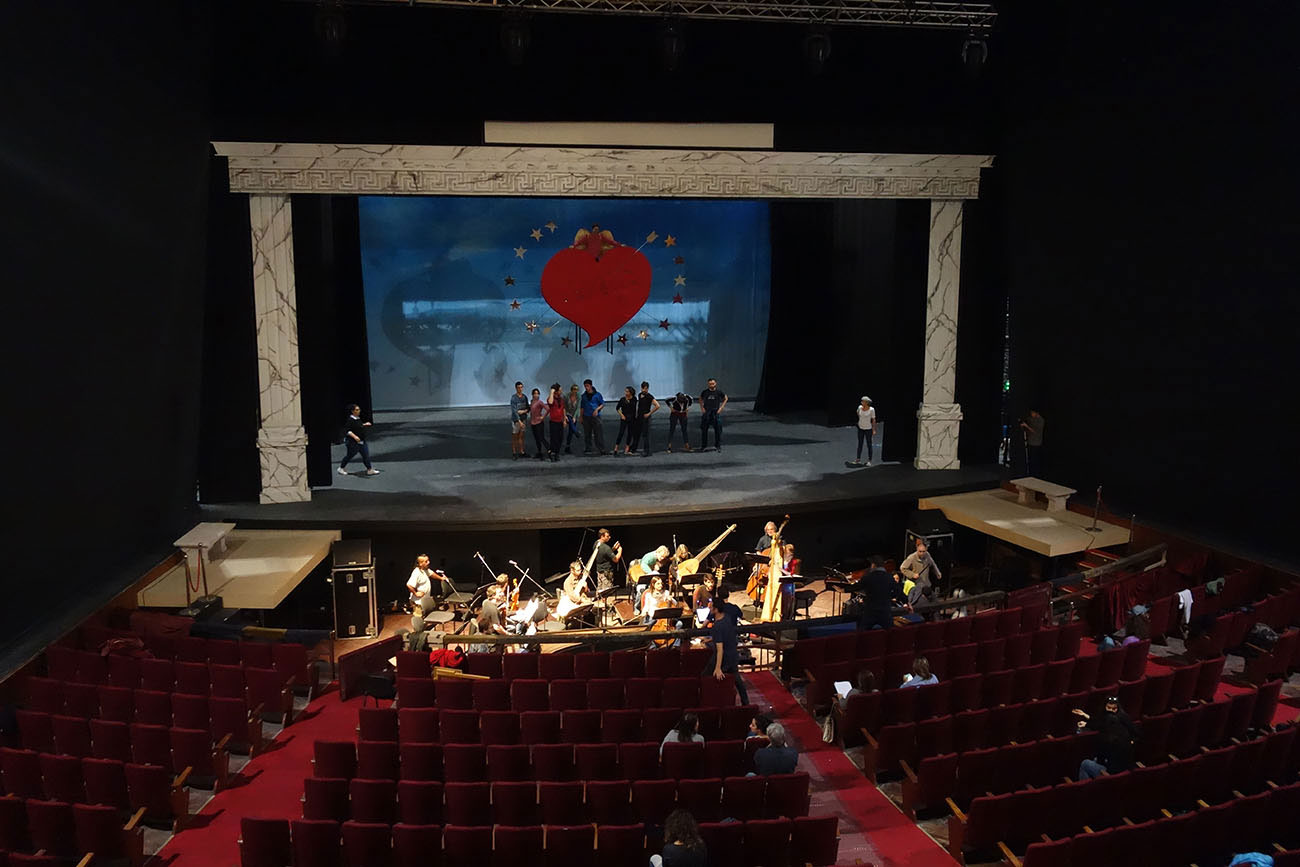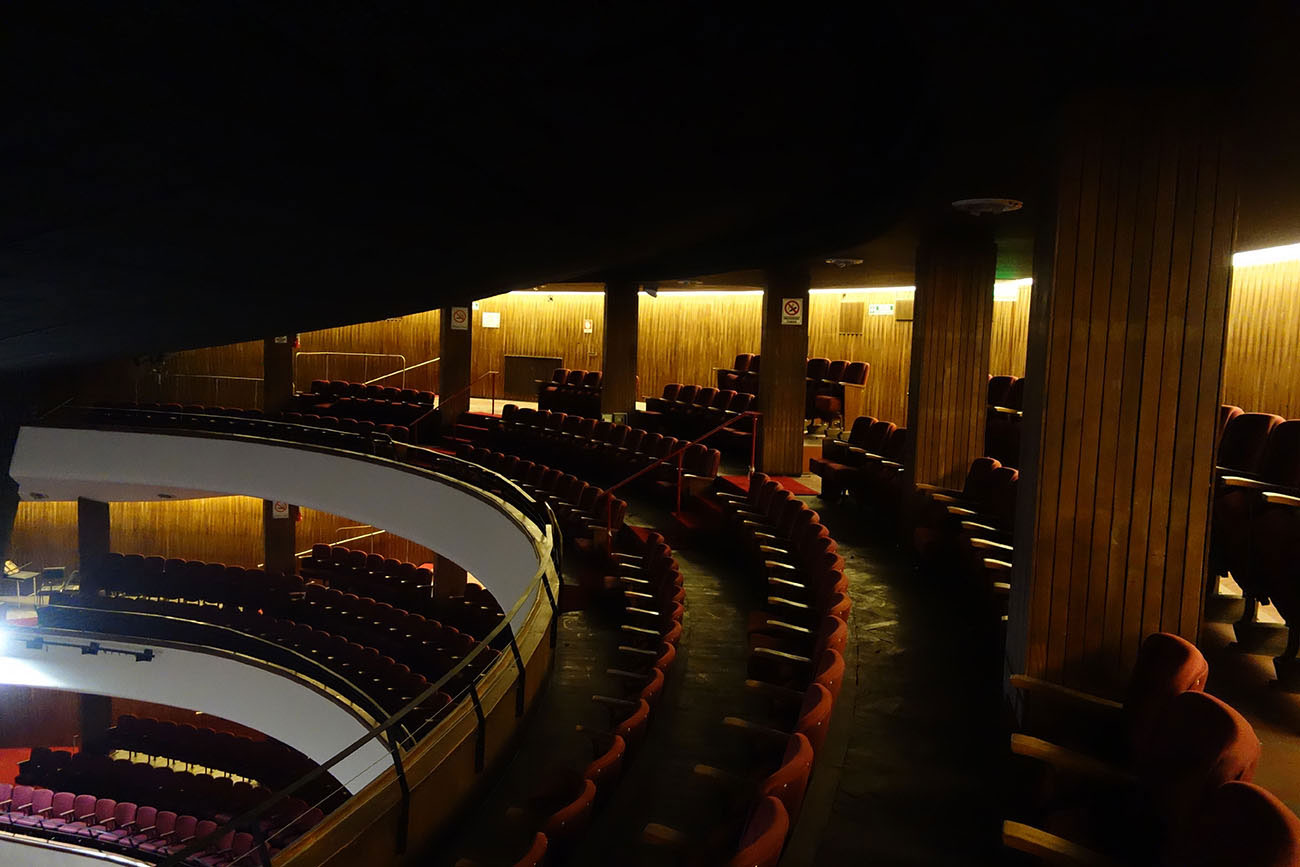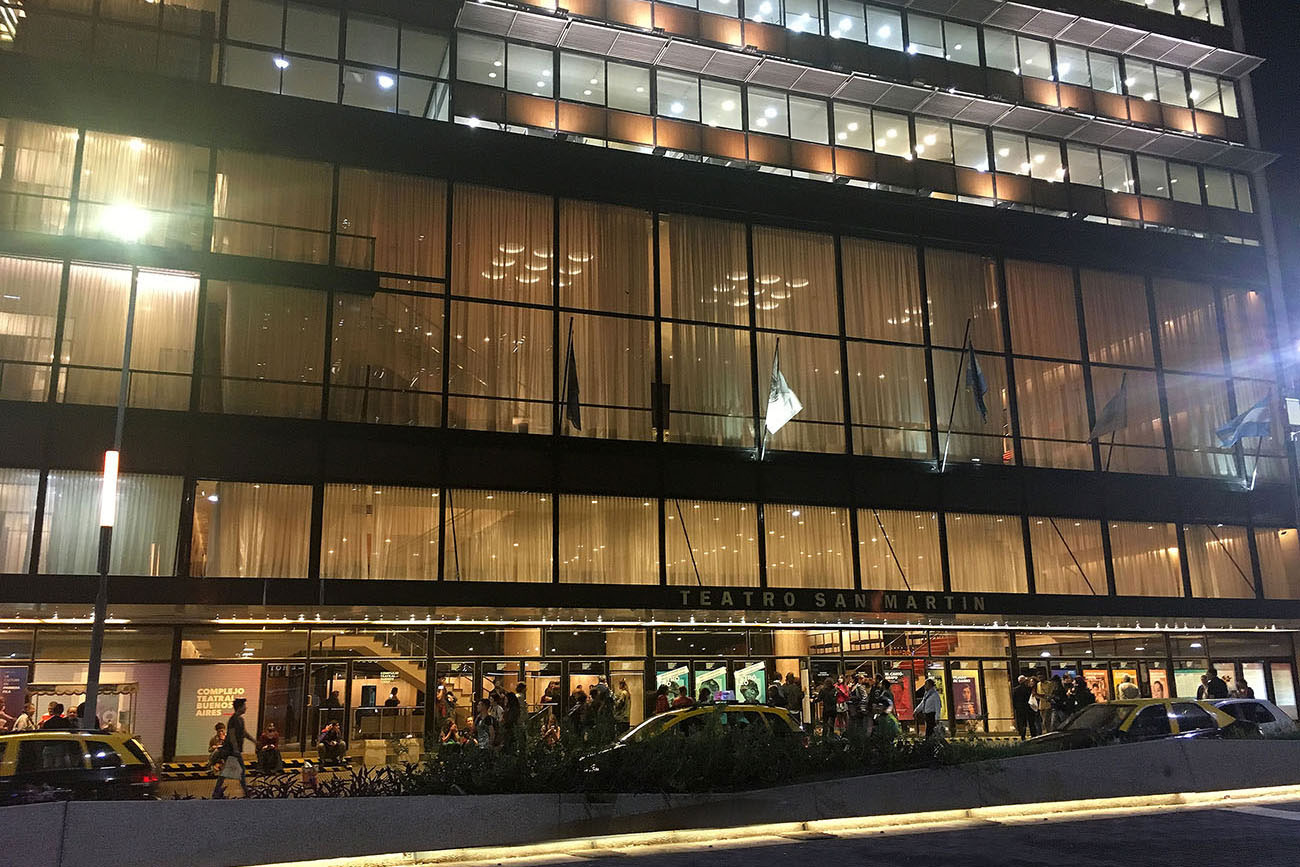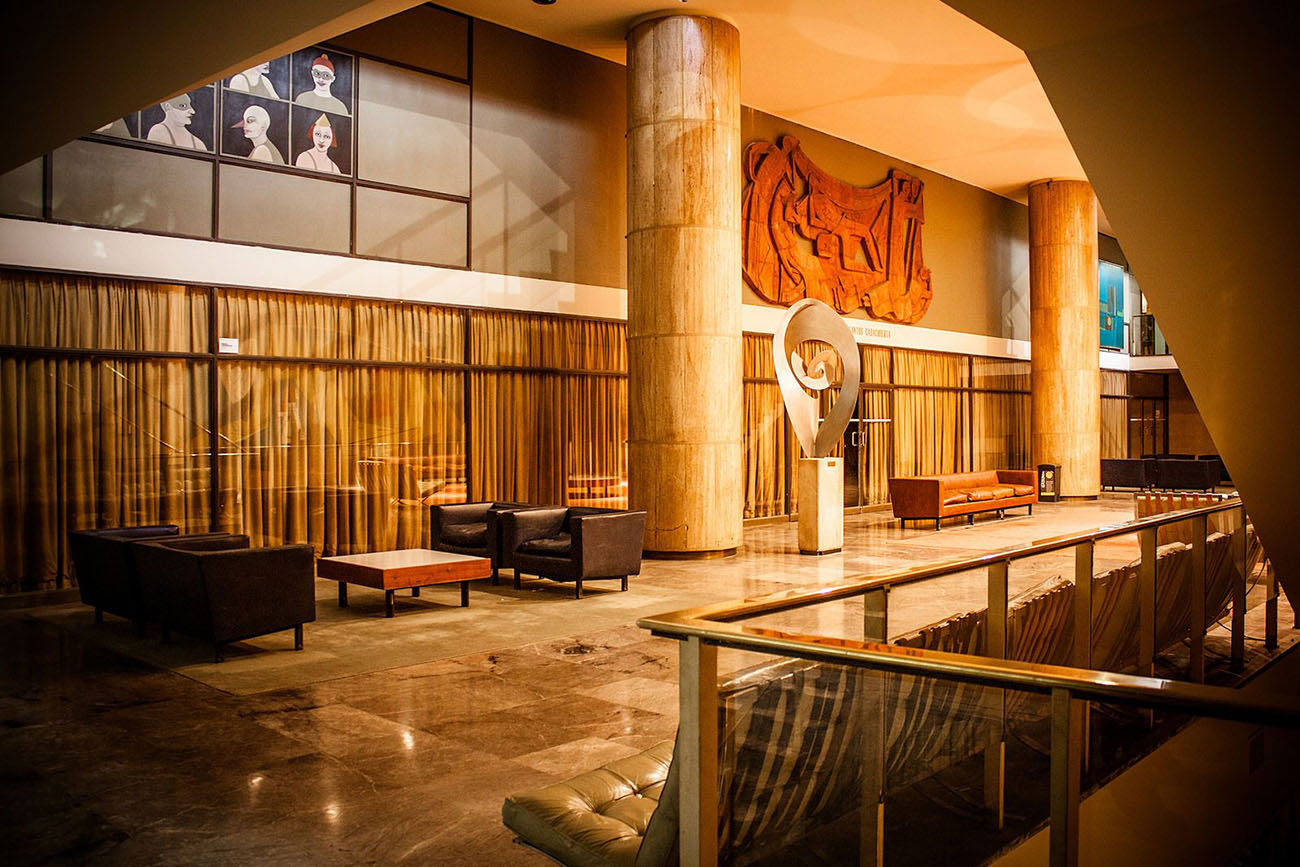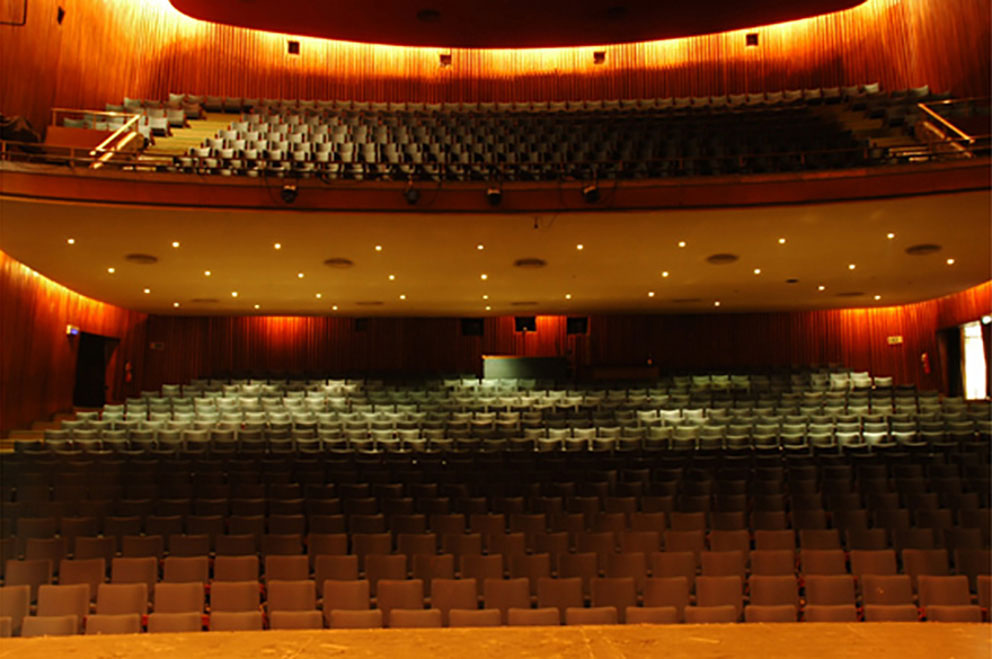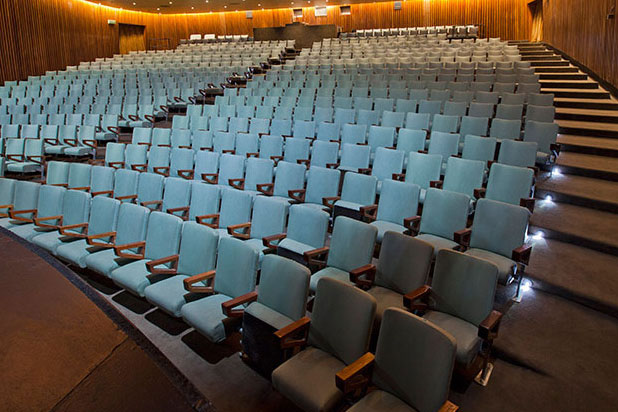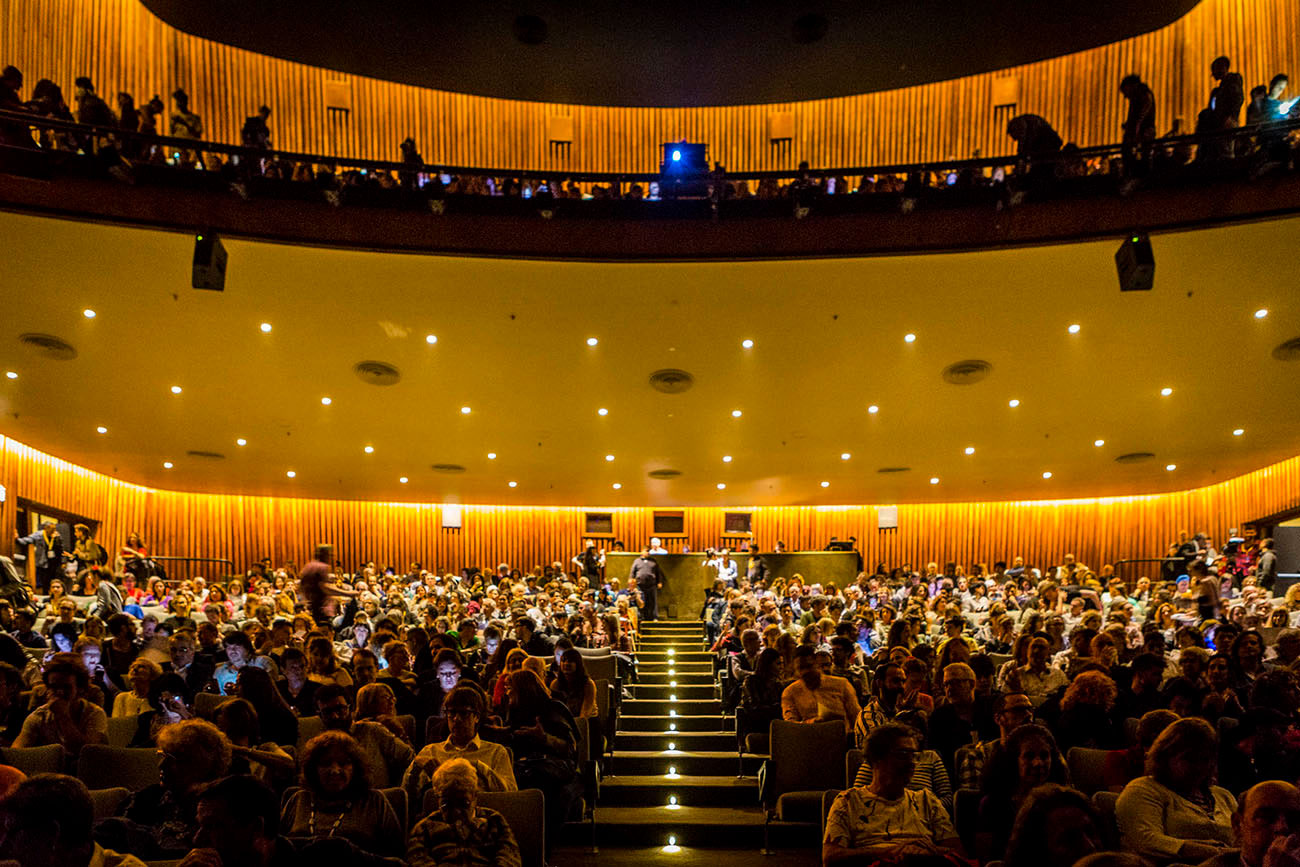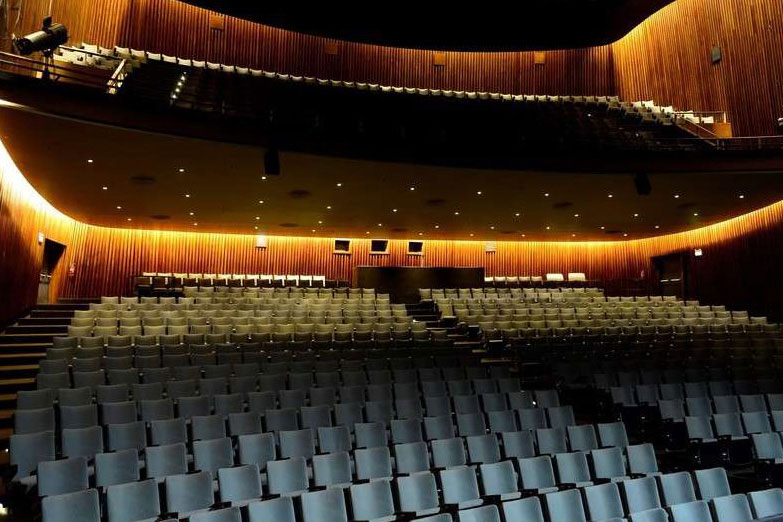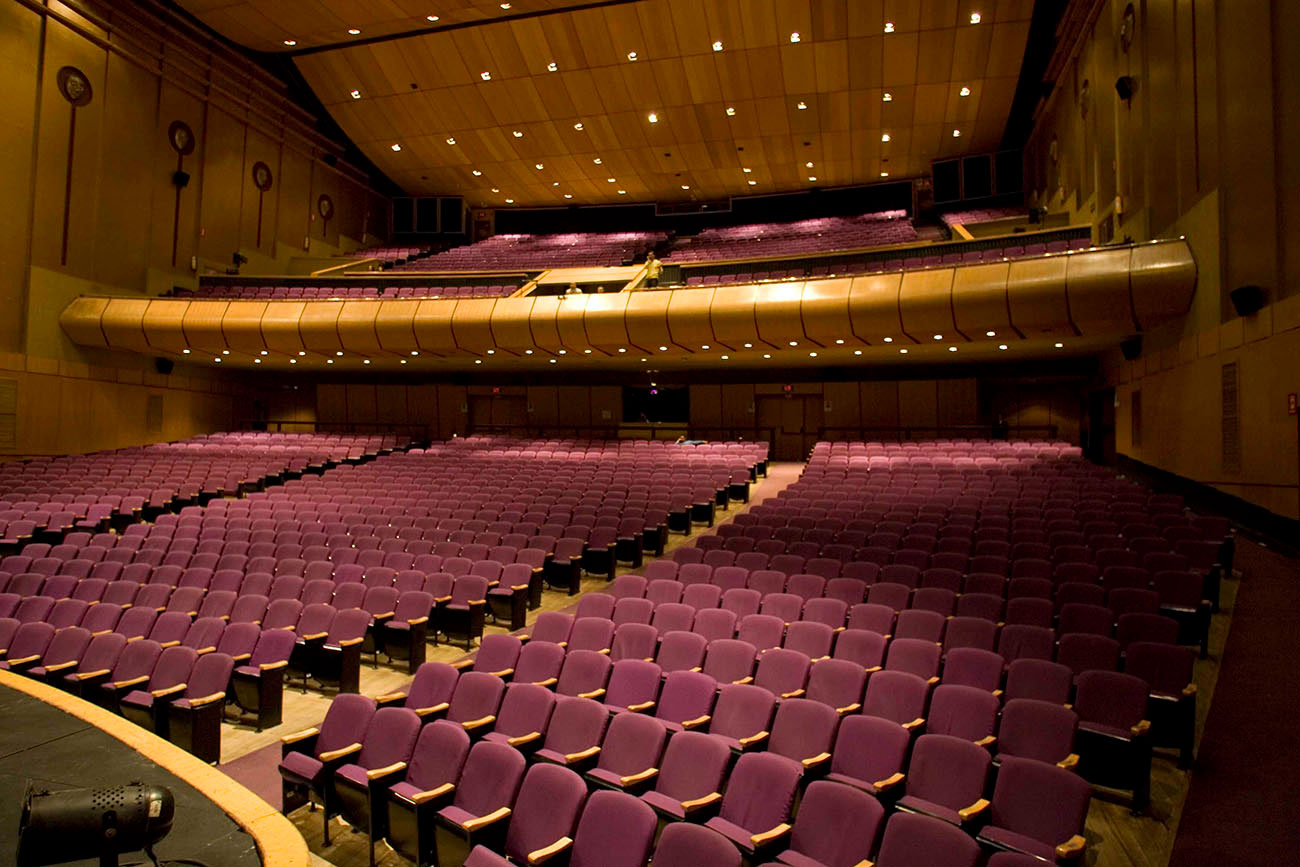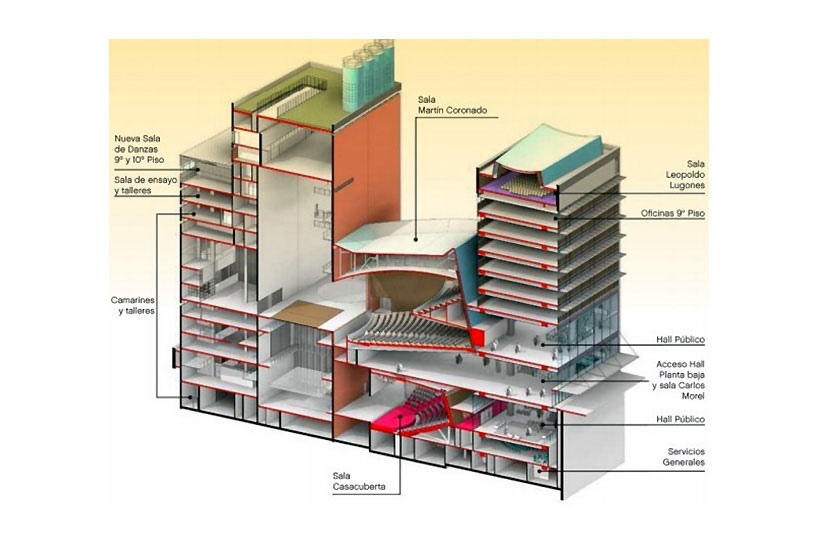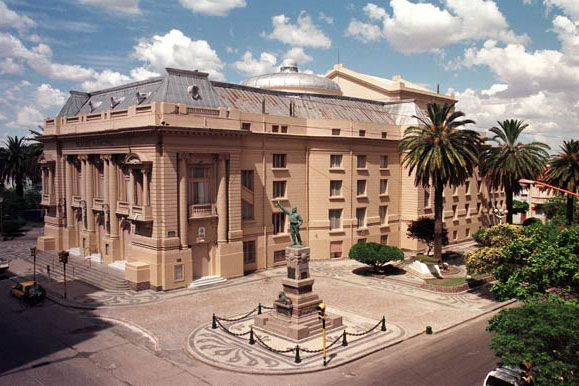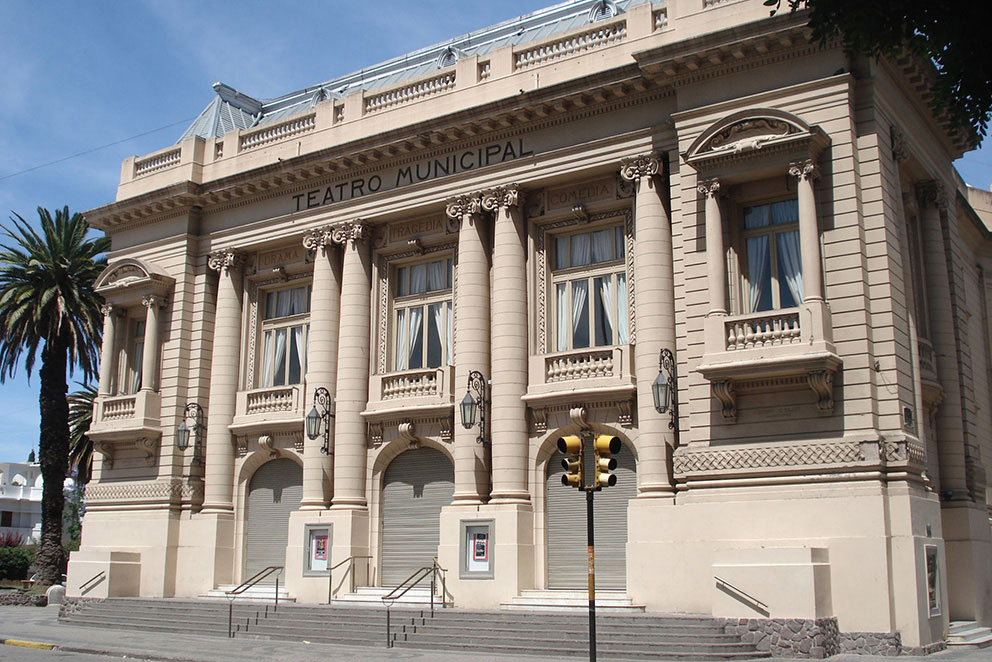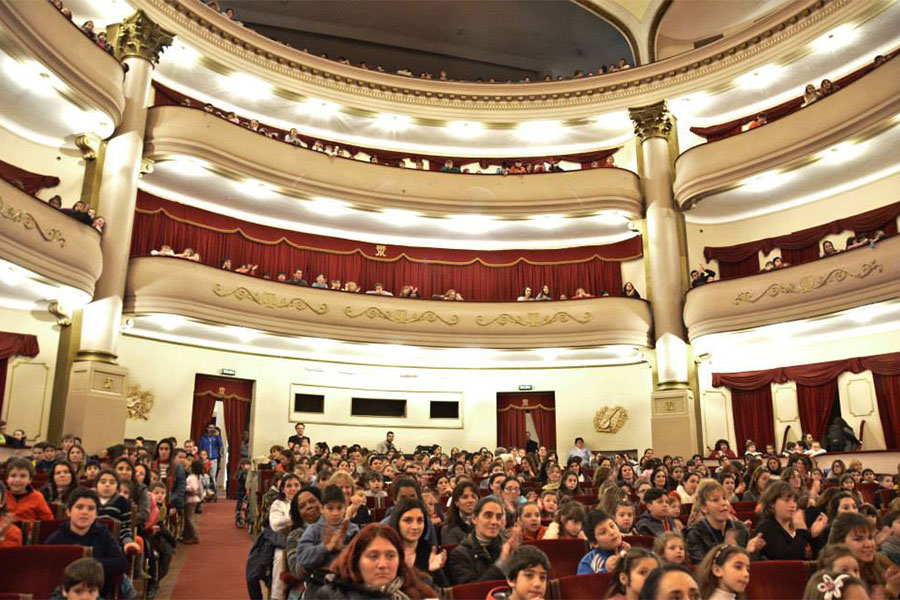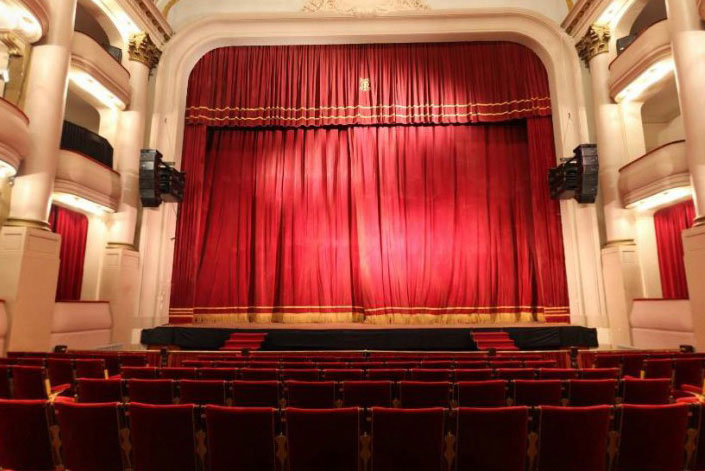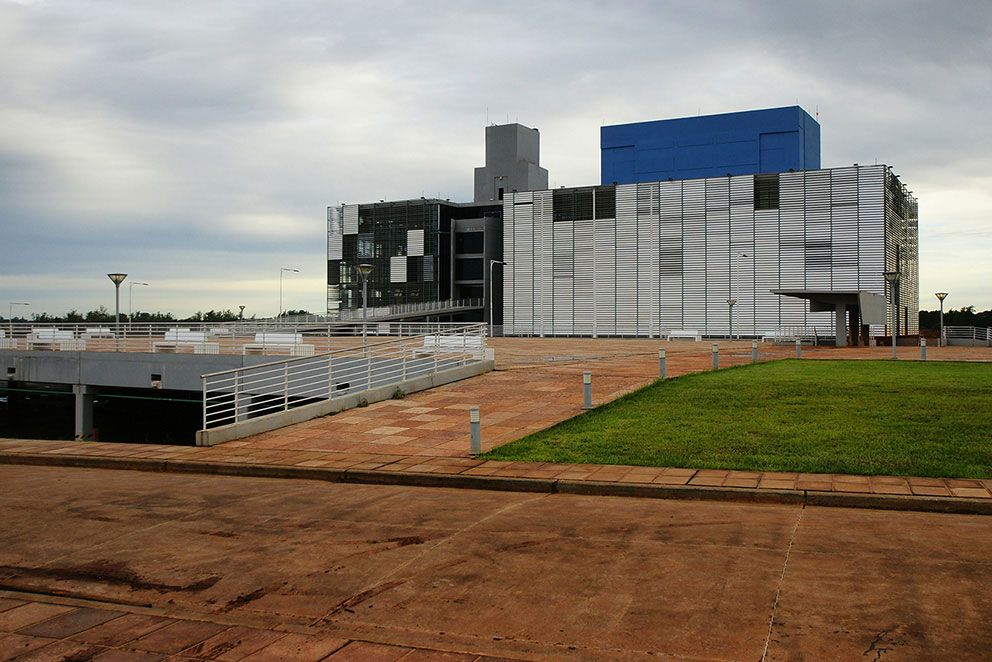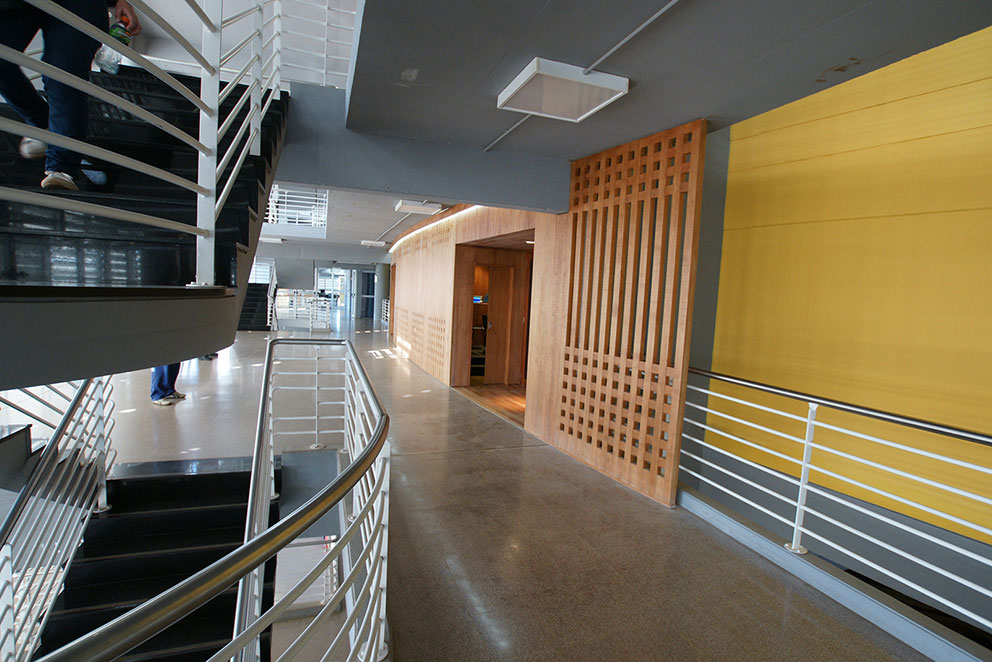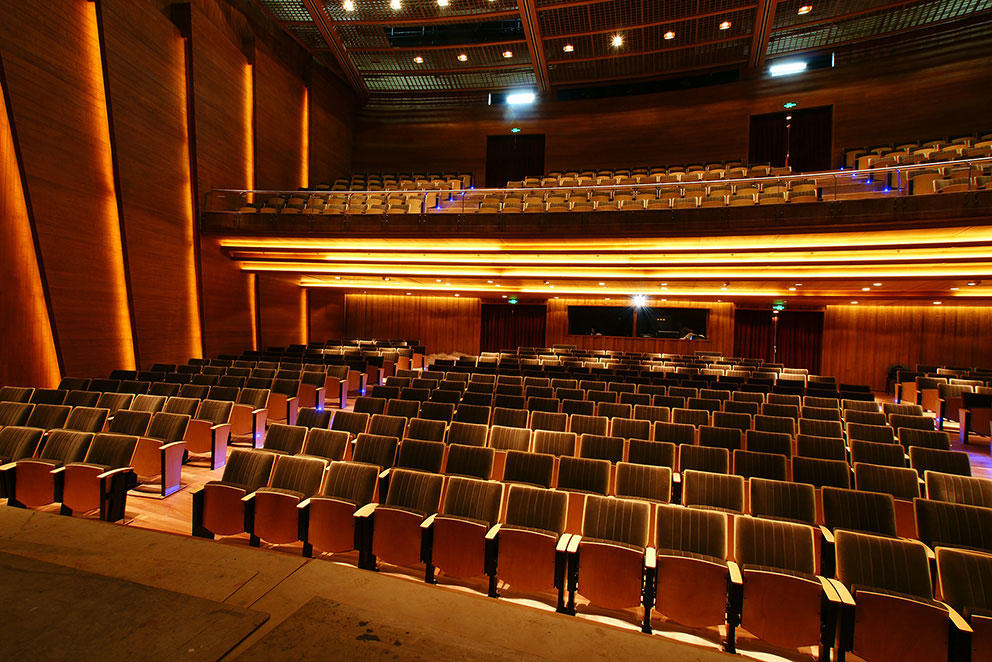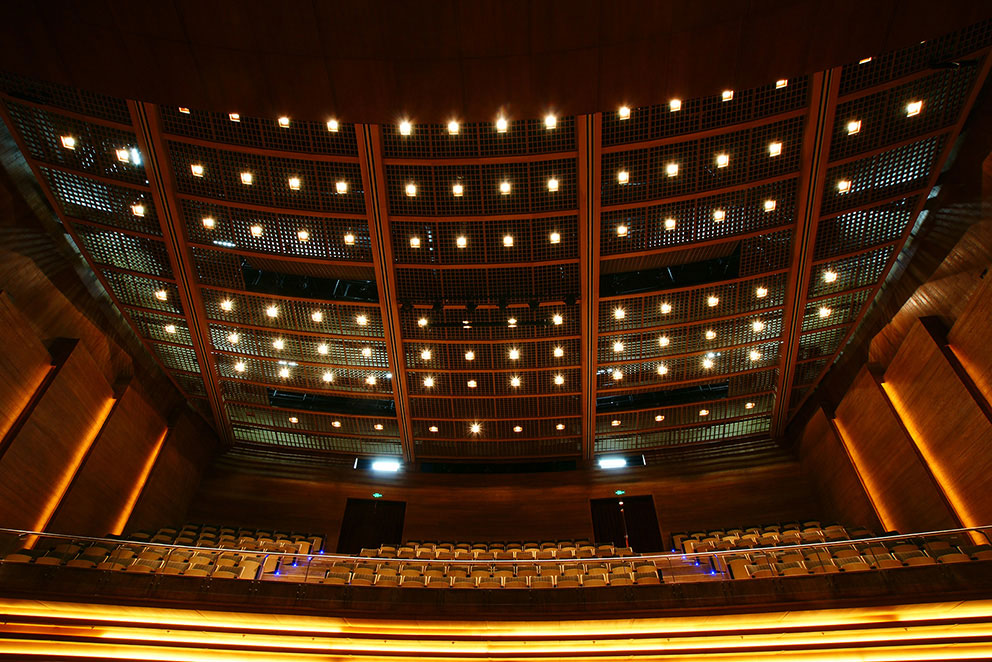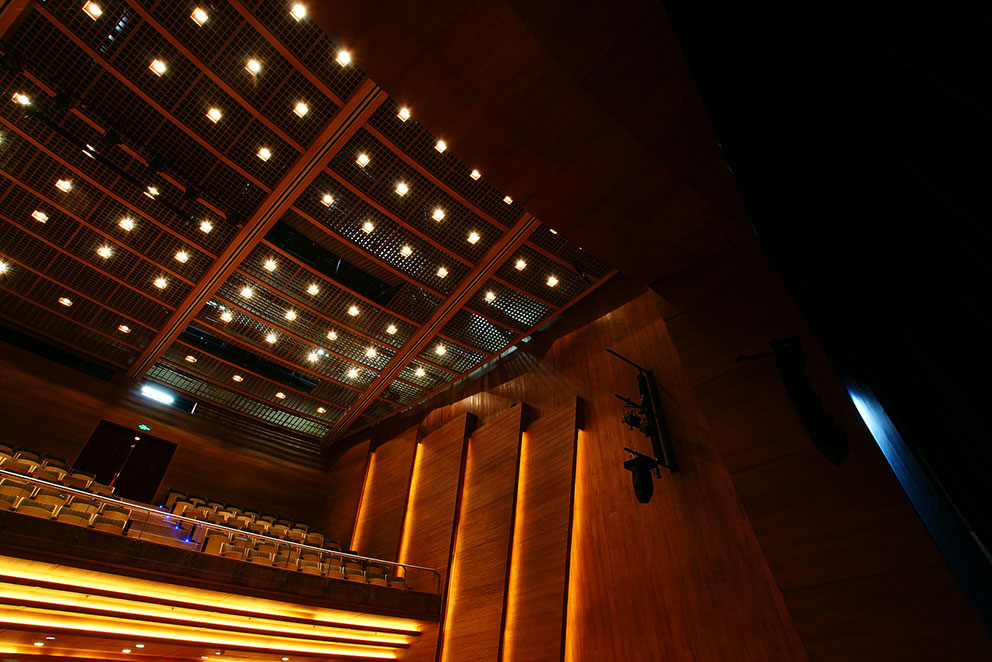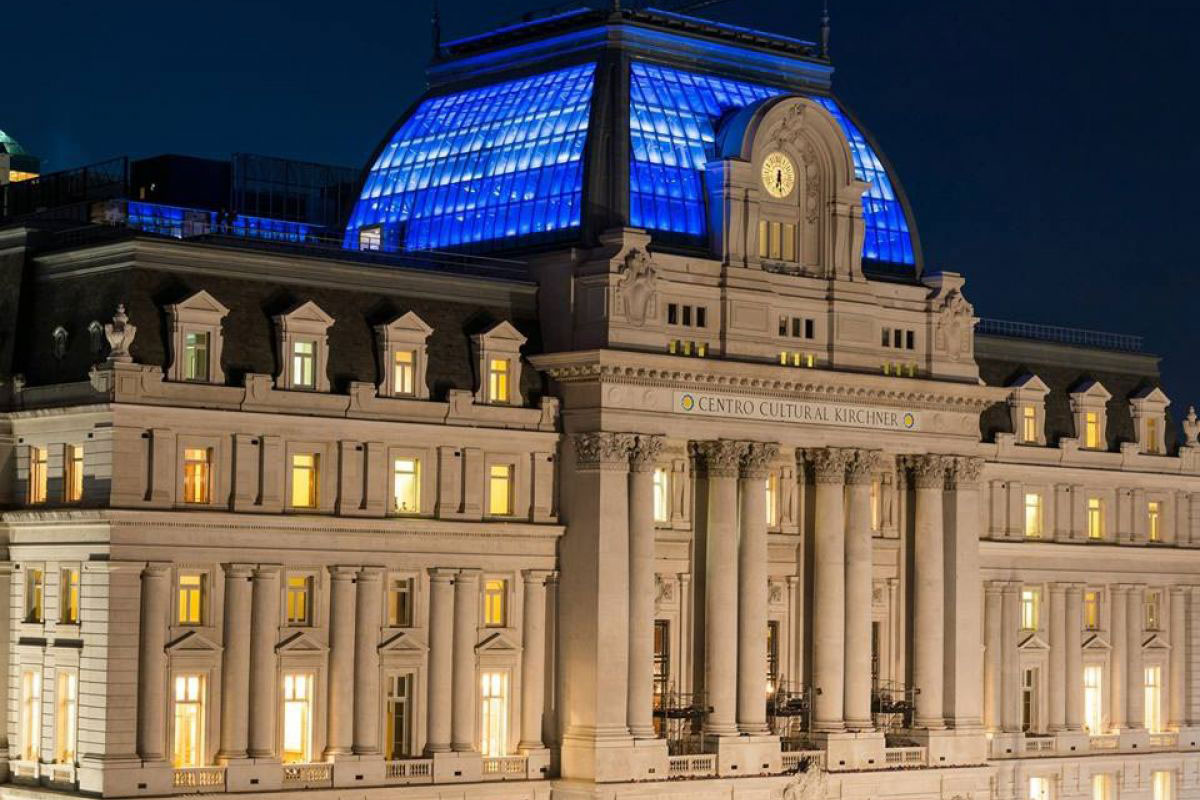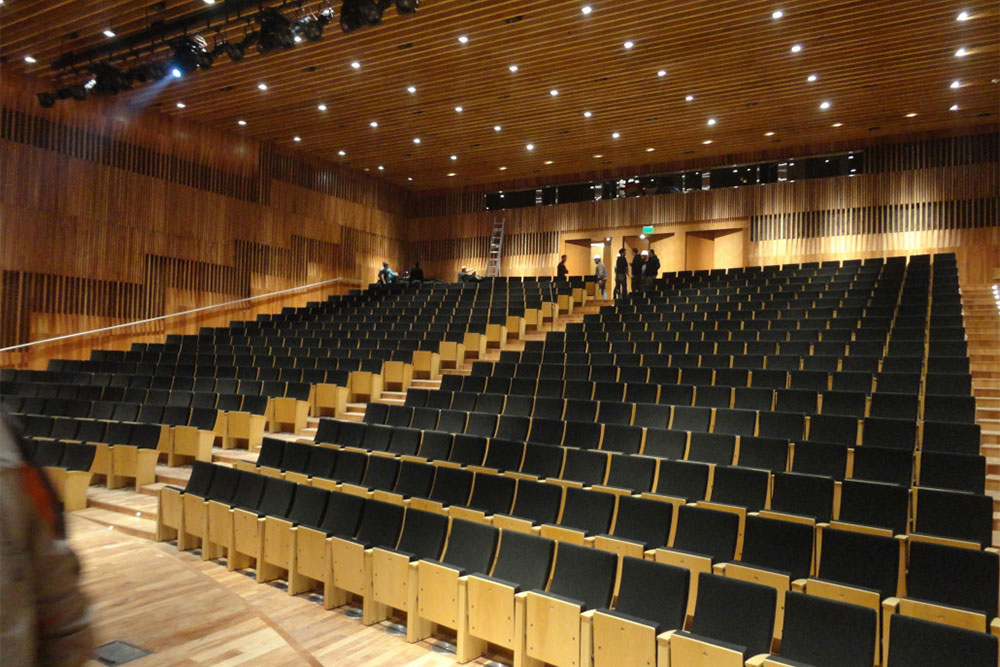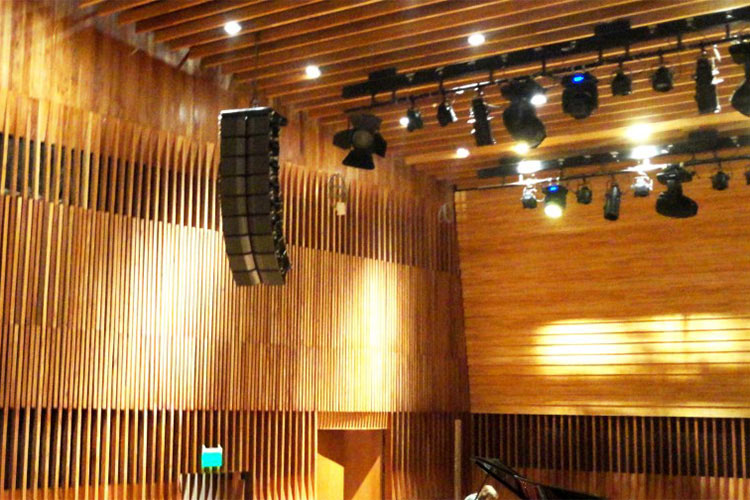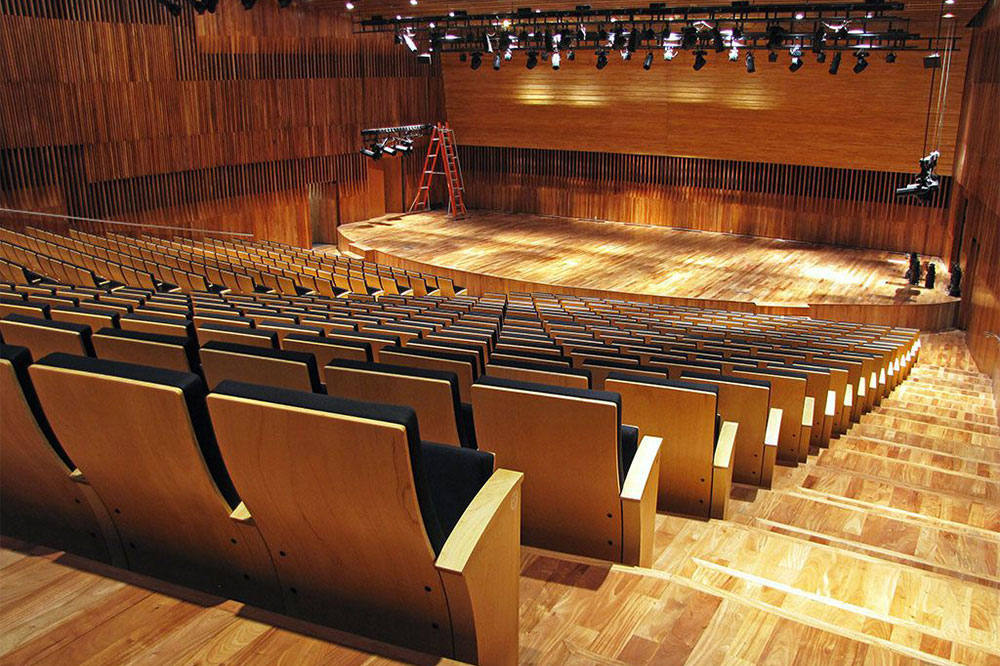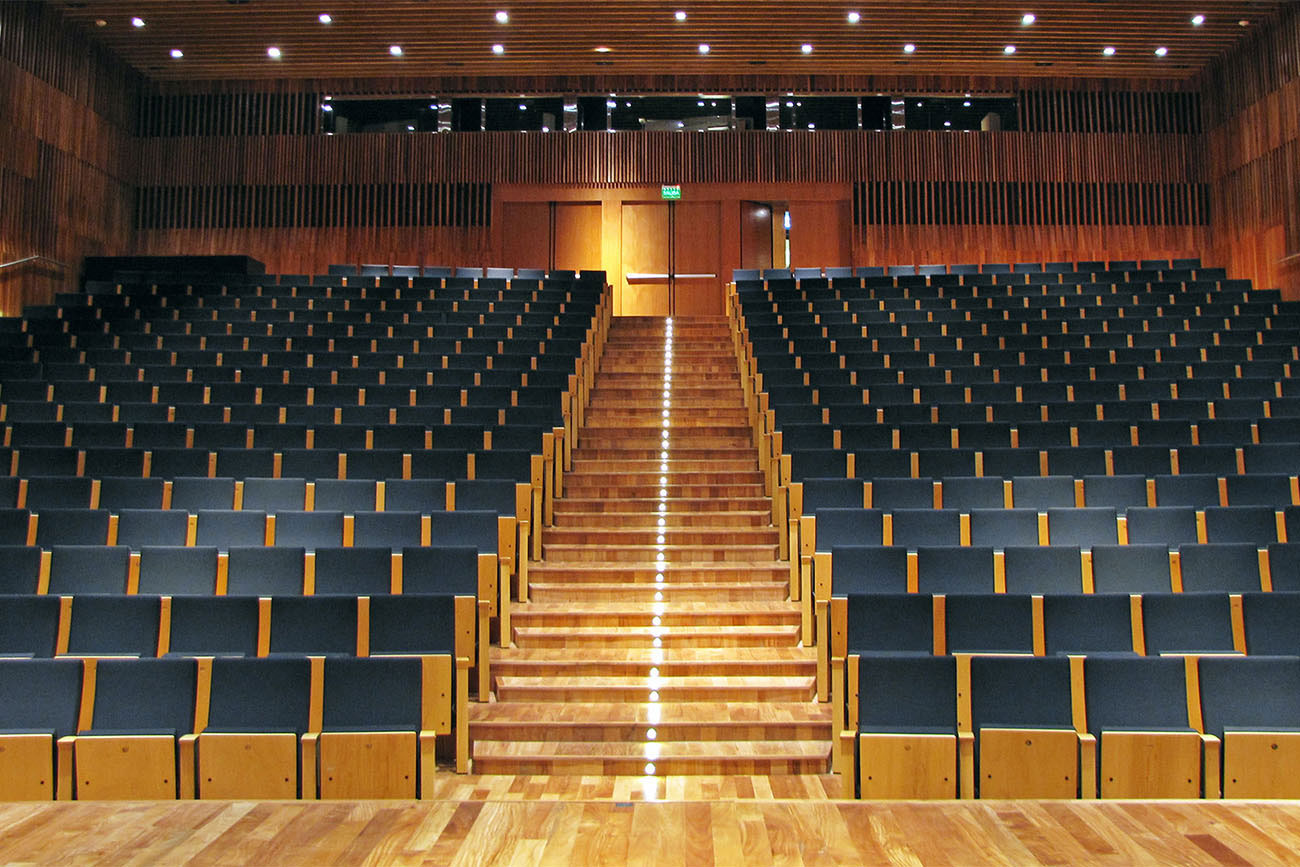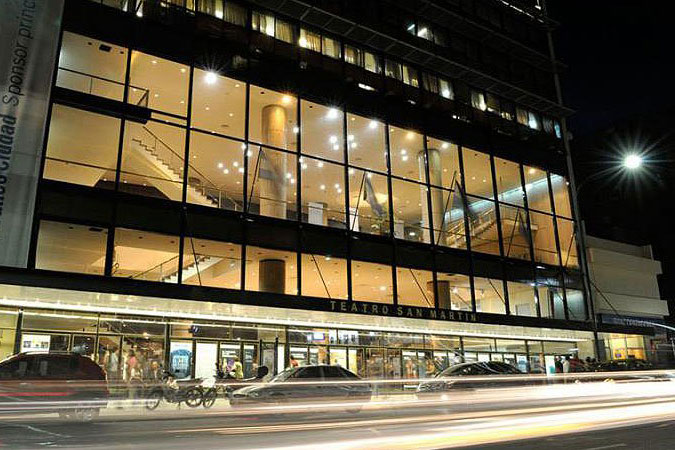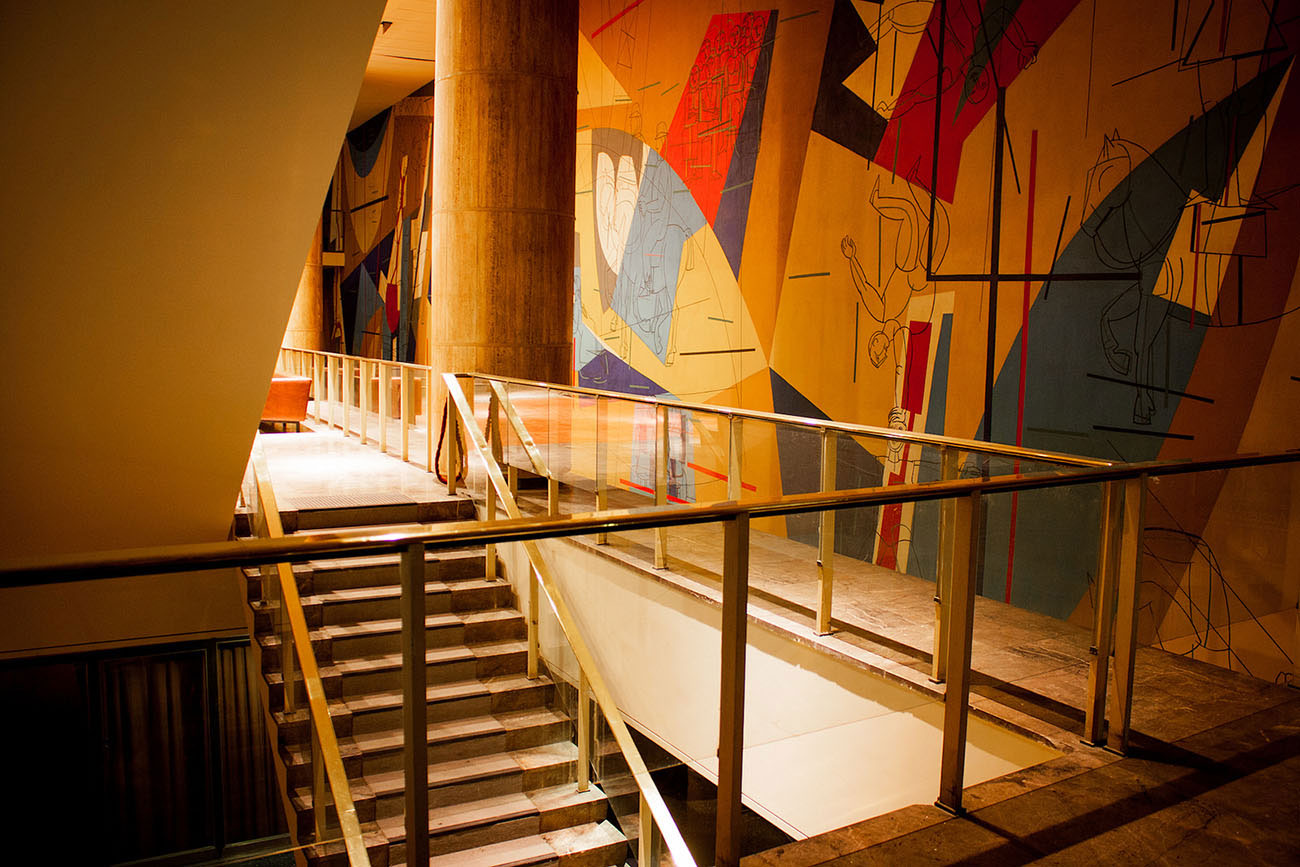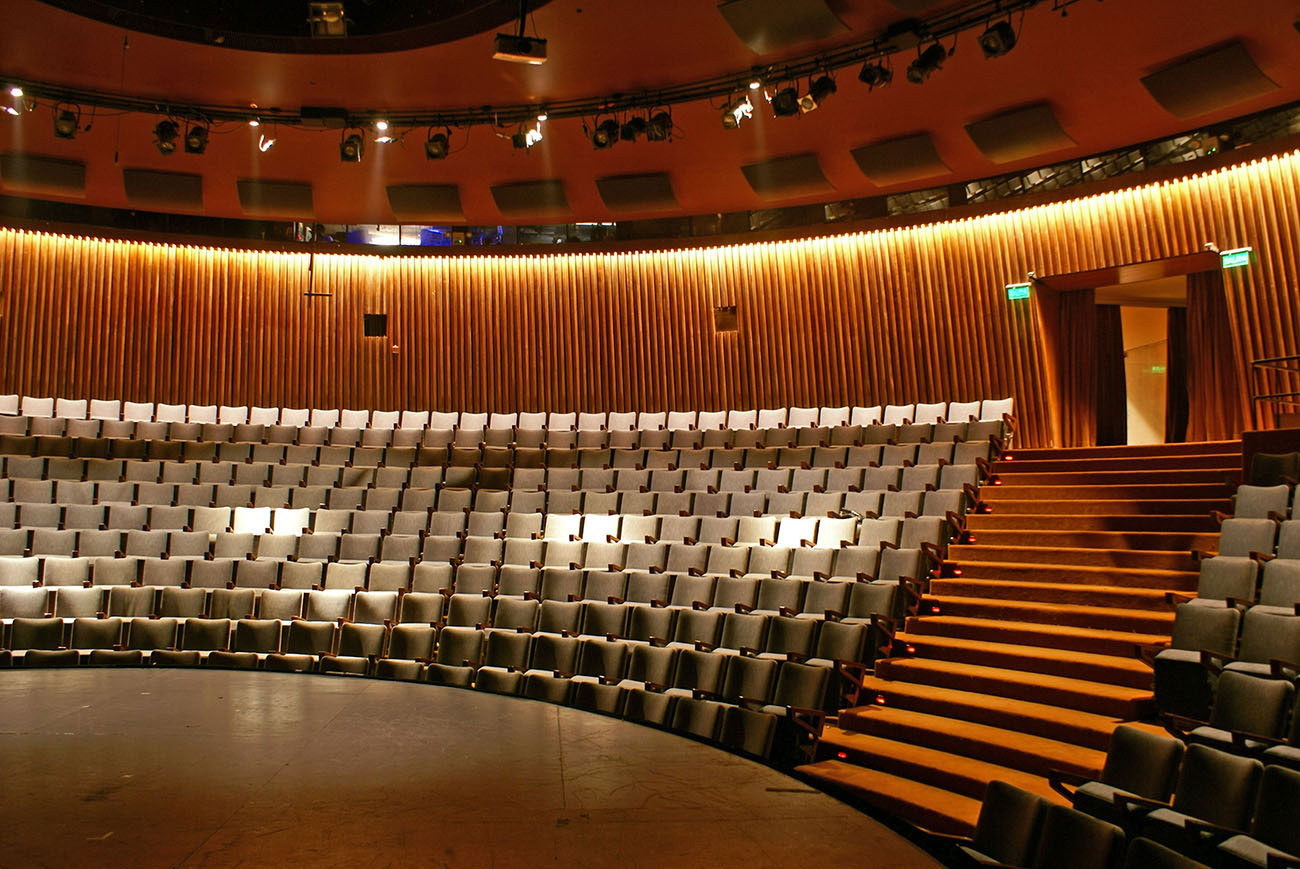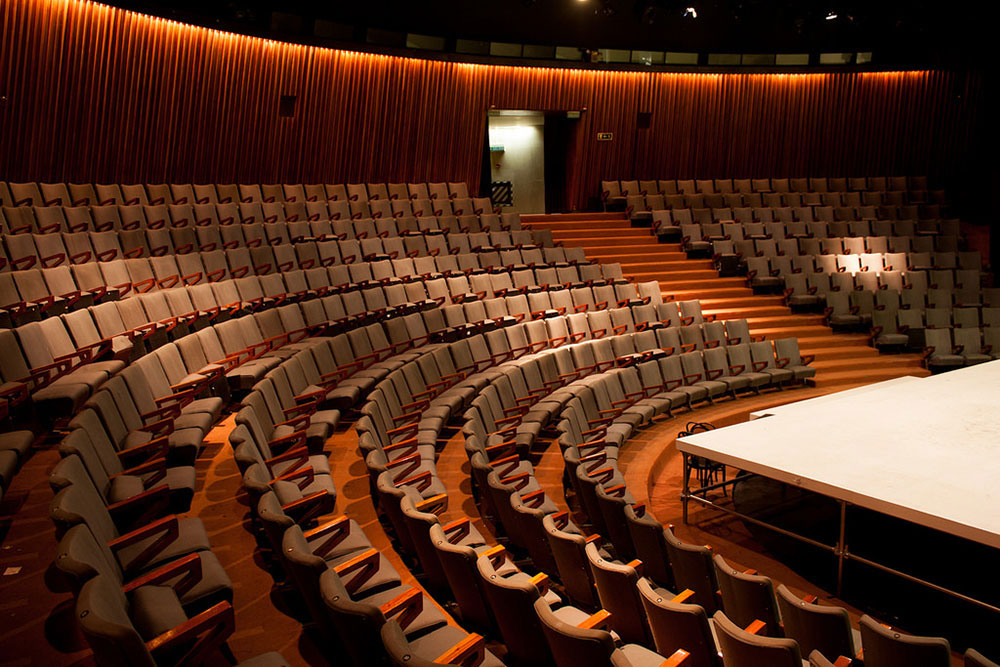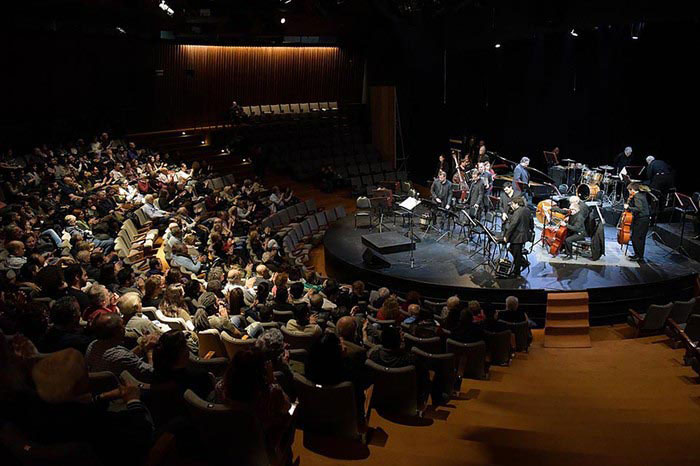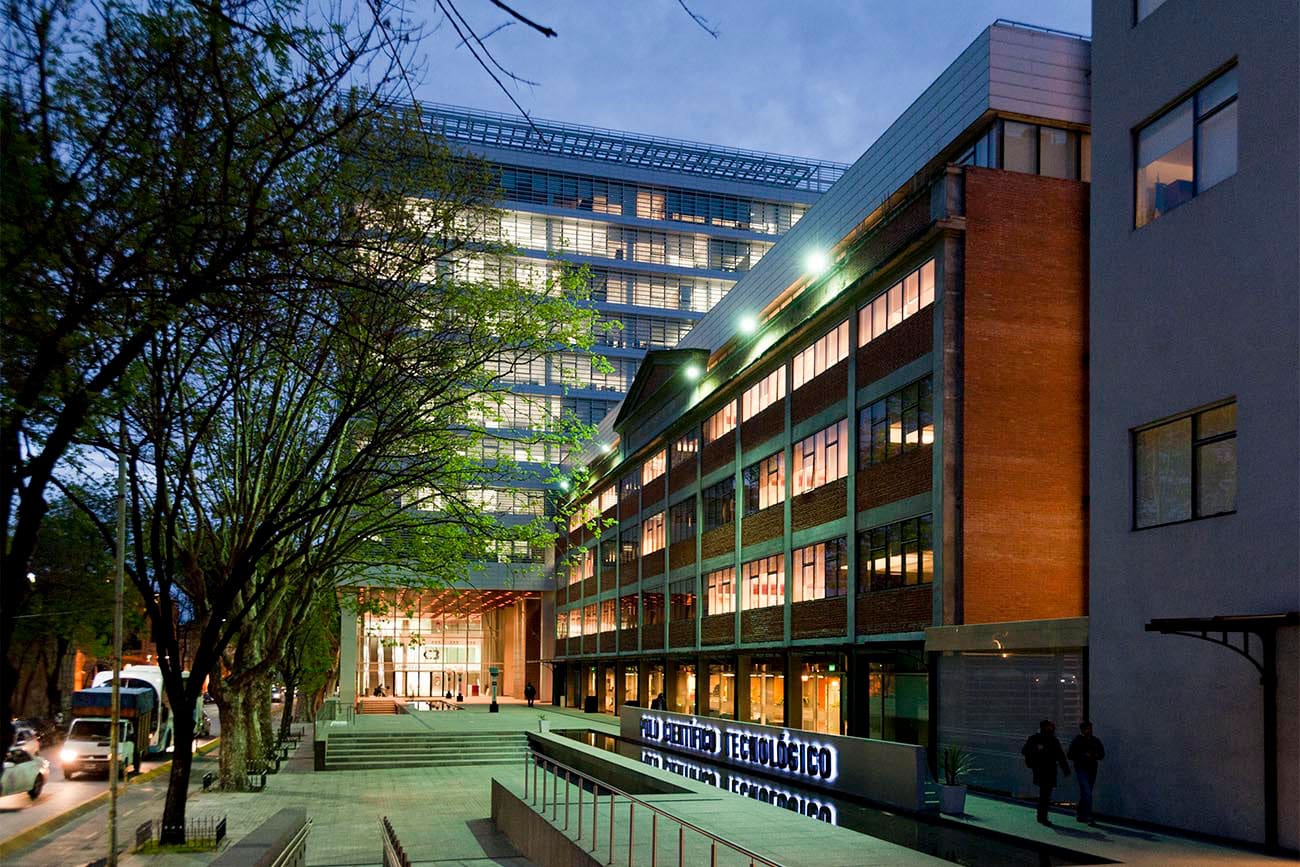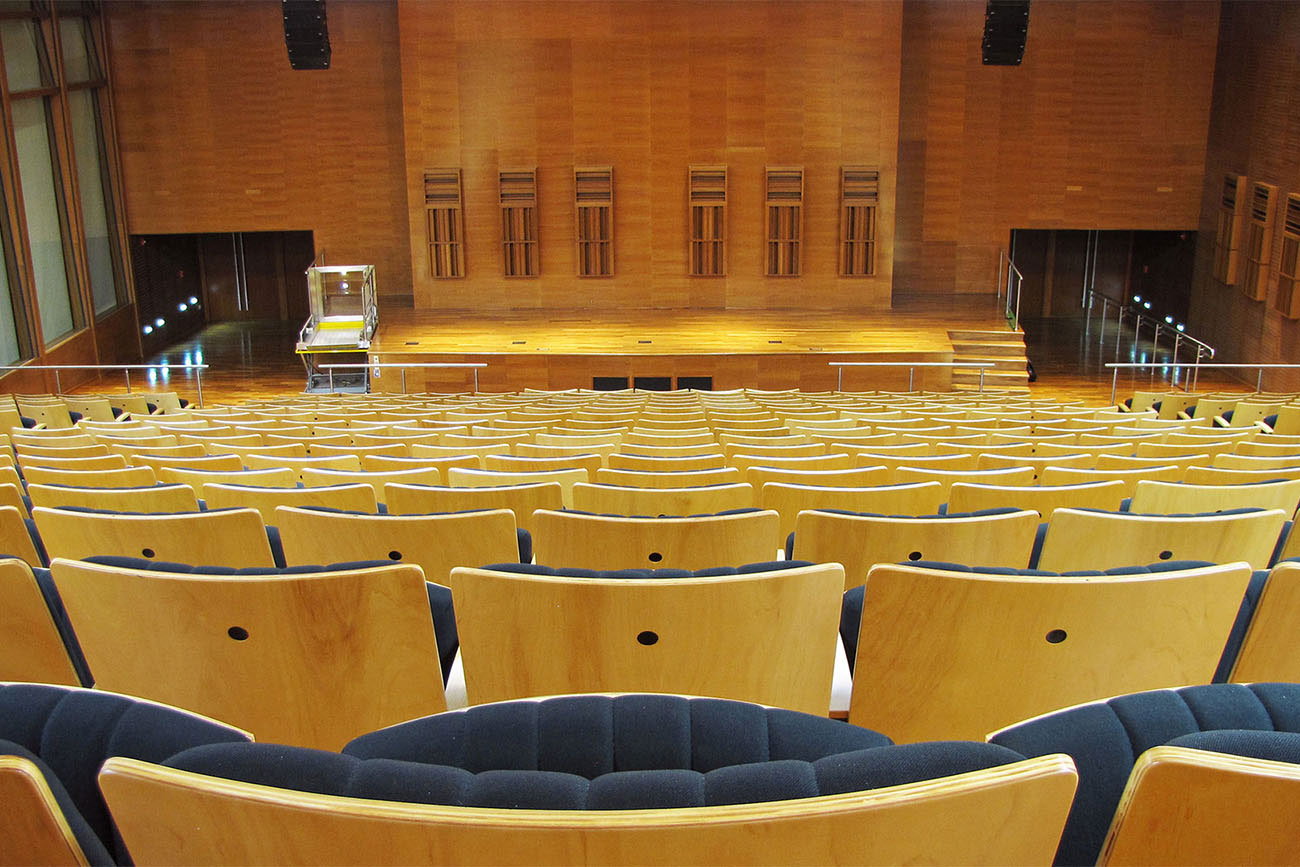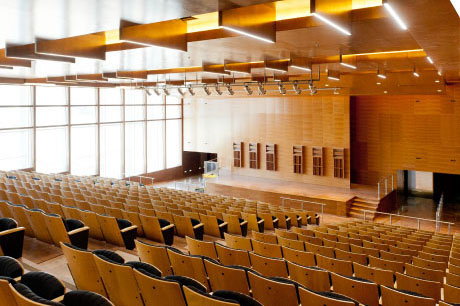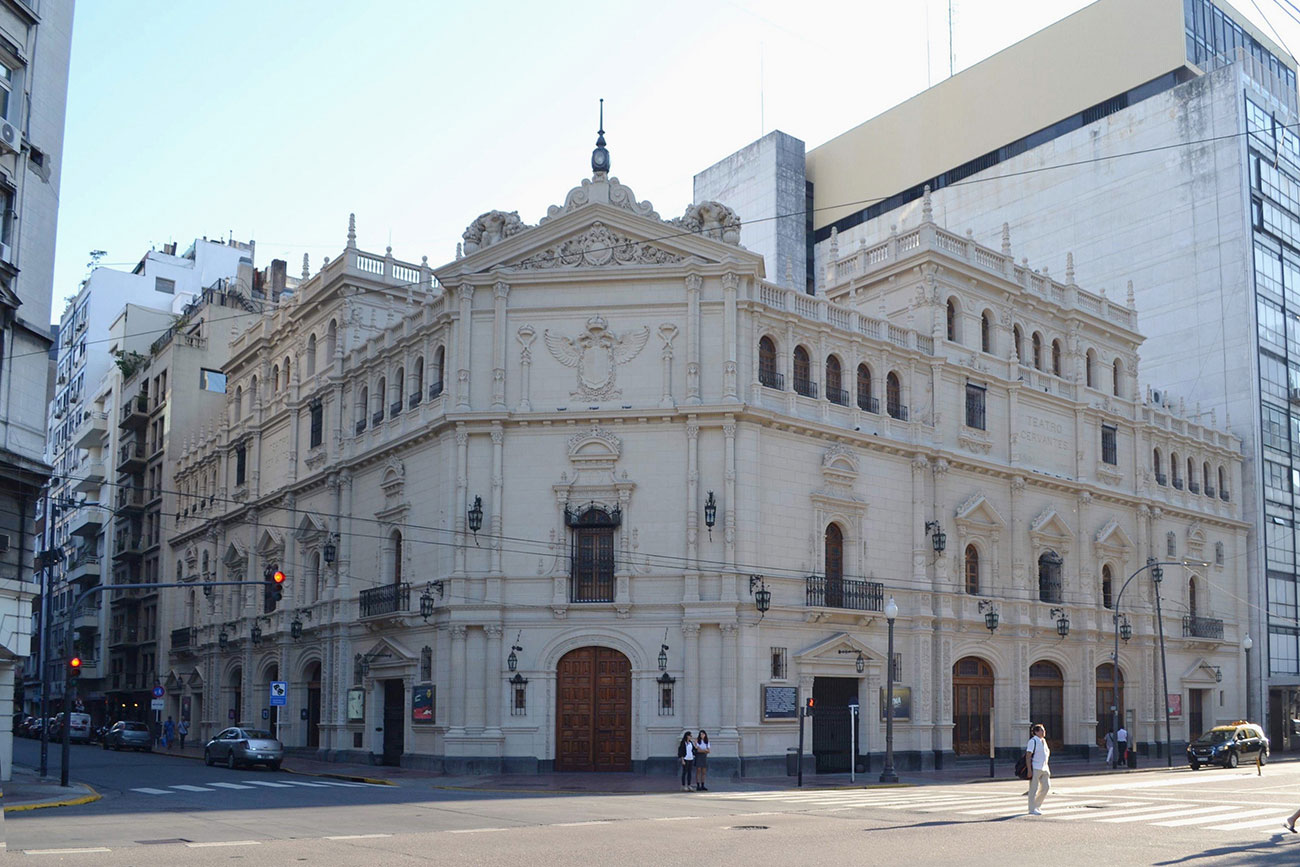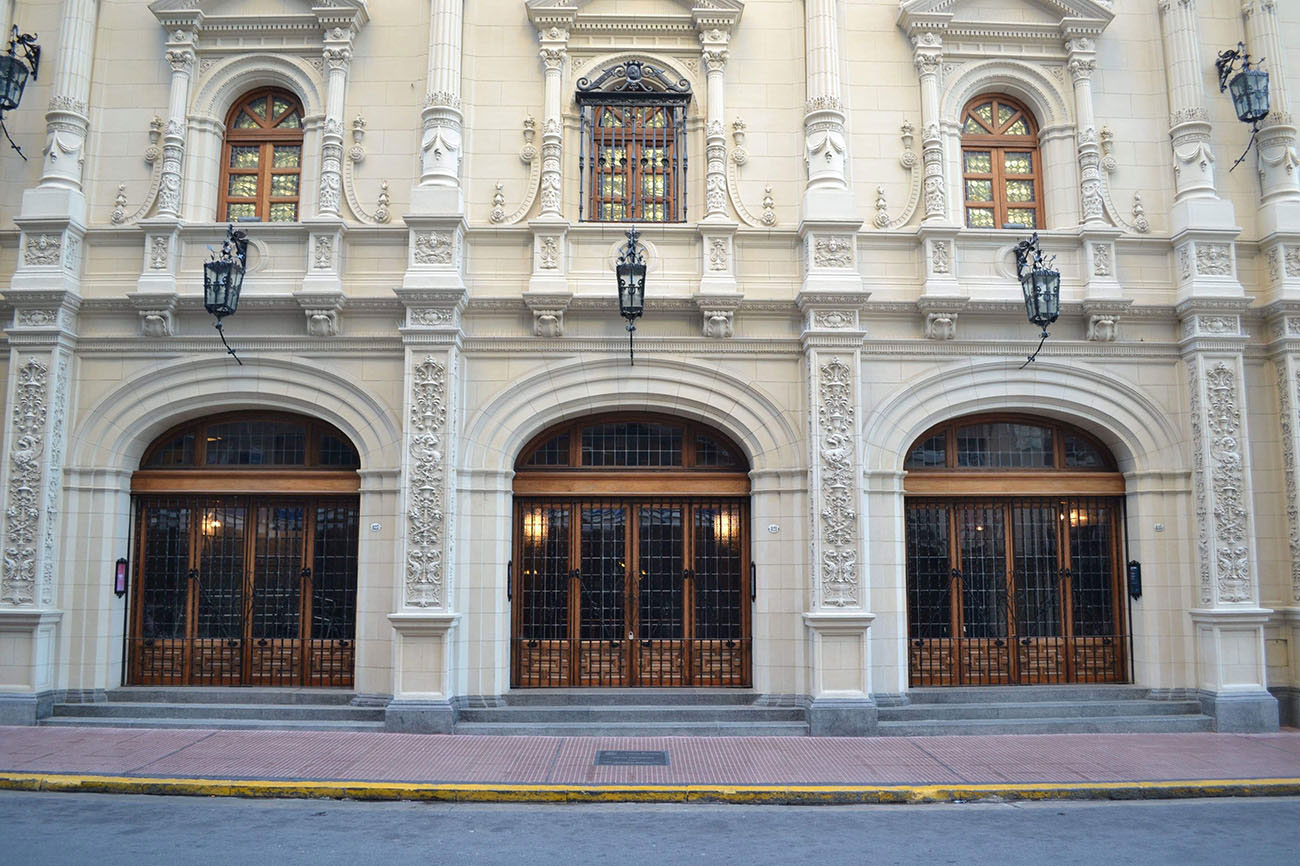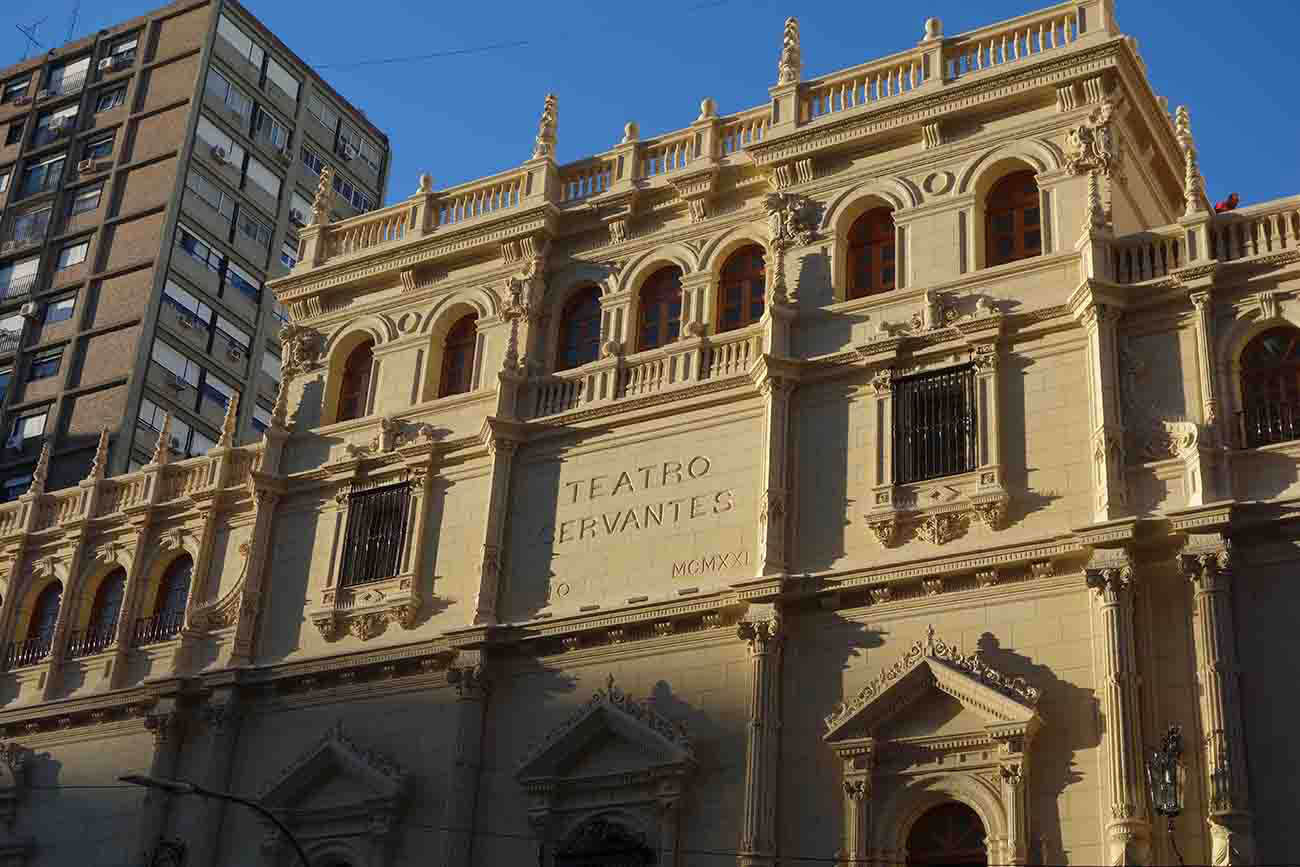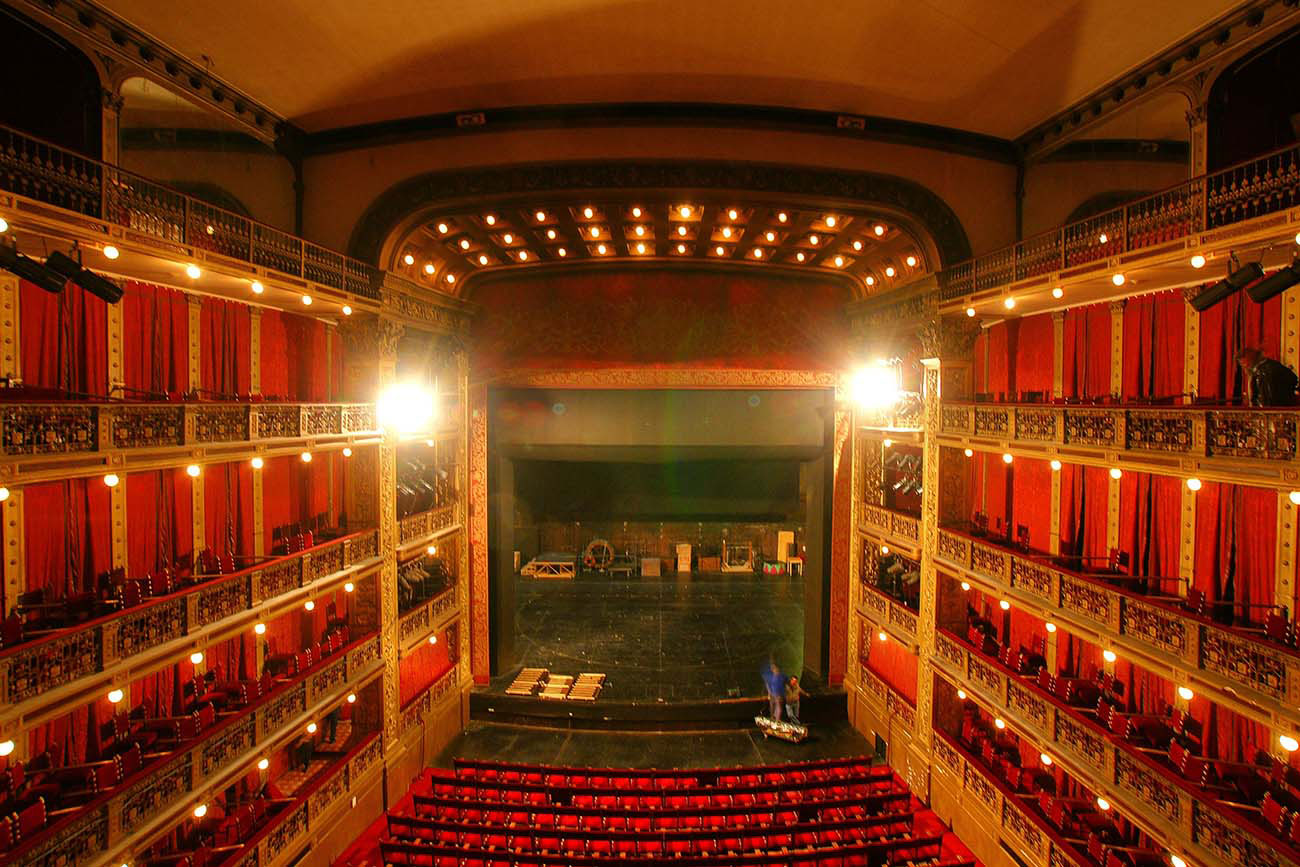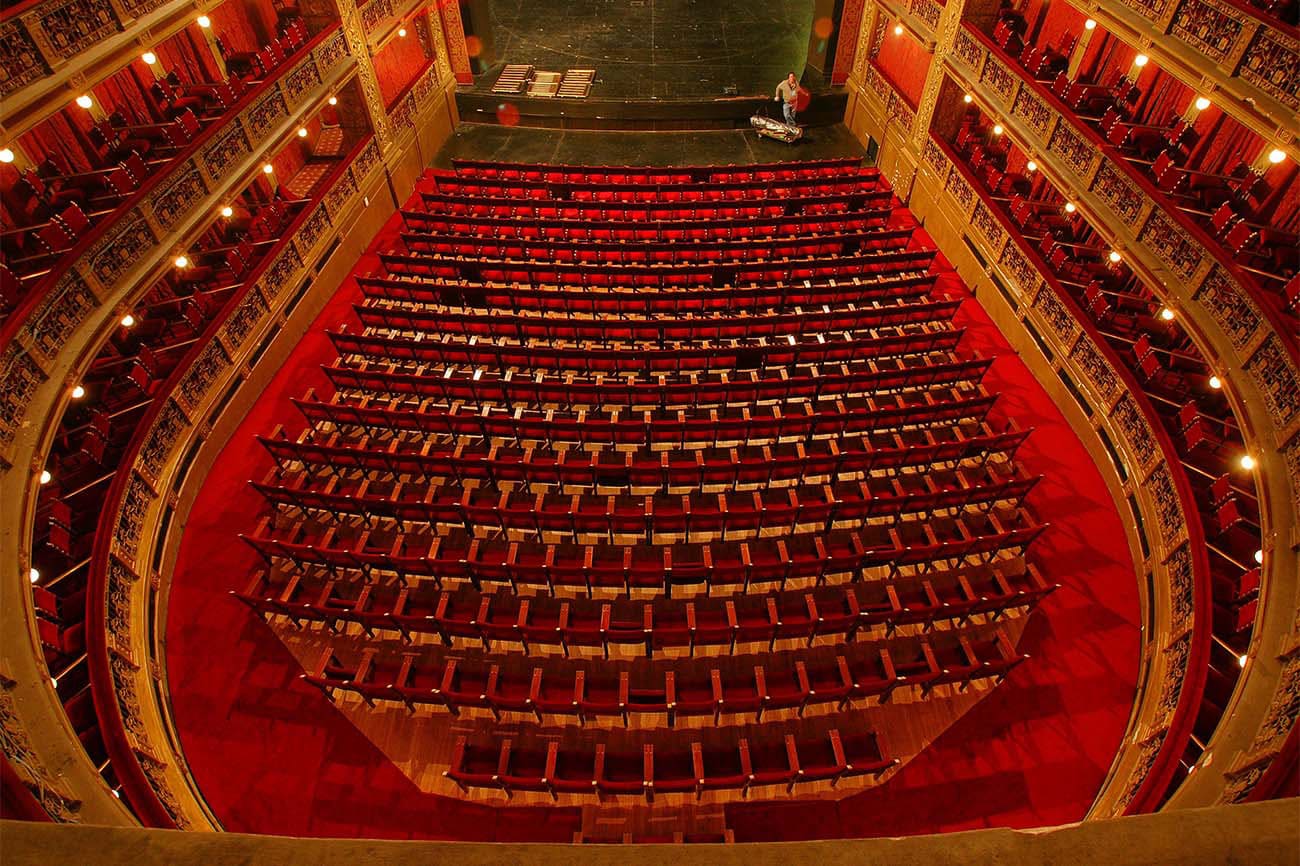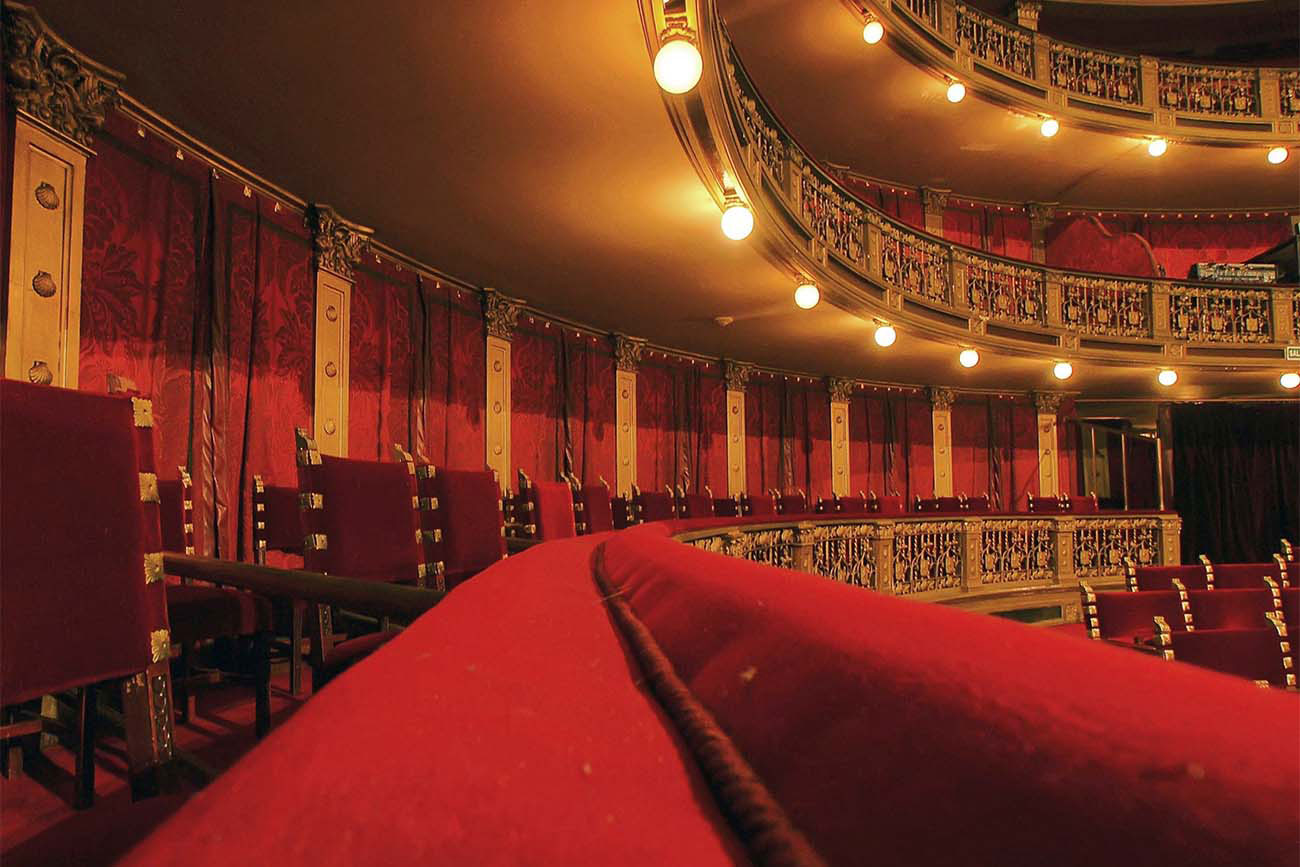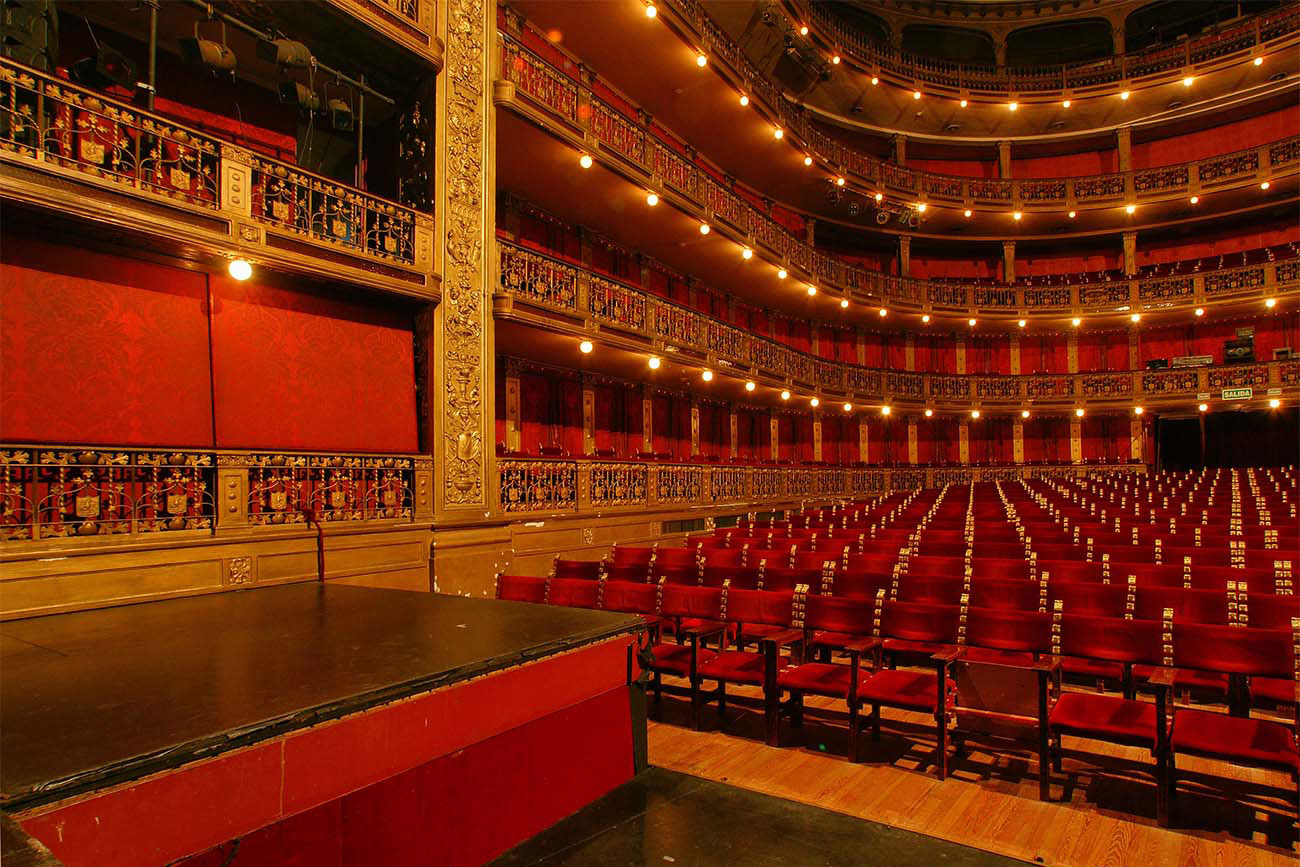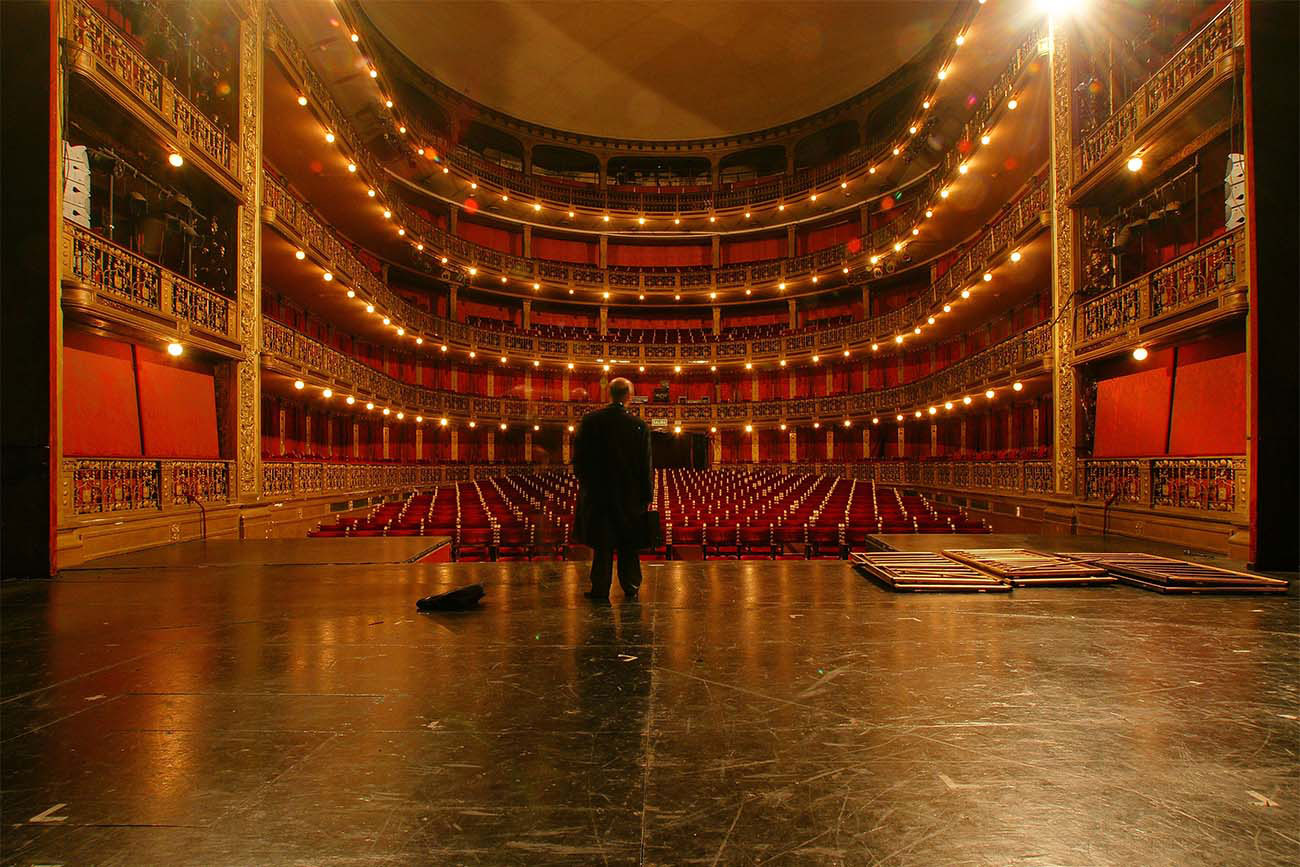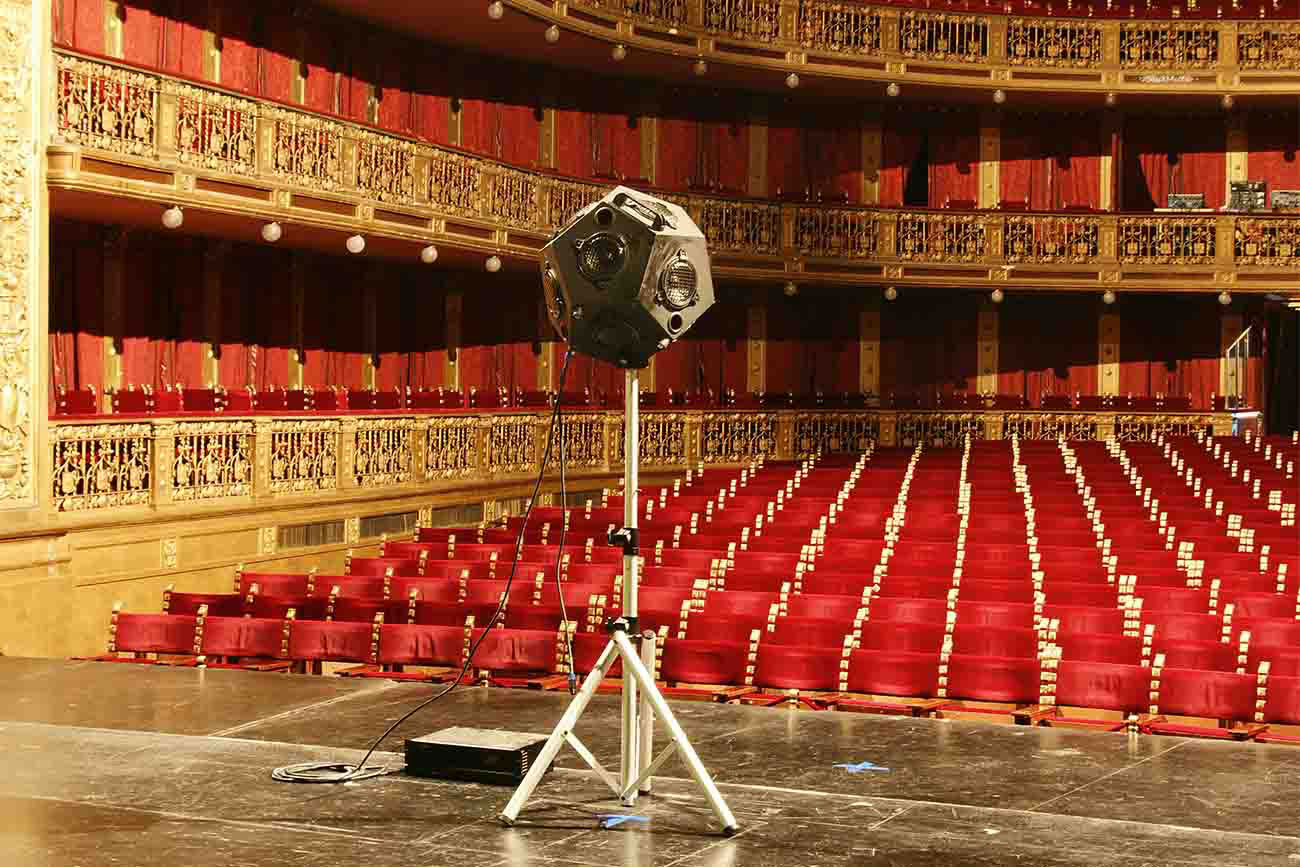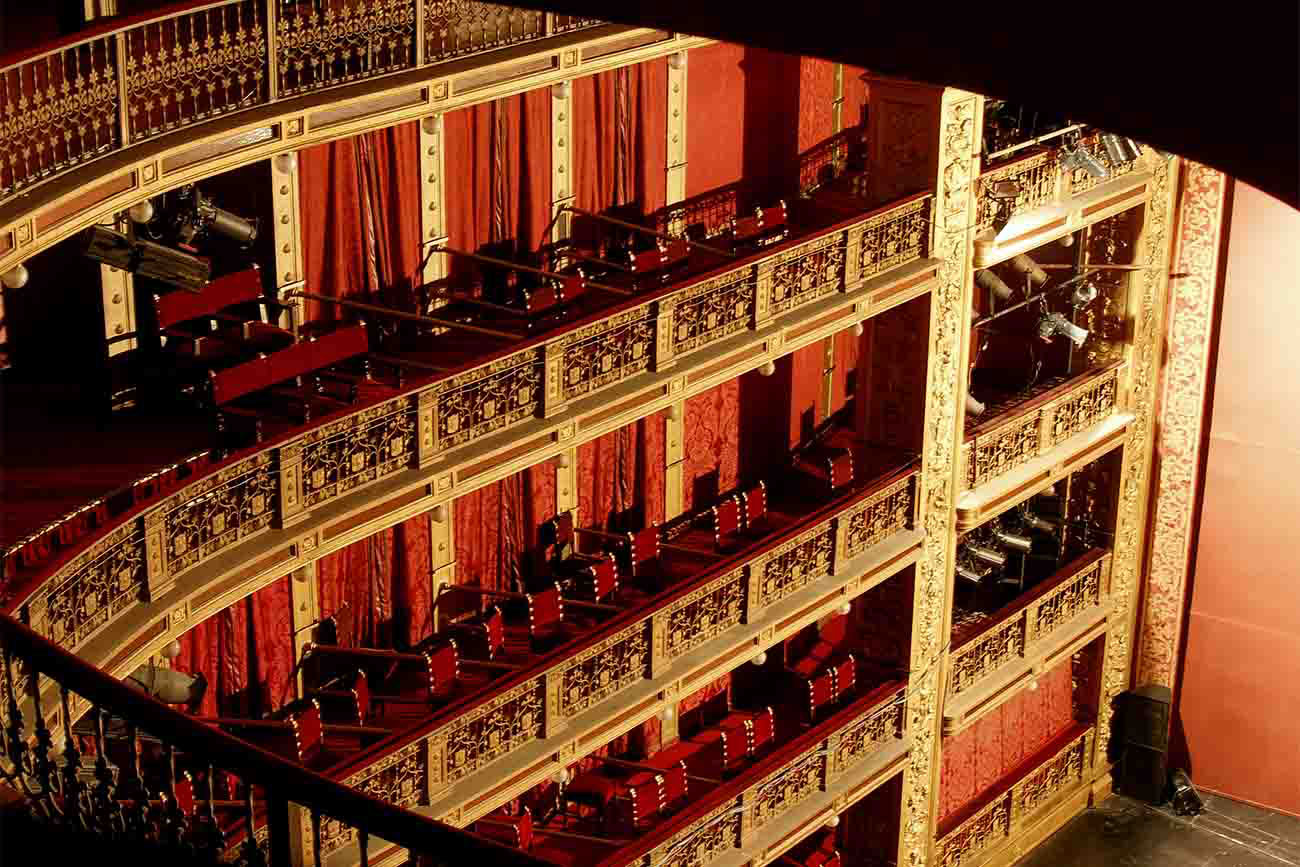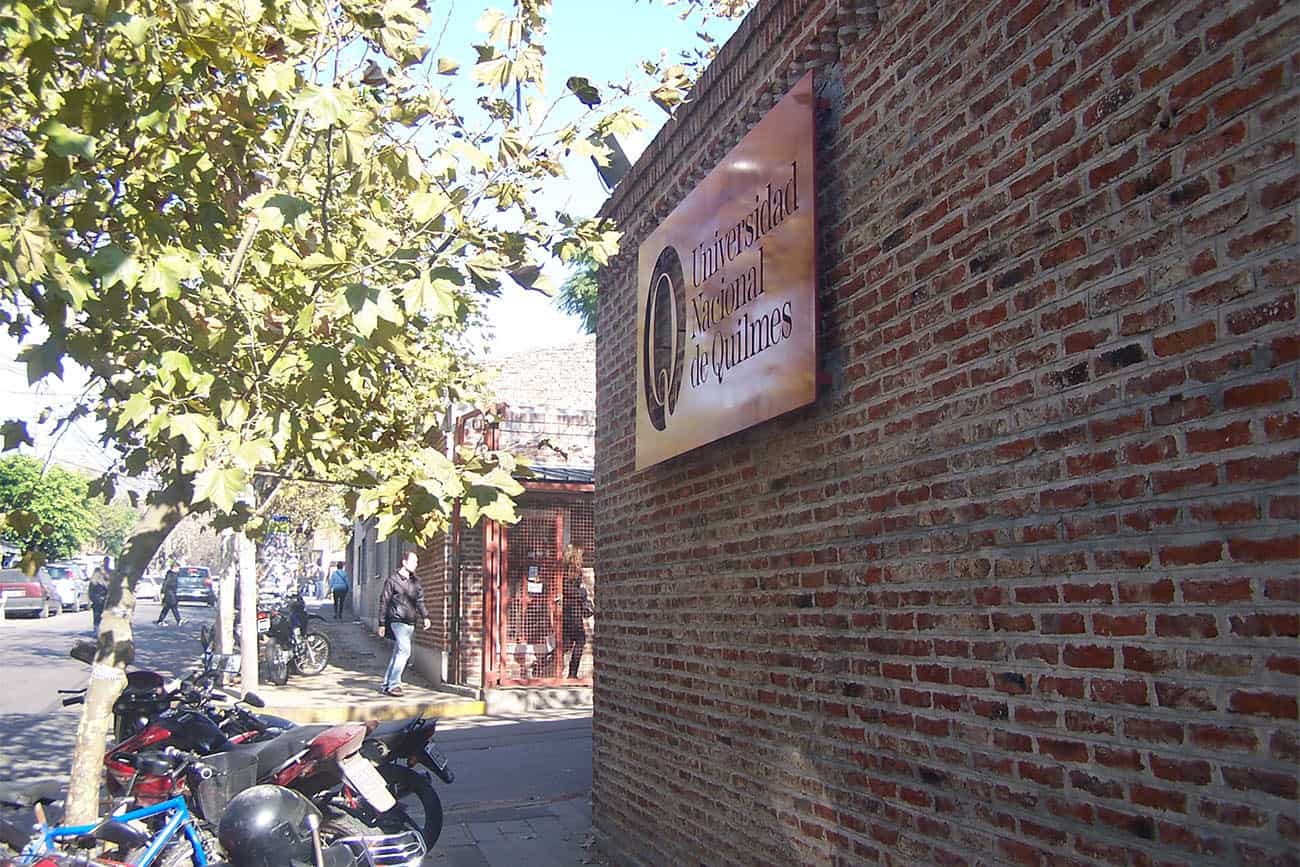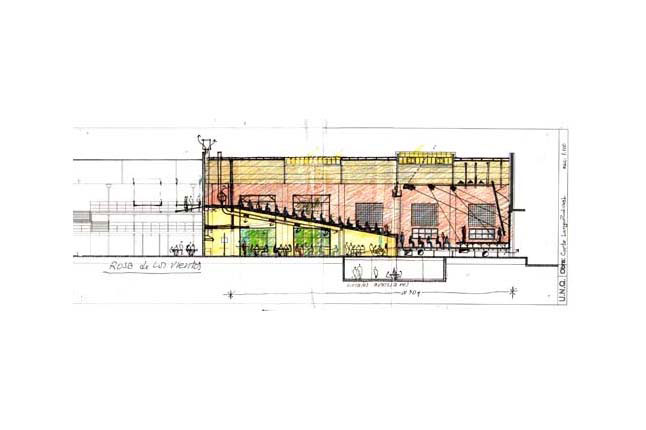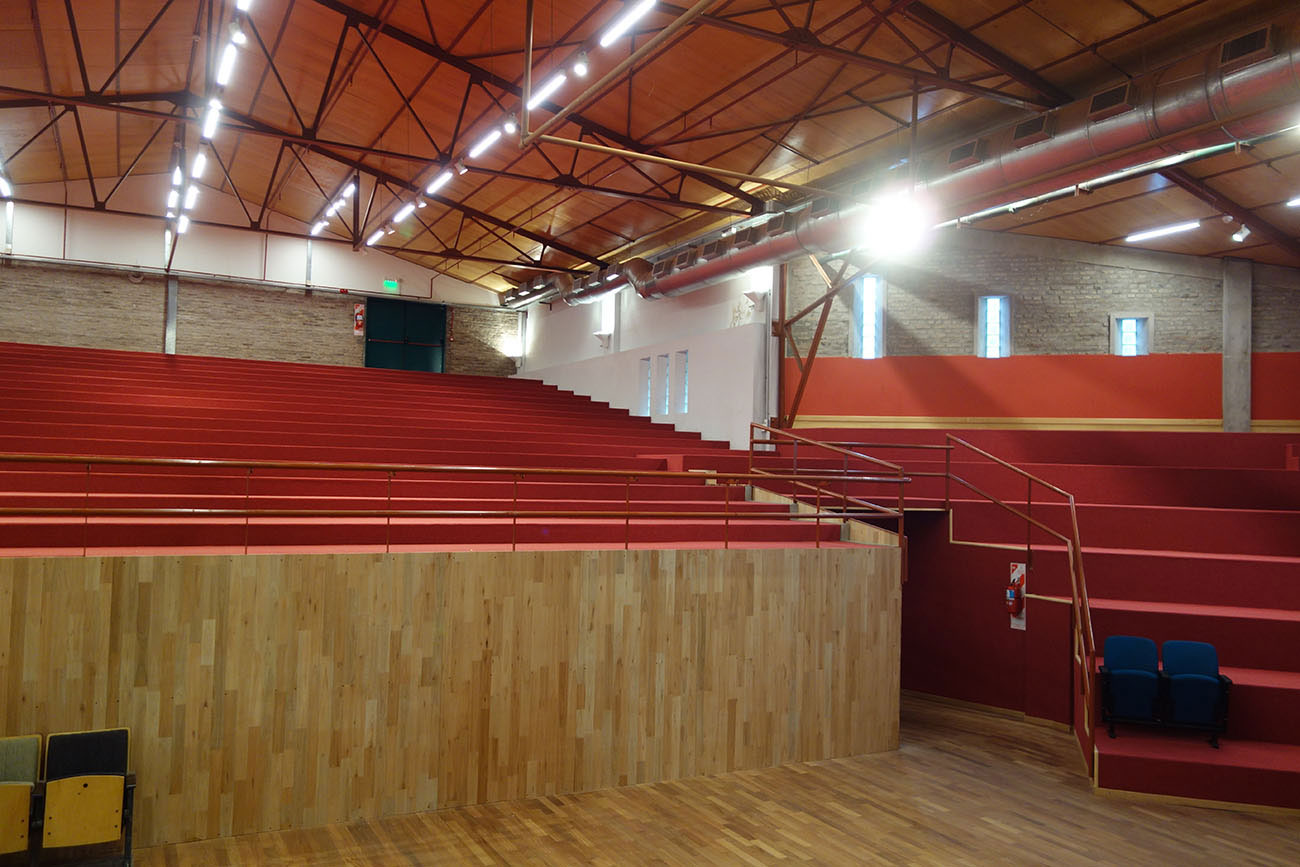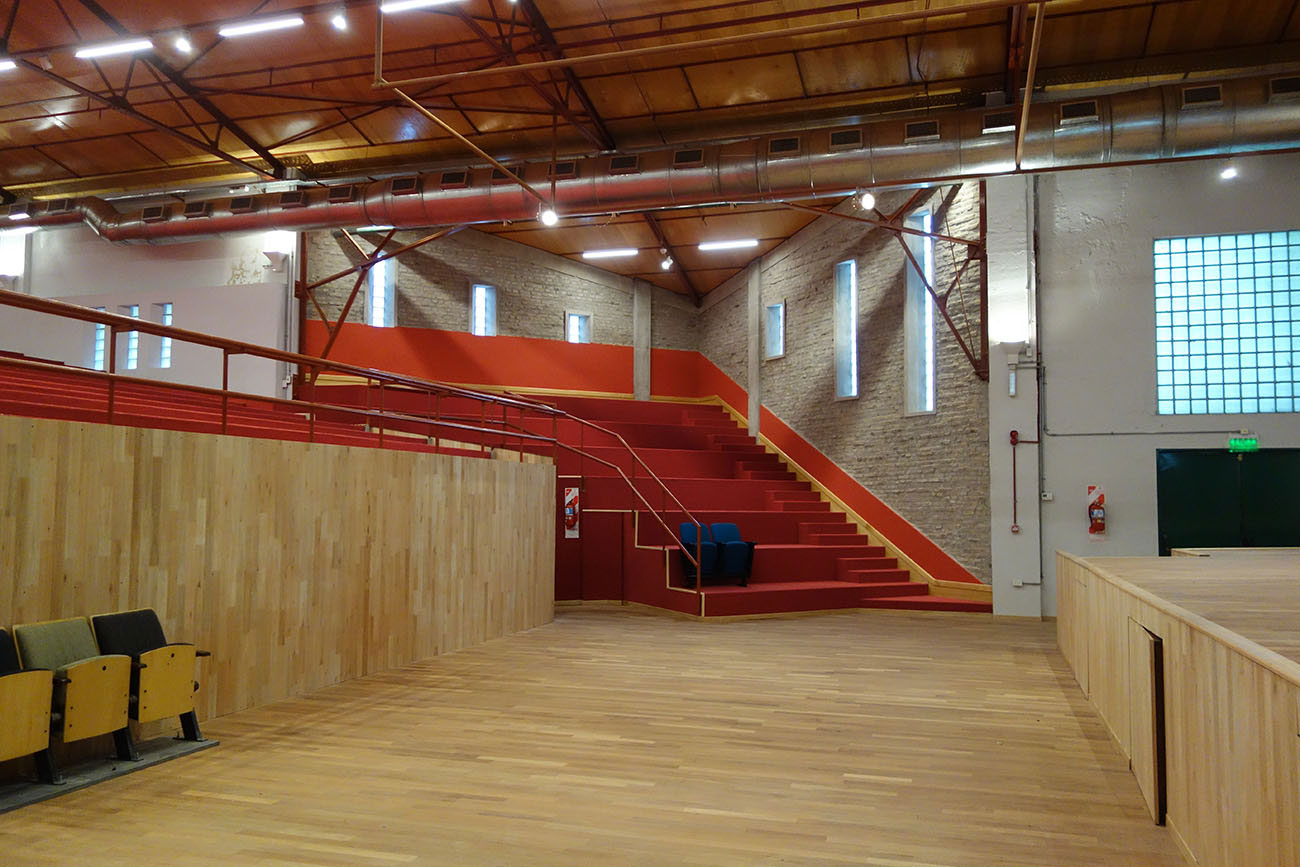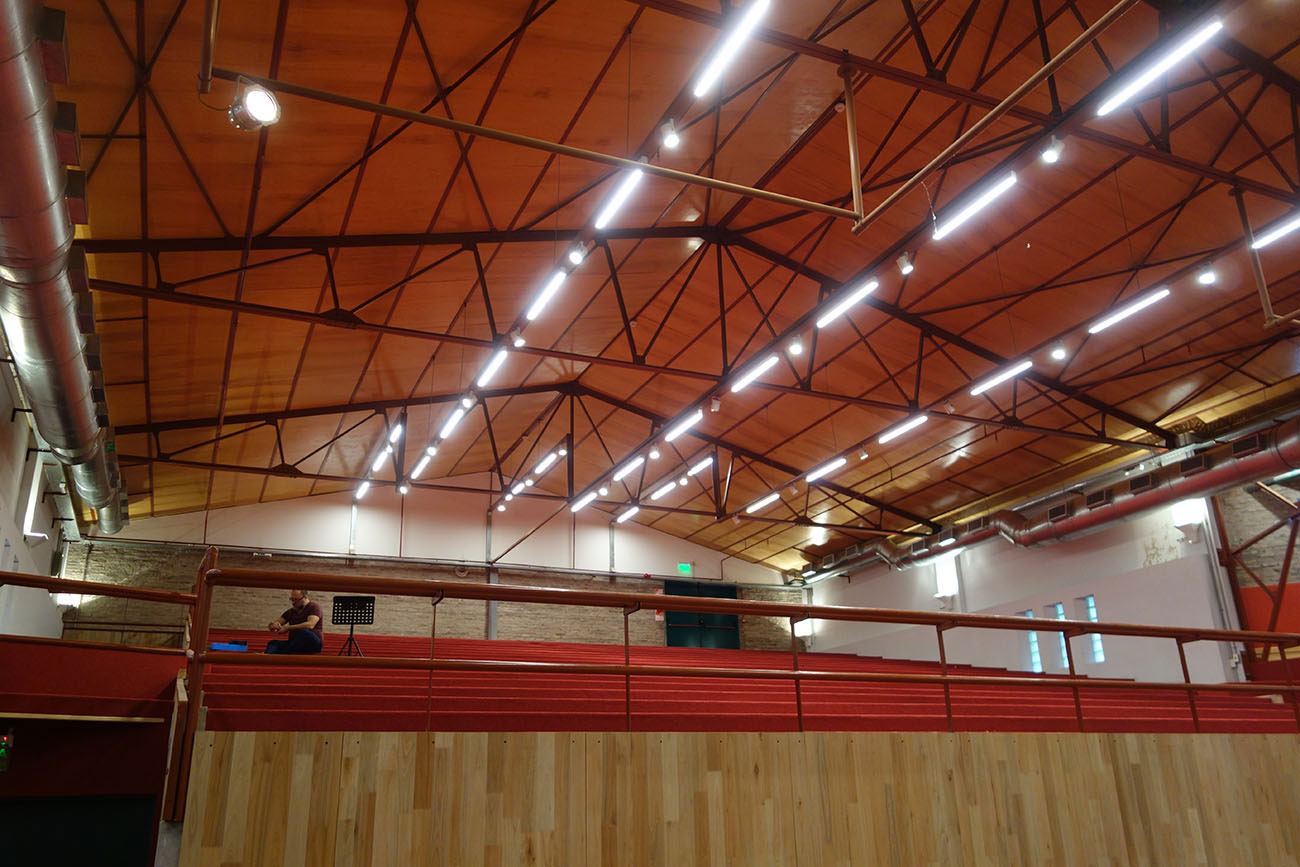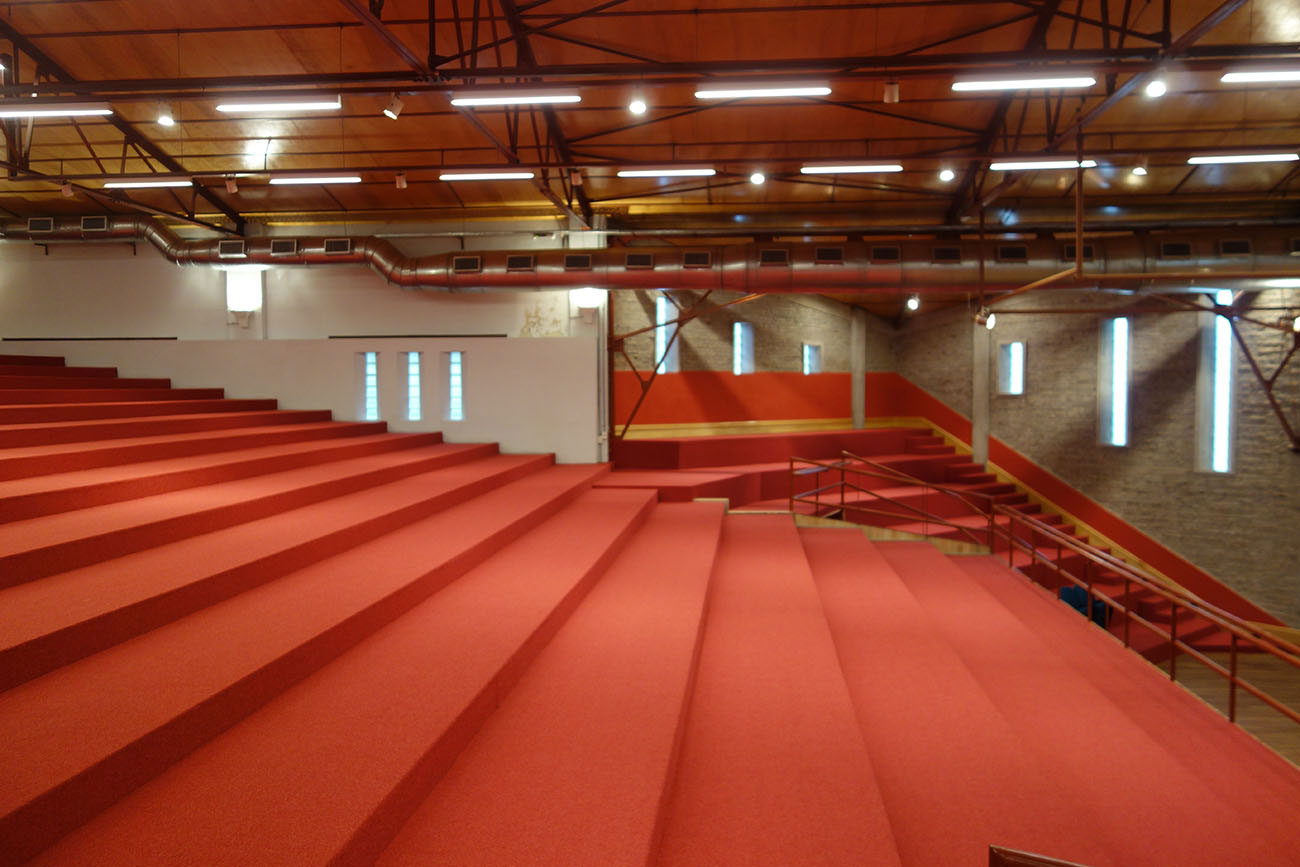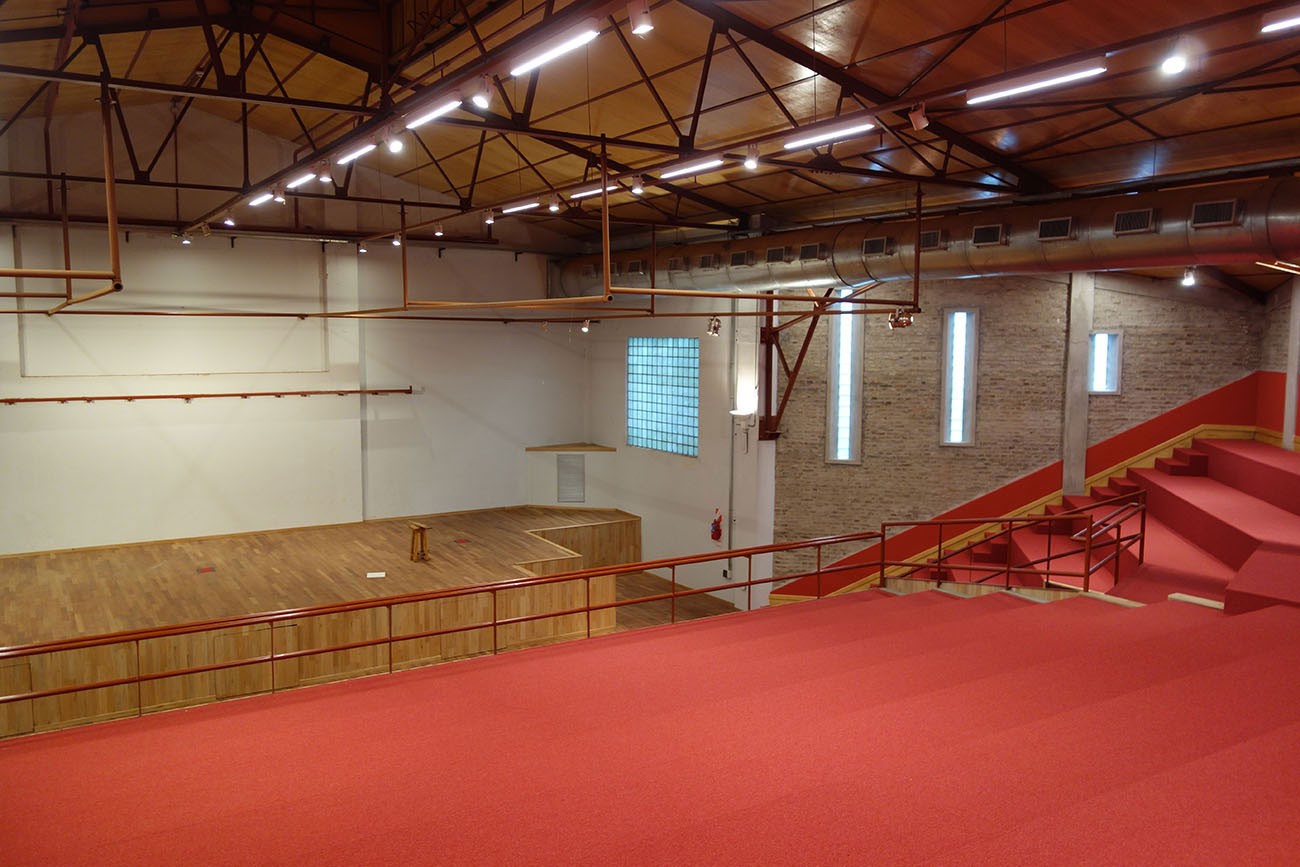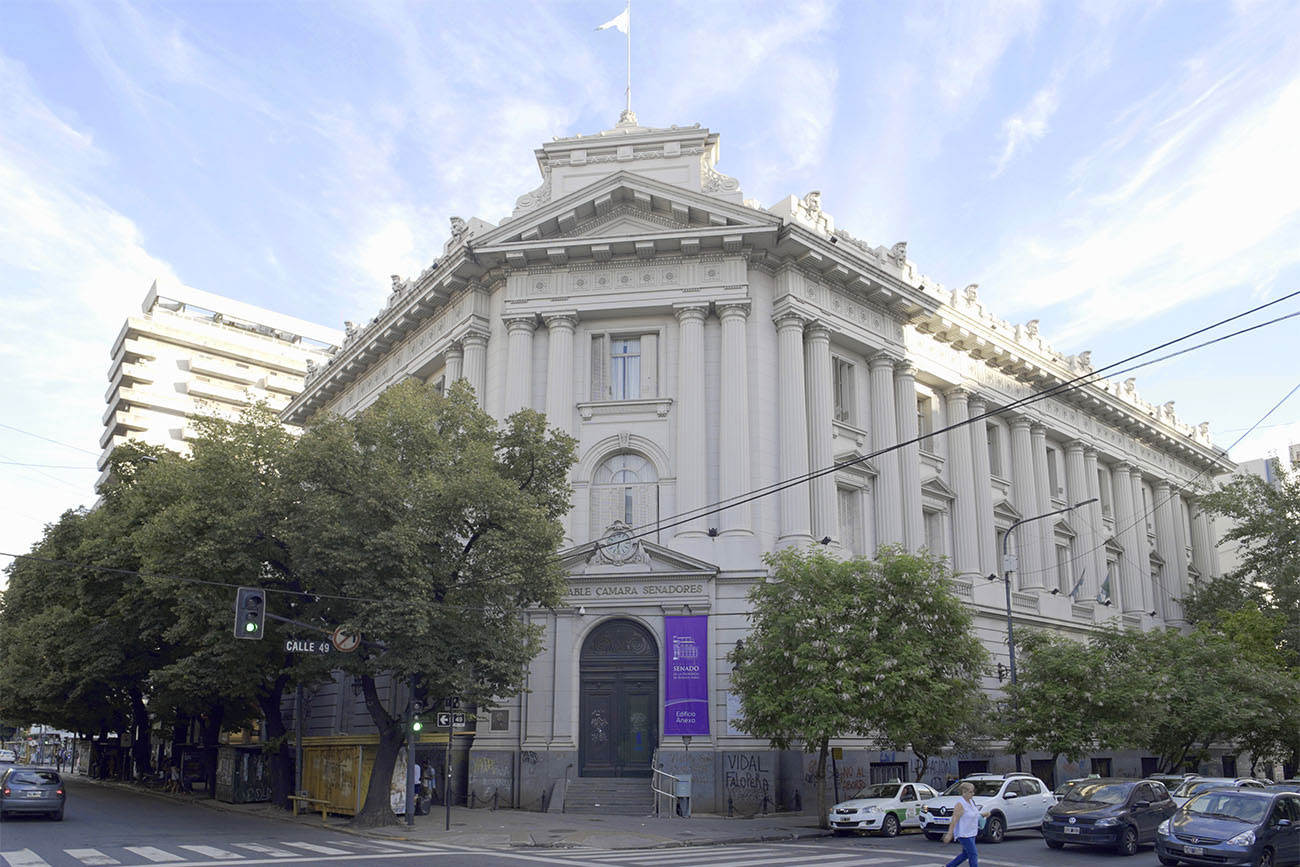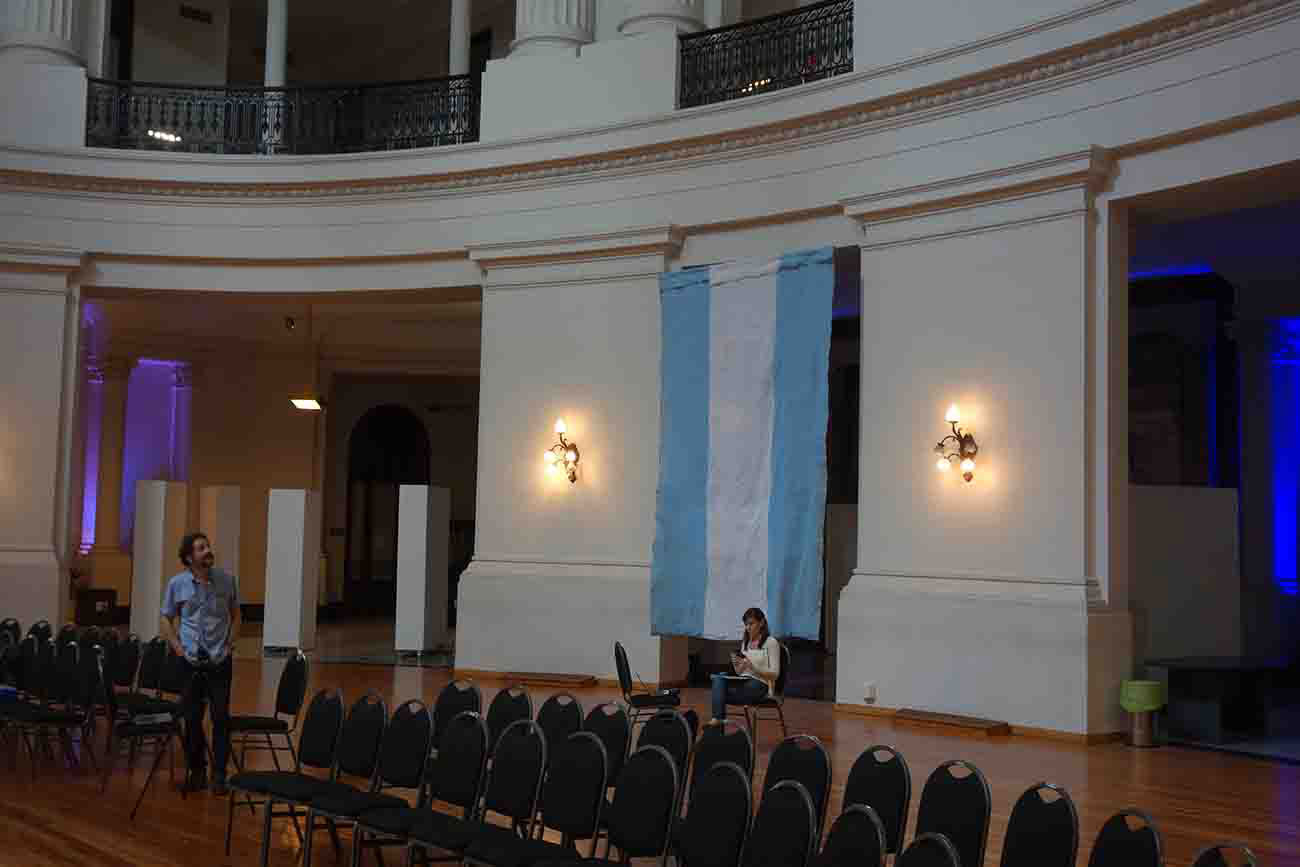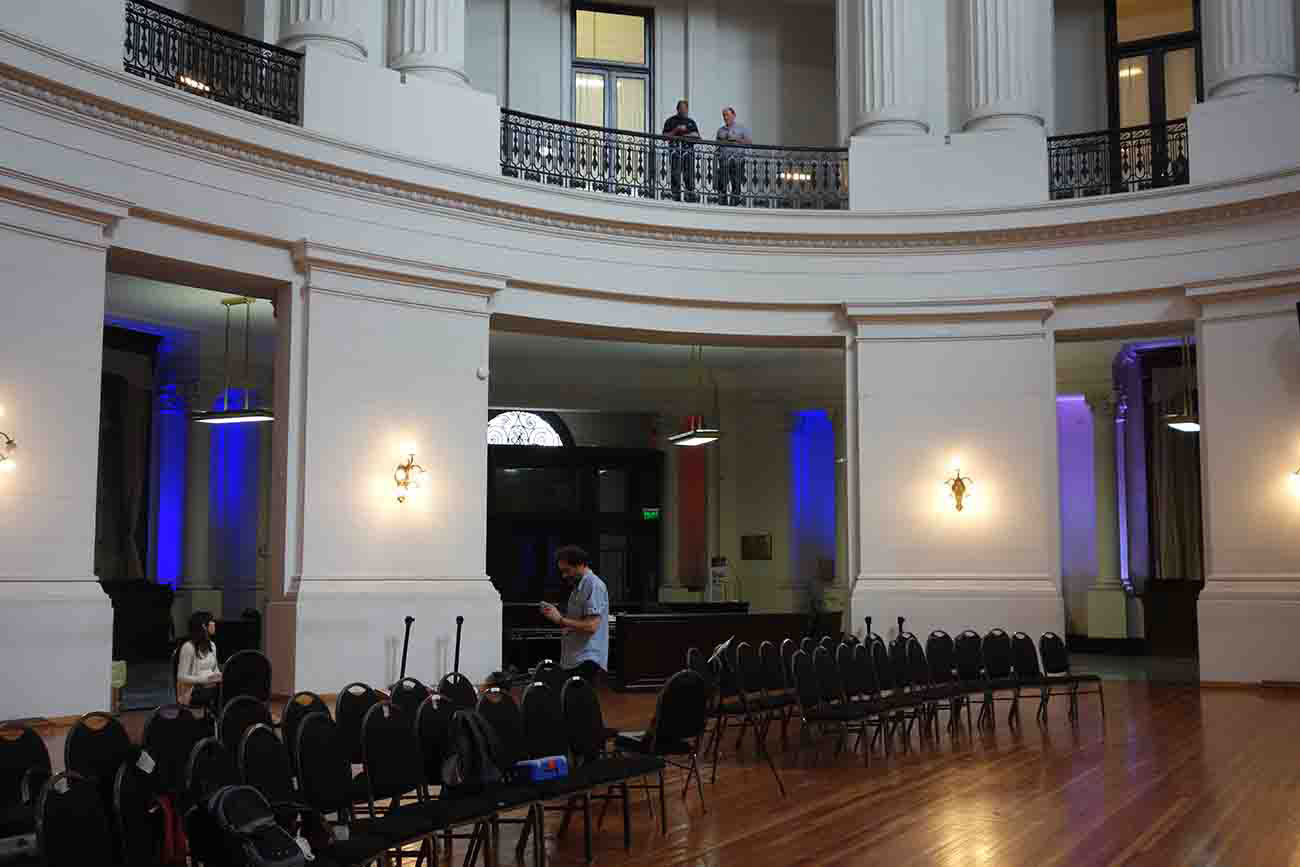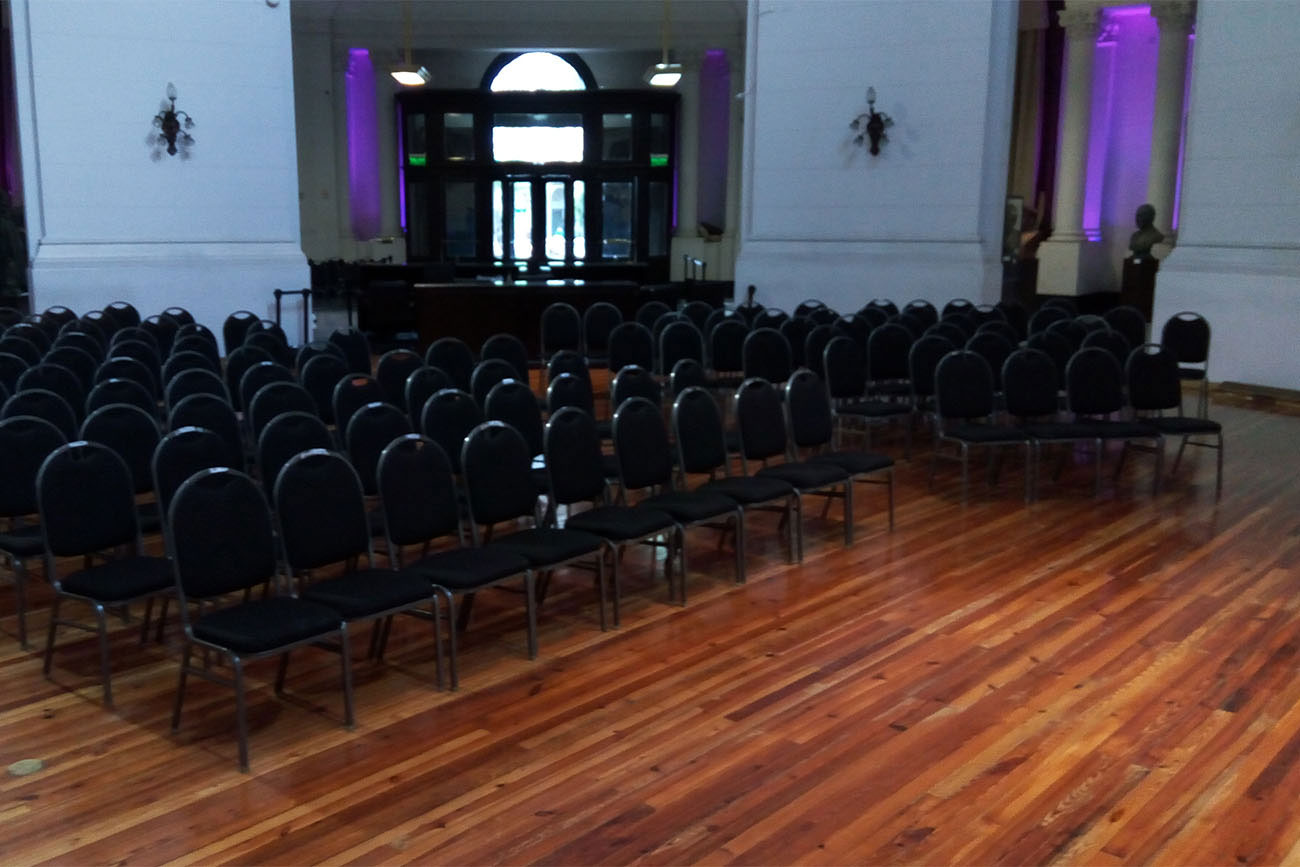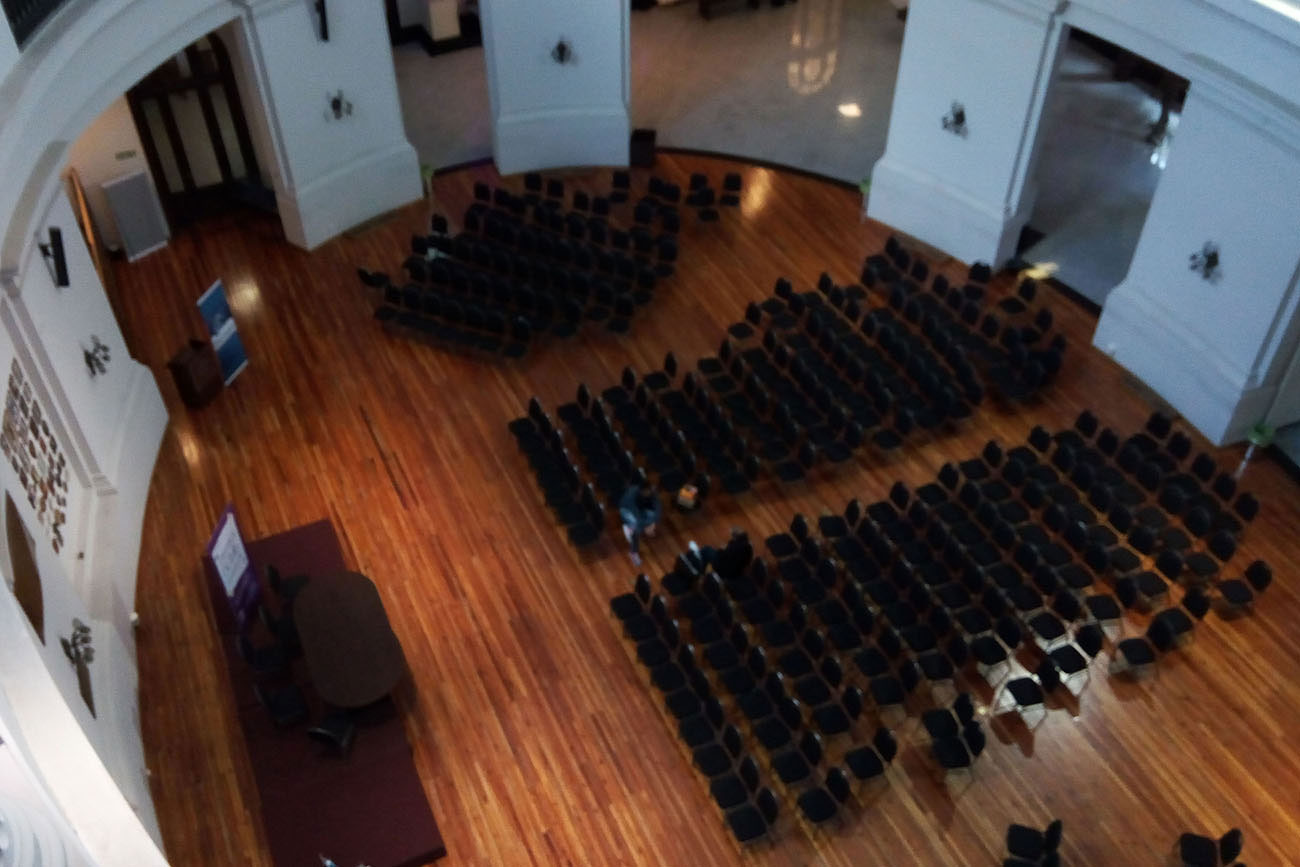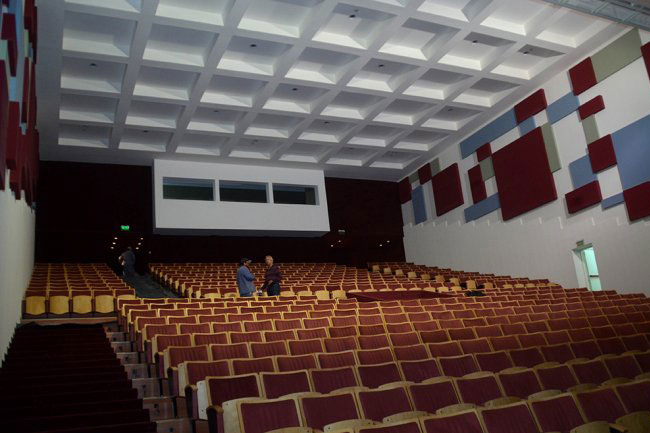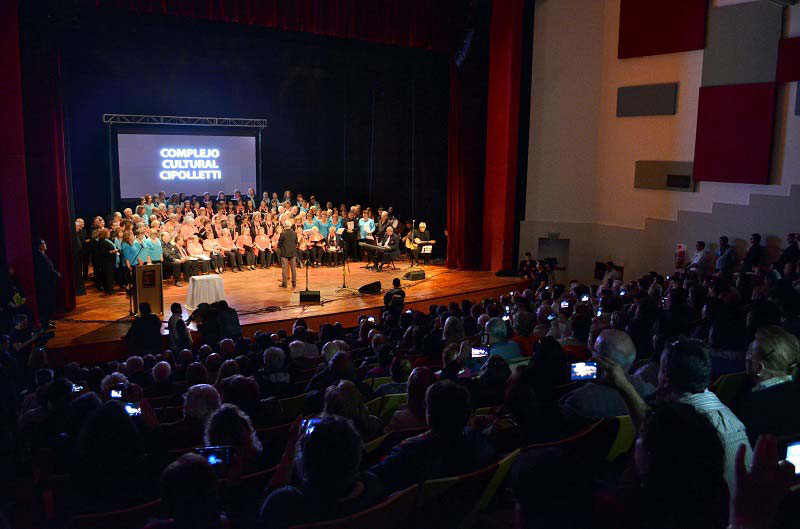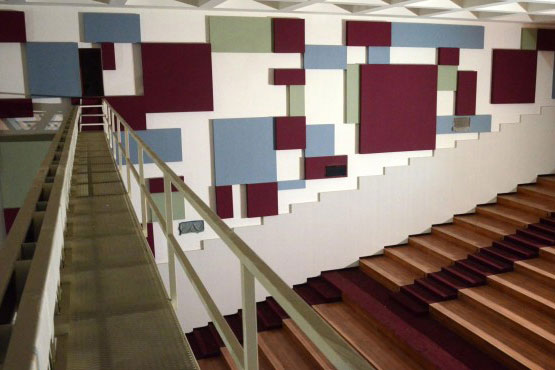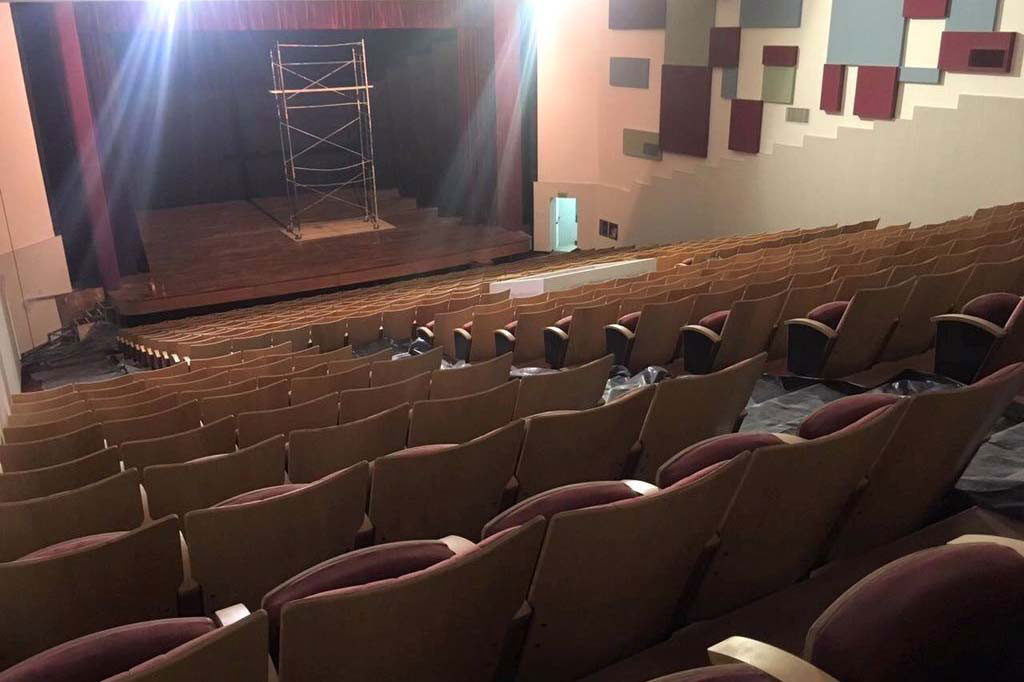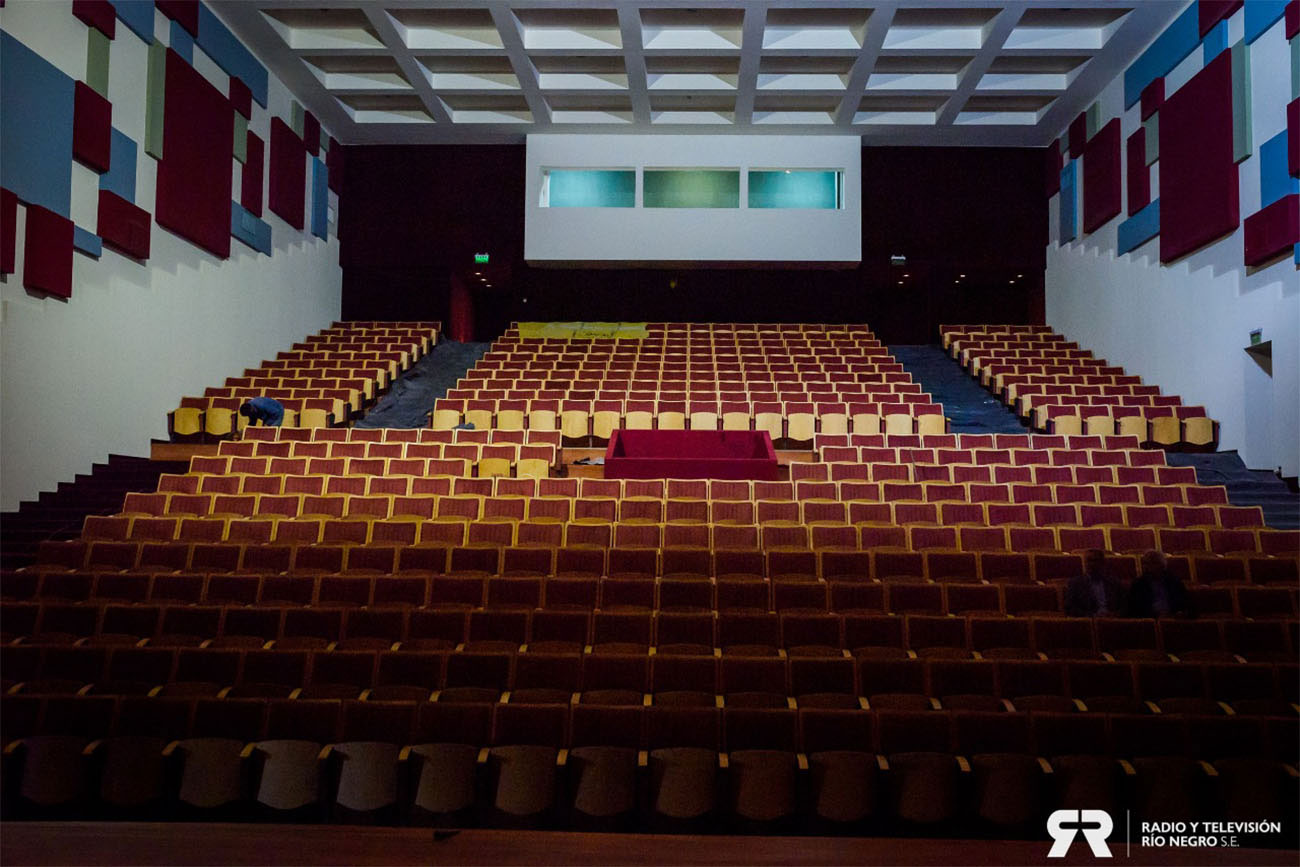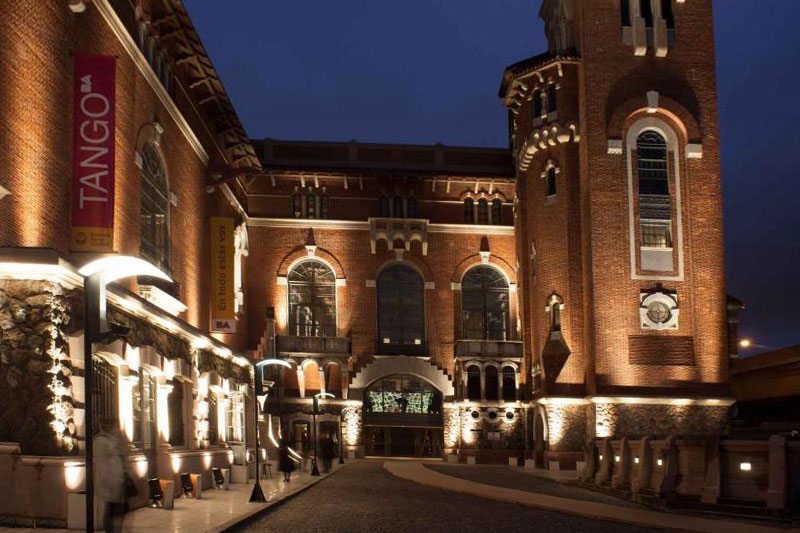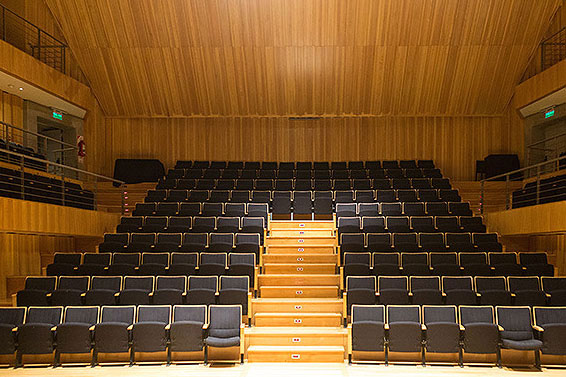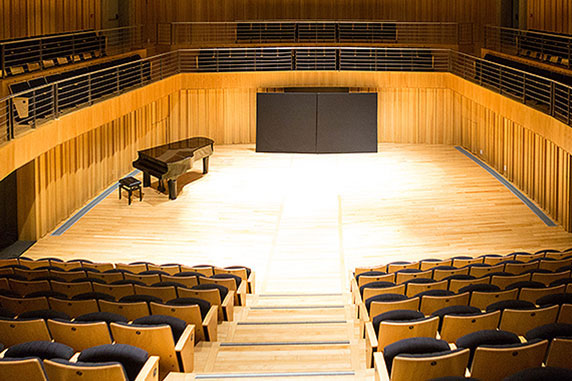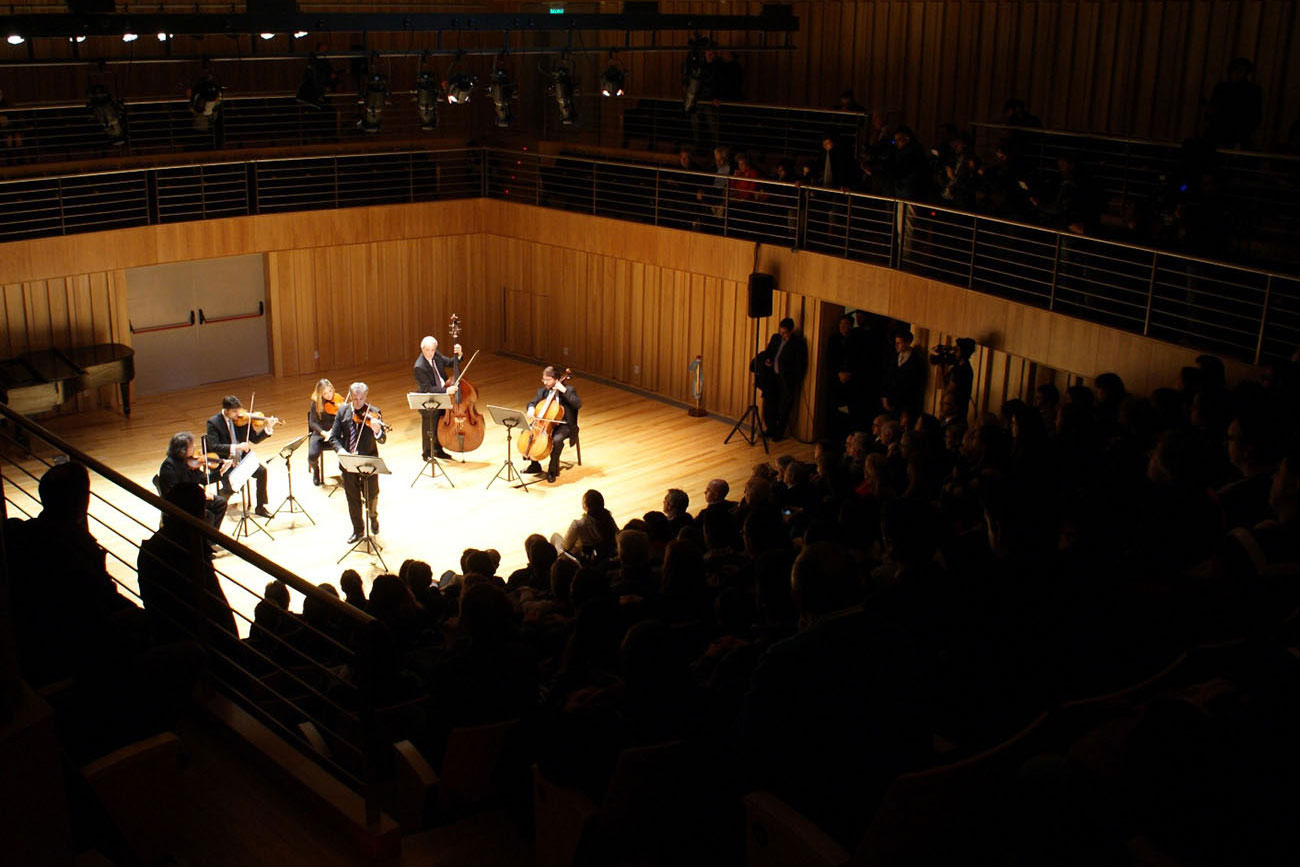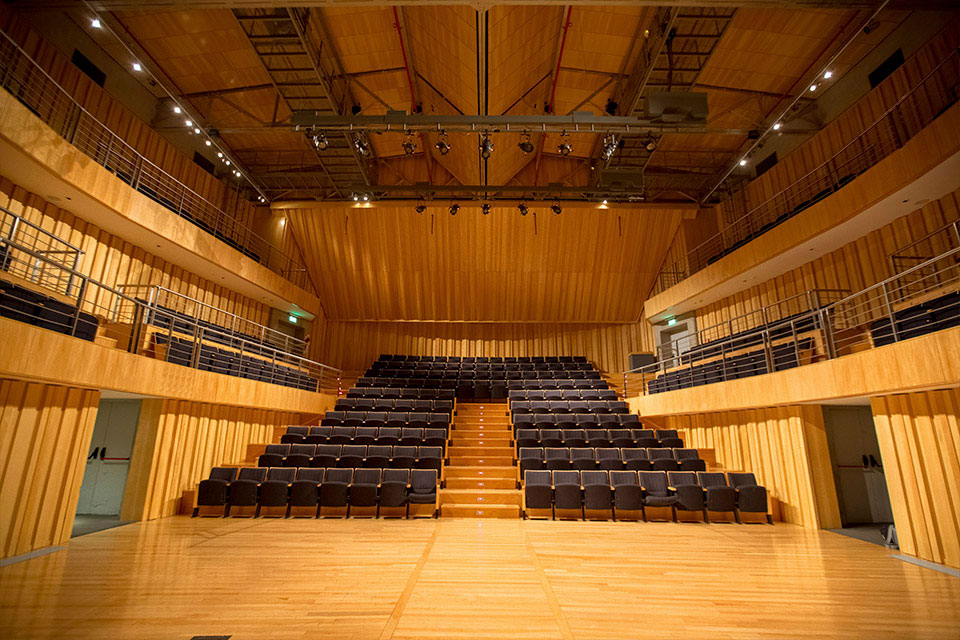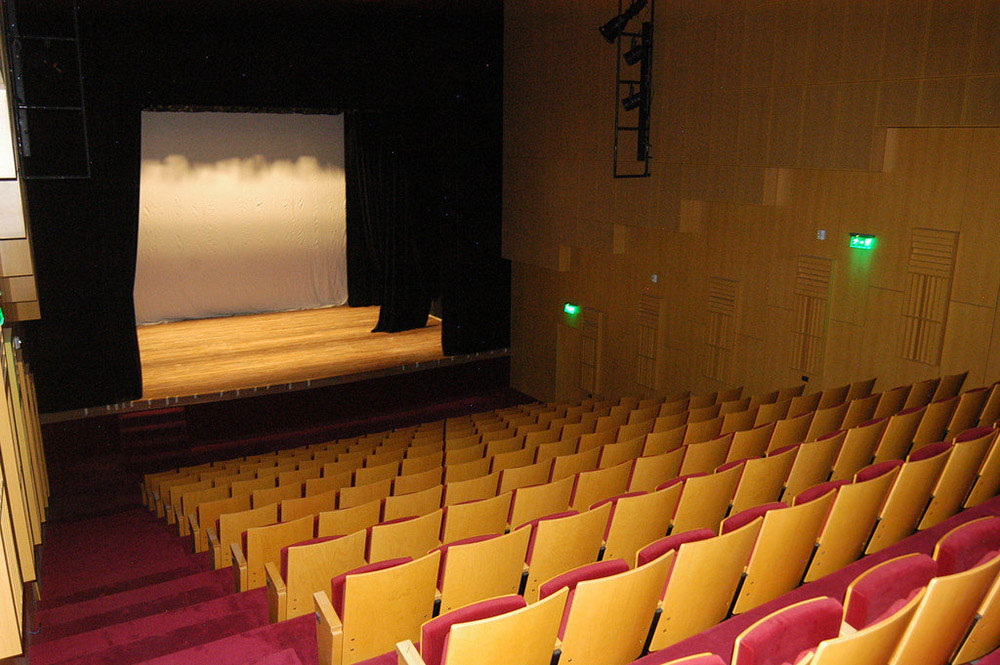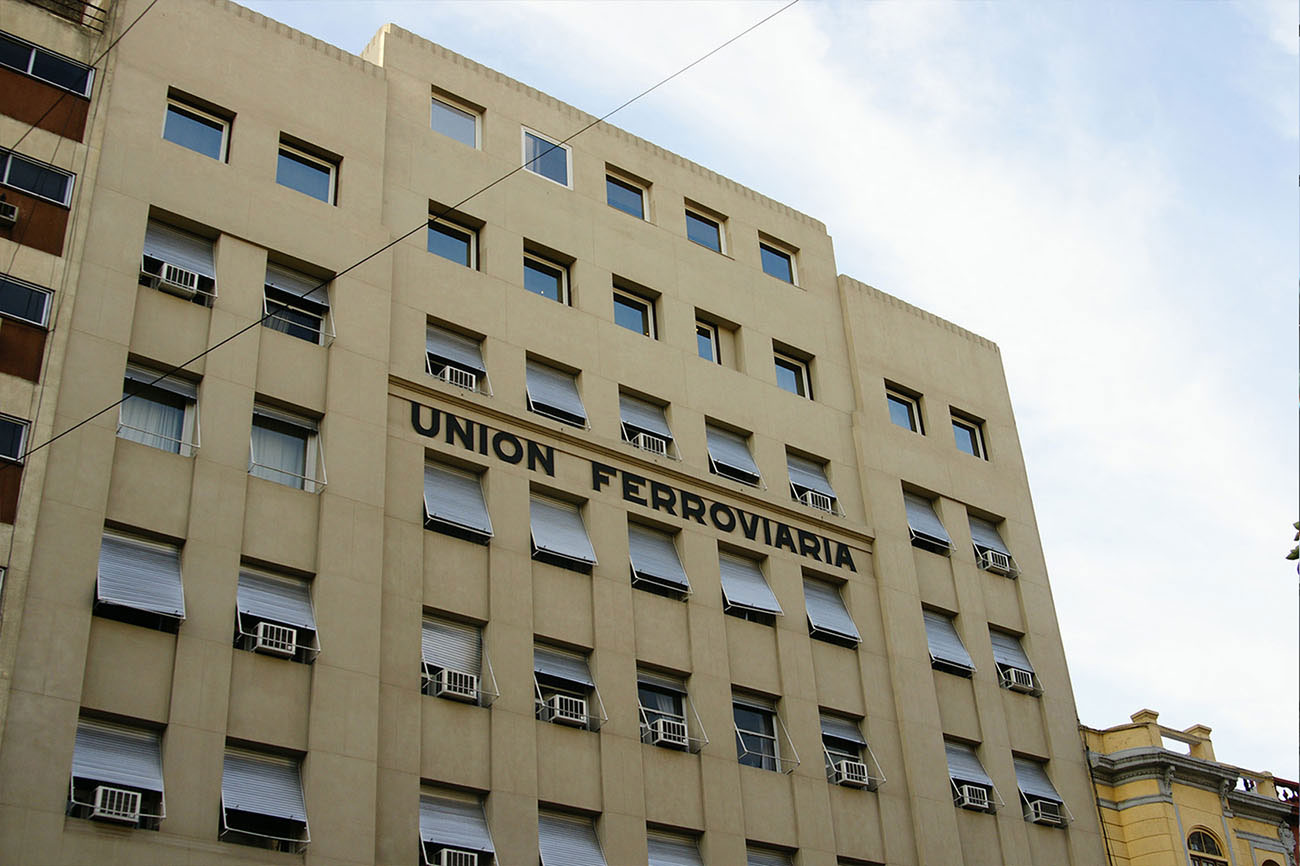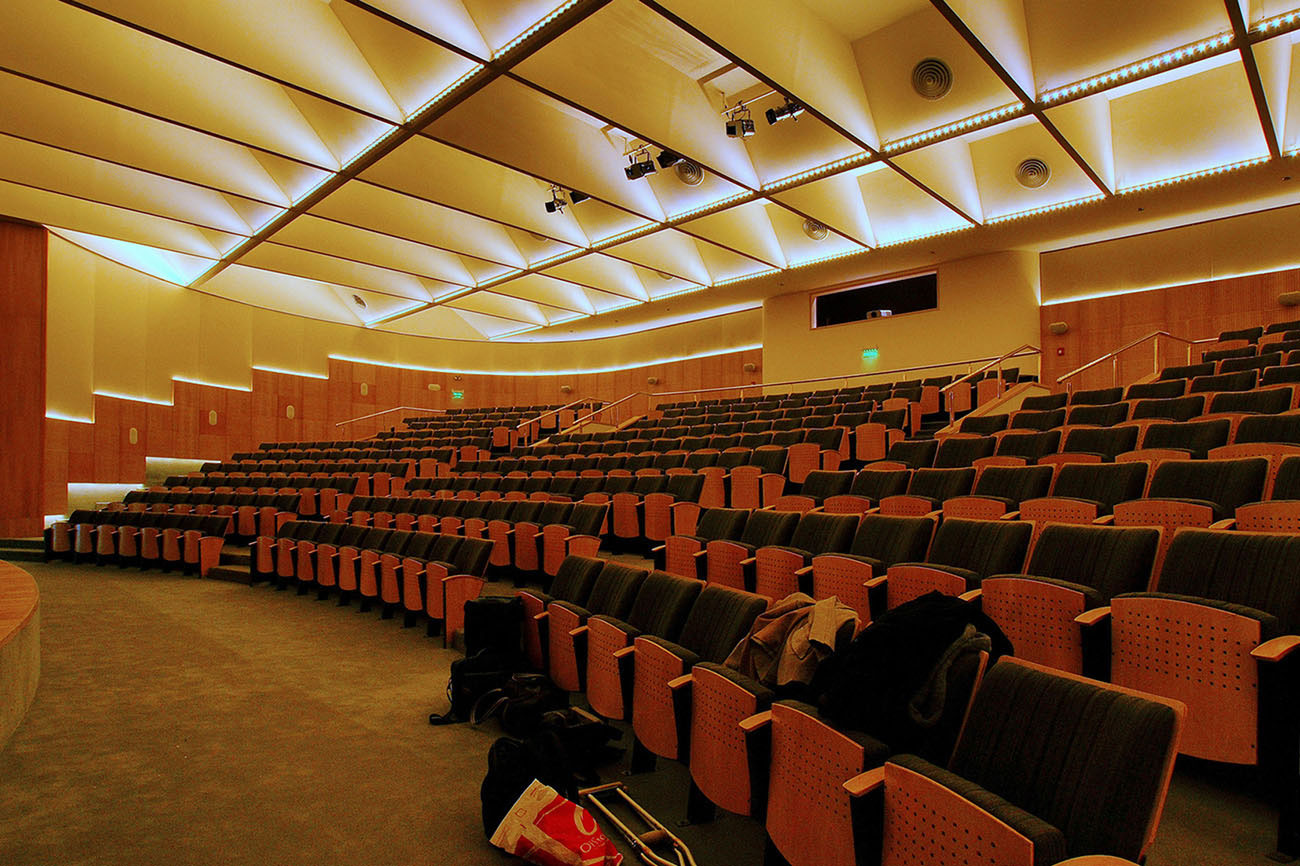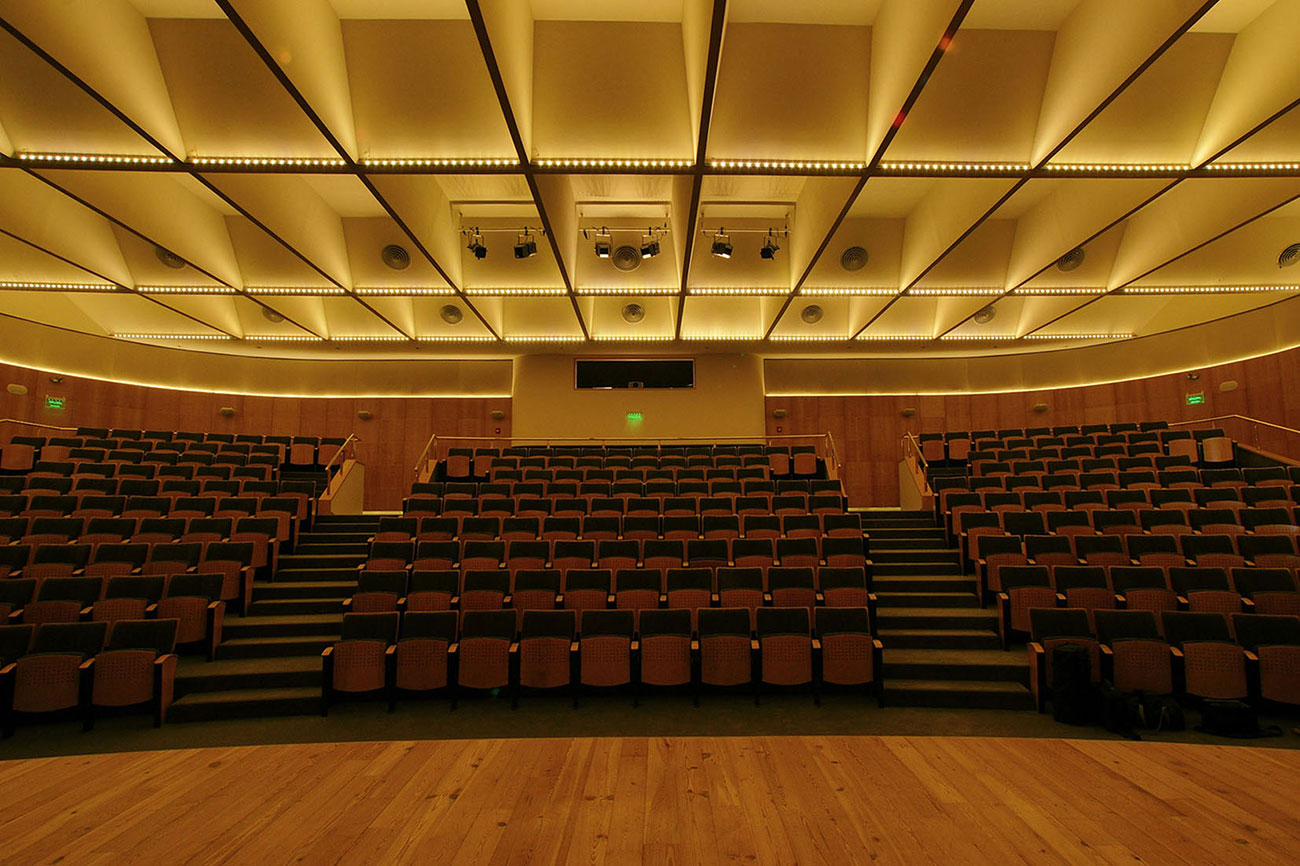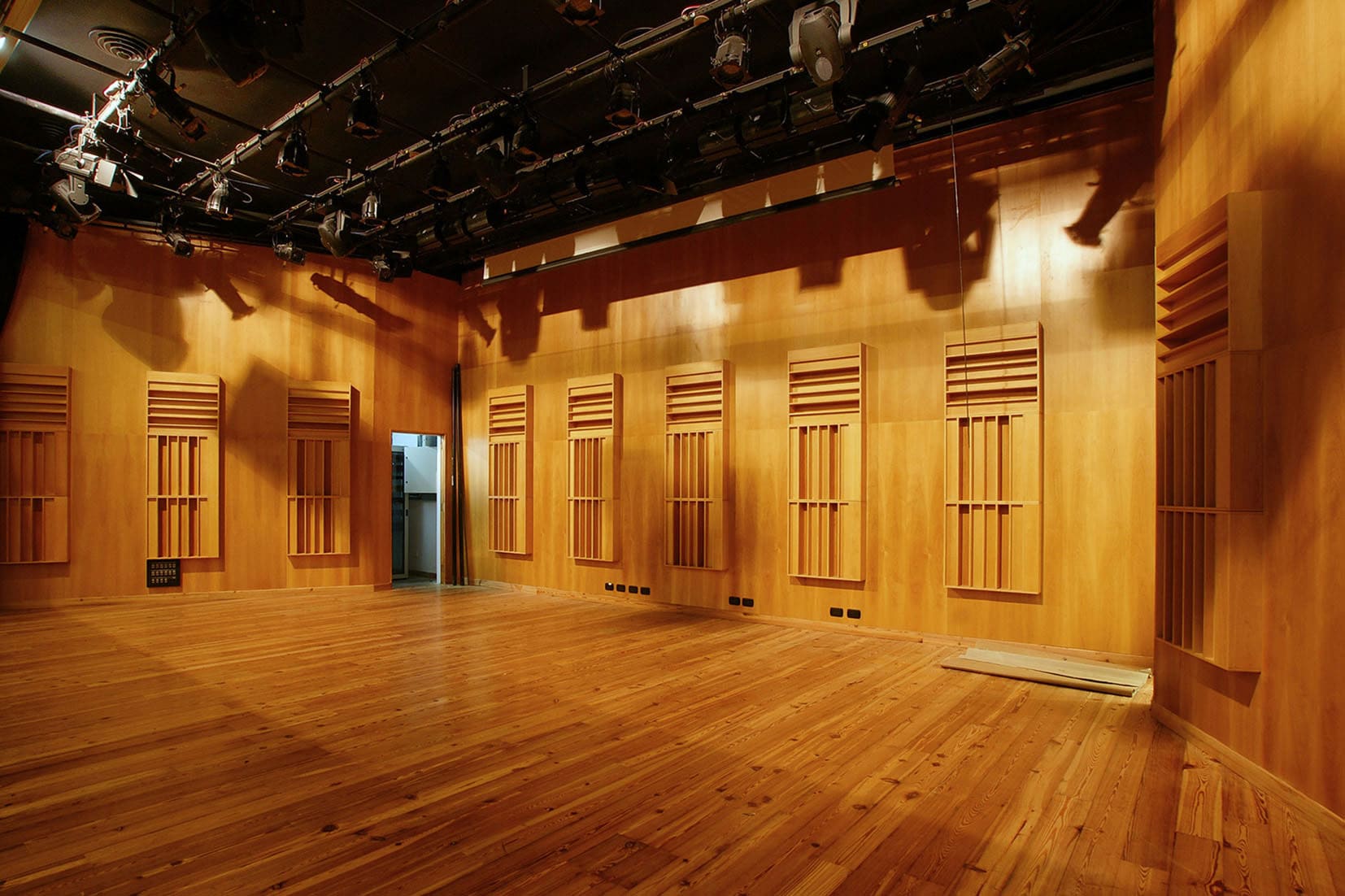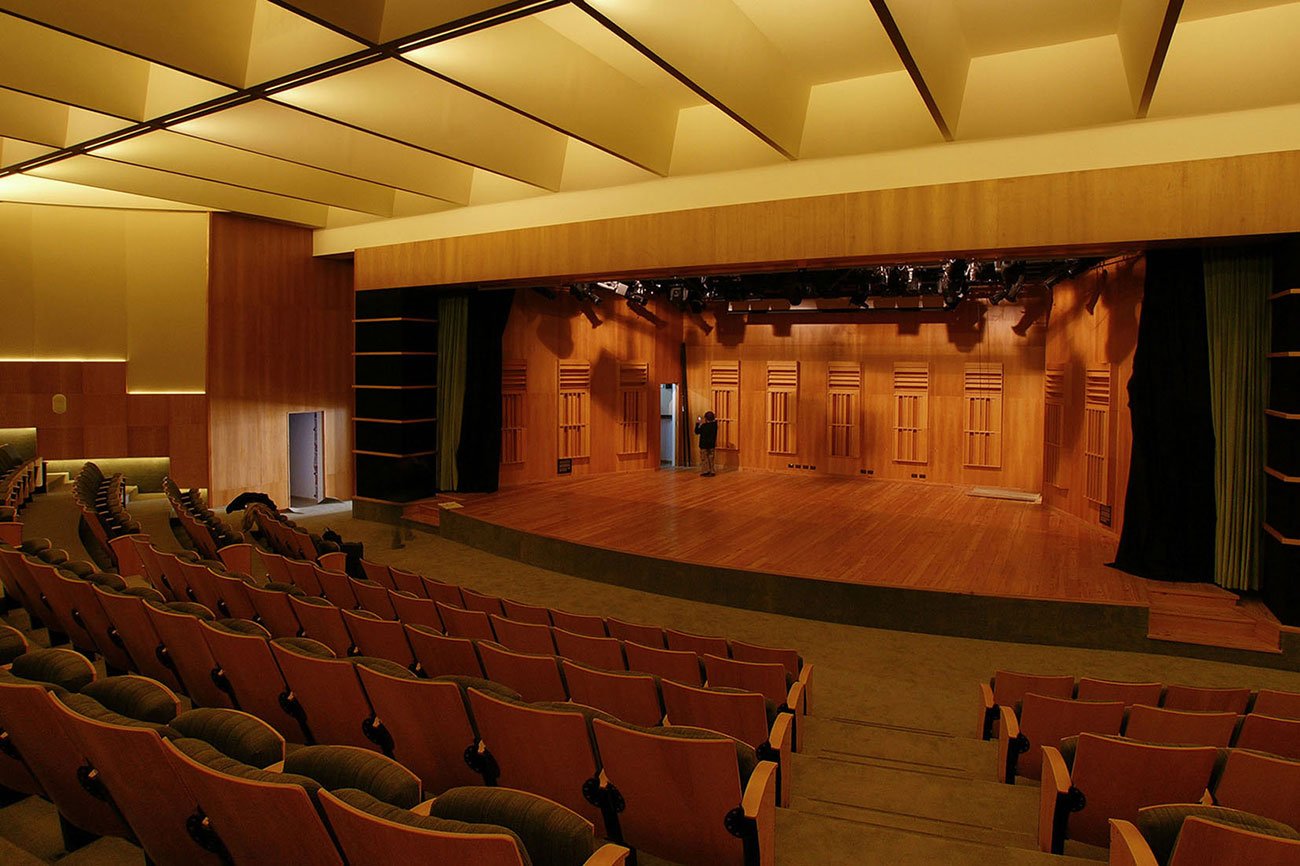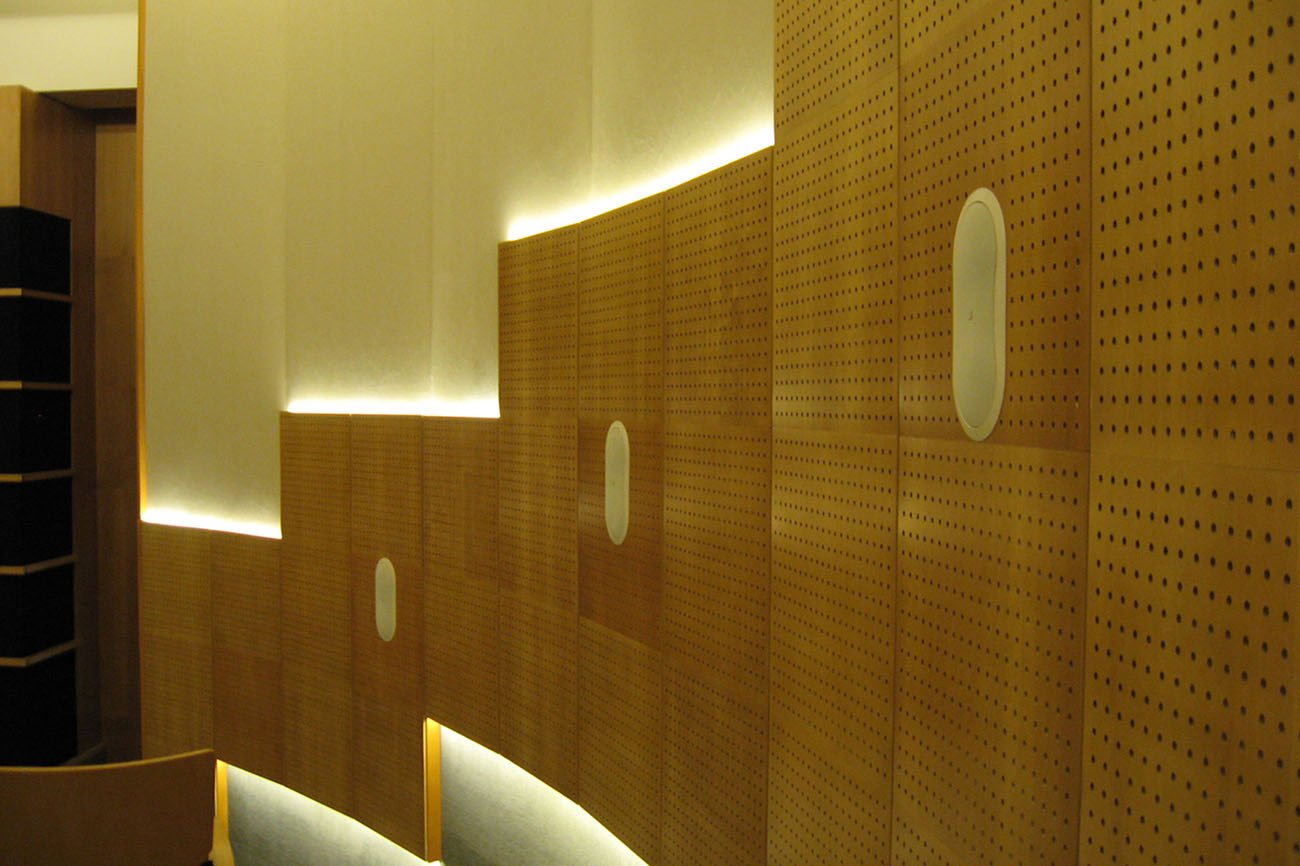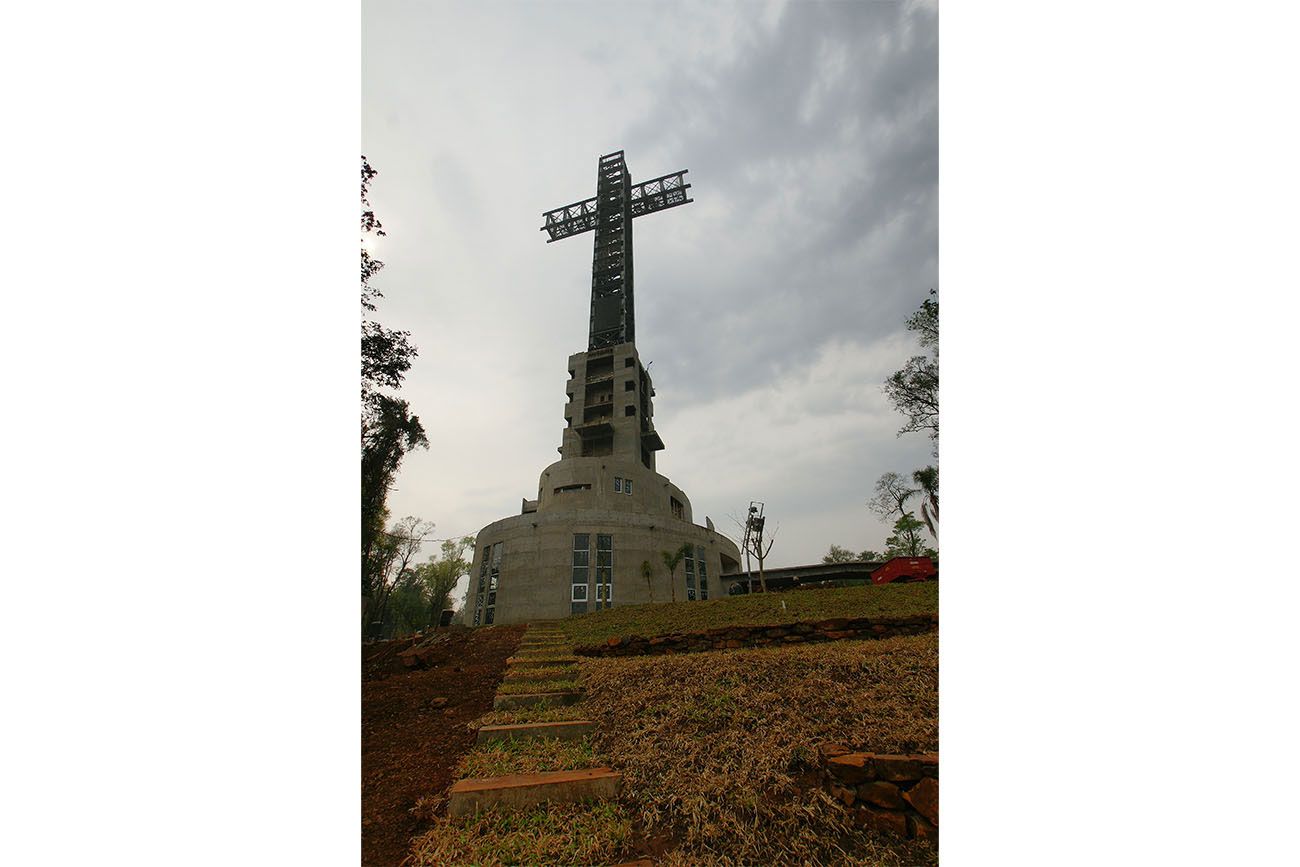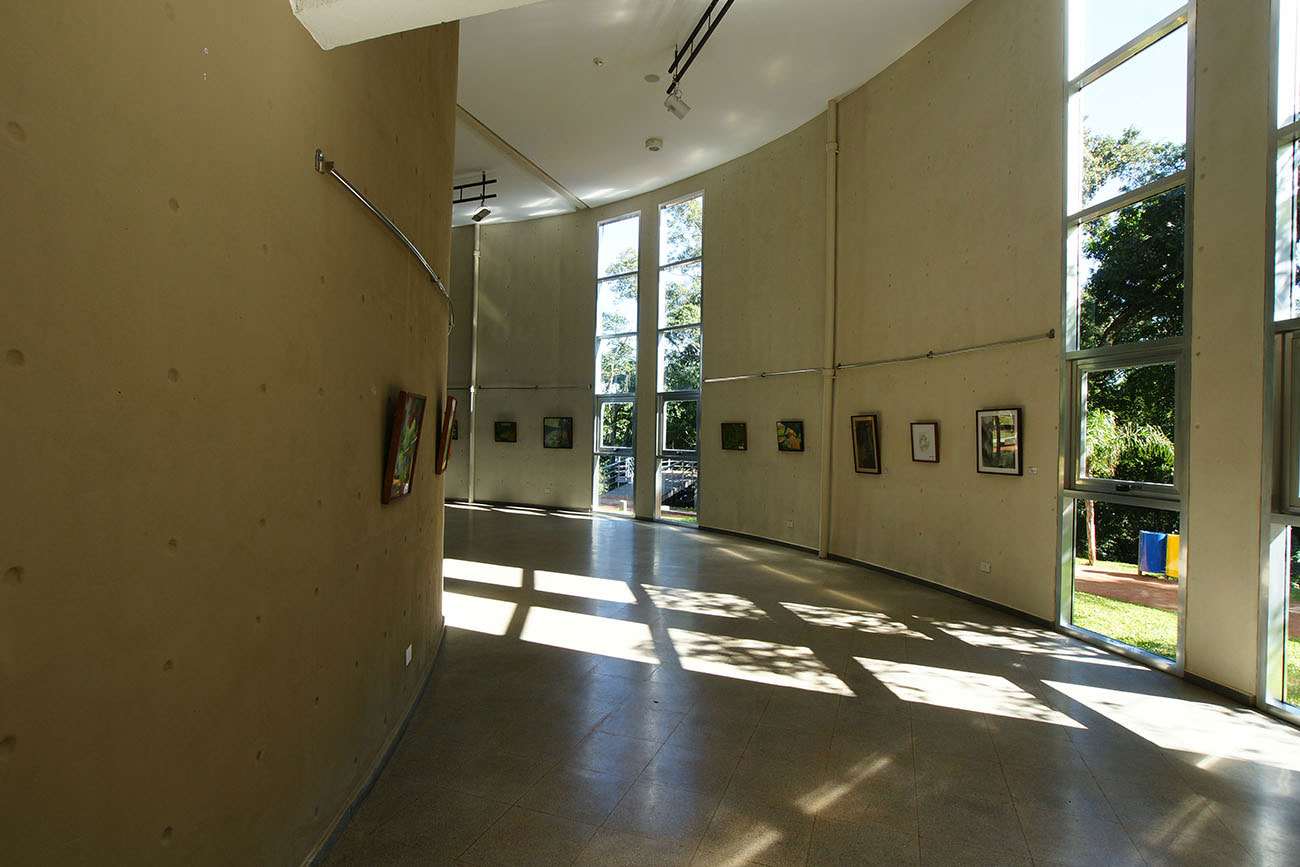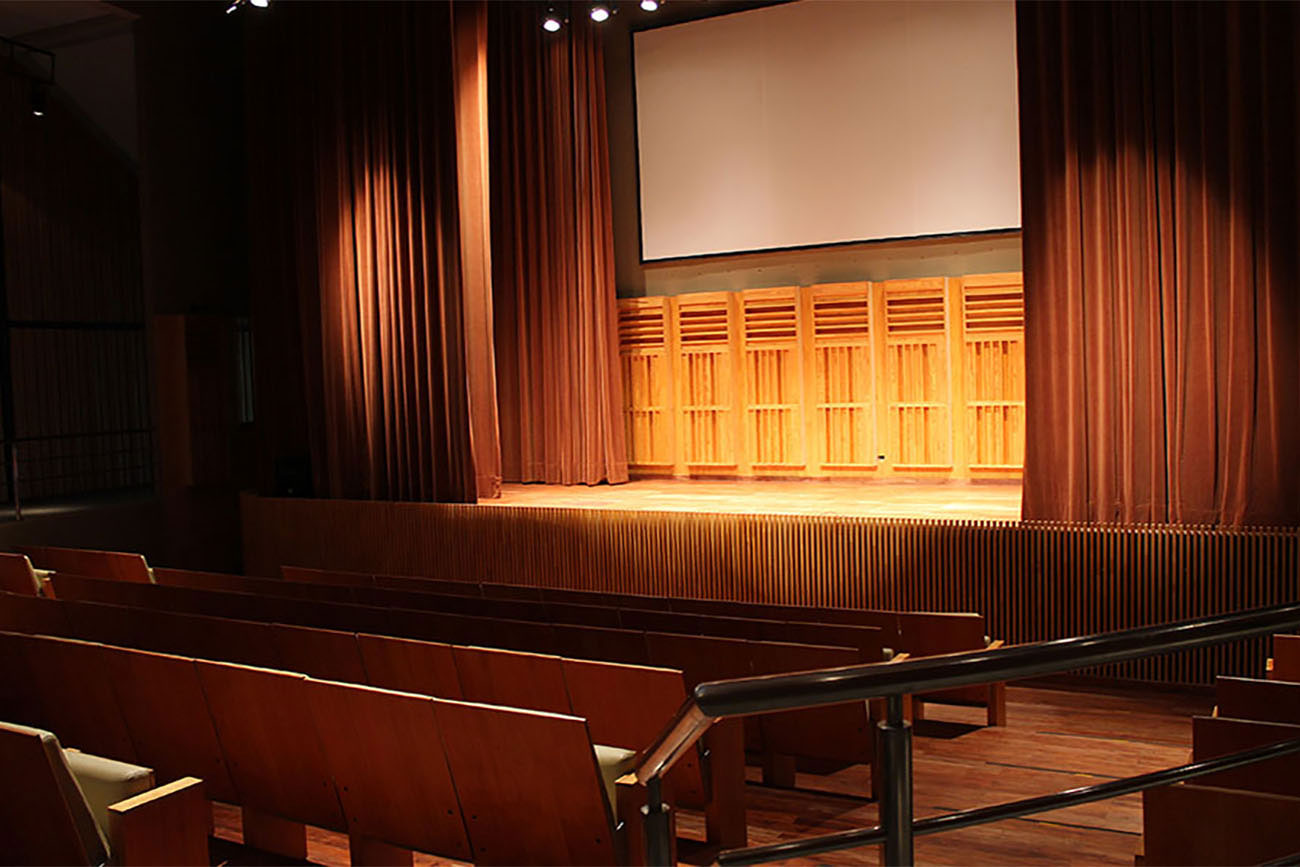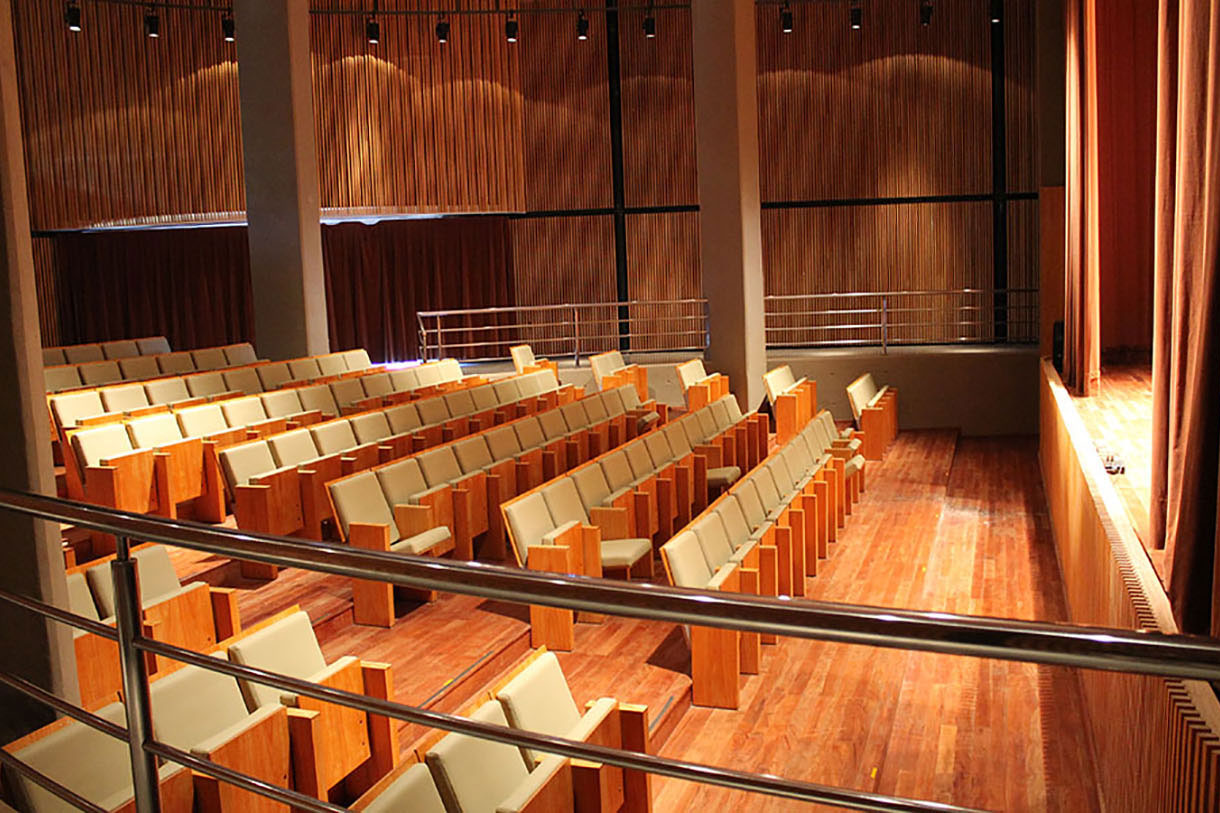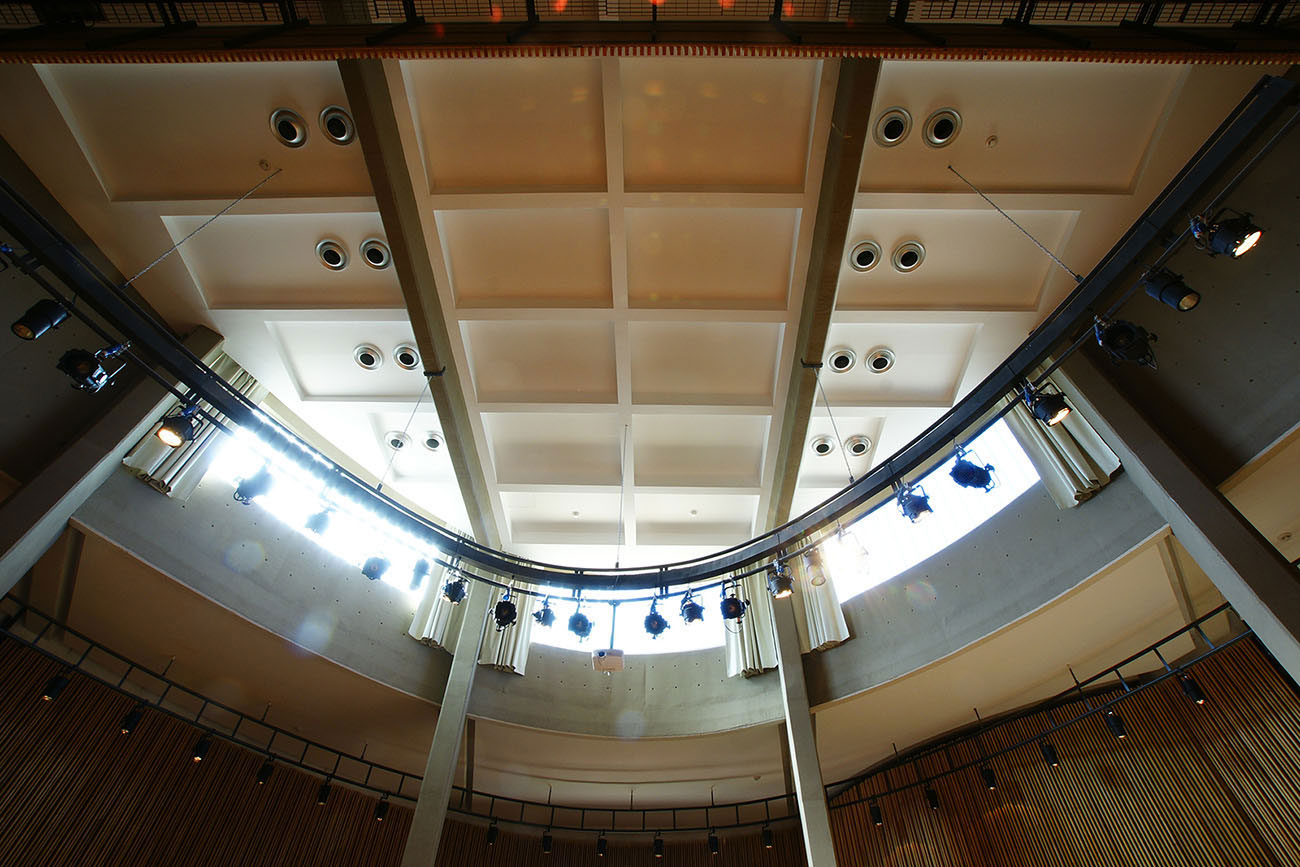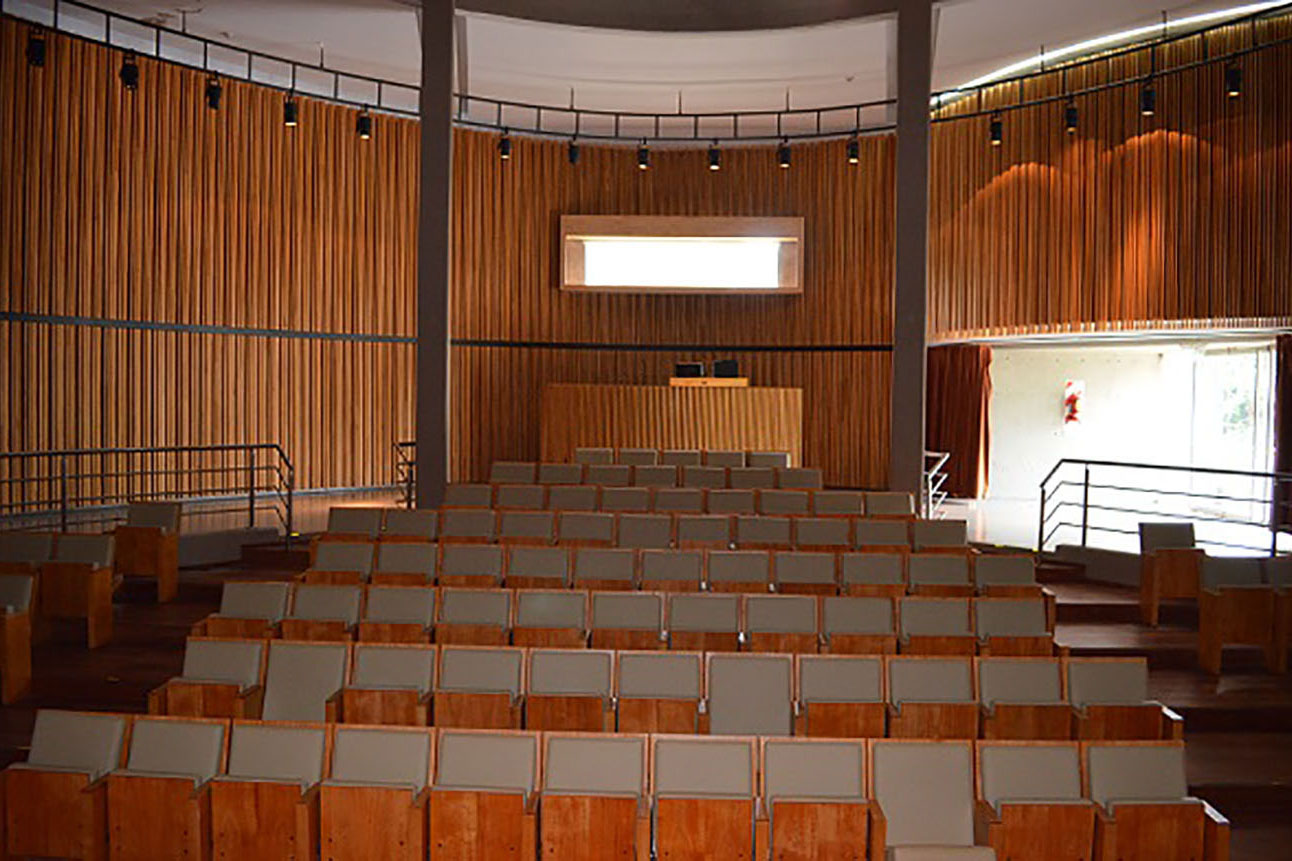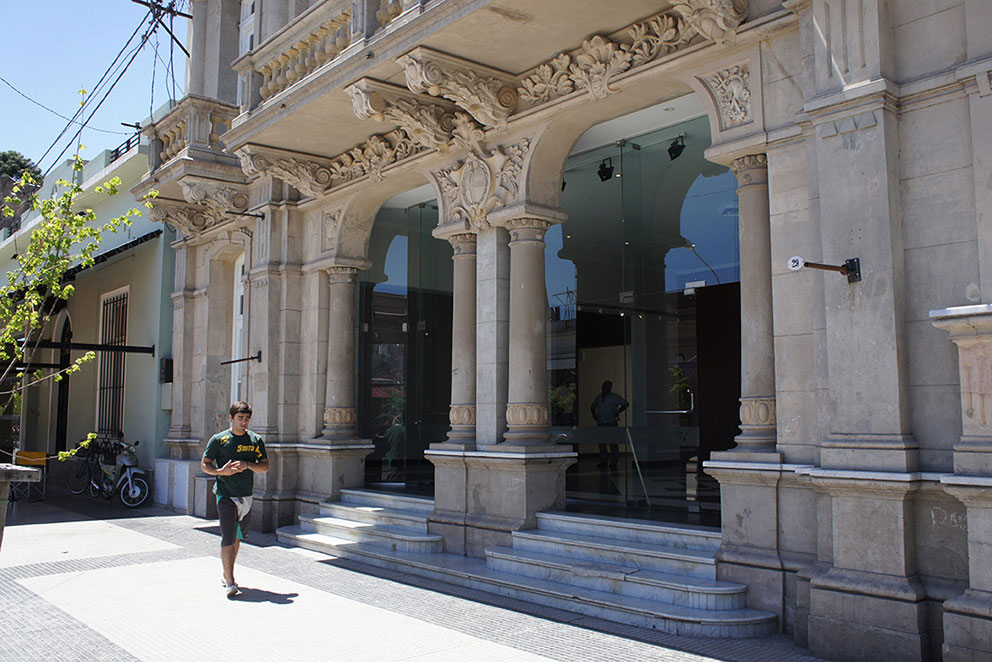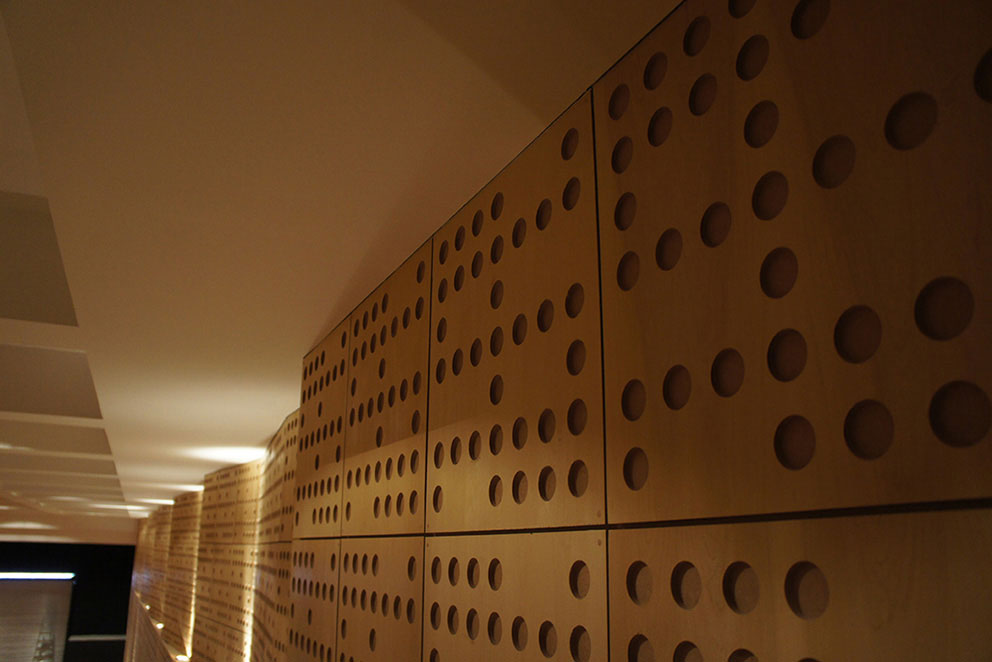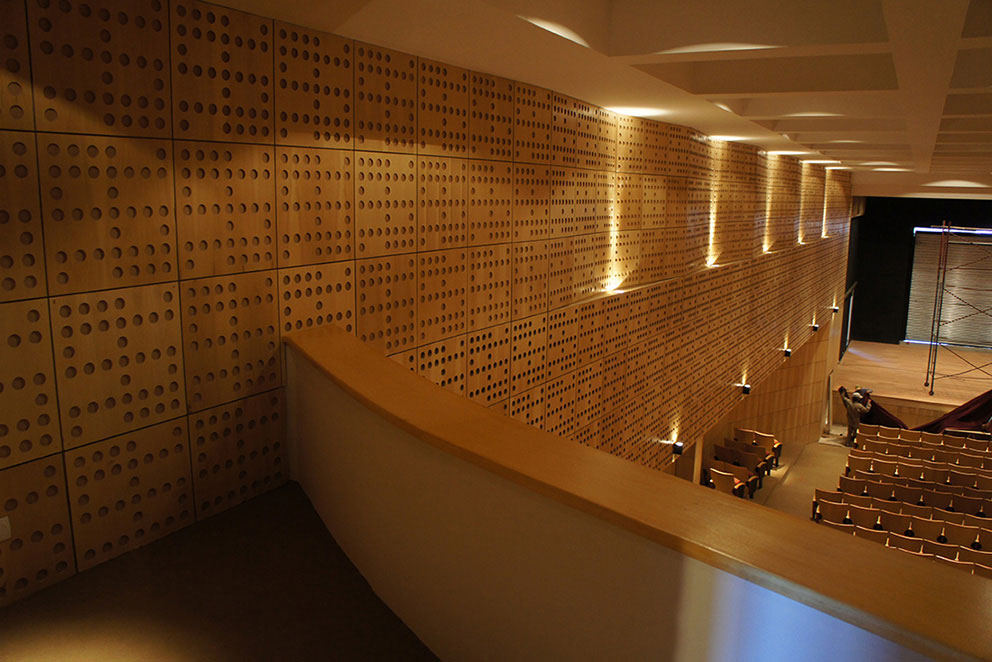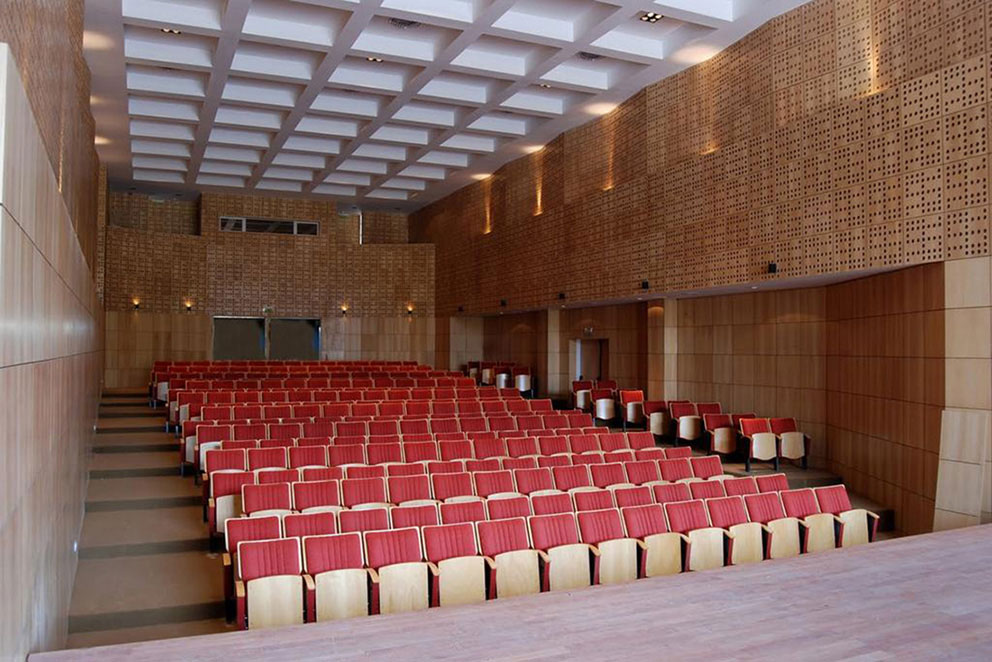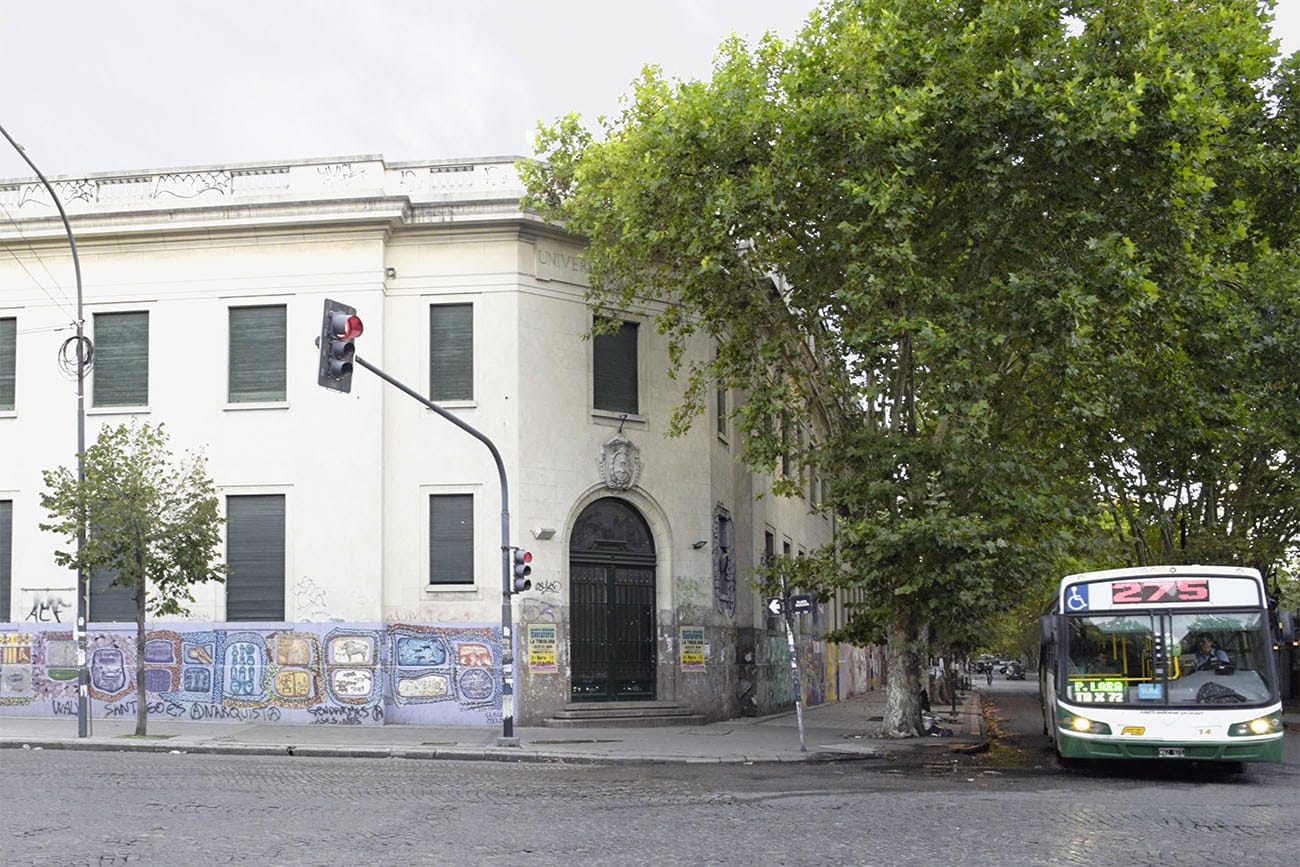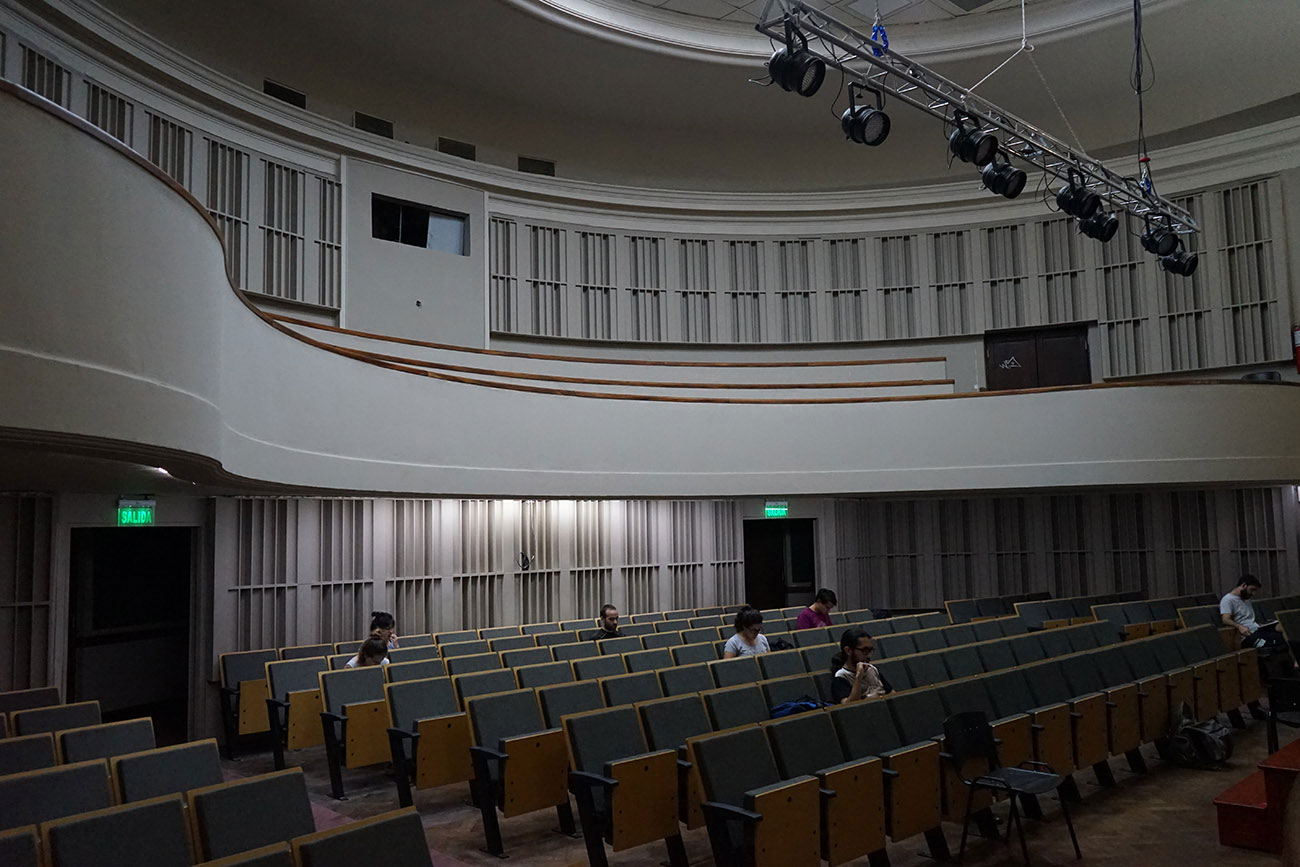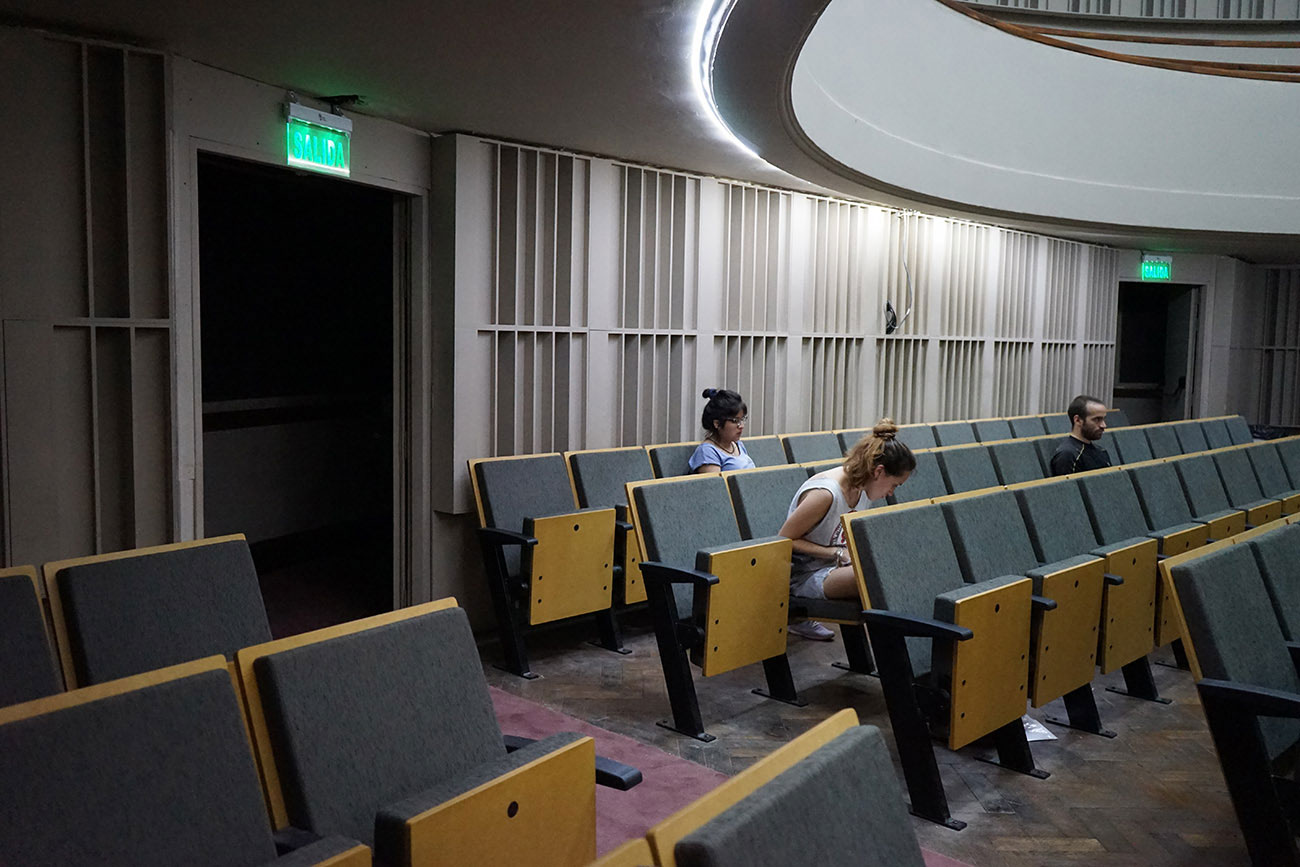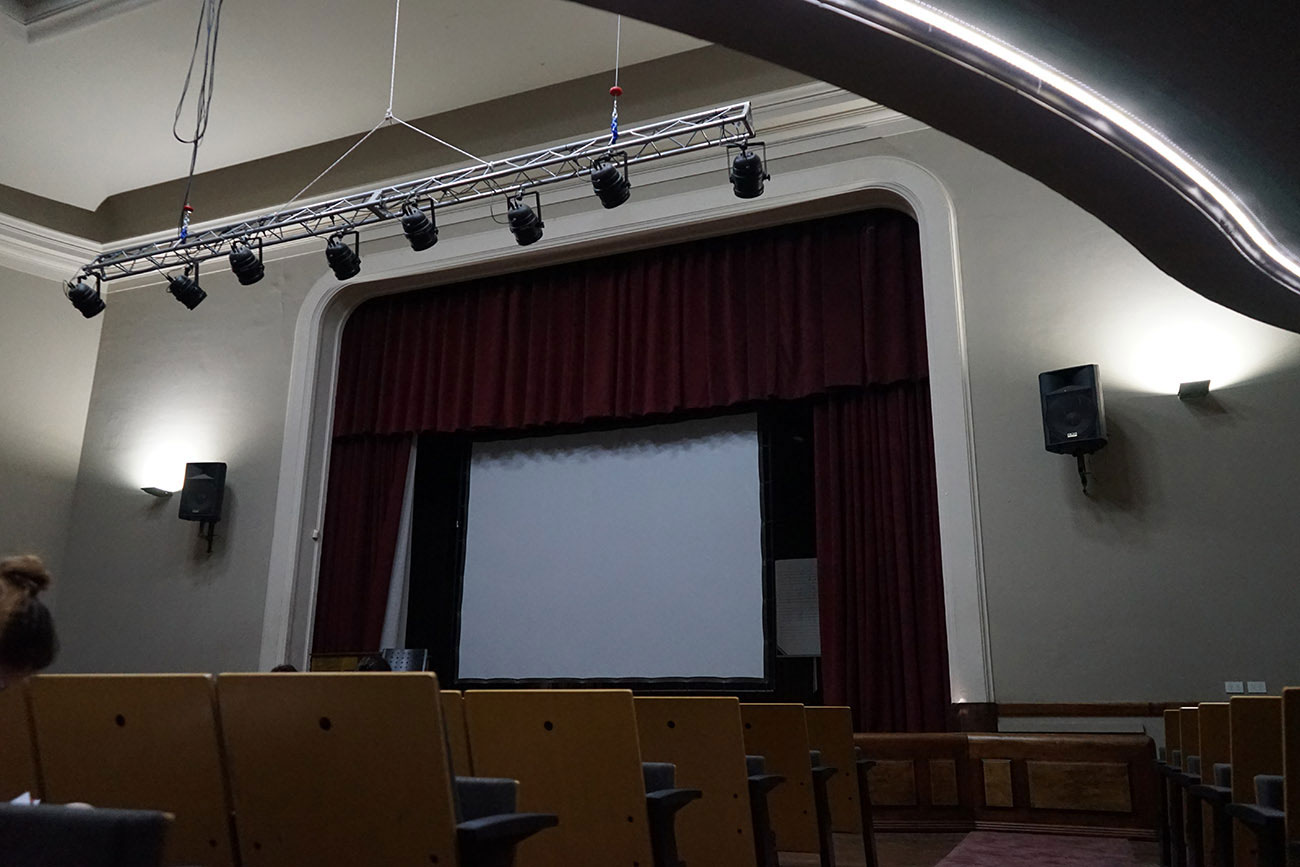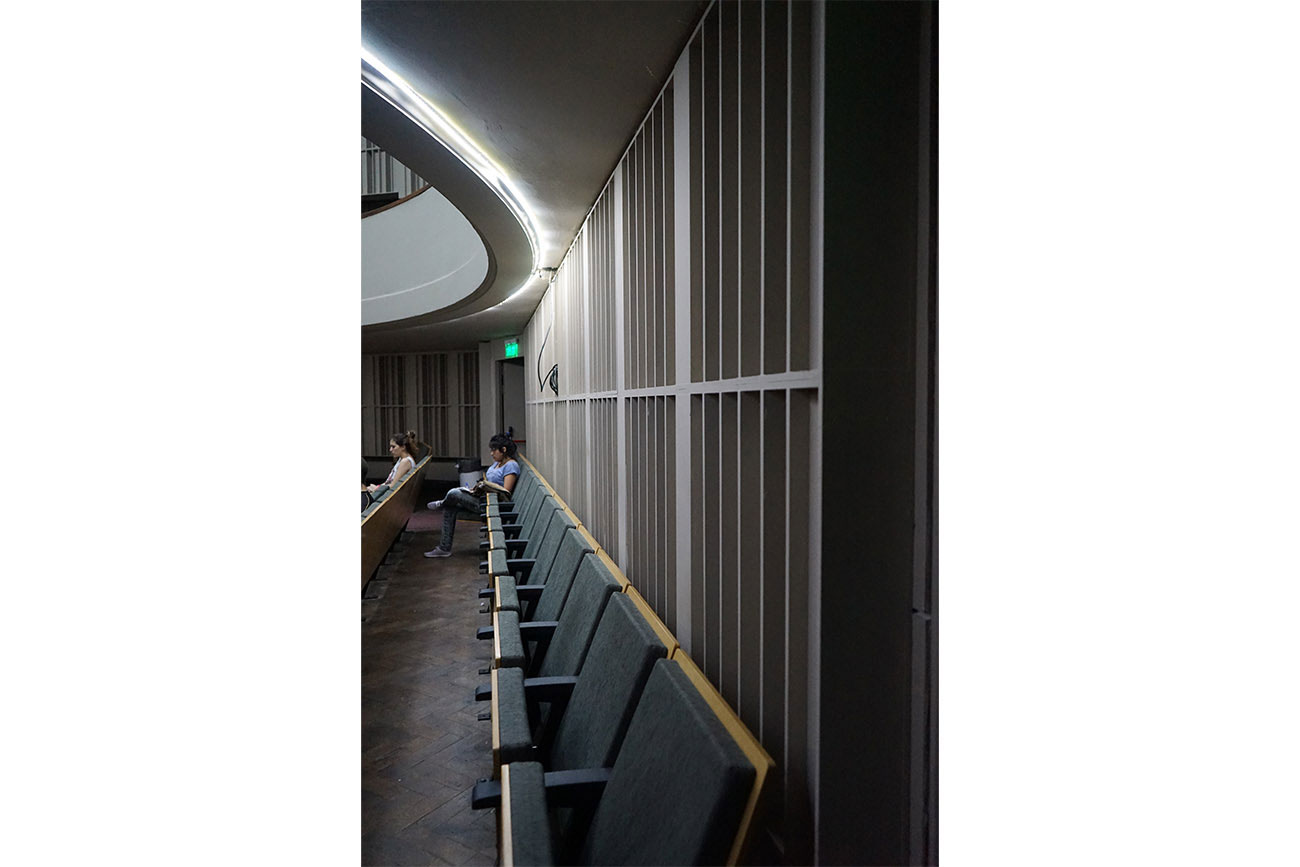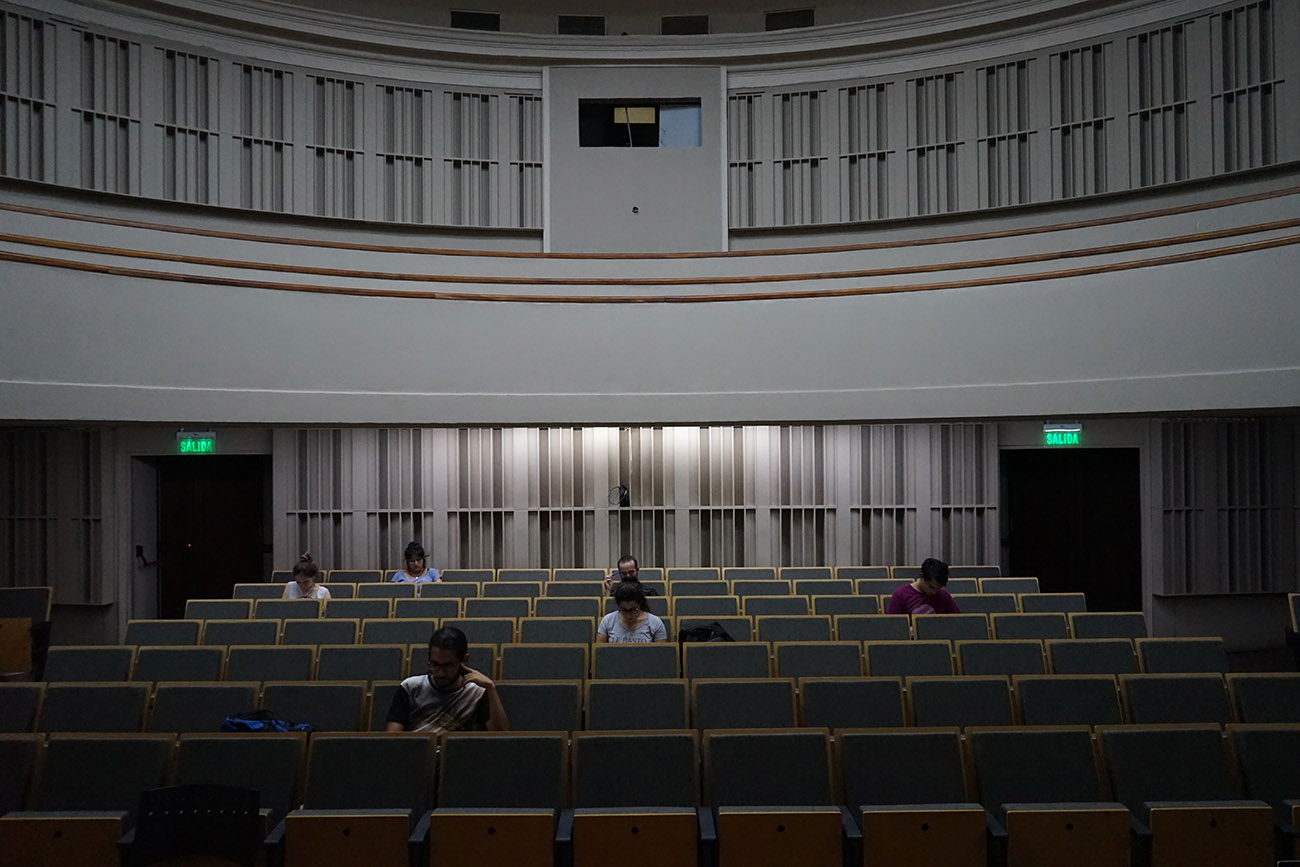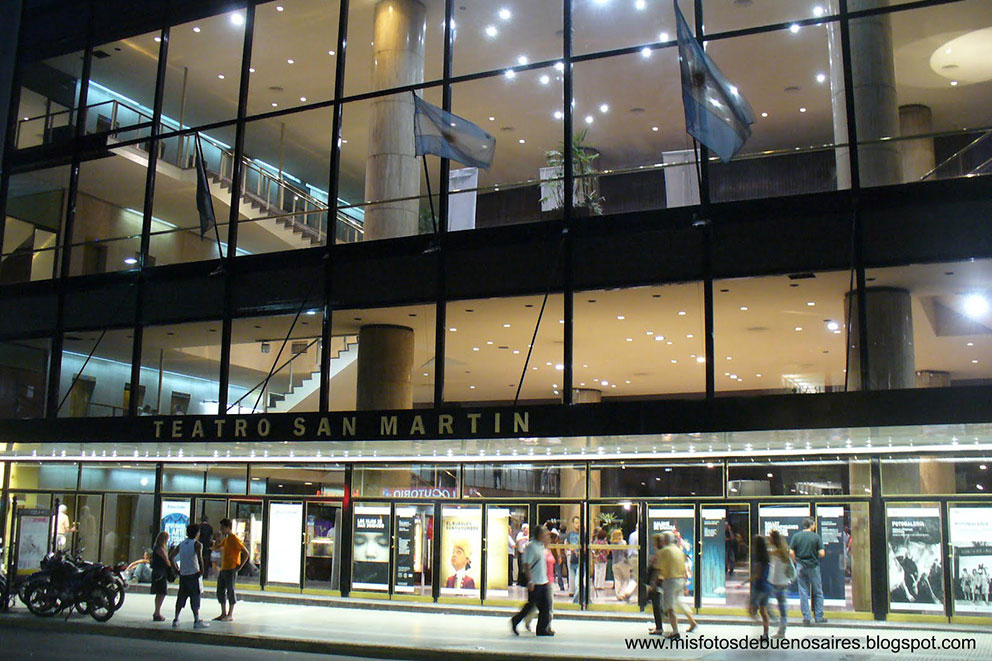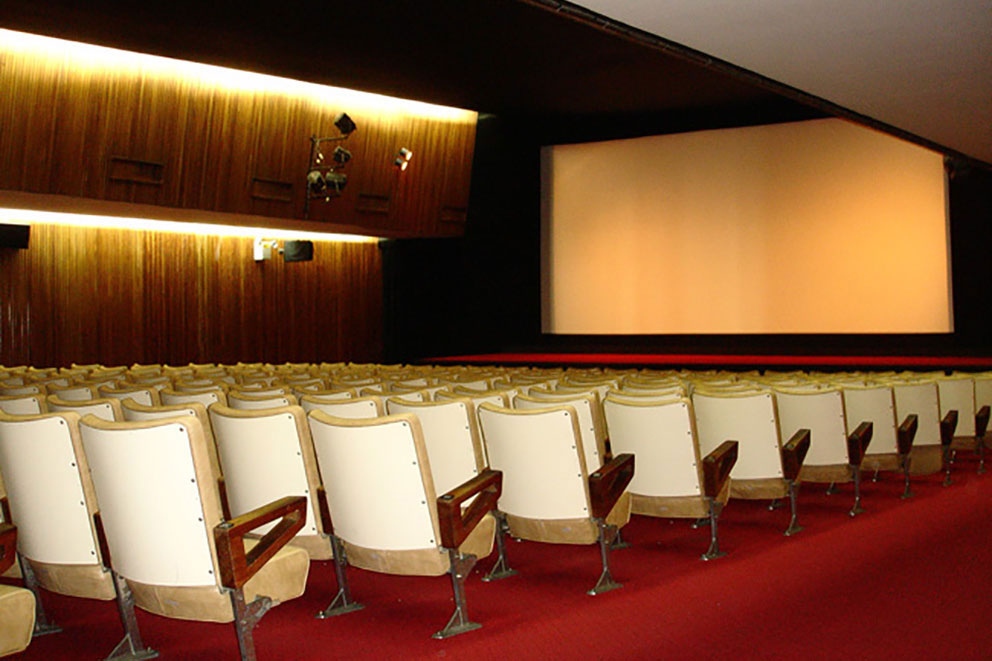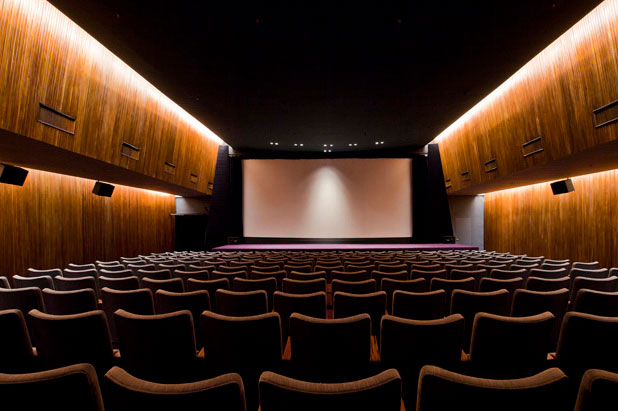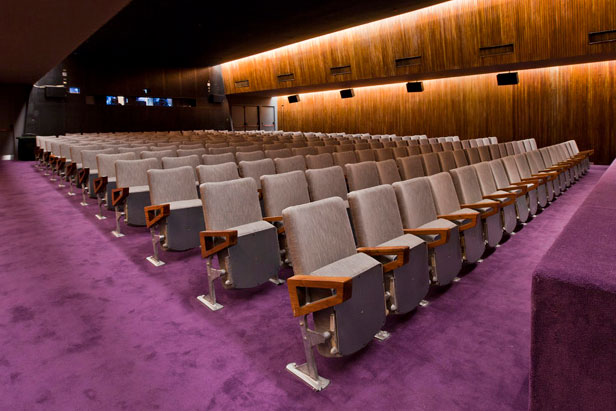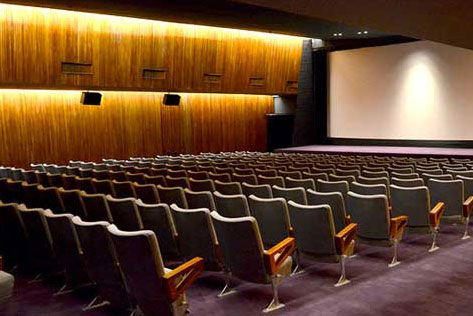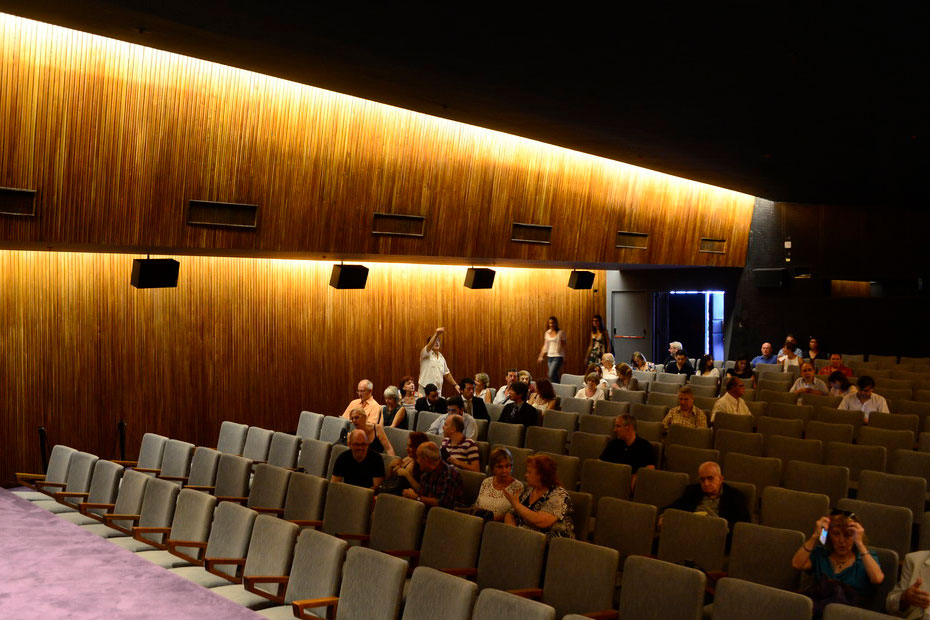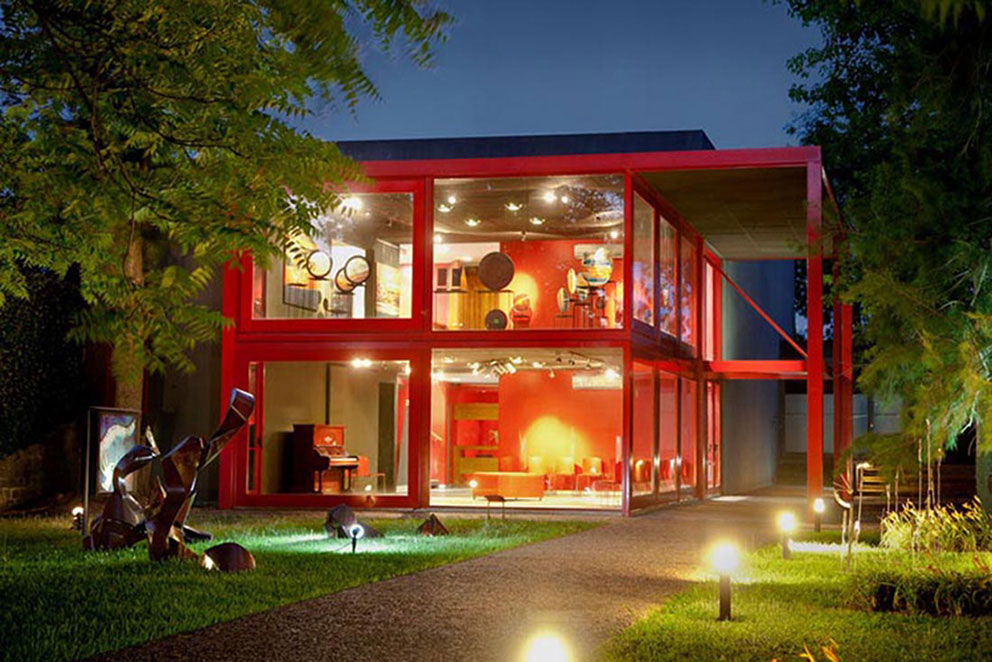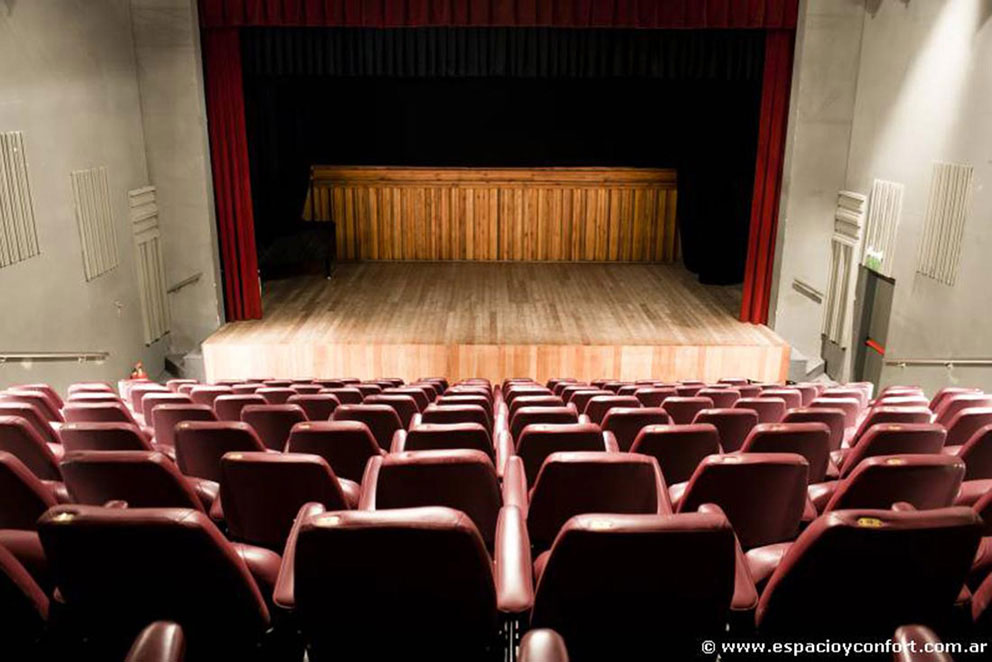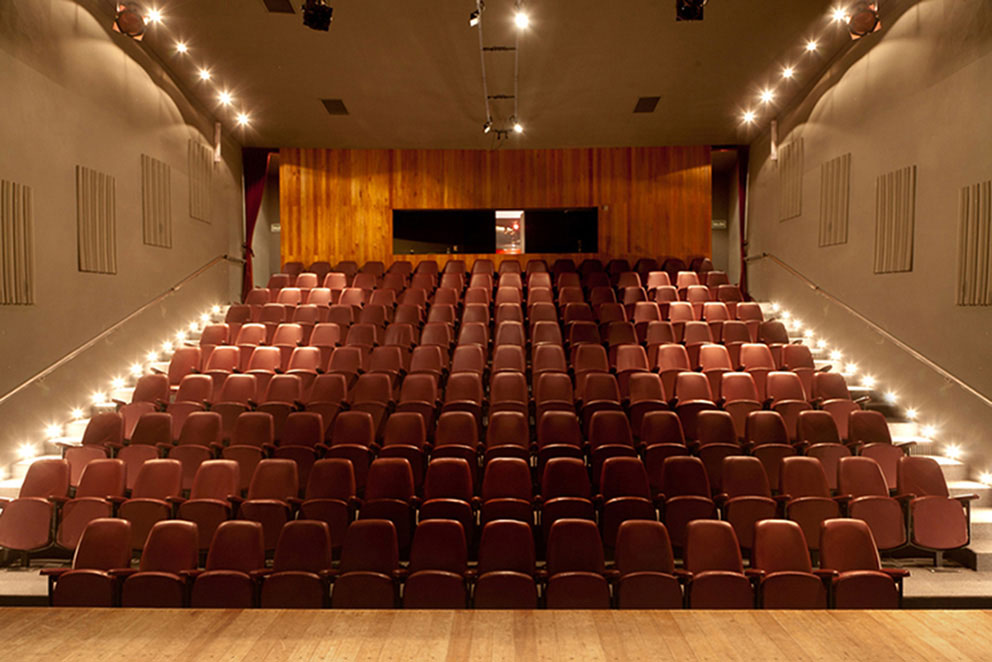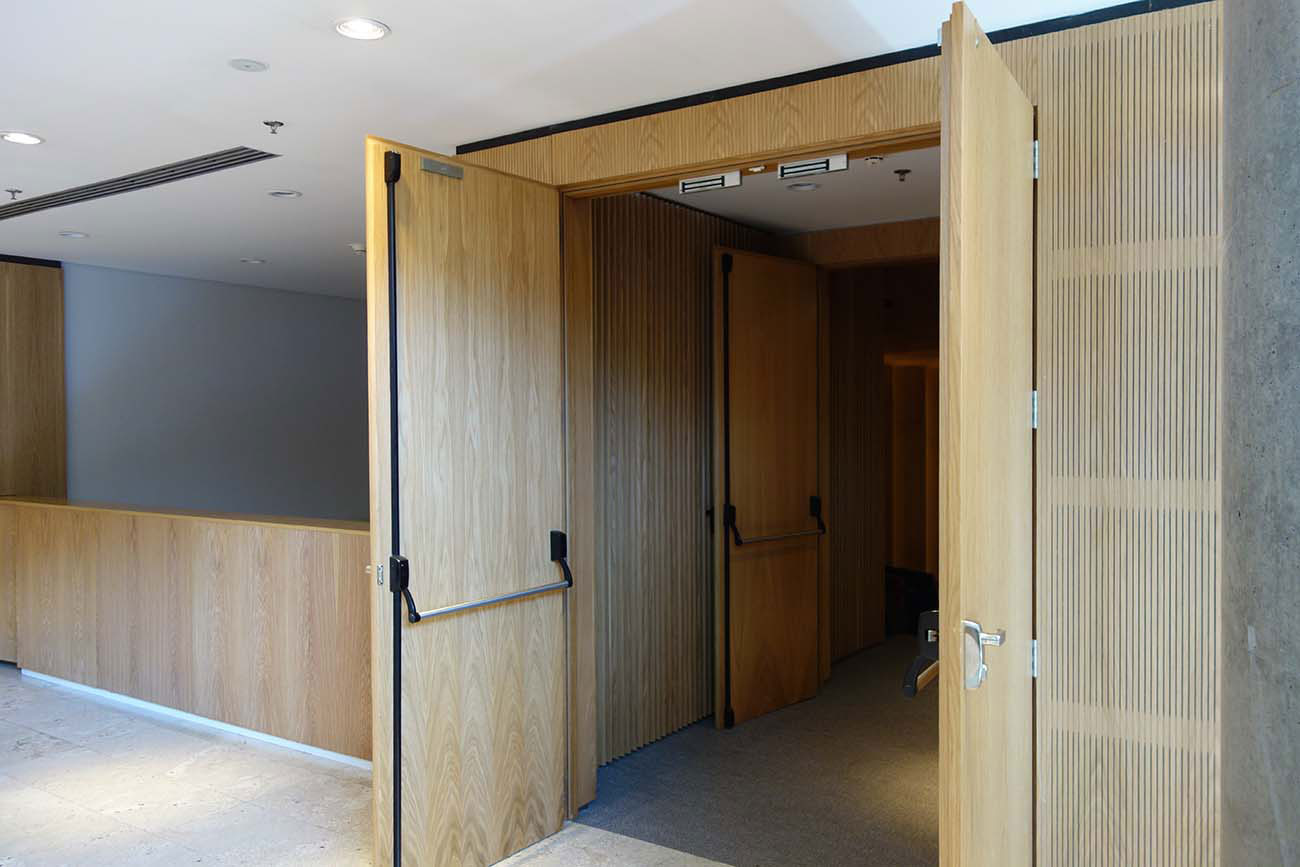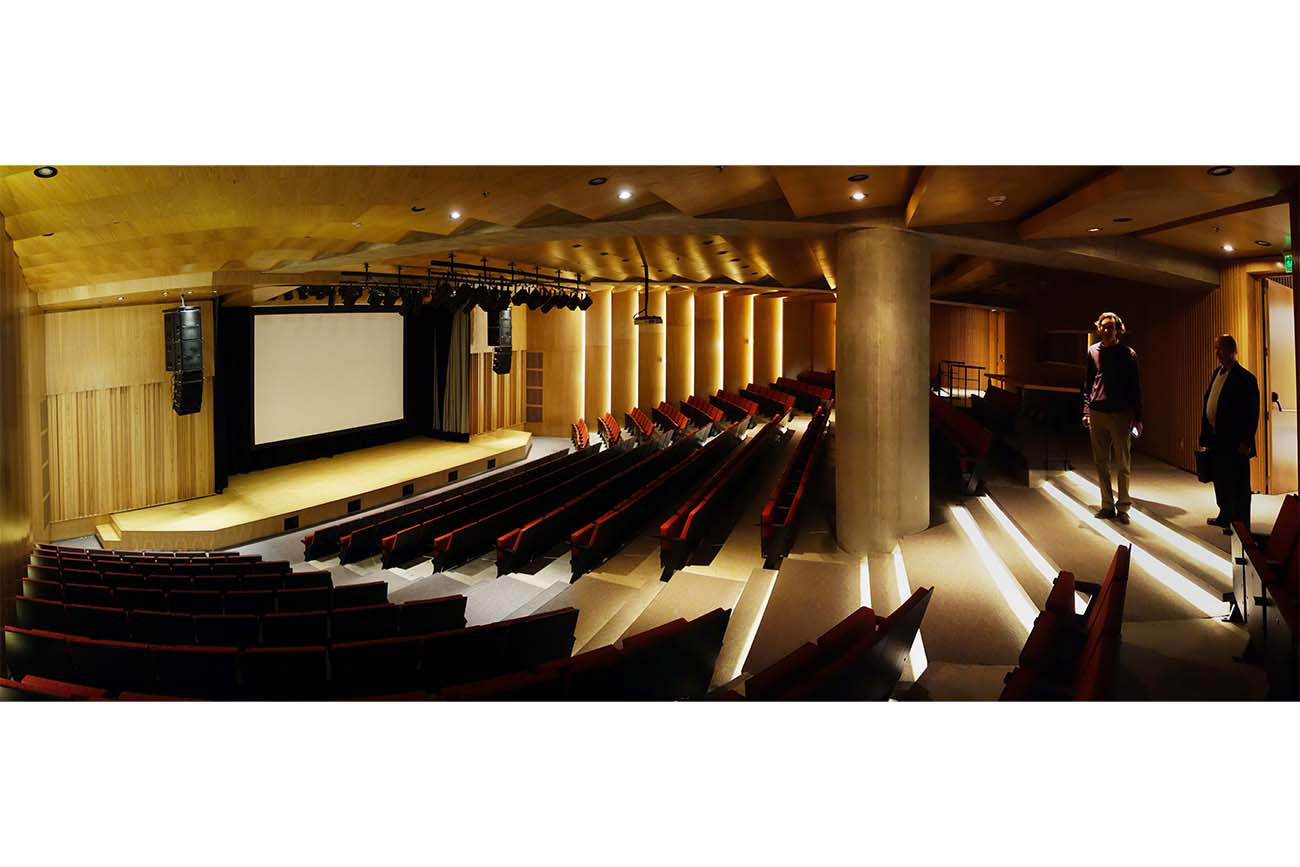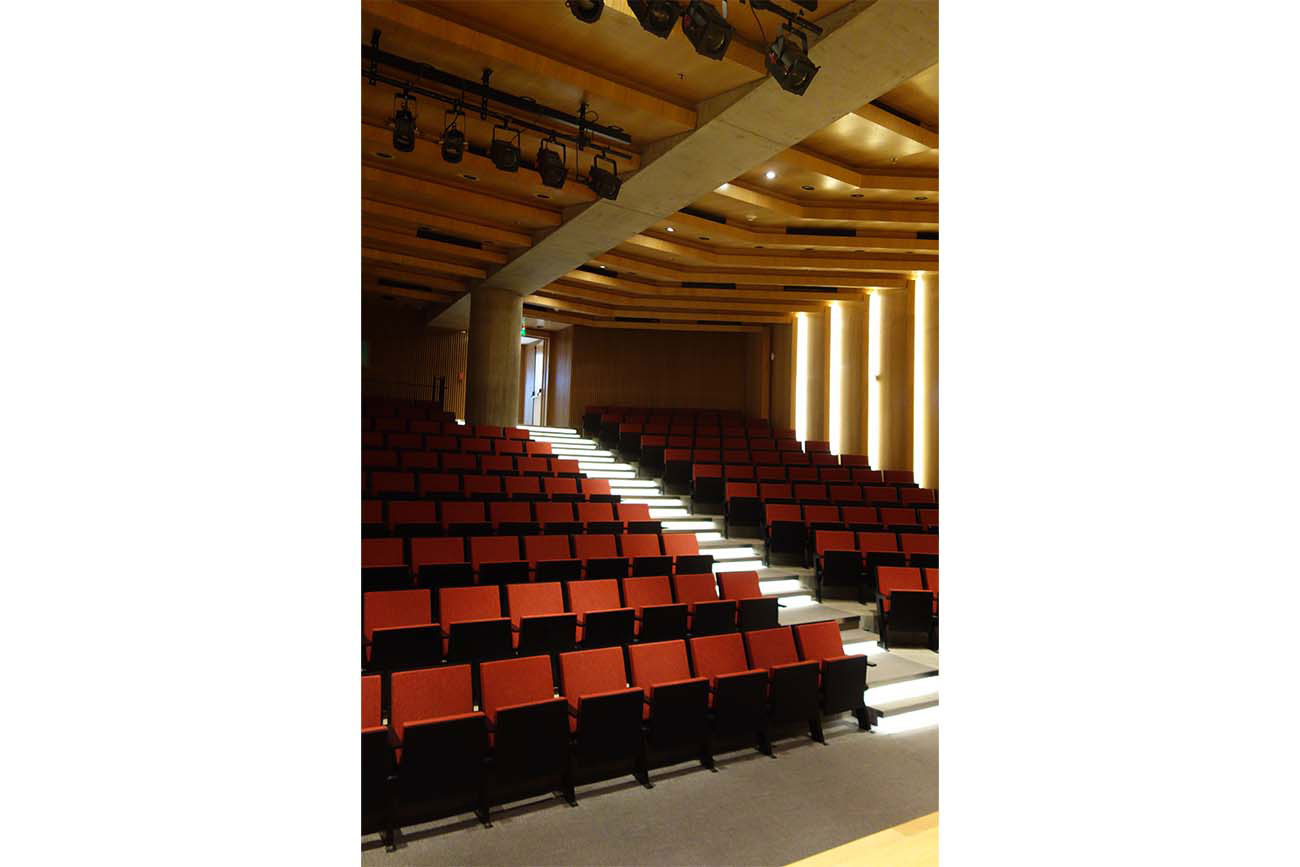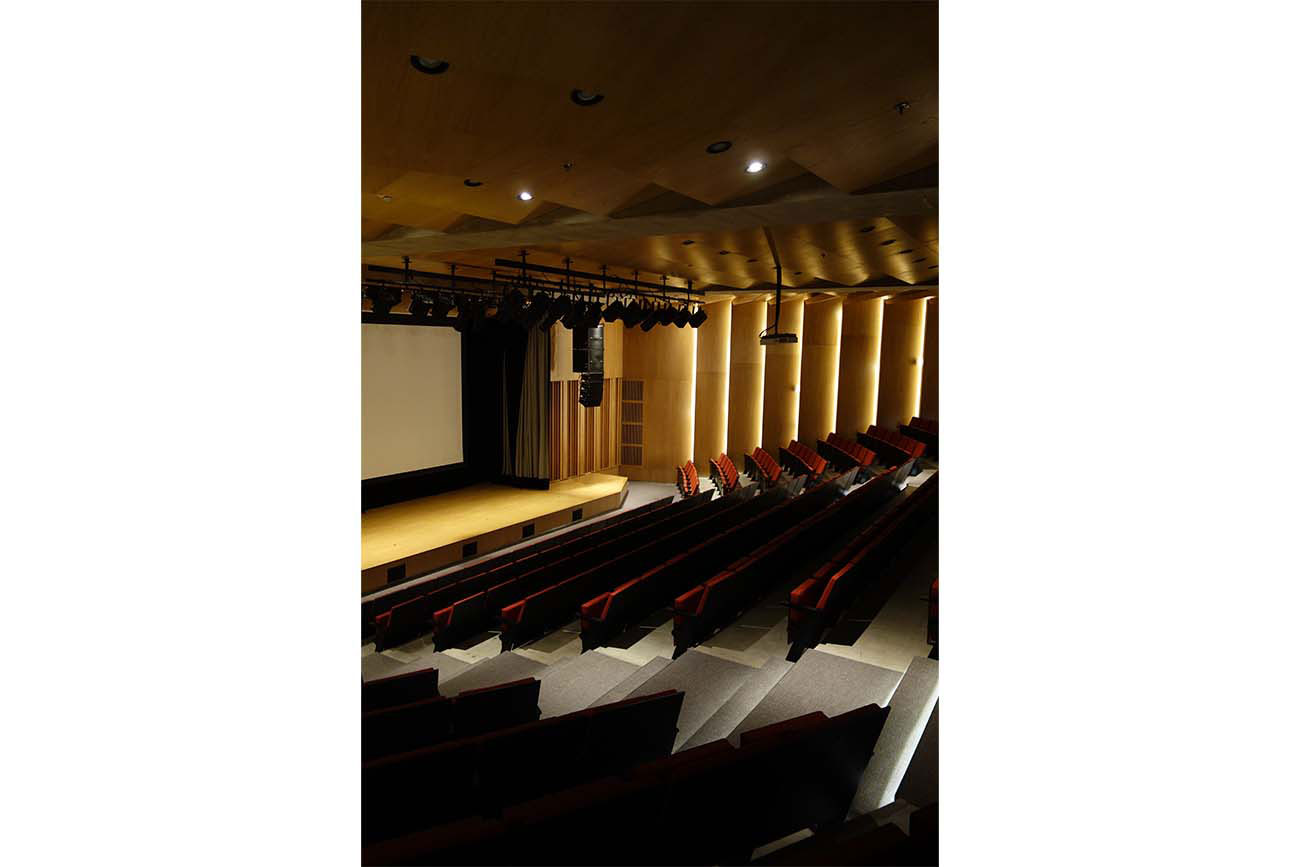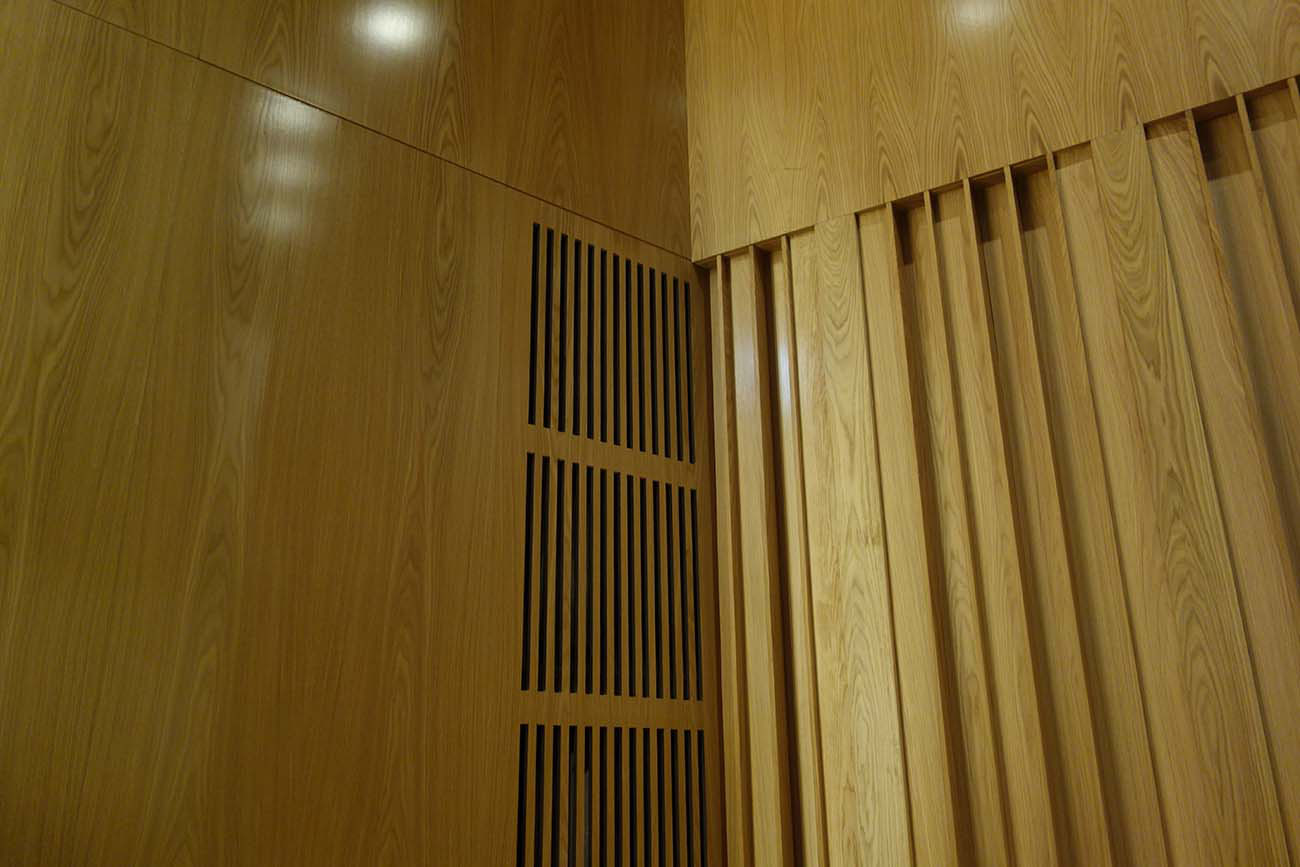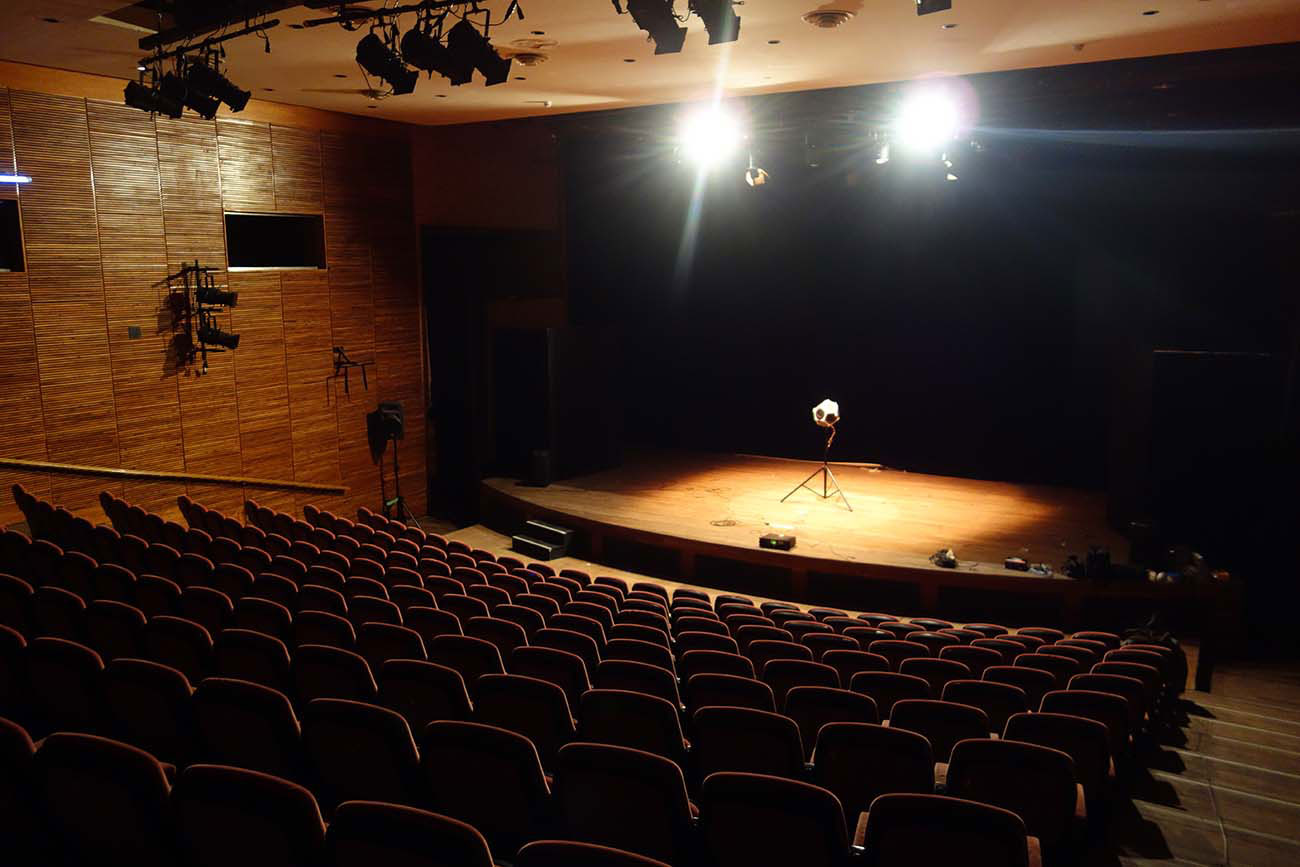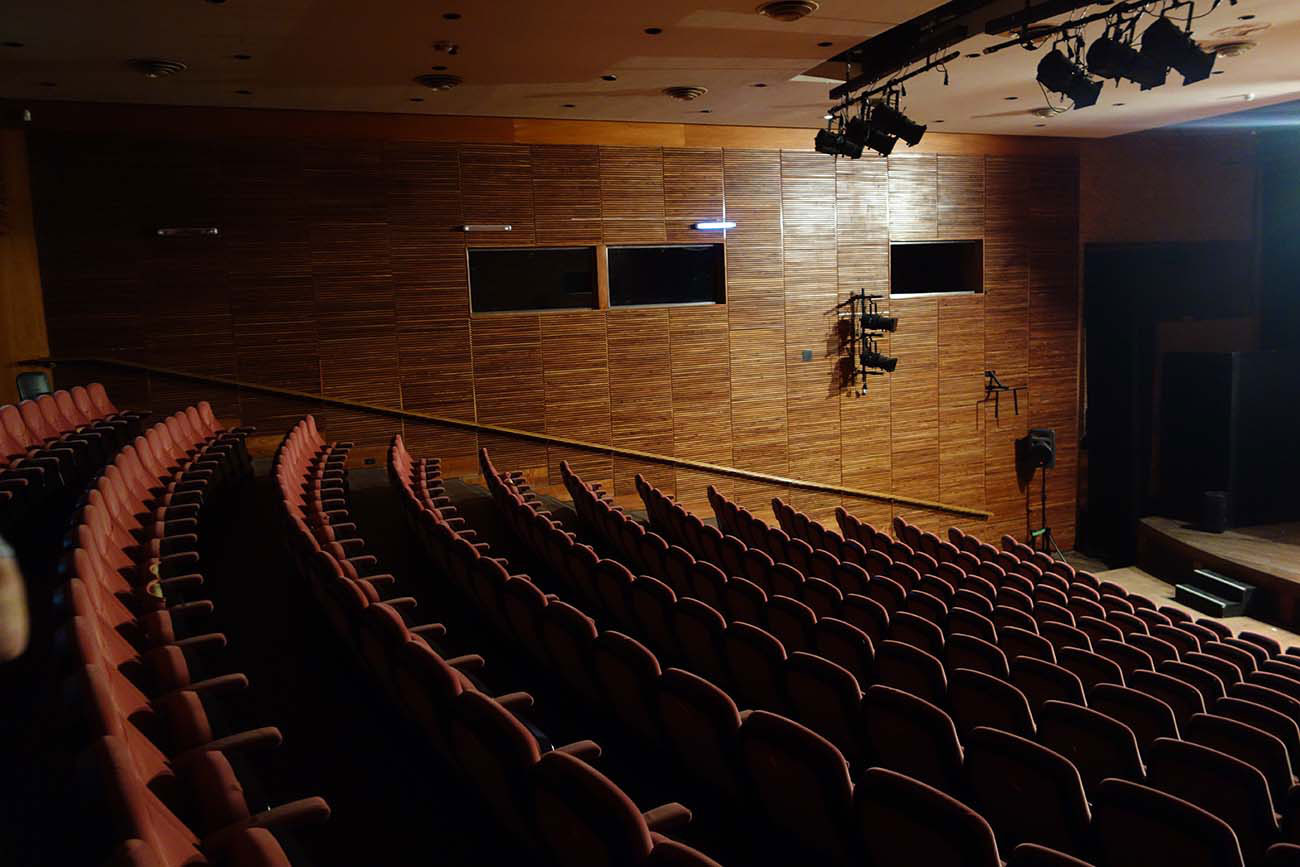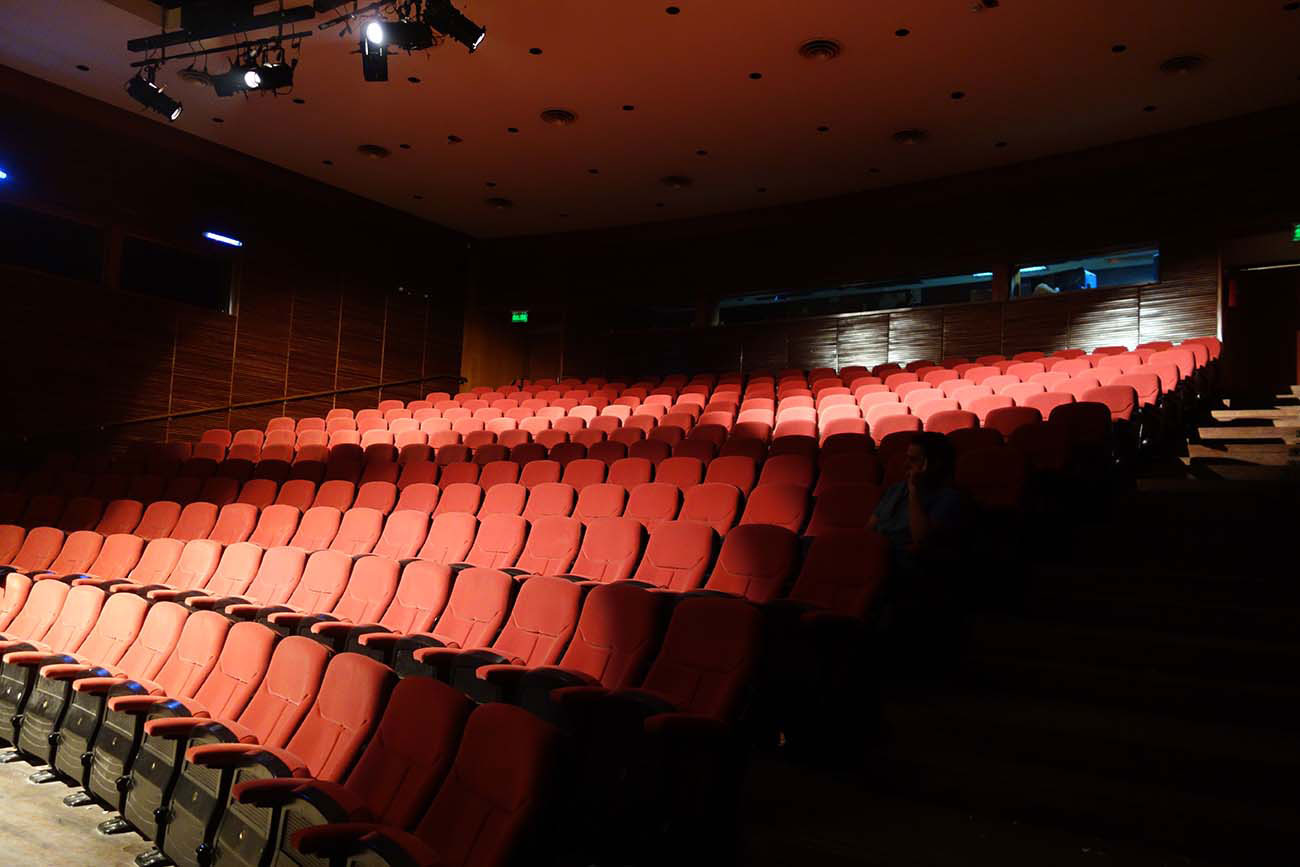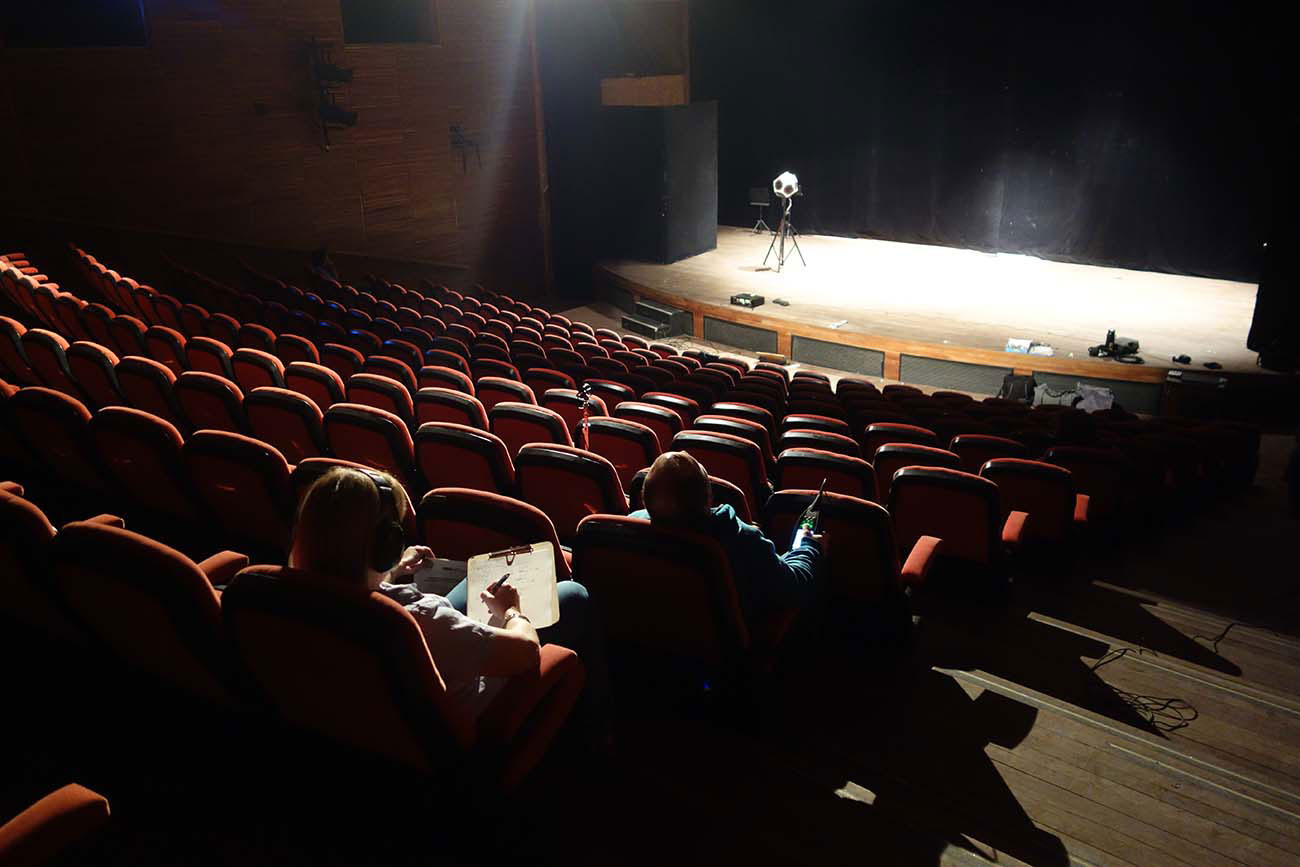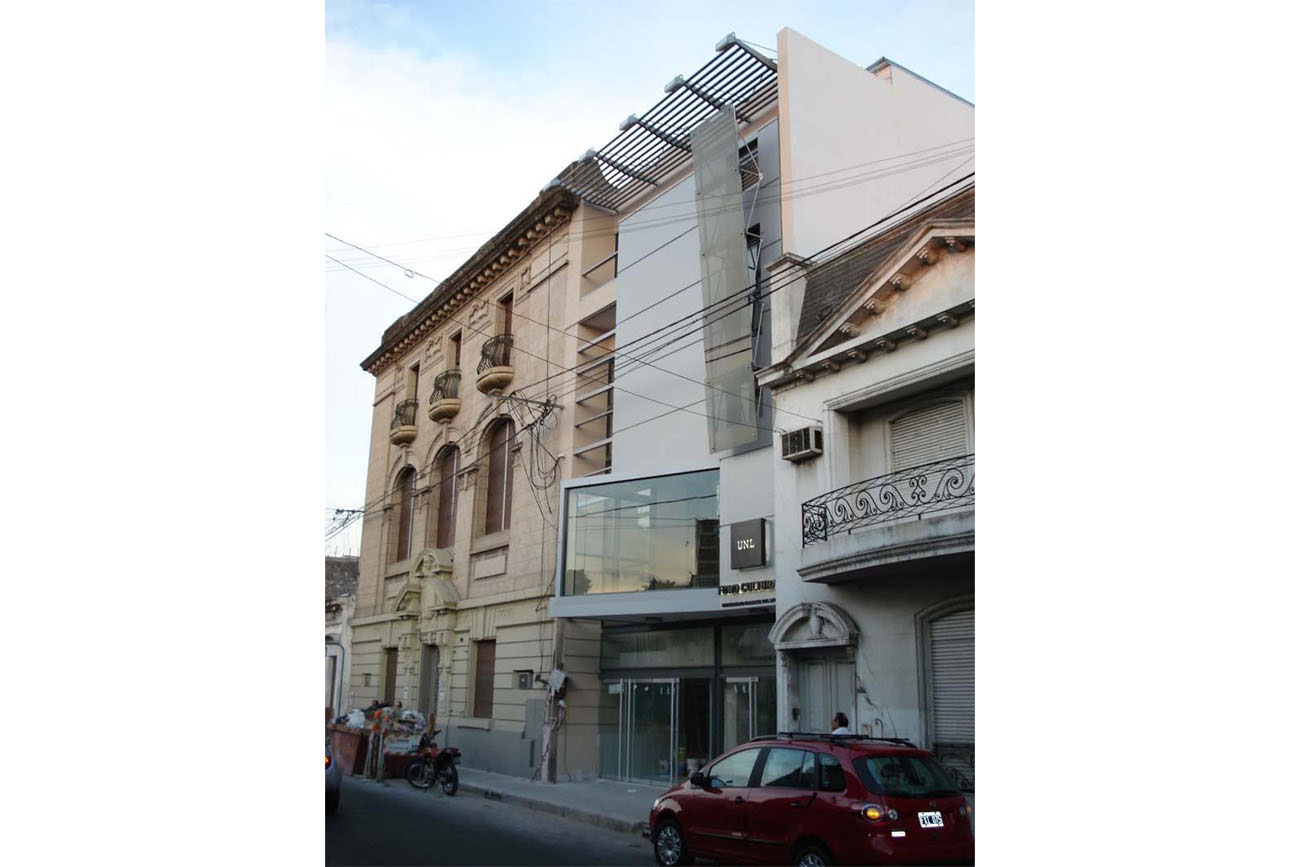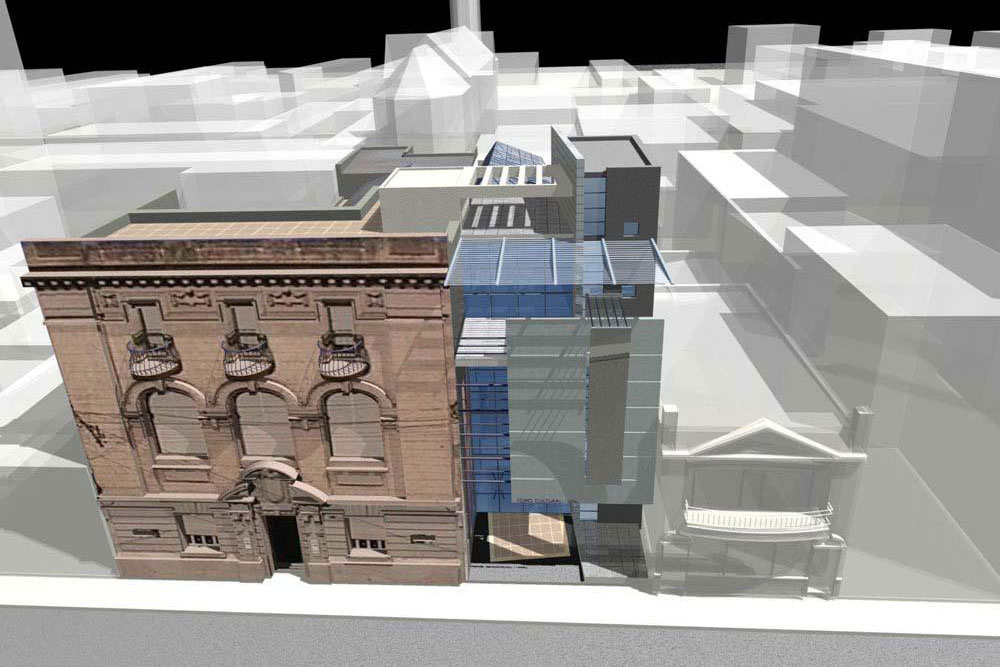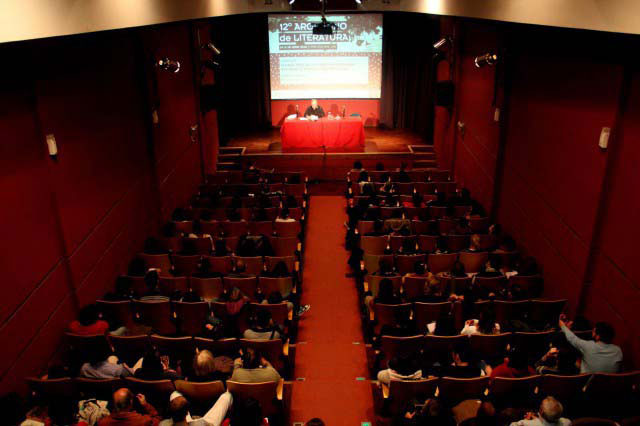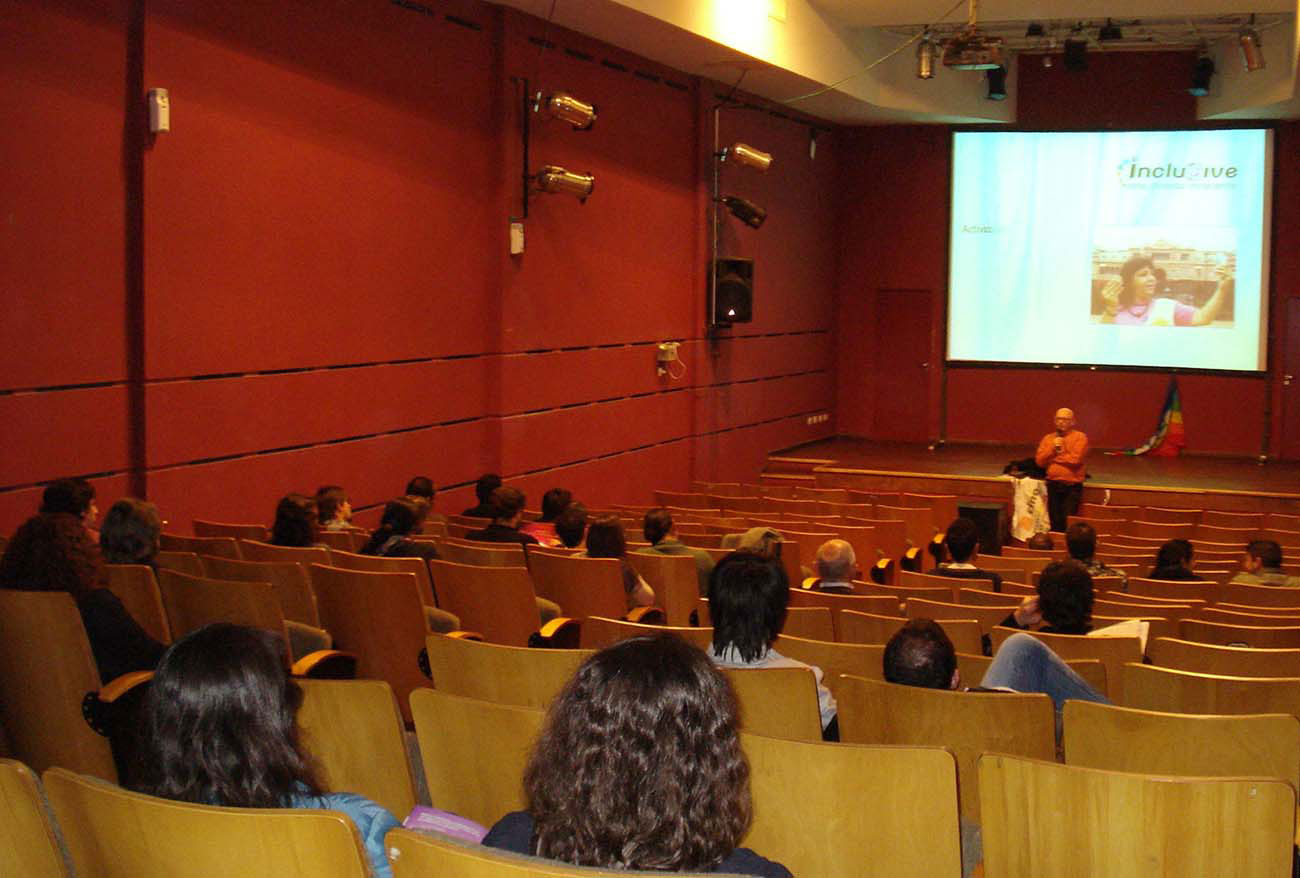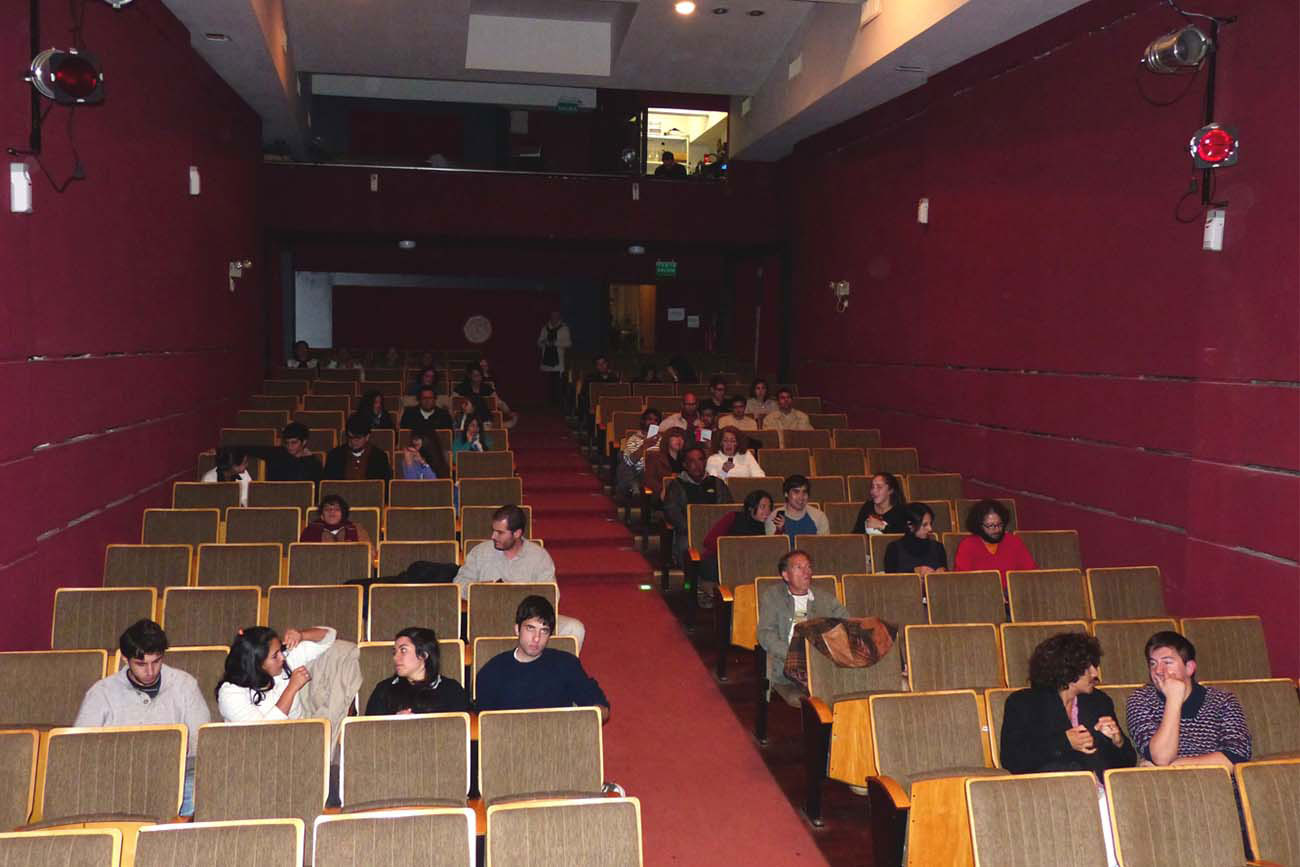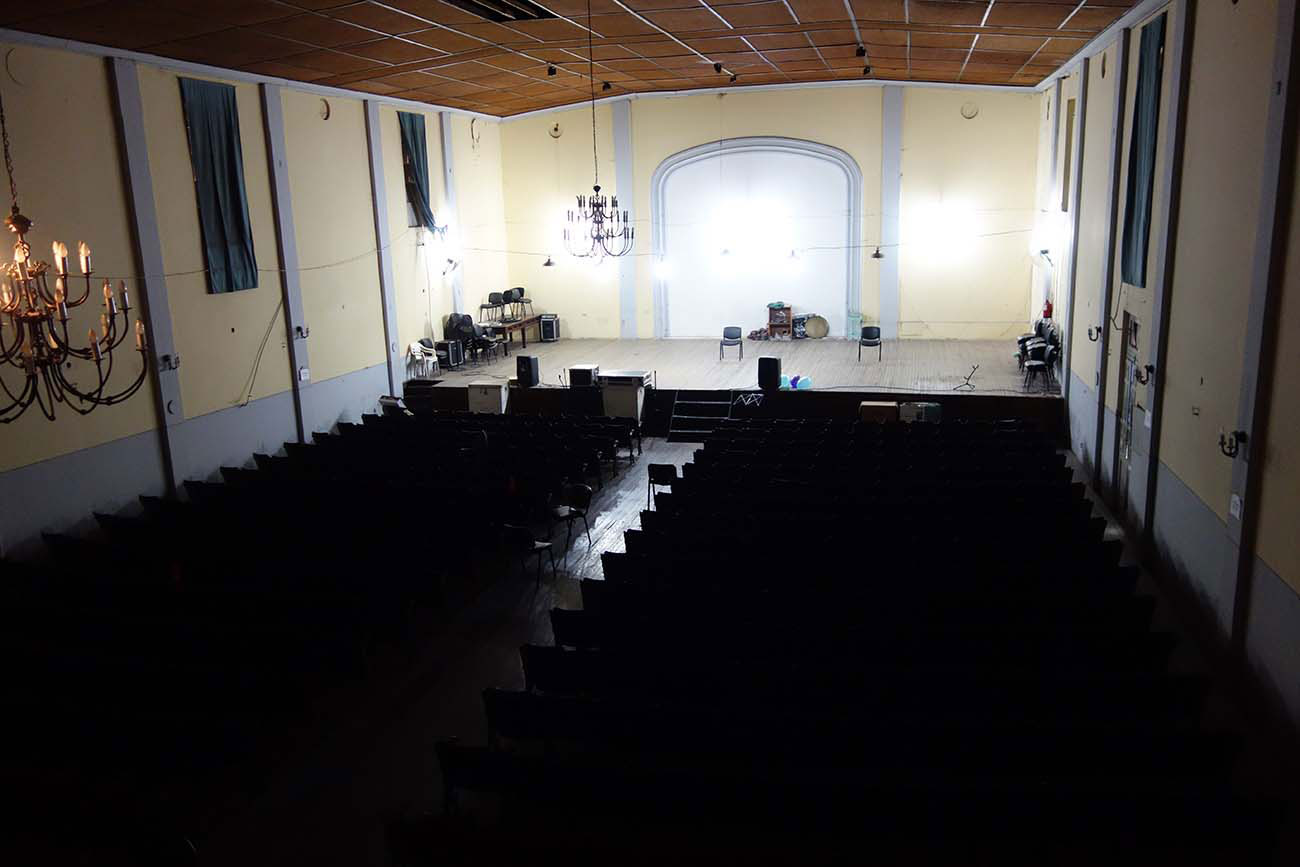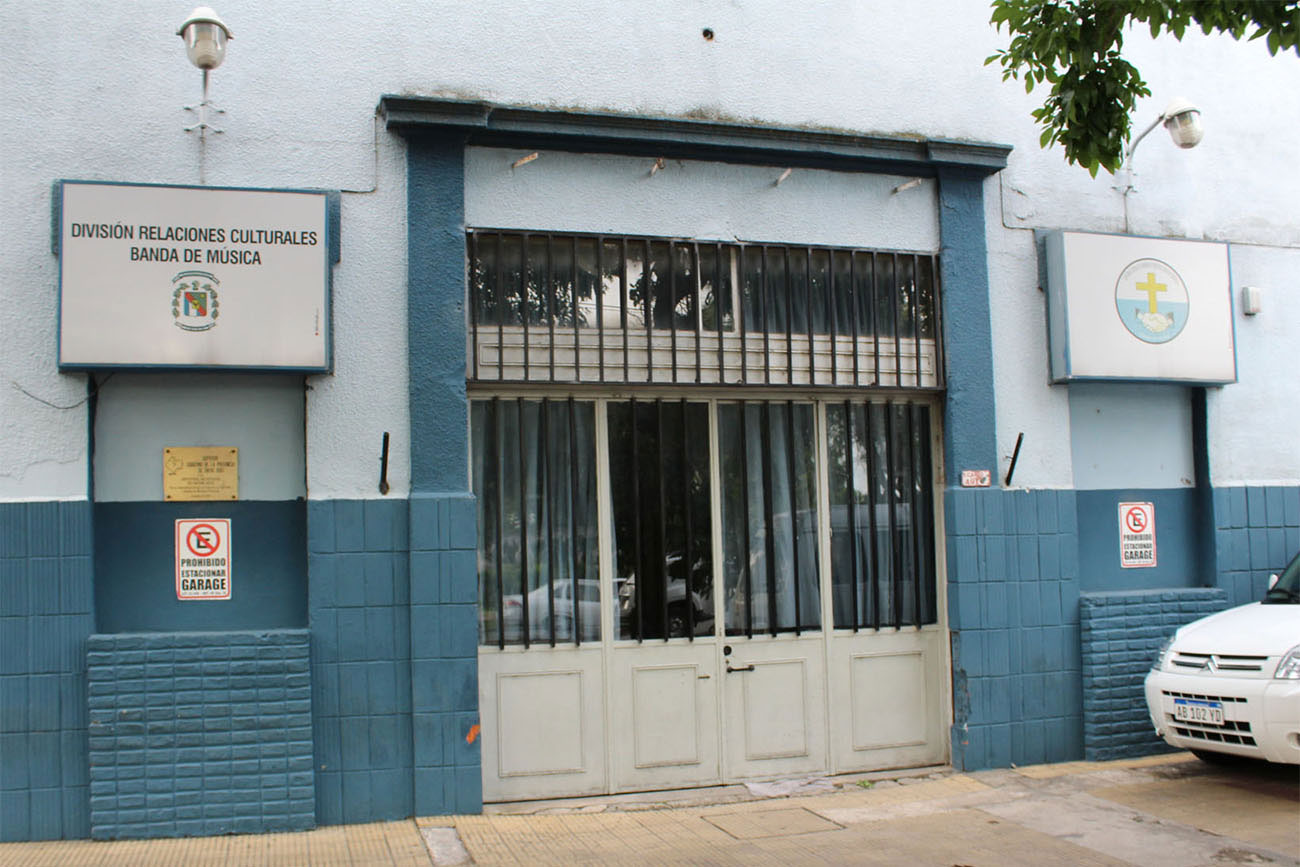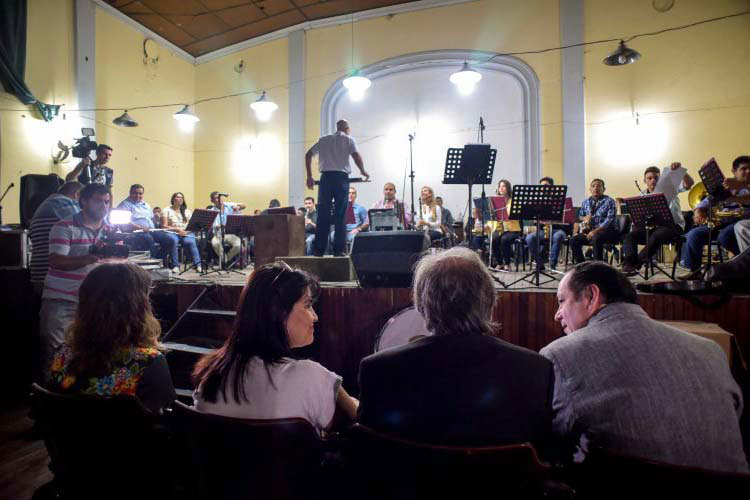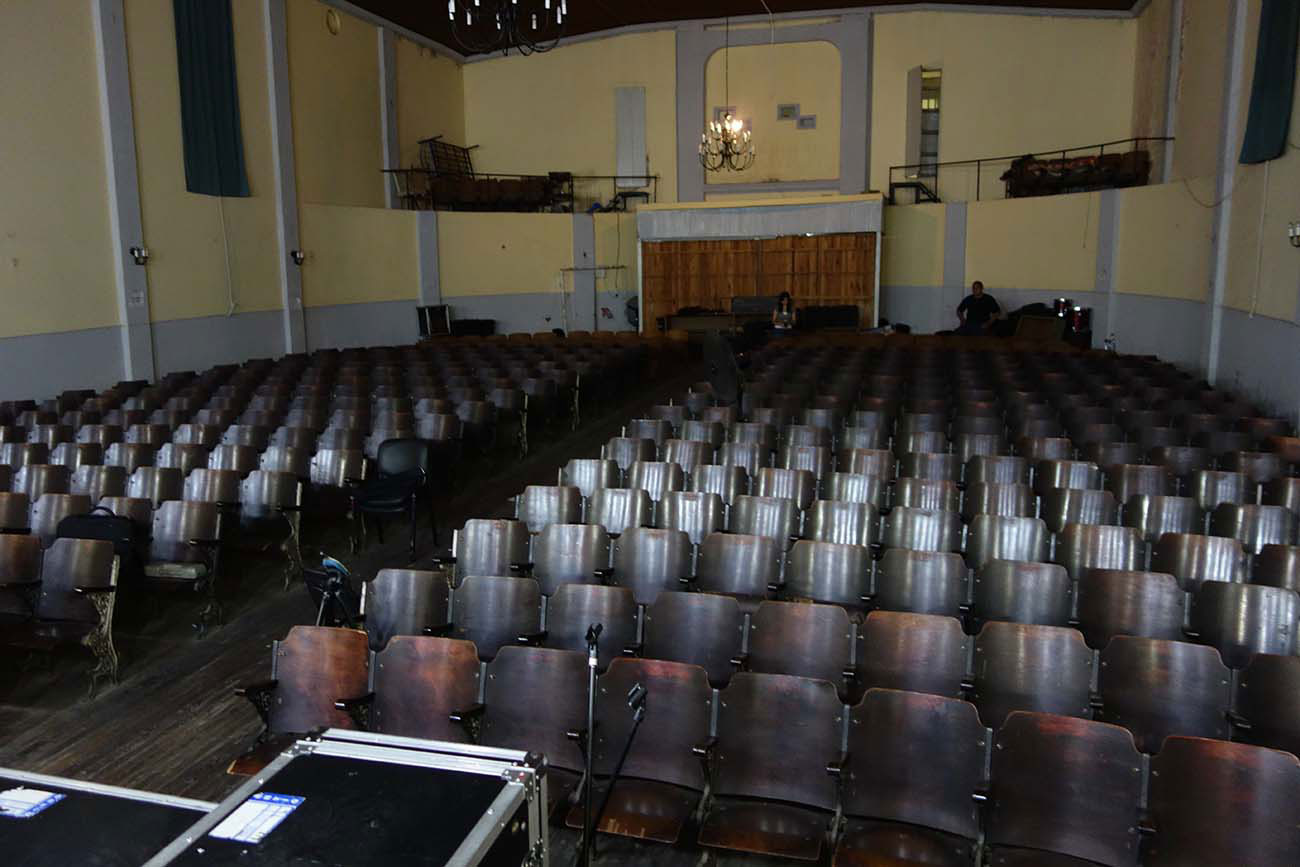- Auditorium "The Blue Whale" (symphonic hall)Auditorium "The Blue Whale" Centro Cultural Kirchner CCKSymphonic Hall - 2000 seats
City of Buenos Aires, Argentina. Opened 2015
Architect: B4FS (Bares-Bares-Bares-Becker-Ferrari-Schnack)
Acoustical design: Gustavo Basso - Rafael Sánchez Quintana
Official WebsiteAboutThe CCK Blue Whale Auditorium is the new headquarters of Argentina’s National Symphony Orchestra. Dedicated to symphonic concerts, chamber music and popular music, it has adjustable acoustic devices –variable height and tilt reflectors, reverberation chambers and expandable absorbent surfaces–, which permit an ideal acoustic configuration for each of its functions. It is equipped with motorized stage platforms and has a Klais organ with 56 stops and 3600 pipes. Since its inauguration, the Blue Whale has become a central pillar of the musical activity of Buenos Aires.
Opinions"I rehearsed there with two orchestras: the Divan and the Staatskapelle; in the rehearsals as well as in the concerts, the hall seemed magnificent… magnificent! It is very pleasant to the eye, and its acoustics do not present the slightest problem: I think that, in the CCK, they were very successful, in the sense that the balance between the duration of the reverberation and the transparency of the sound is really perfect".
Daniel Barenboim / orchestra conductor
Infobae (March 3, 2019)"I really liked the idea of performing my works in this magnificent building. The acoustics are wonderful, some of the best that I've experienced. It is ideal for the three selected pieces".
Krzysztof Penderecki / composer
After the concert dedicated to his symphonic work (September 2, 2016)"A very warm and enveloping sound has been achieved in the CCK auditorium. It's the kind of acoustics that I like the most".
Günter Pichler / former 1 st violin Alban Berg Quartet - orchestra conductor
After a concert with the Orquesta Sinfónica Nacional (April 7, 2017)"The sound in the hall is very beautiful. The acoustics of the stage allow me to listen to hear my violin clearly and, at the same time, to each one of the members of the Orchestra".
Jiyoon Lee / violinist - concertmaster of the Staatskapelle Berlin
After the performance of Brahms Symphonies (July 20, 2018)"A city that has two rooms like these, the Colón Theater and the Blue Whale, does not need anything else".
Egberto Gismonti / brazilian composer, guitarist and pianist During his solo recital (June 17, 2017)Press"Barenboim was dazzled by the acoustics of the Symphony Hall, and will direct the opera Tristan and Isolda (Wagner) at the Colón and the four symphonies of Brahms and The Rite of Spring (Stravinski) at the CCK".
By Gustavo Mozzi / Diario de Cultura (December 20, 2017)"... the illuminist orchestra of Brahms in the crystal clarity of the CCK, whose large auditorium at this point deserves to be considered the main concert hall of the country; for the extraordinary acoustics, for the architectural beauty, for the wide perspective. Finally, Buenos Aires has a concert hall like the best ones in Berlin or Paris".
By Federico Monjeau / Clarín (July 14, 2018)"... on this occasion, one of the most wonderful orchestras on the planet, led by a musician who is determined to reaffirm his status as an Argentine, reached that high level here, in the beloved Blue Whale, a room of great architectural beauty and perfect acoustics".
By Pablo Kohan / La Nación (July 15, 2018)"For the Symphony Hall of the CCK, the performance of the Staatskapelle Berlin is a sort of re-foundation, and until now it had not been possible to notice its wonderful acoustic behavior".
By Pablo Gianera / La Nación (July 17, 2018)"Final paragraph for the heroine of the first three nights: the acoustics. I definitely say that the CCK Symphony Hall is now the auditorium for concerts in Buenos Aires".
By Donato Decina / Críticos Musicales de la Argentina (July 20, 2018)"The Symphony Hall of the CCK became undoubtedly Buenos Aires' most suitable hall for the orchestral repertoire. The disposition of the hall allows the audience to assess aspects of the composition that go unnoticed in an Italian theatre".
By Sandra de la Fuente / Clarín (July 21, 2018)"The symphonies of Brahms and the Debussy-Stravinski alliance were magical. And the Blue Whale, the great auditorium of Buenos Aires, provided not only its perfect acoustics, but an architecture that allows to see everything that happens on the stage".
By Pablo Kohan / La Nación (July 22, 2018) - Teatro Colón de Buenos Aires (Opera house) Teatro Colón de Buenos AiresOpera House - 2360 seats
City of Buenos Aires, Argentina. Opened 1908 / reopened 2010
Architects: Tamburini - Meano - Dormal / Sonia Terreno (restoration 2006-2010)
Acoustical consultants (restoration 2006-2010): Gustavo Basso - Rafael Sánchez Quintana
Official WebsiteAboutThe Teatro Colón de Buenos Aires, well known for its outstanding acoustic quality, was restored between 2006 and 2010. During the execution of the works, a strict control protocol followed. It included more than 10 complete acoustic measurements before the removal of seats, curtains and carpets, and many others when reinstalling them after their repair. This methodology allowed the identification and eventual correction of any possible deviation of the original acoustic behavior. The results were as expected, as evidenced by the comparison between the values taken before and after the restoration works.
Its acoustics and the scienceOne of the largest and deepest works about the acoustical quality of opera houses was carried out by Takashuki Hidaka and Leo Beranek and published in the year 2000. In that paper, they collated the opinions of many musicians that had performed in the most important halls in the world, about the acoustical quality of 23 well-known opera theatres. The Teatro Colón was placed in the highest position and was rated significantly higher than its closest competitor.
T. Hidaka, L. Beranek. “Objective and subjective evaluations of twenty-three opera houses in Europe, Japan, and the Americas,” J. Acoust. Soc. Am. 107 (1), 368-383 (2000).
In another paper, published in November 2003, Leo Beranek repeats the previous methodology and classifies the auditoriums for symphonic music according to their acoustical quality. Here the Teatro Colón occupied one of the first three places, along with two rooms built specifically for that purpose: the Grosser Musikvereinssaal in Vienna and the Symphony Hall in Boston.
L. Beranek. “Subjective Rank-orderings and Acoustical Measurements for Fifty-Eight Concert Halls,” Acta Acustica, 89, 494-508 (2003).Opinions"This theatre has a great drawback: its acoustics and sound are simply perfect. Do you know what that means for an opera singer? Any mistake, no matter how small, will be noticed...".
Luciano Pavarott / opera singer
(1991)"The theater has been beautifully restored and its acoustics are undoubtedly a miracle... the acoustics of the Teatro Colón are exactly as before the restoration.".
Daniel Barenboim / orchestra conductor
After the concert with the West-Eastern Divan Orchestra (August, 2010)"The most fascinating theater in the world, especially for its ideal acoustics, is the Teatro Colón in Buenos Aires ... its acoustics are a dream, you want to take them with you.".
Jonas Kaufmann / opera singer
(October, 2017)PressAfter the reopening, on May 24, 2010, the acoustic preservation of the Teatro Colón occupied the covers of the three main newspapers of Argentina.
"The acoustics, the great treasure of the Colón, remain intact. ".
By Pablo Gianera / La Nación (June 25, 2010)"The intact acoustics of a unique hall.".
By Federico Monjeau / Clarín (June 25, 2010)"There was a lot to applaud: the hall itself, its extraordinary acoustics and its brightness, which very few remembered.".
By Diego Fischerman / Página 12 (June 25, 2010) - Usina del Arte Auditorium (symphonic hall)Usina del ArteSymphonic Hall - 1200 seats
City of Buenos Aires, Argentina. Opened 2011
Architects: Álvaro Arrese
Acoustical design: Gustavo Basso - Rafael Sánchez Quintana
Official WebsiteAboutIn order to transform the old thermoelectric power plant building into a modern auditorium for symphonic music, two complementary objectives had to be achieved: isolating the central nave from outside noise coming from a very close highway, and building an adequate acoustic field inside. A reverberation time of 1.9 s at mid-range frequencies was chosen and, to obtain to obtain a sense of sound envelopment, the amount of lateral energy reflected on the interior surfaces was maximized. Both the general geometry - with a ziggurat behind the stage and two lines of lateral runways - and the interior materials were arranged following that criterion. Finally, the room has a large acoustic reflector over the stage, whose position can be adjusted according to the the characteristics of the musical group performing, be it a large orchestra, a chamber orchestra or a soloist recital.
Opinions"We had a little acoustic rehearsal. As soon as I got on stage, I saw this space, the materials, the height of the ceiling, the size of the room, for me it is perfect.".
Zubin Mehta / orchestra conductor
After a rehearsal with the Maggio Musicale Fiorentino Orchestra (August 17, 2012)Press"In Buenos Aires music is sounding better and better ... Not only do we have the prestigious Teatro Colón now, but also the symphonic and chamber rooms of the Usina del Arte.".
By Berto González Montaner / Clarín Arquitectura (August 8, 2013)"Last year, I was with Maggio Musicale Fiorentino Orchestra at the Usina del Arte. Its acoustics are only comparable with those at Teatro Colón.".
By Zubin Mehta / La Nación (August 25, 2013)"The two rooms at the Usina have privileged acoustics.".
By Gustavo Mozzi / Clarín - Revista Ñ (April 7, 2015)"The warm acoustics of the main room of the Usina gave us the chance to hear every detail of that marvellous Bartok’s concert.".
By Pablo Bardin / Por Siempre Coloneros (March 9, 2018) - Teatro del Bicentenario of San Juan (Opera house) Teatro del Bicentenario of San JuanOpera house - 1129 seats
City of San Juan, Province of San Juan, Argentina. Opened 2016
Architects:Pasinato - Bianchi Bolzan / López - Velasco
Acoustical design: Tony Luaces (contest) / Gustavo Basso - Rafael Sánchez Quintana
Official WebsiteAboutThe acoustic design of the Teatro del Bicentenario aimed to achieve an enveloping acoustic field and a great sound presence in every seat. The particular geometry of the room, with a wavy horseshoe plan, the height of the balconies, the shape of the proscenium, and the materials used were arranged to this end. The hall has a large acoustic reflector over the pit of the orchestra, whose position can be adjusted according to the characteristics of the spectacle to be represented: opera, ballet, symphonic concert, chamber music recital or popular music recital. The pit has a special design, which allows the sound balance between the orchestra and the singers in a wide variety of musical styles, ranging from an early opera by Monteverdi to the latest operas by Wagner.
Opinions"Coming to this beautiful theater, with such good acoustics, having the audience so close and being able to play with more intimacy, is like a gift from the gods.".
Joaquín Sabina / singer
(November 2, 2017)Press"The Teatro del Bicentenario is architecturally impressive; its acoustics are among the best in the world.".
El Suplemento (April 27, 2017)"The Teatro del Bicentenario has become, due to its modern infrastructure and acoustic quality, one of the most important theaters in the country".
Los Andes (March 7, 2018)"The musicians of the Amsterdam’s Concertgebouw Chamber Orchestra were amazed by the acoustics and majesty of the Teatro del Bicentenario.".
Diario San Juan (August 21, 2018) - Teatro Argentino of La Plata (Opera House)Teatro Argentino of La Plata Opera House - 2200 seats
La Plata, Province of Buenos Aires, Argentina. Opened 1999
Architects: Bares - García - Germani - Rubio - Sbarra - Ucar
Acoustical consultants (renovation, work in progress): Gustavo Basso - Rafael Sánchez Quintana
Official Website - Teatro Municipal Coliseo Podestá (Drama and opera theatre)
Teatro Municipal Coliseo PodestáDrama and opera theatre - 1900 seats
La Plata, Province of Buenos Aires, Argentina. Opened 1886 / reopened 1986
Architect (renovation 1986): Alberto Leonforte
Acoustical consultant (renovation 1986): Gustavo Basso
Official Website - Teatro 25 de Mayo “Le Petit Colón” (Drama and opera theatre)Teatro 25 de Mayo “Le Petit Colón”Drama and opera theatre - 1500 seats
City of Buenos Aires, Argentina. Opened 1929 / reopened 2006
Architects (renovation 2006): Álvaro Arrese - Sergio Richonier
Acoustical design (renovation 2006): Gustavo Basso - Rafael Sánchez Quintana
Official Website - Teatro Coliseo of Buenos Aires (Opera and multi-purpose theatre)Teatro Coliseo of Buenos AiresOpera and multi-purpose theatre - 1700 seats
City of Buenos Aires, Argentina. Opened 1905 / reopened 1971
Architect (renovation, work in progress): Sergio Ronzoni
Acoustical design (renovation, work in progress): Gustavo Basso - Rafael Sánchez Quintana
Official Website - Sala Martín Coronado - Teatro Municipal General San Martín (Drama theatre)Sala Martín Coronado - Teatro Municipal General San MartínDrama theatre - 1049 seats
City of Buenos Aires, Argentina. Opened 1960 / reopened 2017
Architects: Mario Roberto Álvarez - Macedonio Ruiz
Acoustical design (restoration 2017): Gustavo Basso - Rafael Sánchez Quintana
Official Website - Teatro Municipal of Bahía Blanca (Opera house)Teatro Municipal of Bahía BlancaOpera house - 1100 seats
Bahía Blanca, Province of Buenos Aires, Argentina. Opened 1913
Architects: Jacques Henri Dunant - Gastón Louis Alcindor Mallet
Acoustical consultant (restoration 2004): Gustavo Basso
Official Website
- Centro del Conocimiento of Posadas (Opera and multi-purpose theatre) Centro del Conocimiento of PosadasOpera and multi-purpose theatre - 546 seats
Posadas, Province of Misiones, Argentina. Opened 2007
Architects: Alejandro Enrique Rodríguez
Acoustical design: Gustavo Basso - Rafael Sánchez Quintana
Official Website - Sala Argentina - Centro Cultural Kirchner CCK (Chamber music hall) Sala Argentina - Centro Cultural Kirchner CCK Chamber music hall - 540 seats
City of Buenos Aires, Argentina. Opened 2015
Architect: B4FS (Bares-Bares-Bares-Becker-Ferrari-Schnack)
Acoustical design: Gustavo Basso - Rafael Sánchez Quintana
Official Website - Sala Casacuberta - Teatro Municipal General San Martín (Drama theatre)Sala Casacuberta - Teatro Municipal General San MartínDrama theatre - 566 seats
City of Buenos Aires, Argentina. Opened 1960 / reopened 2017
Architects: Mario Roberto Álvarez - Macedonio Ruiz
Acoustical design (2017): Gustavo Basso - Rafael Sánchez Quintana
Official Website - Auditorium - Centro Cultural de la Ciencia (Multi-purpose hall) Auditorium - Centro Cultural de la CienciaMulti-purpose hall / National Ministry of Science and Technology - 500 seats
City of Buenos Aires, Argentina. Opened 2015
Architects: Parysow - Hauser - Ziblat
Acoustical design: Gustavo Basso - Rafael Sánchez Quintana
Official Website - Sala Guerrero - Teatro Nacional Cervantes (Multi-purpose hall)Sala Guerrero - Teatro Nacional CervantesDrama theatre - 860 seats
City of Buenos Aires, Argentina. Opened 1921
Architects: Fernando Aranda Arias - Emilio Repetto
Acoustical renovation (work in progress): Gustavo Basso - Rafael Sánchez Quintana
Official Website - Aula magna - Universidad Nacional de Quilmes (Multi-purpose hall)Aula magna - Universidad Nacional de QuilmesMulti-purpose hall - 700 seats
Bernal, Province of Buenos Aires, Argentina. Work in progress
Architect: Mederico Faivre
Acoustical design: Gustavo Basso
Official Website - Salón Auditorio - Senado de la Provincia de Buenos Aires (Multi-purpose hall)Salón Auditorio - Senado de la Provincia de Buenos AiresMulti-purpose hall - 600 seats
La Plata, Province of Buenos Aires, Argentina. Opened 1928 / reopened 2018
Architect: Juan Ochoa
Acoustical design: Gustavo Basso - María Andrea Farina
Official Website - Complejo Cultural Cipolletti (Multi-purpose hall)Complejo Cultural CipollettiMulti-purpose hall - 560 seats
Cipolletti, Province of Rio Negro, Argentina. Opened 2019
Architect: Dirección de Arquitectura - Municipalidad of Cipolletti
Acoustical design: Gustavo Basso
Official Website
- Sala de Cámara - Usina del Arte (Chamber music hall) Sala de Cámara - Usina del ArteChamber music hall - 280 seats
City of Buenos Aires, Argentina. Opened 2013
Architect: Álvaro Arrese
Acoustical design: Gustavo Basso - Rafael Sánchez Quintana
Official Website - Sala de Cámara - Teatro del Bicentenario of San Juan (Chamber music hall)Sala de Cámara - Teatro del Bicentenario of San JuanChamber music hall - 190 seats
City of San Juan, Province of San Juan, Argentina. Opened 2016
Architects: Pasinato - Bianchi Bolzan / López - Velasco
Acoustical design: Gustavo Basso - Rafael Sánchez Quintana
Official Website - Auditorium of the Unión Ferroviaria (Chamber music and multi-purpose hall)Auditorium of the Unión FerroviariaChamber music and multi-purpose hall - 269 seats
City of Buenos Aires, Argentina. Opened 2009
Architect: Pablo Debuchy
Acoustical design: Gustavo Basso - Rafael Sánchez Quintana
Official WebsiteAboutGiven the fan-shaped plan imposed by architectural conditions, a very complex ceiling aimed to distribute the acoustic energy evenly over all the seats. Different angles were calculated for each of the walls of the individual roof spaces.
- Teatro de la Selva - Cruz de Santa Ana - Misiones (Chamber music and multi-purpose hall) Teatro de la Selva - Cruz de Santa AnaChamber music and multi-purpose hall - 120 seats
Santa Ana, Province of Misiones, Argentina. Opened 2011
Architect: Daniel Cella
Acoustical design: Gustavo Basso - Rafael Sánchez Quintana
Official Website - Teatro Italiano of Chacabuco (Chamber music and multi-purpose hall) Teatro Italiano of ChacabucoChamber music and multi-purpose hall - 300 seats
Chacabuco, Province of Buenos Aires, Argentina. Opened 2012
Architect: Hugo Larotonda
Acoustical design: Gustavo Basso - María Andrea Farina
Official Website - Auditorium “Roberto Rollié” (Chamber music and multi-purpose hall)Auditorium “Roberto Rollié” - Facultad de Bellas Artes / Universidad Nacional de La PlataChamber music and multi-purpose hall - 250 seats
La Plata, Province of Buenos Aires, Argentina. Reopened 2016
Architect: Pablo Dagnino
Acoustical design: Gustavo Basso - María Andrea Farina - Luis Federico Jaureguiberry
Official Website - Sala Leopoldo Lugones - Teatro Municipal General San Martín (Cinema) Sala Leopoldo Lugones - Teatro Municipal General San Martín Cinema - 233 seats
City of Buenos Aires, Argentina. Opened 1960 / reopened 2017
Architects: Mario Roberto Álvarez - Macedonio Ruiz
Acoustical design (restoration 2017): Gustavo Basso - Rafael Sánchez Quintana
Official Website - Teatro Lumen Artis (Chamber music and multi-purpose hall)Teatro Lumen Artis Chamber music and multi-purpose hall - 160 seats
City Bell, Province of Buenos Aires, Argentina. Opened 2003
Architects: Manuel Cortés - Sebastián Cortés
Acoustical design: Gustavo Basso
Official Website - Auditorium - New City Hall of Buenos Aires (Multi-purpose hall) Auditorium - New City Hall of Buenos Aires Multi-purpose hall - 230 seats
City of Buenos Aires, Argentina. Opened 2015
Architects: Foster + Partners / Berdichevsky - Cherny - Minond
Acoustical design: Gustavo Basso - Rafael Sánchez Quintana
Official Website - Sala Piazzolla - Teatro Argentino of La Plata (Chamber music hall) Sala Piazzolla - Teatro Argentino of La PlataChamber music hall - 350 seats
La Plata, Province of Buenos Aires, Argentina. Opened 1999 / reopened 2017
Architects: Bares - García - Germani - Rubio - Sbarra - Ucar
Acoustical consultants (restoration 2017): Gustavo Basso - Rafael Sánchez Quintana
Official Website - Sala Juan José Saer - Universidad Nacional del Litoral (Chamber music and multi-purpose hall)Sala Juan José Saer - Universidad Nacional del LitoralChamber music and multi-purpose hall - 150 seats
Santa Fe, Province of Santa Fe, Argentina. Opened 2007
Architect: Osvaldo Mansur
Acoustical design: Gustavo Basso
Official Website - Sala Cultural Sáenz Peña - Paraná (Symphonic and recital hall)Sala Cultural Sáenz Peña - ParanáSymphonic and recital hall - 400 seats
Paraná, Province of Entre Ríos, Argentina. Work in progress
Architect: Gladys Salomon
Acoustical design: Gustavo Basso - María Andrea Farina
Official Website
